social intelligence
description: Capacity to know oneself and to know others
158 results
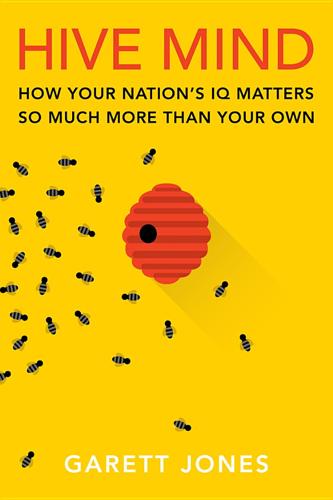
Hive Mind: How Your Nation’s IQ Matters So Much More Than Your Own
by
Garett Jones
Published 15 Feb 2015
The relationship often isn’t as strong as the relationship between, say, a person’s vocabulary test scores and her score on the Raven’s matrices, so there are many exceptions, but the results are clear: IQ scores predict practical social skills. The link between social or emotional intelligence and IQ has been tested for decades. Back in the 1920s, one early social intelligence test, the George Washington Social Intelligence Test, actually found a moderate relationship with overall IQ. That social intelligence test asked about “judgment in social situations, memory for names and faces, and recognition of the mental states behind words.”26 Another social intelligence test had people look at “film clips of brief scenes” showing people’s “emotional states, and their task was to identify that state.” Such tests have a weak to moderate relationship with a person’s IQ.27 Tests of emotional intelligence are better developed, and indeed there’s now a widely used test for “EQ,” the MSCEIT, the Mayer-Salovey-Caruso Emotional Intelligence Test.
…
So the rumors of IQ’s exploding importance have turned out to be wrong so far: it’s a reasonable guess that they’ll be wrong in the future as well. The paradox of IQ is likely to be with us well into the twenty-first century. Coda: Intelligence Is a Key Ingredient in Emotional Intelligence But isn’t there more than just one kind of intelligence? Aren’t emotional intelligence and social intelligence just as important as narrow IQ-type intelligence? The ability to read people, the ability to get along well with others—those skills are important, and IQ tests can’t be measuring those skills, can they? Social skills seem so different from the abstract pattern-finding of some IQ tests—but then again, being able to remember relevant facts about people you met a few weeks ago or the ability to interpret an ambiguous social situation might involve some of the same memory and puzzle-solving skills that IQ tests try to measure.
…
That higher-IQ players tend to follow the third piece of advice, “Be perceptive,” is almost obvious: higher-IQ individuals are just more likely to get it, to grok the key ideas, as sci-fi writer Robert Heinlein used to say. Not always, not perfectly, but as we saw in the coda to Chapter 1, on average individuals with high IQ are better at grokking the rules of the social game, they’re more socially intelligent. And as we saw in the last chapter, IQ also tends to predict patient behavior. Those who see the patterns in the Raven’s Progressive Matrices also see the future. That means that in a repeated prisoner’s dilemma, they’ll tend to focus on the rewards of long-term cooperation, not the short-term thrills of punishment or exploitation.

The Globotics Upheaval: Globalisation, Robotics and the Future of Work
by
Richard Baldwin
Published 10 Jan 2019
The Oxford scholars behind the most influential study of AI automation—Carl Frey and Michael Osborne—argue that the hardest tasks for white-collar robots involve creative intelligence and, as discussed, social intelligence. Creative intelligence means being able to devise new, good ideas and solutions. By social intelligence, Frey and Osborne mean being aware of people’s reactions to events and being able to react appropriately. Typical workplace tasks that draw on social intelligence are negotiation (getting people to cooperate and reconcile differences) and persuasion (getting people to agree on ideas, ways of doing things, etc). It is also important in tasks like assisting and caring for people, providing emotional support, and the like.
…
Usually that also means getting people to work with each other—all things that involve social intelligence, which AI is bad at, and establishing personal rapport, trust, and motivation, which RI is bad at. Many occupations related to professional and scientific specializations also come out quite sheltered. These are jobs such as compliance officers, financial examiners, management consultants, event planners, landscape architects, and civil engineers. Again, these are rich in tasks that involve high levels of perception and manipulation, creative intelligence, or social intelligence. Many types of engineers fall into these categories since engineers are typically trying to make things work.
…
These jobs will make our communities more local, and probably more urban. By studying the things that AI-trained robots like Amelia can already do well, we can predict that the jobs that survive competition from AI and the new jobs that will be created are those that stress humanity’s great advantages. Machines have not been very successful at acquiring social intelligence, emotional intelligence, creativity, innovativeness, or the ability to deal with unknown situations. Experts estimate that it will take something like fifty years for AI to attain top-level human performance in social skills that are useful in the workplace, like social and emotional reasoning, coordination with many people, acting in emotionally appropriate ways, and social and emotional sensing.

The Myth of Artificial Intelligence: Why Computers Can't Think the Way We Do
by
Erik J. Larson
Published 5 Apr 2021
At some level, Turing no doubt understood this (recall the discussion of intuition in his 1938 thesis on ordinal numbers), but it seems not to have had an appreciable effect on his later ideas about the nature of intelligence and the possibility of intelligent machines. However brilliantly, he was formulating a simplification of real intelligence. He was getting rid of the concept that had so transfixed him earlier, of intuition. Of guessing. ON SOCIAL INTELLIGENCE (AN IMPORTANT ASIDE) Social intelligence is also conspicuously left out of Turing’s puzzle-solving view of intelligence. This is of utmost importance for understanding the future development of AI. Turing, for instance, disliked viewing thinking or intelligence as something social or situational.8 Yet the Bletchley success was in fact part of a vast system that extended far outside its cloistered walls.
…
But a closer look at the Bletchley code-cracking success immediately reveals a dangerous simplification in the philosophical ideas about man and machine. Bletchley was an intelligent system—a coordination of military efforts (including spying and espionage, as well as capture of enemy vessels), social intelligence between the military and the various scientists and engineers at Bletchley, and (as with all of life) sometimes sheer dumb luck. In truth, as a practical reality, the German-modified Enigma was unbreakable by purely mechanical means. The Germans knew this based on mathematical arguments about the difficulty of mechanical deciphering.
…
Part of Bletchley’s success was, ironically, the stubborn confidence of Nazi commanders in the impregnability of the Enigma ciphers—thus they fail at crucial times to modify or strengthen the machines after discovering certain ciphers had been cracked, blaming covert spying operations rather than scientific defeat. But the fog of war mixes together not just new technologies but new forms of human and social intelligence. War is not chess. Early in the war, for instance, Polish forces had recovered important fragments of Enigma communications that later provided invaluable clues to Bletchley efforts. The Poles had used these fragments (along with others from Russian sources) to develop their own, simpler Bomba as early as 1938.
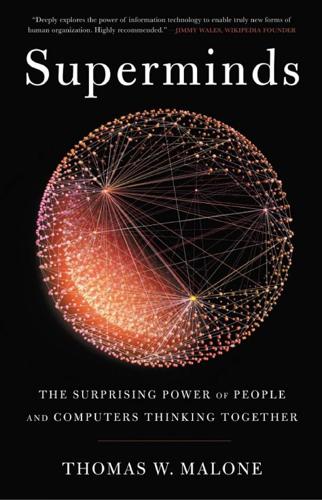
Superminds: The Surprising Power of People and Computers Thinking Together
by
Thomas W. Malone
Published 14 May 2018
This suggests that social perceptiveness must actually be correlated with a much broader range of interpersonal skills that are just as useful online as face-to-face. For instance, the kind of social intelligence that lets you read emotions in people’s faces might also help you guess what other people are feeling based on what they type and help you predict how they will react to various things you might type back. In other words, the social skills and social intelligence that are so important in a face-to-face world may be at least as important in the increasingly online world of our future. COGNITIVE DIVERSITY MATTERS, TOO In another study,13 we looked at diversity of cognitive style—differences in how people habitually think about the world.
…
I think one of the most overlooked human capabilities that machines will not fully replace anytime soon is interpersonal skills. This opinion is partly based on the research I described in chapter 2, where we found that the collective intelligence of groups depended as much on the social intelligence of the group members as on their cognitive intelligence. It’s also consistent with my own personal observation that the people who succeed in life often seem to be the ones with the most social intelligence, not necessarily the most cognitive intelligence. Now, computers are certainly making progress with their interpersonal skills. For example, my colleagues Roz Picard and Cynthia Breazeal, at the MIT Media Lab, have done fascinating research on how computers can both detect and influence human emotions.8 But I suspect that computers are likely to make much faster progress on cognitive tasks than emotional and interpersonal ones.
…
That’s the situation our distant human ancestors faced, with one major difference: ancient humans weren’t alone; they lived in groups. In fact, their brains were hardwired to help them connect with each other. Relative to what a similar animal of their body size would need, humans have by far the largest brains in the animal kingdom. And much of that extra brain volume appears to be devoted to what you might call social intelligence.6 If you look at the whole range of primates, including monkeys, apes, and humans, the species whose brains have larger neocortex regions also form larger social groups.7 And that ability to participate effectively in larger social groups was one of the most important evolutionary advantages of our bigger brains.

Genesis: The Deep Origin of Societies
by
Edward O. Wilson
Published 19 Mar 2019
They created nest sites, protected by some of the group, from which others could depart to hunt and forage. Upon return of the hunters and gatherers, the food could be distributed around the entire group. This adaptation led to cooperation and a division of labor based on a relatively high level of social intelligence. The scenario shared among many scientists is as follows. About a million years ago the controlled use of fire was achieved. Firebrands from lightning strikes carried to other sites bestowed enormous advantages on all aspects of our ancestors’ existence. The control of fire improved the yield of meat, allowing more animals to be flushed and trapped.
…
Cooked meat is a high-energy and very digestible food, easily transported by groups on the move. It led to the clustering of band members and gave advantage to conversation and the division of labor. Cooperative and altruistic behavior in service to the group as a whole were achieved in mental evolution. Social intelligence became premium. The campsite talk of the early Homo, beginning with habilis-grade populations, can only be guessed. A general idea of its content can, however, be deduced from conversations within groups of the remaining contemporary hunter-gatherers. Given the importance of this evidence, it is surprising how slow in coming have been careful analyses of the conversations.
…
“night talk” among, 123–25 Ju/’hoansi San, 122 Jupiter, 34 Kapheim, Karen M., 83–84 Kenyanthropus, 110 Kibale National Park, Uganda, 117 kin selection, 36, 99–100 eusociality and, 100–103 kinship: altruism and, 36, 81–82, 99–100 cooperation and, 38 eusociality and, 63–64, 72, 75 knockout mutations, 82–83 Kronauer, Daniel, 91 labor, division of, 85–86 in human evolution, 114, 115–16 Lake Vostok, 34 language: origins of, 31, 38, 40 as uniquely human characteristic, 38 Late Cretaceous Period, 70 leks, 52 life, extraterrestrial, 34 life, origin of, 31, 32 competing theories of, 33–34 Liostenogaster fralineata (wasp), 94 “living fossils,” 22 lungfishes, 23–24, 25 manakins, 52 Mars, 34 mating swarms, 51–52, 56 McAvoy, Alex, 101–2 Mesozoic Era, 66, 70, 71, 111 metamorphosis, 65 Michener, Charles D., 72 microbes, 32 Middle Triassic Period, 70 Mitani, John, 117 mitochondria, 32, 34–35 modularity, 54–55, 57 and formation of subgroups, 57 monastic orders, 69 mosaic (composite) evolution, 111, 113 mud dauber (sphecid) wasps, 69, 73, 74–75 multicellular organisms, origin of, 31, 35 multilevel selection, 18, 48 murmurations, 52, 54–55, 56, 57 mutations: environment and, 19 knockout, 82–83 Myrmica ruginodis, 84–85 myths, 124 Nalepa, Christine, 98 natural selection: genes and, 18 individuals and, 18, 26–27, 47–48 see also evolution by natural selection Neanderthals, 111 neuroscience, 10–11 Nile bichir (Polypterus bichir), 23–24, 25 Nowak, Martin A., 101–2 nuclear membranes, 32, 34–35 Old World monkeys, investment strategies of, 59–60 On the Origin of Species (Darwin), 24, 26, 81 organelles, 32, 34–35 organized religions, 10 human condition and, 10 monastic orders in, 69 tribalism and, 10 Paleogene Epoch, 70 paleontology, paleontologists, 10–11, 64 Paleozoic Era, 23, 66, 68, 71 Pan paniscus (bonobos), 109, 116 Pan troglodytes, see chimpanzees Pemphigus obesinymphae (aphid), 92–93 “personality” castes, 95–96, 97 phenotypes, 22 phenotypic flexibility, 22–24, 26–27 pheromones, 94 philosophy, 9 ultimate question of, 17 Plains Indians, berdache system of, 69 policing, in eusocial colonies, 90–91 Polypterus bichir (Nile bichir), 23–24, 25 population genetics, 87 populations, of species, 17, 18 preadaptation: eusociality and, 72, 74–75, 115–16 progressive care of young and, 72, 74–75 predators, cooperation as defense against, 55, 56, 57, 58 prepared learning, 23 primates, 108 evolution of, 107 Pristomyrmex punctatus (ant), 91–92 Proceedings of the National Academy of Sciences, USA, 101–2 prokaryotic cells, 32 Pruitt, Jonathan N., 95, 96 Psaronius (tree fern), 71 psychology, 10–11 queens, in eusocial colonies, 67, 68, 73, 78, 84–85 in fire ants, 89–90 genetic mutation in, 85 virgin, 52, 85 quorum sensing, 57–58 race, 20, 22 ravens, reciprocity among, 36, 38 reciprocity, 36, 38 “relicts,” 22 reproductive (royal) castes, 60, 84–85 see also queens, in eusocial colonies restraint, altruistic, 47–48 ribosomes, 32, 34–35 Rising Star Cave, South Africa, 111 Robinson, Gene M., 83–84 Ropalidia marginata (wasp), 93 Saturn, 34 savannas, human evolution and, 112, 113 science: experimentation in, 21, 48, 78, 88–90, 91–92, 103 field observation in, 21, 48, 78, 88–89, 103 human condition and, 9 scientific theory, testing of, 77 Scolytidae (bark beetles), 68 sexual reproduction: DNA exchange in, 31, 35 eusociality and, 63 invention of, 35 mating swarms in, 51 social behavior, 9 evolution of, 71–72, 73, 74–75 in insects, 71–72 origin of, 77 see also eusociality social evolution, 87, 90, 121 competition and, 112 group selection and, 90 social insects, 26, 64, 70 colonies of, see eusocial insect colonies competition in, 91–93 cooperation in, 93–94 evolution of larvae in, 84–85 policing and, 90–91 worker population size and, 89–90 social intelligence, 123 social interaction, 125 social mammals, cooperation among, 58–59 social spiders, 95 social wasps, 67, 93–94 societies: biological evolution of, 18 see also eusociality; groups societies, evolution of: in chironomid midges, 51 evidence for, 51–61 societies, origin of, 31, 32, 35–38 altruism and, 48 sociobiology, sociobiologists, 22, 64, 99, 103 solitary bees, as preadapted to eusociality, 75, 77–78 speciation, 110 see also evolution by natural selection species: definition of, 17, 18 populations of, 17, 18 sphecid (mud dauber) wasps, 69, 73, 74–75 Sphecomyrma, 111 Standen, Emily M., 24 starlings, 52, 54–55, 56, 57 stingless bees (tribe Meliponini), 70 storytelling, 122, 123–25 superorganisms, 18, 78 termites, 18, 24, 64, 67, 69, 70 cockroaches as ancestors of, 96, 98–99 eusocial colonies of, 35–38, 60 evolution of eusociality in, 96–97 Teseo, Serafino, 91 theory, scientific testing of, 77 Theridiidae (cobweb spiders), 95 thrips, 64, 69 Tianmen Mountain, 44 tribalism, 10 Tschinkel, Walter R., 89 Tsuji, Kazuki, 91 vervets, reciprocity among, 36 vespid wasps, 68, 73 warfare, 120 among chimpanzees, 116–18 group selection and, 118 among human societies, 118–19, 120–21, 121 wasps, see also specific species wasps, social, 64 evolution of eusociality in, 73 Wiessner, Polly W., 123–25 Wilson, David Sloan, 87 wolves, pack competition among, 89 worker castes, 24, 60, 67–68, 78, 84–85 Yanomamö, 119, 121 Yellowstone National Park, 89 young, progressive care of, 72, 74–75 ALSO BY EDWARD O.

Power and Progress: Our Thousand-Year Struggle Over Technology and Prosperity
by
Daron Acemoglu
and
Simon Johnson
Published 15 May 2023
For an interesting critique of the current AI approach to intelligence, which also emphasizes the social and situational aspects of intelligence, see Larson (2021). See also Tomasello (2019) for an excellent general discussion, although he does not use the terms social intelligence and situational intelligence. For more discussion of the social and situational aspects of intelligence, see Mercier and Sperber (2017) and Chollet (2017, 2019). On social intelligence, see Riggio (2014) and Henrich (2016). On the shortcomings of GPT-3, see Marcus and Davis (2020). Overfitting is discussed in many standard references, including Russell and Norvig (2009). A more general discussion is provided in Everitt and Skrondal (2010).
…
Dickens and the Workhouse: Oliver Twist and the London Poor. Oxford: Oxford University Press. Richmond, Alex B. 1825. Narrative of the Condition of the Manufacturing Population. London: John Miller. Riggio, Ronald E. 2014. “What Is Social Intelligence? Why Does It Matter?” Psychology Today, July 1. www.psychologytoday.com/us/blog/cutting-edge-leadership/201407/what-is-social-intelligence-why-does-it-matter. Roberts, Andrew. 1991. The Holy Fox: The Life of Lord Halifax. London: George Weidenfeld and Nicolson. Rolt, L. T. C. 2009. George and Robert Stephenson: The Railway Revolution. Chalford: Amberley. Romer, Paul M. 1990.
…
The central role of the situational and social dimensions of intelligence is related to the weak relationship between analytic aspects of human cognition, as measured by IQ tests, and various dimensions of success. Even in scientific and technical fields, individuals who are the most successful are those who combine moderately high IQ with social skills and other human capabilities. In most work environments, situational and social intelligence enables not just flexible adaptation to circumstances but also communication with customers and other employees to improve service quality and reduce mistakes. It is therefore not surprising that despite the spread of AI technologies, many companies are increasingly seeking workers with social, rather than mathematical or technical, skills.
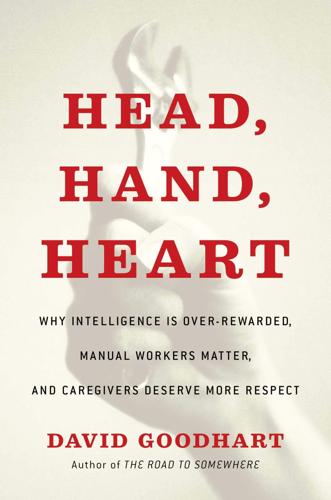
Head, Hand, Heart: Why Intelligence Is Over-Rewarded, Manual Workers Matter, and Caregivers Deserve More Respect
by
David Goodhart
Published 7 Sep 2020
A person is unlikely to do well in exams or rise in an organization—whether an inner-city gang or a multinational corporation—without a decent measure of general intelligence. But that is a necessary, not a sufficient condition of what one might call general human capability, which also requires social intelligence, judgment, imagination, and so on. These are qualities that are only partially captured by IQ-type tests—or, indeed, exams more generally. We know, for example, that some people with very high cognitive functioning, and usually very high IQs, are “on the spectrum” for autism and lack social intelligence. Most of us have no idea of our own IQ or that of the people we work with and know well, but we do have a sense of some people being “brighter” than others.
…
But inclusions often require new exclusions, in this case those who do not have the good fortune or aptitude to acquire a university degree—which is a majority of adults in most rich countries. And people no more earn their upbringing or innate intelligence than they earn being born into a rich family. Although IQ-type tests and exams measure raw cognitive ability, they do not capture things like social intelligence and imagination that we today associate with a rounded, capable person. Intelligence is a complex, fuzzy, and often highly context-dependent phenomenon, as I will unpack in Chapter Three, but in the United Kingdom, United States, and France—though less so elsewhere in continental Europe—it is the most abstract forms of reasoning that have historically attracted the most prestige.
…
Indeed, one of the reasons for the academic drift in education is that it is easier to mark and measure written tests than tests of manual skill or speaking ability. This means that people with reasonable ability in writing skills and a university degree are often preferred even in forms of employment, such as a manager in a department store, suitable to someone with high social intelligence or so-called domain-specific skills derived from long experience of doing one thing. Is a better balance between Head, Hand, and Heart achievable? Yes. Human norms and values lie behind the market signals of supply and demand, and they can change with surprising speed as we may witness in the aftermath of the Covid-19 crisis.
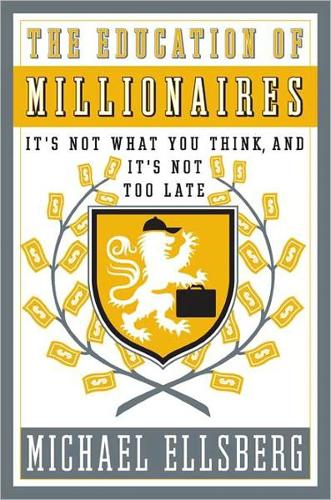
The Education of Millionaires: It's Not What You Think and It's Not Too Late
by
Michael Ellsberg
Published 15 Jan 2011
Usually, you can’t do it right away. You must already have built up some rapport and trust together. And you must do it extremely tactfully, with a great deal of social intelligence. (If you feel you need to brush up on your own social intelligence—including your sense of tact—a great place to start is the book Social Intelligence: The New Science of Human Relationships by Daniel Goleman. I highly recommend this book: social intelligence is something we learn almost nothing about in our formal education.) With all these caveats in place, if you can give someone a loving wake-up call in an area of their life where they’ve got a major blind spot, or just some well-placed advice that helps them overcome a problem or get one step closer to an important goal, they will be forever grateful.
…
Langan in turn possessed little of this kind of intelligence, and thus was never able to gain much of a toehold in the world of practical achievement. In his book, Gladwell shows that once a person has demonstrated passable logical, analytic, and academic skills, other factors have much more influence on real-world results—specifically, creativity, innovative thinking, and practical and social intelligence. To the extent that we develop these aptitudes in our lives, we tend to do so out in the real world, not in formal institutions.5 This book is your guide for developing practical success skills in the real world. I focus on seven key skills that will be crucial if you want to succeed in your work and career.
…
See Brand of you Self-education andragogy versus pedagogy bootstrapping of business skills for entrepreneurs and e-books “education of millionaires” skills and Internet lifelong learning non-graduate success profiles practical versus academic intelligence and success Shaw, George Bernard Simmons, Joseph Simmons, Russell on contributing needs, focus on Skyes, Charles Smith, “Beedle,” Smith, Brent Social intelligence SPIN Selling Spirituality advice, giving to mentors and successful persons Stanley, Thomas J. Startup Genome Project Stier, Debbie Strauss, Ferdinand Stumpf, Joe Success and educating self. See Self-education entrepreneurial versus employee mind-set expertise, teaching to others and luck and relationships and risk-taking self-created.
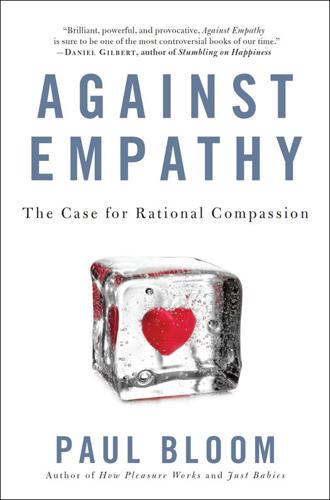
Against Empathy: The Case for Rational Compassion
by
Paul Bloom
And many of the pleas that people make for more empathy just express the view that it would be better if we were nicer to one another. I agree with this! Others think about empathy as the act of understanding other people, getting inside their heads and figuring out what they are thinking. I’m not against empathy in that sense either. Social intelligence is like any sort of intelligence and can be used as a tool for moral action. We will see, though, that this sort of “cognitive empathy” is overrated as a force for good. After all, the ability to accurately read the desires and motivations of others is a hallmark of the successful psychopath and can be used for cruelty and exploitation.
…
But there is a related sense that has to do with the capacity to appreciate what’s going on in the minds of other people without any contagion of feeling. If your suffering makes me suffer, if I feel what you feel, that’s empathy in the sense that I’m interested in here. But if I understand that you are in pain without feeling it myself, this is what psychologists describe as social cognition, social intelligence, mind reading, theory of mind, or mentalizing. It’s also sometimes described as a form of empathy—“cognitive empathy” as opposed to “emotional empathy,” which is most of my focus. Later in this chapter, I’ll talk about cognitive empathy, rather critically, but right now we should just keep in mind that these two sorts of empathy are distinct—they emerge from different brain processes, they influence us in different ways, and you can have a lot of one and a little of the other.
…
There is a stereotype of bullies as social incompetents who take their frustrations out on others. But actually, when it comes to understanding the minds of people, bullies might be better than average—more savvy about what makes other people tick. This is precisely why they can be so successful at bullying. People with low social intelligence, low “cognitive empathy”? Those are more often the bullies’ victims. I’ll end with a classic fictional example of the power of cognitive empathy. This comes from George Orwell’s 1984—not in the character of the protagonist Winston Smith but in that of O’Brien, who deceives Winston into thinking of him as a friend but later reveals himself as an agent of the Thought Police and ultimately becomes Winston’s torturer.

SuperBetter: The Power of Living Gamefully
by
Jane McGonigal
Published 14 Sep 2015
Gaming—in person or with friends and family online—is the perfect way to practice your synchronization skills, increase your social intelligence, and develop more empathy for others. These are powerful abilities you can use in any social environment, inside and outside of games. MISSION COMPLETE Skills Unlocked: How to Discover New Allies and Strengthen Your Support System To neurologically sync up with someone, play a game together, competitively or cooperatively, in the same physical space. This will activate your mirror neurons, which strengthens your social bonds and increases your social intelligence. As often as possible, make time with friends and family for other kinds of synchronizing activity.
…
You start to feel the same sense of calm as your partner. By unconsciously mimicking her physical movement, you suddenly have access to her emotions! We synchronize like this hundreds of times every day without thinking about it. People who do it more tend to score higher on measures of empathy and social intelligence. That’s because the more you mirror and mimic, the better you understand the people around you. That just leaves one important question to answer: why do we like people better when we mimic and mirror them? It’s not just a matter of better understanding. Countless studies have shown that we become closer to, more affectionate toward, and more likely to help the people we sync up with.
…
Still, all things considered, the biggest benefits come from syncing up around positive emotions like interest, excitement, curiosity, and wonder—emotions that are extremely common during game play. Will you notice the next time you’re on a positive upward spiral with someone? Here’s a quest to help you increase your social intelligence right now. QUEST 8: The Love Detector When you understand how synchronization works, you spot it happening all around you. It’s almost like developing a sixth sense—you see relationships sparking and connections strengthening right before your eyes. I want you to think of your new sixth sense as a powerful love detector.
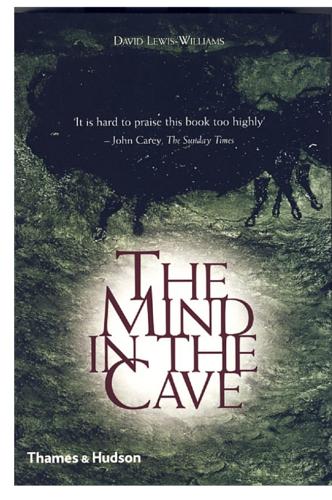
The Mind in the Cave: Consciousness and the Origins of Art
by
David Lewis-Williams
Published 16 Apr 2004
Instead, we can move on to see what mental modules Mithen identifies and how he believes the generalization of these modules explains what happened at the Transition. He proposes four mental modules: – social intelligence, – technical intelligence, – natural history intelligence, and – linguistic intelligence. For instance, anatomically archaic people (who did not have generalized intelligence) could learn multi-stage procedures for making stone artefacts (technical intelligence), but this degree of complexity could not spill over into elaborate kinds of social relations (social intelligence). Indeed, he argues that there was little interaction, or accessibility, between intelligence modules prior to the Transition.
…
Yet, even though hominids such as the Neanderthals had it, visual symbolism arose, or at any rate flowered, only at the Transition (some researchers argue for an earlier date for the first signs of symbolic behaviour). So, what happened? Prior to the Transition, intentional communication and classification were probably sealed in the social intelligence chapel, while mark-making and the attribution of meaning, which both implicate material objects, were probably ensconced in chapels of non-social intelligence. At the Transition, accessibility between chapels made art possible by allowing intentional communication to escape into the domain of mark-making. Some reservations Evolutionary psychology as a sub-discipline has its critics.10 Unfortunately, there is a muddying of the waters with political correctness.
…
For instance, metaphorical thought became possible as a result of traffic between chapels. People could think of, say, social relations in terms of natural history intelligence – thus totemism was born: people could speak of human groups as if they were animal species. Similarly, anthropomorphism (the ascription of human characteristics to animals) was achieved by traffic from social intelligence through to the chapel of natural history: animals became like people. Then, too, for the comparatively complex subsistence strategies of the Upper Palaeolithic there had to be traffic between technical intelligence and natural history intelligence. Improved hunting equipment (technical intelligence) was of no use without integrating it with knowledge of the environment in which it was to be used and the behaviour of the animals to be hunted (natural history intelligence).
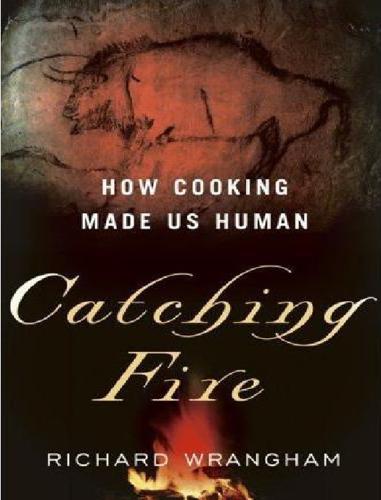
Catching Fire: How Cooking Made Us Human
by
Richard Wrangham
Published 15 Aug 2010
Indeed, the advantages are so strong that we might expect all social primates to have developed big brains and high intellect. Yet there is wide variation. Lemurs are as small-brained as typical mammals. Apes have bigger brains than monkeys, and humans have the biggest brains of all. The social brain hypothesis does not explain these variations. It sets up this problem: if social intelligence is so important, why do some group-living species have smaller brains than others? Diet provides a major part of the answer. In 1995 Leslie Aiello and Peter Wheeler proposed that the reason some animals have evolved big brains is that they have small guts, and small guts are made possible by a high-quality diet.
…
The general lesson is that bigger brains must be paid for somehow. How animals with small guts make use of their energy savings depends on what matters to them. In primates the tendency to use energy saved by smaller guts for added brain tissue is particularly strong, presumably because most primates live in groups, where extra social intelligence has big payoffs. The expensive tissue hypothesis predicted that major rises in human brain size would be associated with increases in diet quality. Aiello and Wheeler identified two such rises. The first brain-size expansion was around two million years ago from australopithecines to Homo erectus.
…
Conklin-Brittain, N., R. W. Wrangham, and C. C. Smith. 2002. “A Two-Stage Model of Increased Dietary Quality in Early Hominid Evolution: The Role of Fiber.” In Human Diet: Its Origin and Evolution, P. Ungar and M. Teaford, eds., 61-76. Westport, CT: Bergin & Garvey. Connor, R. C. 2007. “Dolphin Social Intelligence: Complex Alliance Relationships in Bottlenose Dolphins and a Consideration of Selective Environments for Extreme Brain Size Evolution in Mammals.” Philosophical Transactions of the Royal Society of London Series B 362:587-602. Coon, C. S. 1962. The History of Man: From the First Human to Primitive Culture and Beyond., 2nd ed.
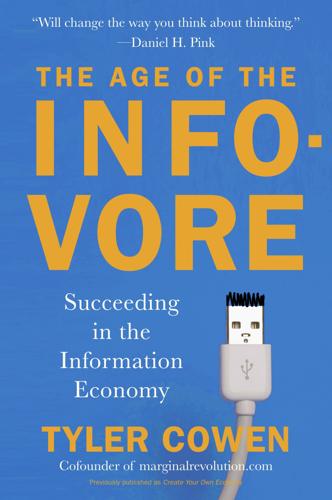
The Age of the Infovore: Succeeding in the Information Economy
by
Tyler Cowen
Published 25 May 2010
At first I found it vaguely insulting, a bit like the “crank” emails I receive with conspiracy theories about the Federal Reserve System. But I investigated the question further and the more I read about the phenomenon, the more I saw that, while I do not fit the typical public conception of an autistic or suffer from “low social intelligence,” I have many of the cognitive strengths and weaknesses of autism. In other words, I have an autistic cognitive style. I’ve since come to believe that this is a common cognitive pattern, including among some very successful people. I was surprised by Kathleen’s message. A forty-one-year-old upper-middle-class white male who all his life felt like he belonged to the dominant group in American society, was suddenly faced with the suggestion that he could be part of a minority, and a very beleaguered minority at that.
…
We could just as easily produce another hypothesis and say that the “real autistics” are the successful people who are very consistently autistic but never diagnosed because they achieve high social status and maybe they had happy childhoods as well. They’ve mastered autistic styles of learning and so they have many achievements, including a good working grasp of social intelligence. Success stories don’t have to be classified as cases of “mild autism”; they may well be better understood as cases of effective autistic learning. In the field of autism research, scientific breakthroughs have come from researchers who are themselves autistic. Michelle Dawson, an autistic researcher in Montreal, insisted to her colleagues that they pursue the notion of giving the Raven’s Progressive Matrices IQ test to autistics.
…
abduction, 156–57 access costs of, 43, 49–50, 61–62 to culture, 41, 42–43, 61–63 to web content, 47, 49–50 acculturation, 106–7, 111 addictions, 46, 55–56, 140, 142 adults with autism, 37 advanced civilizations, 224–28 advertising, 43, 139–41, 211 aesthetic values, 173–92 and autistics, 173–75 canons of, 94, 190–91 and cultural criticism, 188 judgments about, 176 and neurodiversity, 189 and neurology, 174, 175–79, 184–92 role of perception in, 177 affiliations, 87 Alchian, Armen A., 49 Alchian and Allen Theorem, 49–50 Alcoholics Anonymous, 84 Alighieri, Dante, 128 alexa.com, 46 Allen, William R., 49 Amazon.com, 47, 62, 85 amusia, 179–80 Anarchy, State, and Utopia (Nozick), 142 Andersen, Hans Christian, 166 animal intelligence, 224 AOL, 47 Argentina, 206–7 Ariely, Dan, 80–81, 124 articulable interests, 87 Asperger, Hans, 28, 189–90 Asperger’s LiveJournal discussion group, 35 Asperger’s syndrome and aesthetic values, 174, 180–81 behaviors and traits associated with, 30–31 community building in, 214 and discrimination, 197 high achievers with, 23, 24, 26, 166–67 media coverage of, 34, 154 perseverations, 169 relation to autism, 22 and support groups, 23–24, 35 Atkinson, Michael, 157 atonal music, 182–86, 187, 188 attention spans, 53–55 Attwood, Tony, 213 Australia, 207 authenticity, 142–46 autism and autistic individuals, 15–40 behaviors and traits associated with, 30–31 (see also specific traits) and Buddhism, 92–94 as a cognitive profile, 17–18, 194 cognitive strengths associated with, 15, 17–19, 21, 23, 30, 37, 39, 40, 57, 166–67, 189 cognitive weaknesses associated with, 19–20, 21, 27, 37, 57, 166 and communication, 20, 35, 73–74, 132–33, 168, 212–13, 218 defining, 16–17, 23, 39–40 diagnostic criteria for, 39 and education, 107, 109–11, 115, 215 in fiction, 147–48, 160–66 (see also Holmes, Sherlock) high achievers with, 23, 24–26, 28–30, 166–68, 180–82 mobilizing talents of, 214–15 and politics, 194–200, 203, 209 public perception of, 15–16, 22, 31, 32–33, 176, 221–22 rates of, 36, 37–38 “recovery” from, 26–27 social hostility toward, 38–39 social intelligence and interactions, 20–21, 27, 31–35, 170, 212 and stories, 129–32, 135–36, 140–41 variance of outcomes in, 21, 23, 39 See also Asperger’s syndrome; neurodiversity Autreat conference, 152 Baggs, Amanda, 35 Bailenson, Jeremy, 86–87 Bainbridge, David A., 34 Barber, Benjamin R., 198 Baron-Cohen, Simon, 24 Bartók, Béla, 166 beauty, 41.
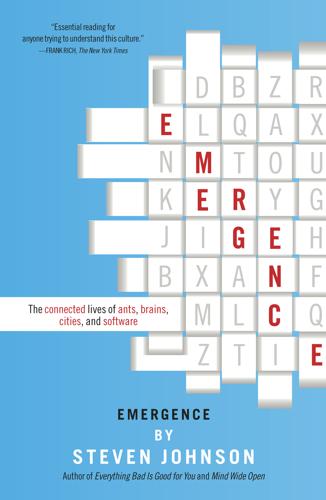
Emergence
by
Steven Johnson
The brain has increased threefold in size in the 3 million years since Australopithecus afarensis evolved, going from around 400 cubic centimeters to its current size of about 1350 cubic centimeters. The increase in brain size is likely to have had many causes, but one key factor upon which many theorists agree is the need for greater social intelligence shorthand for the ability to process information about the behavior of others and to react adaptively to their behavior. It is likely that there was a need for greater social intelligence because the vast majority of nonhuman primate animals are social animals, living in groups that range from as few as two individuals to as many as two hundred.” Baron-Cohen, 13–14. We don’t know: “. . . the network of the brain is created by cellular movement during development and by the extension and connection of increasing numbers of neurons.
…
That exploitation—a furtive pass concealed from the alpha male—is only possible because he is capable of building theories of other minds. Is it conceivable that this skill simply derives from a general increase in intelligence? Could it be that humans and their close cousins are just smarter than all those other species who flunk the mind-reading test? In other words, is there something specific to our social intelligence, something akin to a module hardwired into the brain’s CPU—or is the theory of minds just an idea that inevitably occurs to animals who reach a certain threshold of general intelligence? We are only now beginning to build useful maps of the brain’s functional topography, but already we see signs that “mind reading” is more than just a by-product of general intelligence.
…
Some evolutionary psychologists believe that the extraordinary expansion of brain size between Homo habilis and Homo sapiens (brain mass trebled over the 2-million-year period that separates the two species) was at least in part triggered by an arms race between Pleistocene-era extroverts. If successfully passing on your genes to another generation depended on a nuanced social intelligence that competed with other social intellects for reproductive privileges, then it’s not hard to imagine natural selection generating a Machiavellian mental toolbox in a surprisingly short period. The group element may even explain the explosion in sheer cranial size: social complexity is a problem that scales well—build a module that can analyze one person’s mind, and all you need to do is throw more resources at the problem, and you can analyze a dozen minds with the same tools.
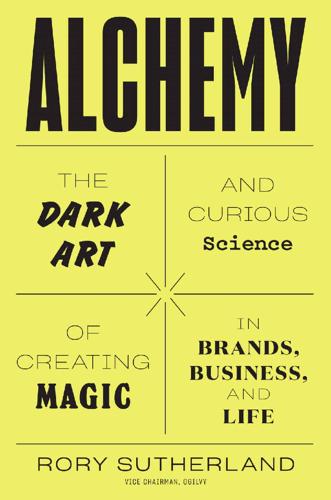
Alchemy: The Dark Art and Curious Science of Creating Magic in Brands, Business, and Life
by
Rory Sutherland
Published 6 May 2019
After all, any theatre selling tickets at a discount clearly has plenty to spare, and from this it might be reasonable to infer that the entertainment on offer isn’t all that good. No one wants to spend £100–£200 on tickets, a meal, car-parking and babysitting, only to find that you would have had more fun watching television at home; in avoiding discounted theatre tickets, people are not being silly – they are showing a high degree of second-order social intelligence. Despite my friend’s discovery, her colleagues continued to demand that she discount tickets. She patiently explained to them that any discount would reduce the demand, so that they would end up selling fewer tickets at a lower price, but they would insist that she included a discount anyway.
…
Not only would we reliably infer from the presence of tables and chairs that the café is open, I also believe we go deeper still – I think we subliminally deduce that any place that goes to the trouble of erecting chairs on the street will serve coffee that, at the very least, is unlikely to be terrible. That seems a silly use of mental energy – surely the way to determine whether the coffee is good is to buy one and find out? ‘I knew the coffee was going to be good because of the chairs,’ sounds like a very silly sentence, but hold on a moment – maybe, using psycho-logic and a bit of social intelligence, we can identify a connection. For a start, someone who invests in new chairs and goes to the trouble of placing them on the pavement every day is not lazy, and has also invested in their business. Furthermore, they seem to expect their business to be a success – had they not, they would not have undertaken the expense.
…
Declare success, using metrics based on your original definition of function. Capture cost savings for yourself and walk away. The overly simplistic model of advertising assumes that we ask ‘What is the advertisement saying?’ rather than ‘What does it mean that the advertiser is spending money to promote his wares?’, even though we clearly use social intelligence to decode the advertising we see. An example that emphasises the significance of our interpretation of information occurred in eastern Europe under communism; when a product was advertised there, demand often went down. This was because under communism anything desirable was in short supply, so people inferred that the government would only promote something that was of such hopelessly crappy quality that people wouldn’t be willing to queue for it.
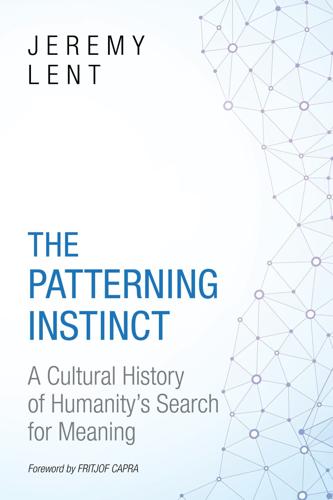
The Patterning Instinct: A Cultural History of Humanity's Search for Meaning
by
Jeremy Lent
Published 22 May 2017
As infants, we quickly learn that people can disappear and then reappear, sometimes minutes, hours, or even days later. From this, we realize that people continue to exist even while they have disappeared. This soon becomes an essential ingredient of our social intelligence, allowing us to imagine, for example, what others would feel or think if they were here. It's a relatively simple step to apply the same practice of displacement to the thoughts and feelings of a dead person. Given the central role of social intelligence in human cognition, it may be easier for us to think of someone still existing but not being physically present than to conceive of that person ceasing to exist altogether.
…
Responders, in fact, frequently reject offers below thirty dollars, and the most popular amount offered by proposers is fifty.20 It seems we humans have evolved a powerful sense of fairness. So powerful, in fact, that we would rather walk away with nothing than permit someone else to take unfair advantage of us. Researchers call this “altruistic punishment.” These results, and others like them, suggest that, over thousands of generations, our social intelligence was molded by cooperative group dynamics to evolve an innate sense of fairness and a drive to punish those who flagrantly break the rules, even at our own expense. This intrinsic sense of fairness is, in the view of some researchers, the extra ingredient that led to the evolutionary success of our species and created the cognitive foundation for values in our modern world such as freedom, equality, and representative government.21 It is, however, abundantly clear from any casual perusal of the daily news, not to mention the calamities of history, that cooperation is not the only force driving human affairs.
…
They would now have been able to dig up termite colonies or scavenge big game carcasses in the savannah, cutting through bones into the nutritious marrow. The extra calories available to them would have fueled the development of their larger brains, which demanded more metabolic energy. Their larger brains, in turn, gave them the social intelligence to thrive in their newly complex societies, creating a positive feedback cycle, leading to the evolution of even more powerful brains capable of developing more complex tools.26 It was, at first, a tediously slow feedback effect. For a million years, hominids got by just fine on their Oldowan technology, but then a breakthrough occurred.
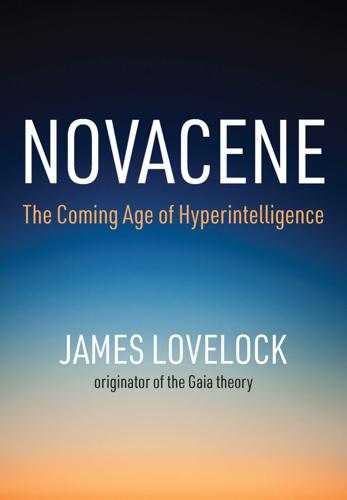
Novacene: The Coming Age of Hyperintelligence
by
James Lovelock
Published 27 Aug 2019
Finally, the wisest foragers may be chosen for the most challenging task, that of finding a suitable site for the next nest. It could be anywhere within a 2-kilometre radius. At one time I was foolish enough to believe that the tiny brain of a bee could never achieve anything resembling the social intelligence of the human. But I soon found that bees have a relatively complex language and they communicate by dancing. Most extraordinarily, bumblebees have been seen to play football. It seems that, in the world of invertebrates, the totalitarian monarchy of termites can coexist stably with the hierarchical monarchy of bees.
…
(Rossum's Universal Robots) 91, 114 capitalism, global 68 carbon 109 compounds 72 carbon dioxide 5, 10, 11, 57, 64, 105, 110 interglacial levels 55 possible implications of over-reducing levels 56 chalk 64 chlorofluorocarbons (CFCs) 38, 69, 71 cities 40, 50–53 Clarke, Arthur C. 59 climate change global warming 54, 57–8, 60–62, 65, 111 Paris Conference on (2016) 55 possible implications of over-reducing carbon dioxide levels 56 Clynes, Manfred 29 coal 33–5 communication cyborg 99–101 and evolution of speech 96–9 Marconi and electronic information transfer 128 telepathic 100–101 computer code 95 computer programs 79–80, 82, 83, 84 design limitations, lacking intuitive awareness 92 computing systems 92 based on an adaptive neural network 113–14 evolution of adaptive 114 parallel 82 PC chips 92 cosmos age of 3–4 and anthropic principle 25–7, 75, 89, 123 awakening to consciousness 3, 23, 26–8, 121–3 conventional scientific view of 15 dependence of the knowing cosmos on human survival 23–4 Grand Unification epoch 39 information as fundamental property of 26, 75, 87–8 purpose 26–8, 123 size of 3 cyborgs 29–30, 88–9, 101–3, 106, 119–20, 123 and Asimov's three laws of robotics 94 communication 99–101 cooperation with humans 102–3, 104–5, 106–8, 110, 115 and Earth's temperature 106–8, 115 emergence of 85–6, 118–20 evolution 29–30, 94–5, 101, 118, 123 human diplomacy and life with 118–20 as masters over humans 118–20, 123 parallel processing 82 and the quantum world 102 self-written code 94–5 space travel possibilities 108–9 telepathy 100–101 and war 112–17 Daisyworld 13 ‘Data’ (Star Trek android) 93 DeepMind (AI technology company) 79, 80 Deep Blue (computer) 79–80 deep learning technology 82 Delhi 50 diamond 109 chips 44, 109 diesel 72 digital technology 82–3 dimethyl sulphide 60 DNA 109, 127 dolphin intelligence 23 drones 91, 101, 113, 114, 116 Earth/Gaia age of 3, 4, 57–8 in Anthropocene 37–40; see also Anthropocene and asteroid strikes 6–8, 58–9, 63, 65–6 beginning of life on 3, 129–30 capacity to know itself 130 cooling mechanisms 11, 15, 30, 64, 66, 105 feedback loops 65 Gaia theory 12–13, 14–17, 26–7, 106 geoengineering 106–8 glaciation 55 Great Dying 6–7 in Novacene 30, 106–11; see also Novacene as an ocean planet 59–60, 64, 105–6; see also oceans population growth 67 radiation of excessive heat 11, 15, 30 temperature, see temperature of the Earth ecomodernism 67–9 The Economist 112–13 ecosystems 7, 19 Einstein, Albert 20, 21, 102 electrical power 70 electromagnetic pulses (EMPs) 114 electron capture detector (ECD) 38 electronic life 85, 105, 109, 114, 118 cyborgs, see cyborgs exoplanet possibilities of 9–10 European Geophysical Union 17 evolution 27, 28, 129–30 of adaptive computer systems 114 Anthropocene 35–6, 43, 70 chance, necessity and 85 cybernetic 29–30, 94–5, 101, 118, 123 and entry to the Novacene 83–6 of the eye 97 by intentional selection 43, 84, 86, 88–9 by natural selection 3–4, 70, 114; see also natural selection of nesting insects, and city life 51–2 Novacene 29–30, 94–5, 101, 110–11 from self-written code 94–5 of speech 96–9 exoplanets 3, 9–10, 121–2 extremophiles 62, 106 eyes, evolution of 97 Faraday, Michael 70 feedback loops 65 feminine intuition 18, 20 Fermi, Enrico 121 Feynman, Richard 102 First World War 45 fossil fuels 49 Freedman, Sir Lawrence 48 Frege, Gottlob 16 Freud, Sigmund 90 Gaia, see Earth/Gaia galaxies 3, 27 Gatling, Richard, rotary cannon 45 geoengineering 106–8 glaciation 55 global warming 54, 57–8, 60–62, 65, 111 Go (game) 79–80, 84, 88 God 24, 26, 68 Goldilocks Zone 10–11 graphene 109 greenhouse effect 5, 12, 60–61, 107 Greens, the 57, 71, 72 Guernica bombing 45, 48 Hamilton, Clive 68 Hansen, James 63 Hardy, Thomas 124 Havel, Václav 26–7 Hawking, Frank 62–3 Hawking, Isobel Eileen 63 Hawking, Stephen 63 Heaviside, Oliver 128 helium 11 Hiroshima 46 Hooke, Robert 33 human race age of species, Homo sapiens 3 aloneness of 3–5, 121, 122 and the Anthropocene, see Anthropocene at edge of extinction 6–13 guilt feelings over achievements 56 as prime understanders of cosmos 5 temperature tolerance 62, 63–4 hunter-gatherers 21, 67, 125 hydrogen 11, 63–4, 110 Indonesia 7 industrial pollution 37–8 Industrial Revolution 34–5, 37, 70 information 21, 74–5, 87 and anthropic principle 26, 75, 89, 123 capture and storage of 28, 74–5 communicating, see communication conversion of sunlight into 28, 39, 74–5, 87 cyborg retrieval of 101 as a fundamental property of the universe 26, 75, 87–8 junk information 111 Marconi and electronic information transfer 128 maximum transmission rate 81 and neurons 81 theory 88 unconscious 14; see also intuition units of 88, 89 instinct 17, 19, 20, 93 see also intuition intelligence/intelligent life 3, 4, 26, 102–3 AI, see artificial intelligence of animal species 23, 51–2 and cosmic purpose 26–8 cybernetic, see cyborgs distinguishing feature of human intelligence 23 dolphin intelligence 23 electronic, see artificial intelligence; cyborgs; electronic life humanoid ideas of intelligent beings 90–92, 93–4 intelligence/intelligent life (Cont.) hyperintelligence 29, 117, 122 natural selection for 27 social intelligence of bees 51–2 intentional selection 43, 84, 86, 88–9 intuition 13, 14, 18–20, 22, 38; see also instinct AI 80 computer design limitations, lacking intuitive awareness 92 denigration of 20, 99 feminine 18, 20 and invention 38, 99 and parallel processing 92–3 and telepathy 100–101 iodine 60 Jakarta 50 Jefferson, Thomas 52 Jet Propulsion Laboratory, California 47–8 junk information 111 Kasparov, Garry 79–80 Kline, Nathan 29 Laki volcano, Iceland 40 Laplace, Pierre-Simon 18–19 Latour, Bruno 17 LAWS (lethal autonomous weapons systems) 115–17 Lidwell, Owen 62 life chance, necessity and the appearance of 85 and Earth's temperature 11, 15, 30, 62, 63–4, 105–6 electronic, see cyborgs; electronic life evolution of, see evolution on exoplanets 3, 9–10, 121–2 intelligent, see intelligence/intelligent life longevity of life forms 4 Novacene 86, 88–9; see also cyborgs; electronic life spotting life on another planet 127 and zone of habitability/Goldilocks Zone 10–11 limestone 64 linear logic, see logic, linear logic, linear 13, 14, 15, 16, 18, 21, 93, 94, 100, 102 Lotka, Alfred 19 Lovelace, Ada 83 Lovelock, Nell 124 Lovelock, Sandy 125 Lovelock, Tom 124–5 Lovelock family 124–5 Luftwaffe 45 Lynas, Mark 67–8, 69 Marconi, Guglielmo 128–9 Mars 6, 8–9, 10, 59, 108 Mariner mission 126–7 The Matrix 108 Maxwell, James Clerk 16 megacities 40, 50 memory 120 Mercury 10, 21, 22 methane 65, 72 methyl iodide 60 Monod, Jacques 85 Moon 6, 58, 126–7 soft landing on 25, 126 Moore, Gordon 43 Moore's Law 43–4, 82–3, 86 Morton, Oliver: The Planet Remade 107 multiverse theory 26 Mumford, Lewis 45 Musk, Elon 115 Nagasaki 46 NASA 24–5, 126–7 natural selection 3–4, 70, 84, 88, 98, 114 for intelligence 27 neurons 81 new atheists 27 Newcomen, Thomas 33, 128 steam engine 34–6, 87, 124 Newton, Isaac 18–19 laws of planetary motion 21 Novacene and AlphaZero 80, 82 and autonomous weapons 115–17 and the conscious cosmos 121–3 cyborgs, see cyborgs and engineering 83–6; see also cyborgs evolution 29–30, 94–5, 101, 110–11 and Gaia 30, 106–11 likely duration 39 and Marconi 128–9 and Moore's Law 43–4, 82–3, 86 rise of 30, 80, 82–6 speech and writing delaying emergence of 98–9 nuclear power/energy 46, 48–9, 61, 73 nuclear weapons 7, 46–9, 114 oceans 55, 59–60, 63, 64, 107, 110, 129 original sin 56 Orwell, George 4 oxygen 28, 35, 48, 63–4, 108, 109, 110 packaging 72 Palaeocene/Eocene Thermal Maximum 65 parallel processing 82, 92–3 Paris Conference on Climate Change (2016) 55 permafrost 65 petrol 72 Philosophical Transactions of the Royal Society 19 photosynthesis 28, 39, 87, 109 Planck, Max 18–19 plastics 71–2 Poincaré, Henri 18–19 polar ice caps 65 pollution 54, 55, 74 industrial 37–8 radioactive 46 Popper, Karl 16 population growth 67 quantum theory 26, 96, 102 radioactivity 46 railways 41–2 re-wilding 72 reforestation 72 religion 24; see also God green 69 and original sin 56 Rhodes, Richard 46 robots 90, 91, 93–4 rocket speed 42 Roswell incident 121 Russell, Bertrand 16 Second World War 46, 112 selenium 60 Shanghai 50 Shannon, Claude 88 Shelley, Mary: Frankenstein 7 shipbuilding 33–4 Siberian Traps 6–7 silicon 109 chips 43–4 Silverstein, Abe 126 Socrates 20 solar power 73 see also Sun/solar energy solar system 4, 17 speech, evolution of 96–9 stars 3, 4, 27, 121 main sequence 4, 11, 13, 105; see also Sun/solar energy steam engines 70 Newcomen's 34–6, 87, 124 Watt's governor 15–16 Stockfish (computer program) 80 Stoermer, Eugene 37 sulphur 60 Sun/solar energy 4–5, 28, 35, 39, 48, 75; see also sunlight heat emission, and Earth's temperature 5, 10–13, 105, 106–7, 111 sunlight 5, 30, 35, 61 conversion into information 28, 39, 74–5, 87 and the Industrial Revolution 34, 35 and photosynthesis 28, 87 supercritical steam 63, 64 Szilard, Leo 46 Tambora, Mount 7 telegraphy, wireless 128 telepathy 100–101 Tellus journal 17 temperature of the Earth 5, 55–6, 57–66 critical upper limit for life 62, 63–4, 105 current average 65 and cyborgs 106–8, 115 and extremophiles 62 Gaia's cooling mechanisms 11, 15, 30, 64, 66, 105 global warming 54, 57–8 and greenhouse effect 5, 12, 60–61, 107 and human skin cells 62 and life 11, 15, 30, 62, 63–4, 105–6 Palaeocene/Eocene Thermal Maximum 65 possible implications of over-reducing carbon dioxide levels 56 and radiation of excessive heat 11, 15, 30, 60, 107–8 and sea temperature 60, 64 and the Sun 5, 10–13, 105, 106–7, 111 supercritical state 63–4 and water vapour 60–61, 107 Tennyson, Alfred, Lord 130 thinking and anthropic principle 25–7, 89 intuitive, see intuition logical, see logic, linear Tipler, Frank (with John Barrow): The Anthropic Cosmological Principle 24, 25–6, 27, 123 Tokyo, Greater 50 trains 42 transport 42–3 trench warfare 45 Tsar Bomba 46 UFOs 121 unconscious mind 19, 20 see also intuition Venus 10, 64 volcanic events 66 devastating 6–7, 63 Laki 40 Vulcan 21–2 warfare 45–9, 54; see also nuclear weapons and cyborgs 112–17 water vapour 60–61, 107 Watson, Andrew 13 Watt, James 15, 70 Watt governor 15–16 White, Gilbert 39, 41 The Natural History of Selborne 39–40, 41 Wilson, Edward O. 51 wind power 73 Wittgenstein, Ludwig 16, 96 Wood, Lowell 106 Wordsworth, William 42, 54 zone of habitability 10–11

The Geeks Shall Inherit the Earth: Popularity, Quirk Theory, and Why Outsiders Thrive After High School
by
Alexandra Robbins
Published 31 Mar 2009
Recent studies conclude that aggressive behaviors are now often associated with high social status. Psychologists no longer view aggression as a last-resort tactic of social misfits. Now they see aggression as a means toward social success. (This does not, however, mean it is admired. As author Daniel Goleman wrote in Social Intelligence, “being manipulative—valuing only what works for one person at the expense of the other—should not be seen as socially intelligent.”) Some researchers describe a “popularity cycle”: Initially, a girl rises through the ranks to popularity. She might stay popular for a while, but at some point, she could be perceived as too popular. Maybe she’s getting too many perks, drawing too much attention from too many boys, or distancing herself too far from old friends.
…
“Moderators of the Association Between Relational Aggression and Perceived Popularity,” Aggressive Behavior, Vol. 34, 2008. See also Kiefer. See also Horn, Stacey S. “Mean Girls or Cultural Stereotypes: Essay Review,” which discusses the debate over whether social aggression is fundamentally negative. “should not be seen as socially intelligent”: See Goleman, Daniel. Social Intelligence, New York: Bantam, 2006. “popularity cycle”: See Eder, Donna. “The Cycle of Popularity: interpersonal relations among female adolescents,” Sociology of Education, Vol. 58, Issue 3, July 1985. distancing herself too far from old friends: See, for example, Adler, Patricia A. and Adler, Peter.
…
Blue: Blue and I had enough discussions about this topic that I believed that he was not realistically any danger to himself or others. A surprising number answered yes: Interviews. “The needs of students”: Interview. “robust” and “remarkable”: See Puckett. See also Rose and Swenson. See also LaFontana. See also Andreou, Eleni. “Social Preference, Perceived Popularity and Social Intelligence: Relations to Overt and Relational Aggression,” School Psychology International, Vol. 27, 2006, which states, “Relational aggression may predict increased perceived popularity.” the foundation for eventual racism: See, for example, Adler and Adler, 1995. his family moved there from Plattsburgh: See, for example, Belluck, Pam and Wilgoren, Jodi.
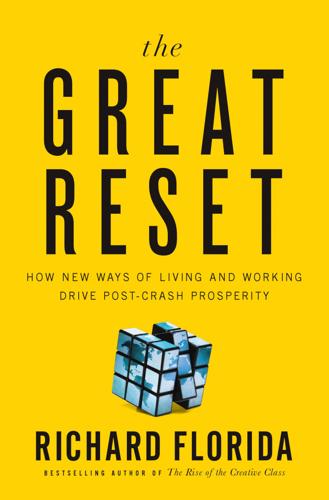
The Great Reset: How the Post-Crash Economy Will Change the Way We Live and Work
by
Richard Florida
Published 22 Apr 2010
The unemployment rates faced by service workers have fallen somewhere in between.5 The old manufacturing economy honed physical skills such as lifting and manual dexterity. But two sets of skills matter more now: analytical skills, such as pattern recognition and problem solving, and social intelligence skills, such as the situational sensitivity and persuasiveness required for team building and mobilization. Jobs that demand high analytical skills, such as medicine and bioengineering, and social intelligence skills, such as psychiatry and management, are not only increasing in numbers faster than other jobs but also pay much more. Moving from a job in the bottom quarter of analytical-skill levels to one in the top quarter—from travel agent to, say, accountant—means an average of an additional $18,700 in pay; the gap between jobs that are low and high in social intelligence skills is even greater: $25,100.
…
Moving from a job in the bottom quarter of analytical-skill levels to one in the top quarter—from travel agent to, say, accountant—means an average of an additional $18,700 in pay; the gap between jobs that are low and high in social intelligence skills is even greater: $25,100. The reverse is true when it comes to physical skills: moving between a job in the bottom quarter and one in the top quarter of physical demands would be accompanied by, on average, an $8,100 drop in wages.6 The challenge on the jobs front is twofold. It’s obvious that we need to grow more jobs that are high in analytical and social skills, but we also need to increase the analytical and social skills of the jobs we have.
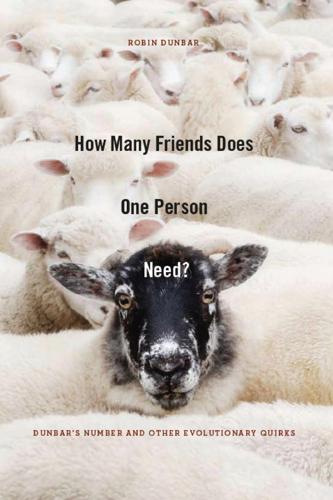
How Many Friends Does One Person Need? Dunbar’s Number and Other Evolutionary Quirks
by
Robin Dunbar
and
Robin Ian MacDonald Dunbar
Published 2 Nov 2010
The more traditional view is that they need big brains to help them to find their way about the world and solve problems in their daily search for food. The alternative view is that the complex social world in which primates live has provided the impetus for [Page 22] the evolution of large brains. The main version of this social intelligence theory, once known as the Machiavellian intelligence hypothesis, has the merit of identifying the thing that sets primates apart from all other animals – the complexity of their social relationships. Primate societies seem to differ from those of other animals in two key respects. The first is the dependence on intense social bonds between individuals, which gives primate groups a highly structured appearance.
…
Other species may have groups that are highly structured in this way – elephants and prairie dogs are two obvious examples – but these animals differ from primates in a second respect. This is that primates use their knowledge about the social world in which they live to form more complex alliances with each other than do other animals. This social intelligence hypothesis is supported by a strong correlation between the size of the group, and hence complexity of the social world, and the relative size of the neocortex – the outer surface layer of the brain that is mainly responsible for conscious thinking – in various species of nonhuman primates.
…
E., 209–10 life expectancy, 204–6 light, 182, 183 limbic system, 15–17 Lincoln, Abraham, 168–9 Little, Tony, 165–7 Lonely Hearts columns, 228–32, 236–41 ‘Lucy’ skeleton, 129 Lyell, Sir Charles, 183 lying, 175–6, 197 Lyons, Minna, 250 Lysenko, Trofim, 118 macaques, 24, 121, 193 MacDonald, Finlay, 228–9 McGrew, Bill, 192–3, 194 McGuinness, Sarah, 232 Machiavellian intelligence hypothesis, 23 Magna Carta, 171 malaria, 100, 101, 116 Malthus, Thomas, 157–8 mammals: age of, 144; brain size, 12–13, 92; monogamous relationships, 12–13, 255 mammoth, 149–52 Maoris, 246 marmoset monkeys, 254–5 marriage: advertising for a mate, 228–32; divorce and, 108, 110,254, 260–1; patterns, 227–8; see also monogamy Marx, Karl, 117, 282, 291 mastodon, 121 mating game, 232–5 Mayflower colonists, 40 memory, 28, 224–6 men: colour vision, 17–19; conversations, 75–6, 79–80; fighting, 16–17; Lonely Hearts adverts, 228–32; male–male relationships, 16, 80; marriage, 227–8; monogamy and promiscuity, 258, 262–5; skin colour, 91 Mendel, Gregor, 15 mentalising, 31 MHC (major histocompatibility complex), 244–5 mice, 245–6 Michelson, Albert, 218 migrations: human, 139–41; Indo–European, 51–4, 139; Scots, 35–8, 146 milk, 85–8 Mill, John Stuart, 268 ‘Millennium Man’, 132–3 Miller, Geoffrey, 71 mind, theory of, 175–7, 180, 197, 276–7, 289 mind-reading abilities, 179–82 Ming Hsu, 270 miracles, 280 mitochondria, 47 molecular clock, 121 Mongol empire, 48–50 monkeys: babies, 77, 94–5, 107; brain size, 22; colour perception, 19; deception, 197; eaten, 131; grooming, 61–2, 73–4, 243, 286; group size, 24; jealousy, 259; language, 195–6; [Page 298] mating strategies, 29; monogamy and polygamy, 254–5, 259; pelvis, 93; sleeping, 83; social cognitive abilities, 31, 178–81, 272, 273; social interactions, 31, 35, 178, 285 Monnot, Marilee, 76–7 monogamy: birds, 12, 13–14, 221, 255–6, 259–60; brain size, 12–14; extra-pair mating, 258–60; home-wreckers, 260–1; humans, 221, 254, 261, 262–5; mammals, 12–13, 221, 255; monkeys, 254–5; oxytocin sensitivity, 65, 262; paternity and cuckoldry, 256–8; primates, 253; size of testes, 253; vasopressin receptor genes, 262–5 Moore, Patrick, 217 morality, 268–74 Morley, Edward, 218 morning sickness, 9, 103–6 motherese, 76–8 MRSA, 99, 100, 116 MUPs (major urinary proteins), 245–6 Murdoch, John, 219 music, 69–72, 78, 137, 217–18, 287 mutation, genetic, 49–50, 85, 115, 244–5 MySpace, 21 Na-Dene languages, 53 names, 41–4 Nash, John, 206 Native Americans, 123 natural selection, 7–8, 99–100, 115–16, 157 nature versus nurture, 184–5 Neanderthals, 127, 128, 138–41 neocortex, 15–17, 23–4, 29, 181, 272–3 nepotism, 35–7 Nettle, Daniel, 45, 207–8 Newcastle-upon-Tyne, 40–1 Newton, Isaac, 119 night time, 83–4 Nocks, Elaine, 163 Nogués-Bravo, David, 150, 151 nursery rhymes, 78, 225 Obama, Barack, 9, 164, 167 odour, see smell optics, 118–19 orang pendek, 132 orang utans: ancestry, 122; capacity for theory of mind, 176–7, 179; classification, 274–5; extinction threat, 145; habitat, 132, 145; language, 196, 275 Organ, Chris, 120, 121 Oring, Lewis, 260 Orrorin tugenensis, 132–5 Ota Benga, 267 Othello, 198–201 oxytocin, 64–6, 262 pairbonds, 12, 13, 65, 239 Pakistan, 55 Paley, William, 114 parrots, 196 Partridge, Giselle, 251 paternity, 95–6, 254–8 Pawlowski, Boguslaw, 207, 238 peacocks, 70, 75, 258 pelvis, 93–4 penicillin, 99 Pennebaker, James, 237 Pepper, Gillian, 105 Perrett, David, 235 Pérusse, Daniel, 263 phlogiston theory, 185–6 Phoenicians, 55–6 Pinker, Steven, 70 Plato, 7, 33, 118 [Page 299] Pleistocene Overkill, 150 poetry, 154–5, 182, 218–22 polygamy, 254 polymaths, 216–18 pop stars, 71 Popper, Karl, 280 population, human: density, 102, 151; increase, 109, 145–6, 157–9; movement, 130; sex ratio, 111–12 Portugal, primogeniture, 110–11 premature birth, 77, 85, 92–5 presidential elections, 164–9 Priestley, Joseph, 185–6 primates: babies, 85; brain size, 12, 22–4, 81, 272–3; brain structure, 15–16, 181, 272; colour perception, 19; diet, 90; earliest, 157; extinction, 144; female–female bonding, 16, 80; grooming, 80, 286; group size, 16, 23–5, 81, 273; mating systems, 253, 255; rank and mating success, 29; social interactions, 31–2, 35, 178–9, 282, 285–6; tactical deception, 29–31, 178–9 primogeniture, 110–11 probability theory, 184 Provine, Robert, 68 psychology, 161 Pygmy peoples, 131, 267 reasoning, 181 Reid, Thomas, 219 relationships: number, 24–8; quality, 31–2 religion: education in Scotland, 212–13; evolution of, 279–81, 288–9; evolutionary role, 9, 279–87; fundamentalism, 116–17, 119; geographical distribution, 102; moral system, 271–2; rituals, 284–7; shamanic, 284, 287 Renaissance Man, 216, 218 rhesus negative gene, 53 Rijkers, Toon, 148–9 risk-takers, 248–51 ritual, 284–7 Roberts, Craig, 105, 165–7 Roman: army, 27; empire, 153; occupation of Britain, 57; slaves, 57, 59 rote learning, 225–6 Russian Marxist biology, 117–18 Sahelanthropus tchadensis (toumaï), 133–5 saliva, 245 San Bushmen, 33, 90, 182, 287 Sandell, Maria, 259–60 Sanz de Sautuola, Marcelino, 135 Saxe, Rebecca, 270 Saxton, Tamsin, 247 Schumacher, Arnold, 162–3 science: attitudes to, 215–16; education, 214; polymaths, 216–18 Scopes, John, 114 Scots: education, 212–14; migration, 35–8, 146, 213; origins, 50–1 Scottish Enlightenment, 213, 219 Scythians, 50–1 selection ratio, 238–9 sex differences in colour sensitivity, 17–20 sex ratio, 110–12 sexual selection, 8, 70–1 Seyfarth, Robert, 195–6 Shakespeare, William, 9, 198–201 shamanic religions, 284, 287 shared knowledge, 82–3 Shultz, Suzanne, 12 sickle cell anaemia, 101–2 singing: biological importance, [Page 300] 69–70; Hebridean waulking songs, 78, 155; mothers and babies, 76; religious rituals, 284, 291; social bonding, 72 singles bars, 237 skeletons, 122–6 skin colour, 87–8, 89–92, 140–1 skuas, 261 slaves, 56–9 smell, 245, 247–8 Smith, Adam, 213, 219 Smuts, Barbara, 262 Snow, C. P., 217 social bonding, 71–2, 79–80 social cognition, 178, 181, 272–3 social contract systems, 285–6 social intelligence theory, 23 social networking sites, 21 social skills, 16–17, 233 Solzhenitsyn, Alexander, 216 sound, 184 speed-dating, 247–8 spices, 105–6 spine, 93–4 sports, 208–9, 211 starlings, 259–60 stone tools, 131, 137 story-telling, 81–4, 200 striate cortex, 272–3 stroke patients, 269 subconscious, 210, 246, 257 Suku Anak Dalam people, 132 symmetry: bodily, 206–7, 208; facial, 164–5, 258 sympathy group, 33 tactical deception, 29–30, 179 tall people, 162–4, 166–9, 207 tamarin monkeys, 254–5 Taylor, A.
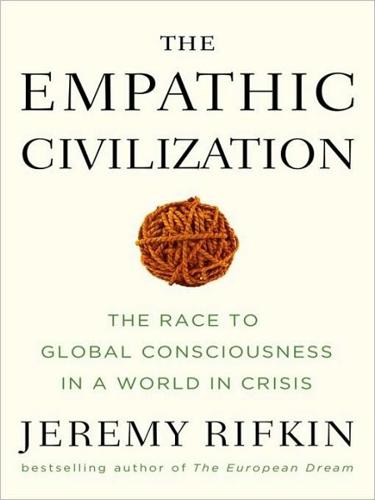
The Empathic Civilization: The Race to Global Consciousness in a World in Crisis
by
Jeremy Rifkin
Published 31 Dec 2009
And that means establishing close and smooth relations so that everyone can share information easily and coordinate effectively.33 Goleman et al. refer to this new empathic style of management as “affiliative” and suggest that it “represents the collaborative competence in action.”34 The Columbia University Business School in New York City is one of a number of business schools that has introduced social intelligence pedagogy directly into its MBA curriculum. Its Program on Social Intelligence (PSI) “is organized around the psychological capabilities involved in collaborating with, motivating, and leading others” and draws together faculty from the psychology department and the business school to provide experiential opportunities, both in the classroom and in the community, to develop empathic skills.35 While classical economic theory states that individuals rationalize the sale of their labor power to maximize their income and profit, it turns out that most employees put a higher value on a caring boss, adding credence to the new empathic style of management.
…
The notion of economic altruism no longer seems like an oxymoron. Adam Smith would, no doubt, be incredulous. Nonetheless, Linux works and has become a competitor with Microsoft on the world stage. The new insights into human beings’ empathic nature has even caught the attention of human resources management who are beginning to put as much emphasis on social intelligence as professional skills. The ability of employees to empathize across traditional ethnic, racial, cultural, and gender boundaries is increasingly regarded as essential to corporate performance, both within the workplace and in external market relations. Learning how to work together in a thoughtful and compassionate manner is becoming standard operating procedure in a complex, interdependent world.
…
The entire process is what makes up empathetic consciousness. As mentioned in Chapter 1, empathy is both an affective and cognitive experience. Reason, then, is the process by which we order the world of feelings in order to create what psychologists call pro-social behavior and sociologists call social intelligence. Empathy is the substance of the process. Reason becomes increasingly sophisticated as social constructs become more complex, human differentiation more pronounced, and human exchange more diverse. Greater exposure to others increases the volume of feelings that need to be organized. Reason becomes more adept at abstracting and managing the flood of embodied feelings.

The Charisma Myth: How Anyone Can Master the Art and Science of Personal Magnetism
by
Olivia Fox Cabane
Published 1 Mar 2012
In controlled experimental settings, leaders’ positive emotional contagion was shown to improve not only their followers’ moods, performance, and effectiveness but also the followers’ perception of the leaders’ effectiveness.3 Emotional contagion can of course have a corresponding negative effect, and it’s worth increasing your awareness of your own internal states, as well as your skill in handling your emotions, in order to manage the consequences of this propagation. Chapter 12 will help you do this. The potency of your emotional contagion is one good measure of your level of charisma. When researching Social Intelligence, author Daniel Goleman analyzed a video of Herb Kelleher, the charismatic cofounder of Southwest Airlines, strolling through the corridors of the airline’s hub. Goleman said, “We could practically see him activate the oscillators in each person he encountered.” Conscious Mirroring Have you ever noticed that people who have been married for many years often end up looking like each other?
…
Riggio, The Charisma Quotient: What It Is, How to Get It, How to Use It (New York: Dodd Mead, 1988). 3. J. E. Bono and R. Ilies, “Charisma, Positive Emotions and Mood Contagion,” The Leadership Quarterly 17, no. 4 (2006): 317–34. 4. Ker Than, “Why Some Old Lovers Look Alike,” LiveScience, February 14, 2006. 5. D. Goleman and R. Boyatzi, “Social Intelligence and the Biology of Leadership,” Harvard Business Review (September 2008). 6. N. Gueguen, C. Jacob, and A. Martin, “Mimicry in Social Interaction: Its Effect on Human Judgment and Behavior,” European Journal of Social Sciences 8, no. 2 (2009). 7. Heini Hediger, The Psychology and Behaviour of Animals in Zoos and Circuses (New York: Dover Publications, 1955). 8.
…
Index academia, 3 acceptance, 103, 231 adrenaline, 38, 170, 196–97 alpha males, 86, 219 American Express, 118–19 analogies, 189, 233 anger, 50, 52, 170 annoyances, 77 anxiety, 32–37, 38, 40, 42, 50, 56, 86, 90, 202 apologies, 165, 171, 180–83, 186 appearance, 102, 232 authority charisma and, 106 at presentations, 191 Apple, 101, 189 appreciation, 75–79, 168–70, 209, 233 arrogance, 106, 162 assertiveness, 92 athletic conditioning, 12, 38 attention, 138–39 attractiveness, 10 authority, 142, 191, 210 authority charisma, 98, 104–7, 109–10, 112, 119, 167, 231 awareness, 30–31, 161 bad news, 165, 172–75, 186, 233 Barnard, Hayes, 109, 215–16 Batman (film), 40 behavior, 232 visionary charisma and, 101 warmth and, 18 behavioral science, 11, 85, 94, 115, 150 Benjamin Franklin Effect, 167–68, 208 Berman, Adam, 34 blinking, 21, 153 boardroom presence, 5 body language, 4, 17, 18, 20–24, 26, 27, 39, 41, 42, 53, 58, 109, 111, 128, 143–64, 229–30, 232–34 for actors, 68 anxiety and, 32, 202 apologies and, 181 authority charisma and, 106 bad news and, 174, 186 compassion and, 176 criticism and, 179 empathy and, 171 enthusiasm, 139 exercise of, 91–92 focus charisma and, 99, 100 goodwill and, 80, 82 gratitude and, 76 kindness charisma and, 103 mental states created by, 91–92, 103, 240 mimicking, 146–50, 163, 164 on phone, 184 physical discomforts and, 29–31 stress hormones and, 170 visionary charisma and, 101 visualization and, 68, 69, 73, 97 Bosl, William, 35–36 bounce back technique, 124 Brach, Tara, 18 Bradoo, Privahini, 81 brain: as changeable, 68 imaginary v. real indistinguishable to, 24–25, 26, 44, 55 left frontal lobes, 88 Brando, Marlon, 68 breathing, 15, 16, 17, 30, 129, 141, 195–96, 198, 234, 235, 241–42 Brown, Brené, 45 brute force, 19 Buddha, 88 Bush, George W., 101, 110, 203, 216 business, 100 business success, handling uncertainty and, 34 California, University of, at Berkeley, 11 calls, 96–97 calm, 172 candles, 174 Capone, Al, 169 Carnegie, Dale, 135, 168 Ceci, Stephen, 139 CEOs, 6, 116–17, 218 Chariots of Fire, 71 charisma: as applied science, 6 authority, 98, 104–7, 109–10, 112, 119, 167, 231 as believed innate, 2, 4 benefits of, 2–3 choosing right style of, 98–114, 166 conscious practice of, 11, 12, 14, 15, 34–35, 46, 50–51, 56, 57, 62–63, 64–65, 69–70, 77–79, 81, 83, 87, 88–89, 91–92, 96, 108, 119, 121–22, 140, 141, 152, 155, 159–60, 199, 217, 235–43 creating mental states of, 67–97 in a crisis, 201–5, 234 as critical in business, 3 downsides of, 206–21 experimenting with, 111, 113, 114 fluctuations in level of, 4 focus, 98–101, 103, 107, 109, 110, 112, 166–67, 181, 214, 231 kindness, 98, 102–4, 107, 109, 110, 112, 133, 158, 171, 175, 214, 231 learning of, 2, 4, 22 myths of, 9–12, 229 obstacles to, 27–42, 43–66, 67, 230 as originating in mind, 21–23 putting work into, 6 studies of, 5, 9, 10, 51 styles of, 98–114, 231 visionary, 98, 101–2, 103, 107, 108, 109, 110, 112, 136, 167, 231 warming up for, 93–97, 103, 172 chin, 162, 182 chromatic effects, 191 Chrysler, 137 Churchill, Winston, 10, 50, 112, 201 Clinton, Bill, 2, 6, 80, 109, 134–35, 208–9, 216–17 clothing, 19, 30, 42, 47, 102, 106, 118–19, 127, 159, 230, 233–34 authority status and, 105 cognitive reappraisal, 52–54 cognitive science, 11 Columbia University, 91 comedians, 193 comfort, 152 comfort zones, 64–65, 114, 151, 224 comparison, 37 compassion, 79–82, 83–84, 97, 103, 150, 176, 231, 239 self-, 84–90, 103, 181, 239 compliments, 134–36 confidence, 32, 39–41, 43, 60, 67, 69, 70, 92, 97, 142, 161, 172 authority confidence and, 104–7 kindness charisma and, 102–4 self-, 84, 85–86, 94–95 conscious mirroring, 146–50 consultants, 100 continuous partial attention, 16 conversations, 7, 123–26, 127, 232 exiting, 125–26, 127, 179–80 hostile, 100 cortisol, 38 creativity, 107 critical thinking, 106 criticism, 165, 175–80, 186 self-, 38–39, 40, 42, 50, 86–87, 90 Dalai Lama, 5, 19, 87, 88, 98, 103, 104, 112 Darius, 147–49 Darwin, Charles, 74 Deckers Outdoors, 83 dedramatize, 46, 59, 66, 198, 202 defensiveness, 177 Deloitte, 83 delving into sensations, 61, 62–64, 100, 129 DeNiro, Robert, 68 depersonalization, 176–77, 233 depression, 86, 90 desperation, 75 destigmatizing, 43–46, 47, 51, 58, 59, 65, 66, 198, 202, 236 Deutsche Bank, 124–25 Diana, Princess of Wales, 112 difficult people, 7, 165–72 discomfort, 47, 60–61, 66 delving into, 61, 62–64 destigmatizing, 43–46, 47, 51, 58, 59, 65, 66, 198, 202, 236 mental, 31–41, 43, 44, 65 physical, 28–31, 42, 43, 44, 59, 65, 66 practice with, 62–63, 64–65 Disraeli, Benjamin, 9, 20, 124, 133 dissatisfaction, 37, 40, 42 distractions, 15–16 dramatic pauses, 196–97 Drucker, Peter, 220 Edison, Thomas, 74 Egypt, 120 Ekman, Paul, 111n e-mails, 73, 97, 183, 185, 186 Emerson, Ralph Waldo, 74 emotional contagion, 145–46, 164 emotions, 91, 144, 163, 211 empathy, 82, 145, 160, 170, 171, 176, 233 while delivering criticism, 175–76 facial expressions and, 174 energy, 92 engineers, 24 entertainment, 138, 142 enthusiasm, 139, 156, 185 envy, 207–11 equanimity, 201–2, 234 executive presence, 5 executives, 23 external skills, 23 extroverts, 108 eye contact, 111, 122, 153–56, 162, 164 “Eye of the Tiger” (song), 71 eyes, 28–29, 30, 31, 42 facial expressions, 14, 21–22, 38–39, 47, 91, 97, 111, 130–31 apologies and, 181 criticisms and, 179, 182 delayed, 184 empathy and, 174 Fauré, Gabriel, 196 fear, 40–41 feedback, 106, 107 Fehmi, Les, 154 Feuer, Michael, 184 fidgeting, 106, 149, 160, 161, 173 fight or flight, 5, 38, 41, 52, 117, 144, 159, 197 firelight, 174 fireside chats, 194 first impressions, 115–27, 149, 232 “firsts,” 177 Fisher, Helen, 153 “Flying” (song), 71 focus, 183–84, 191 focus charisma, 98–101, 103, 107, 109, 110, 112, 166–67, 181, 214, 231 Franklin, Benjamin, 167–68, 178 French Revolution, 201 frustration, 130 functional MRI scans, 80 funerals, imagining, 78–79, 83 Galbraith, John Kenneth, 115, 169 Gandhi, Mohandas, 112, 201 Gates, Bill, 19, 99, 112 Germer, Christopher, 87, 90 gestures, 139 Gilbert, Daniel, 16 Gilbert, Paul, 82 Gladstone, William, 9, 20 glucose, 29 goals, 107, 110, 113 Goldsmith, Marshall, 215, 220 Goleman, Daniel, 146 good feelings, 138, 142 goodwill, 79–82, 97, 103, 111, 114, 199, 231 criticism and, 182–83, 186 practice of, 81, 83 Google, 119, 135 gorilla exercise, 158, 159, 164, 193, 242 graffiti metaphor, 49, 50, 66 gratitude, 75–79, 97, 103, 231, 238 practice of, 77–79 gravitas, 92 Gross, James, 22n Gruenfeld, Deborah, 158, 159 Gulf War, 203 handshakes, 119–23, 127, 240 Hanson, Rick, 82 happiness, 53n, 81 Haque, Omar Sultan, 201 Harvard Business Review, 144, 146 Harvard Medical School, 55 Harvard University, 73, 91, 116–17 Hayes, Stephen, 49, 51 hedonic adaptation, 76 Hill, Napoleon, 74 Hitler, Adolf, 220 House, Robert, 3, 203 Howard, John Newton, 71 How to Win Friends and Influence People (Carnegie), 168 hugs, 73, 198 human resources, 116–17 hunter-gatherers, 117 Iacocca, Lee, 137 IBM, 99–100, 119 imaginary situations, 24–25, 26, 44, 55 compassion and, 83 funeral, 78–79, 83 immune system, 86 impact, 210 impatience, 63 impostor syndrome, 39–40, 41 income, 2 inferiority, 90 information, 138, 142 insecurity, 160 inspiring, 102 internal critic, 86 interrupting, 129, 130, 182 interviews, 38, 96–97, 113, 116–17, 119, 130, 159 intonation, 10, 106, 139–40, 141, 142, 194–95, 233, 241 introverts, 10, 98, 108 Iowa, University of, 119–20 iPhones, 189 iPod Nano, 136 irritants, 192 irritation, 155 Izuma, Keise, 168 JALIR sequence, 210–11 Joan of Arc, 101, 112 Jobs, Steve, 2, 101, 108, 112, 146, 189–90 increasing charisma of, 4–5 presentations rehearsed by, 192 Jones, Franklin, 175 Jones, Jim, 102 Jordan, Michael, 104, 216 Jungle Book, The (Kipling), 118 justification, 209 Keeler, Jack, 99–100 Kelleher, Herb, 146 Kennedy, John F., 129 Kerry, John, 107–8 Khurana, Rakesh, 215 kindness charisma, 98, 102–4, 107, 109, 110, 112, 133, 158, 171, 175, 214, 231 King, Martin Luther, Jr., 101, 112 Kipling, Rudyard, 118 Kosslyn, Stephen, 68 Krauss, Stephen, 70 Langer, Ellen, 25 language, 20, 136, 144, 186 Lao Tzu, 24 “lasts,” 177 leadership, 2, 3 compassion needed for, 83 Leahy, Robert, 32 lectures, 139–40 left frontal lobes, 88 life, enjoying, 17–18 limbic resonance, 146 Lincoln, Abraham, 74, 136 listening, 14, 17, 26, 100, 128–31, 142, 184, 231, 232, 241 Little Prince, The (Saint-Exupéry), 185 logic, 144, 163 lovable book, 90 love at first sight, 153 Lowndes, Leil, 185 Lurie, Bob, 40 Madonna, 98 Mao Zedong, 112, 220 marketing, 169 Martinez, Angel, 83 meditation, 12, 15, 16, 18, 45 meetings, 72–73, 96–97 memory cards, 189–90 mental discomfort, 31–41, 43, 44, 65 metaphors, 189, 190, 233 Method acting, 12, 68 Metta, 87–90, 239–40 Michelangelo, 27 microexpressions, 22, 182 mindfulness discipline, 15, 45 Mindful Path to Self-Compassion, The (Germer), 87 mindset shift, 15–16, 224 mind wandering, 16 mirror, 155 mirror neurons, 145 Miss Piggy, 92–93 MIT, 73 MIT Media Lab, 20, 126, 140 moms, 3 Monitor Group, 40 Monroe, Marilyn, 1, 4 Multiple Sclerosis Association, 203 Muppet Show, The, 92–93 music, 70–71, 95, 96, 174 Musk, Elon, 98–99 Mussolini, Benito, 104, 220 Napoleon I, Emperor of the French, 74, 201, 204 narcissism, 85 neediness, 75 Neff, Kristin, 86 negative associations, 131–34, 142 negativity, 37, 38–39, 40, 42, 46 neutralizing, 47–51, 58, 59, 65, 66, 202, 236 suppressing, 52 negativity bias, 48–49 negotiations, 100, 130 NeuroLeadership Institute, 38 neuronal connections, 68 neuroscience, 11 Newman, Paul, 68 New Scholars, 147–49 New York Times, 188 Ney, Marshal, 204 Nicklaus, Jack, 67 nocebo effect, 25–26 nodding, 10, 106, 149, 160, 161, 162, 164 numbers, 189–90 Obama, Barack, 109 Ochsner, Kevin, 22n OfficeMax, 184 Onassis, Aristotle, 153–54 open-ended questions, 123 Oracle, 119 oscillators, 146 outgoing personalities, 10 owning the stage, 193–94 oxytocin, 73, 170, 198 Paramount Equity, 109, 215 Parkinson’s Law, 55 patience, 100, 103 pauses, 10, 106, 130–31, 141, 234 pausing, 129 in presentations, 196–97 Pavlov, Ivan, 132 PayPal, 98 Penn, Sean, 68 performance, 53, 58 performance review, 174 Perot, Ross, 216 Persia, 132 personality, 10, 107–10, 113 personal magnetism, 6 personal space, 150–53 Peter Pan, 71 phenylethylamine (PEA), 153 phones, 183–85, 186 physical discomfort, 28–31, 42, 43, 59, 65, 66 physicians, 3 pictures, 136–39, 142 pitch, 140 placebo effect, 25, 26, 36, 55, 74 Play-Doh, 173–74 posture, 21, 91, 97, 147, 149, 150, 156–63, 164 authority charisma and, 106 in presentations, 198 Powell, Colin, 5, 104, 112 power, 5, 6, 13, 18–20, 21, 26, 27, 31, 67, 94, 100, 130, 139, 142, 162, 191, 224, 229–30, 231, 234 praise, 207–11 presence, 5–6, 12, 13–18, 26, 27, 31, 63, 129, 142, 154, 224, 229–30, 235 anxiety and, 32 appearance of, 191 body language and, 21 focus charisma and, 100, 231 techniques for, 15 presentations, 7, 72, 187–200, 215, 232, 233–34 charismatic message in, 188–90 colors at, 191 mid-course corrections, 197–99 Q&As at, 190 rehearsals of, 192–93 supporting points in, 189 warmth in, 194–95 Rao, Srikumar, 53n rationalization, 170–71, 186 reality: mind’s view of, 47–49, 50 rewriting, 51, 52–58, 59–60, 65, 66, 202, 236–37 reassurance, 161, 162, 164 resentment, 57, 58, 75, 130, 207–11 resilience, 64–65 responsibility, 210 responsibility transfer, 34–37, 42, 45, 60, 100, 202, 235–36 Rice, Condoleezza, 5 Riggio, Ronald, 143–44 Rock, David, 38 Rocky III, 71 role-playing, 96 romance, 2, 174 Rome, 120 Roosevelt, Franklin Delano, 136, 194 Saint-Exupéry, Antoine de, 185 sarcasm, 56 satisfaction, 58, 237 Schiro, Tom, 83 Schnabel, Arthur, 130 seating choices, 152–53, 242 Seinfeld, Jerry, 192, 193 self-acceptance, 85 self-compassion, 84–90, 103, 181, 239 self-confidence, 84, 85–86, 94–95 self-consciousness, 199 self-criticism, 38–39, 40, 42, 50, 86–87, 90 self-doubt, 39–41, 42, 43 self-esteem, 84–85, 94–95 self-evaluation, 85 self-warmth, 84 separation distress, 154 shame, 45–46, 50, 90 Sicilienne, The, 196 Sinatra, Frank, 198, 216 situations, 107, 110–13 smiling, 24, 141–42, 184 social comparison, 85 Social Intelligence, 146 social situations, 3 social skills, 23 social smile, 22 soft focus, 155 sounds, 15, 235 Southwest Airlines, 146 space, 158–59 speaking, 131–39, 142, 241 see also presentations Stalin, Joseph, 104, 220 Stanford Business School, 40 Stanford University, 157, 159 statistics, 189–90 status, 134, 160, 232 authority charisma and, 104–7, 231 stories, 189, 190, 233 Streep, Meryl, 68 stress, 2, 38, 41, 52, 53, 154–55 visualization and, 71 stress hormones, 38, 52, 170 stress system, 170, 174, 202 students, 3 suicide, 73 sympathy, 82 Tan, Chade-Meng, 45–46 teachers, 116 technical skills, 23 tempo, 140, 141, 142 tension, 59–60, 61 Teresa, Mother, 88, 112 Tesla Motors, 98–99 Texas, University of, 116 Thatcher, Margaret, 112 Thich Nhat Hanh, 44 threat response, 38 tone, 140 apologies and, 181 criticism and, 179 Tonight Show, The, 192 Top Gun, 71 traffic, 56 true smile, 24 trust, 2, 152 uncertainty, 32–37, 42, 101, 167 Uslan, Michael, 40 Vangelis, 71 vision, 203–5, 231, 234 visionary, 210 visionary charisma, 98, 101–2, 103, 107, 108, 109, 110, 112, 136, 167, 231 visualization, 67–74, 96, 231, 238 body language and, 68, 69, 73, 97 of funeral, 78–79, 83 of goodwill, 81 of historical counselors, 74 of invisible angel wings, 81, 158, 171, 174, 194 kindness charisma and, 103 before meetings, 72–73 of Metta, 88–89 for phone calls and e-mails, 183 practice for, 69 before presentations, 72 voice, 21, 139–42, 182 volume, 140–41, 193–94 vulnerability, 216–18, 221, 243 Walmart, 198 Walton, Sam, 198, 216 warming up, 93–97, 103, 172 warmth, 5, 6, 13, 18–20, 26, 27, 67, 74, 81, 92, 94, 97, 101, 106, 109, 123, 130, 139, 142, 150, 155, 156, 158, 161, 162, 163, 164, 172, 176, 182, 224, 229–30, 231, 232 anxiety and, 32 body language and, 21, 234 criticism and, 179 focus charisma and, 100 handshakes and, 121 kindness charisma and, 102–4, 231 on phone, 185 in presentations, 191, 194–95, 197 self-, 84 vocal, 141–42 Weiss, Alan, 144 white knights, 120 Williams, Redford, 170 willpower, 94 Winfrey, Oprah, 75, 108, 109, 110–11 Wise Brain Bulletin, 73 Wiseman Institute, 80 worst-case scenario, 50, 51 writing, 54, 56, 57

Data for the Public Good
by
Alex Howard
Published 21 Feb 2012
First responders and crisis managers are using a growing suite of tools for gathering information and sharing crucial messages internally and with the public. Structured social data and geospatial mapping suggest one direction where these tools are evolving in the field. A web application from ESRI deployed during historic floods in Australia demonstrated how crowdsourced social intelligence provided by Ushahidi can enable emergency social data to be integrated into crisis response in a meaningful way. The Australian flooding web app includes the ability to toggle layers from OpenStreetMap, satellite imagery, and topography, and then filter by time or report type. By adding structured social data, the web app provides geospatial information system (GIS) operators with valuable situational awareness that goes beyond standard reporting, including the locations of property damage, roads affected, hazards, evacuations and power outages.

Heart of the Machine: Our Future in a World of Artificial Emotional Intelligence
by
Richard Yonck
Published 7 Mar 2017
The machine learning algorithms would then process all of the videos that were labeled for a particular expression—happiness or confusion, for instance—and then find all of the common points on the faces in all of those clips. The software then knew what that expression looked like and could continue to improve with additional examples and feedback. This work led to el Kaliouby developing her first emotional social-intelligence prosthesis, which consisted of a pair of glasses with an outward-facing webcam and user-facing LEDs. During a conversation, the device detected a listener’s expression and gave real-time feedback to the wearer as to whether the person they were speaking with was engaged, neutral, or bored using green, amber, and red LEDs respectively.
…
The problem becomes even more critical if we’re talking about a crisis call center using automated suicide prevention software, where the wrong response could result in tragic consequences. Then there’s the matter of people using emotional prosthetics to deal with shortcomings in users’ emotional intelligence. We’ve already heard about Rana el Kaliouby’s early efforts with MindReader, the social intelligence prosthesis for autistic users. This is likely just the beginning of what will be a broad array of emotional assistance devices. Using augmented reality and emotional pattern recognition, any number of emotion reading tools could be possible. Just imagine a wearable prosthetic for people with brain damage similar to Elliot’s at the beginning of chapter 3.
…
Some of the work being done with affective technologies may end up contributing to those solutions, as well as to improvements in more mainstream education. As described earlier, much of the initial research and development in affective computing has led to devices that could eventually aid people on the autism spectrum. Skin conductivity devices, such as iCalm, the Q sensor, and Embrace, and emotional social-intelligence prosthetics like MindReader only hint at the potential. Consider the strides that have been made in interface development as researchers design new ways to help those with different sensory challenges and handicaps. Ray Kurzweil developed a portable reader for the blind. Various methods have sought to use computers to make up for lost sight, hearing, or mobility.
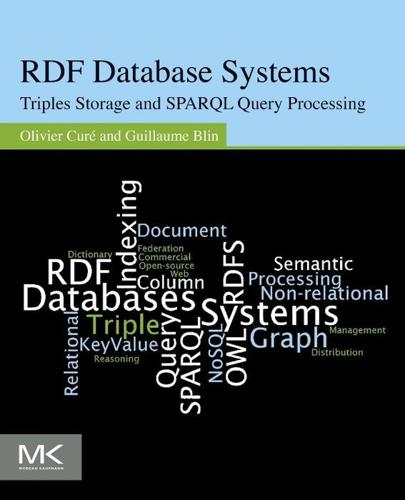
RDF Database Systems: Triples Storage and SPARQL Query Processing
by
Olivier Cure
and
Guillaume Blin
Published 10 Dec 2014
See Scalable high-performance, robust, and distributed (SHARD) Shared-disk architecture, 21 Shared-memory architecture, 21 Shared-nothing architecture, 21 SHER. See Scalable highly expressive reasoner (SHER) SIB. See Social Intelligence BenchMark (SIB) Sideways information passing (SIP), 162 SimpleDB, 34 Simple knowledge organization system (SKOS), 6, 70 SIP. See Sideways information passing (SIP) SKOS. See Simple knowledge organization system (SKOS) Social Intelligence BenchMark (SIB), 78 Solid-state drives (SSDs), 9 Spanner system, 39 SPARQL, 53 endpoint, 170 extensions, 223 protocol and RDF Query, 52 queries, 56, 124 query language, 74, 143 variable graph, 153 SPARQL 1.1, 58 graph management, 59 graph update, 58 SPARQL-to-SQL query rewriting solution, 136 transformation, 107 SPJ.
…
project=SP2B) includes a benchmark built around DBLP computer science bibliography scenario. The data is generated in N-triples format. The 12 provided queries include filtering requirements (inequality test) and an ASK query. The data generated includes blank nodes, containers, and long URIs. No use of inference is necessary. The Social Intelligence BenchMark (SIB; http://www.w3.org/wiki/Social_ Network_Intelligence_BenchMark) includes a benchmark built around popular social networks.The data generator is generating a huge volume of data (all data associated with one person, having on average 30 friends and a few hundred pictures and posts, is evaluated at 1 MB).
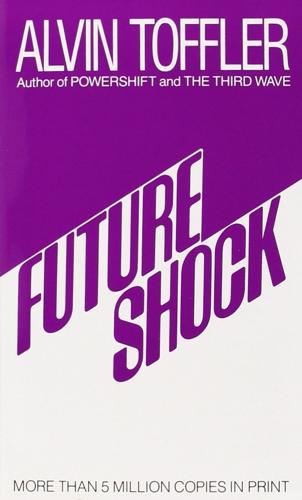
Future Shock
by
Alvin Toffler
Published 1 Jun 1984
We are witnessing, says Gross, a "widespread rebellion against what has been called the 'economic philistinism' of the United States government's present statistical establishment." This revolt has attracted vigorous support from a small group of politicians and government officials who recognize our desperate need for a post-technocratic social intelligence system. These include Daniel P. Moynihan, a key White House adviser; Senators Walter Mondale of Minnesota and Fred Harris of Oklahoma; and several former Cabinet officers. In the near future, we can expect the same revolt to break out in other world capitals as well, once again drawing a line between technocrats and post-technocrats.
…
A sensitive system of indicators geared to measuring the achievement of social and cultural goals, and integrated with economic indicators, is part of the technical equipment that any society needs before it can successfully reach the next stage of eco-technological development. It is an absolute precondition for post-technocratic planning and change management. This humanization of planning, moreover, must be reflected in our political structures as well. To connect the super-industrial social intelligence system with the decisional centers of society, we must institutionalize a concern for the quality of life. Thus Bertram Gross and others in the social indicators movement have proposed the creation of a Council of Social Advisers to the President. Such a Council, as they see it, would be modeled after the already existing Council of Economic Advisers and would perform parallel functions in the social field.
…
The designation of agencies to watch over the indicators of change in the quality of life would carry us a long way toward that humanization of the planner which is the essential first stage of the strategy of social futurism. * Proponents differ as to whether the Council of Social Advisers ought to be organizationally independent or become a part of a larger Council of Economic and Social Advisers. All sides agree, however, on the need for integrating economic and social intelligence. TIME HORIZONS Technocrats suffer from myopia. Their instinct is to think about immediate returns, immediate consequences. They are premature members of the now generation. If a region needs electricity, they reach for a power plant. The fact that such a plant might sharply alter labor patterns, that within a decade it might throw men out of work, force large-scale retraining of workers, and swell the social welfare costs of a nearby city—such considerations are too remote in time to concern them.
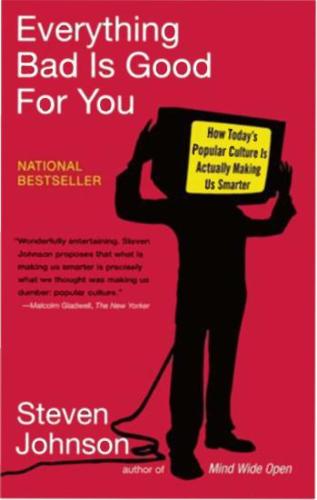
Everything Bad Is Good for You: How Popular Culture Is Making Us Smarter
by
Steven Johnson
Published 5 Apr 2006
In the gameworld, you're dealing with real people through the mediating channels of 3 D graphics and text chat; real ity shows drop flesh-and blood people into the same shared space for months at a E V E R Y T H I N G B A D I S G O O D F O R Yo u 95 time, often limiting their contact with the outside world. Reality program participants are forced to engage face-to face with their comrades, and that engagement invariably taps their social intelligence in ways that video games can only dream of. And that social chess becomes part of the audience's experience as well . This, of course, was the ap peal of that pioneering reality show, MTV's The Real World, which didn't need contests and fabulous prizes to lure its viewers; it j ust needed a group of people thrust together in a new space and forced to interact with one another.
…
But the rules and the " right answers " have increased in complexity since Herbert Stempel took his famous dive . " Playing" a reality show requires you to both adapt to an ever-cha nging rulebook, and scheme your way through a minefield of personal relationships. To succeed in a show like The Apprentice or Survivor, you need social intelligence, not j ust a mastery of trivia. When we watch these shows, the part of our brain that monitors the emotional lives of the people around us-the part that tracks subtle shifts in in tonation and gesture and facial expression-scrutinizes the action on the screen , looking for clues. We trust certain characters impl icitly, and vote others off the island in a hea rtbeat.
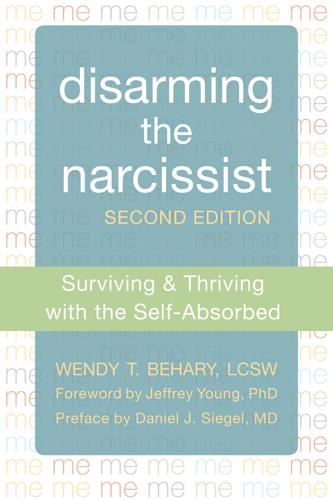
Disarming the Narcissist: Surviving and Thriving With the Self-Absorbed
by
Wendy T. Behary
Published 1 Jul 2013
It can be differentiated from sympathy in that it is not simply feeling sorrow for another’s pain, it is the art of tuning in to it, allowing it to resonate within your own body and mind. It is one of the most powerfully connective qualities of a healthy relationship, and its absence can be devastating. Daniel Goleman, in his book Social Intelligence (2006), suggests that someone who doesn’t empathize with others can treat them as objects rather than as people. Now You See Him, Now You Don’t The narcissist’s lack of empathy can manifest in different ways. For example, if you are finally able to wedge a word into a conversation with a narcissist, asking him to tune in to your world, he’s likely to suddenly become the amazing Houdini, disappearing before your very eyes.
…
Spinhoven, W. van Tilburg, C. Dirksen, T. van Asselt, I. Kremers, M. Nadort, and A. Arntz. 2006. “Outpatient Psychotherapy for Borderline Personality Disorder: Randomized Trial of Schema-Focused Therapy vs. Transference-Focused Therapy.” Archives of General Psychiatry 63(6):649–658. Goleman, D. 2006. Social Intelligence: The New Science of Human Relationships. New York: Bantam. Gottman, J., and N. Silver. 2004. The Seven Principles for Making Marriage Work. New York: Orion. Hotchkiss, S. 2003. Why Is It Always About You? The Seven Deadly Sins of Narcissism. New York: Free Press. Iacoboni, M. 2009. Mirroring People: The New Science of How We Connect with Others.
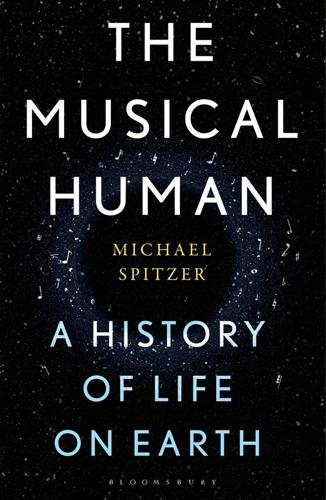
The Musical Human: A History of Life on Earth
by
Michael Spitzer
Published 31 Mar 2021
But their vocal communication is impoverished compared with birds and whales. The cosmic joke is that the musical human evolved not from birds or whales but from tone-deaf apes, via our last common ancestor (or ‘missing link’) 6 or 7 million years ago. Nevertheless, evolution is cunningly circuitous, and what we did inherit along the ape line was social intelligence. Being able to read another’s mind is basic to dancing, singing and playing together. The rupture between the ape line and the more musical branches of the phylogenetic tree will be a puzzle for us, as will the suspicion that the musical human has been faking it all along. This chapter, then, will lay out some of the animal abilities that the musical human will put together.
…
But while it may not be music, it is certainly musical. The musicality of primate communication will be a crucial thread in the next chapter. For now, we’ll draw a line under ape calls and consider the weird fact that apes’ main contribution to human music was not sonic at all. What the musical human learned from apes was social intelligence, and this intelligence was visual rather than acoustic. Two reports featuring a chimp called Ayumu clearly show where his strengths lie. Frans de Waal, the leading authority on ape behaviour, tells a story of how Ayumu put human memory to shame.62 Ayumu lives with other chimps at the Primate Research Institute of Kyoto University, and is given free run of several cubicles equipped with computers: Trained on a touchscreen, he can recall a series of numbers from 1 through 9 and tap them in the right order, even though the numbers appear randomly on the screen and [are] replaced by white squares as soon as he starts tapping […] Trying the task myself, I was unable to keep track of more than five numbers after staring at the screen for many seconds, while Ayumu can do the same after seeing the numbers for just 210 milliseconds.
…
It all depends on whether, in de Waal’s phrase, we are smart enough to understand how smart animals are. Putting It All Together The musical human is the great synthesiser. We have the rhythm of insects. We have the melody and vocal learning of birds. We share a sense of musical tradition with whales. From apes we inherited social intelligence, if not music. This is why Stefan Koelsch writes that ‘music with metre and scales, sung or played in groups, is a uniquely human phenomenon’.71 We are exceptional. Koelsch is correct that music became fully fledged only with the advent of sapiens, on the back of the acquisition of symbolic language and technology.

In Our Own Image: Savior or Destroyer? The History and Future of Artificial Intelligence
by
George Zarkadakis
Published 7 Mar 2016
English psychologist Nicholas Humphrey15 elaborated further on the evolutionary rationale for theory of mind. He argued that when individuals live within a group and enter into a diverse set of cooperative, competitive and mutualistic relationships, individuals with the ability to predict the behaviour of others will achieve the greatest reproductive success. He coined the term ‘social intelligence’ to describe the mental toolbox that is essential to maintain social cohesion. Therefore, there is selective pressure to have the ability to ‘read’ other people’s minds. Early humans were dependent on retaining harmonious social relationships within their group for their survival. This involved much manipulation of other people’s emotions, fears and wants.
…
Today, six million years after we parted ways with the chimpanzees, the instinctive need to belong to a group dominates our personal and social life. Social rejection hurts: exile is a terrible punishment; separation from family and friends a personal tragedy. Our high-level consciousness, or general intelligence, seems to have evolved as part of social intelligence. But what did it mean to be a human before the advent of high-level consciousness? How did it ‘feel’ to be H. habilis? What level of consciousness did those early humans experience? What was it like to think, or make sense of the world, with only a specialised intelligence? Daniel Dennett, the American mind philosopher, has described the consciousness of early humans as being akin to a state of ‘rolling consciousness with swift memory loss’.16 According to him, for H. habilis consciousness would have been somewhat like the state we experience when driving a car while engaged in conversation with a passenger.
…
A. 61–2, 68 Hofstadter, Douglas 186–8 Hohlenstein Stadel lion-man statuette 3–5, 19–20 holistic approach to knowledge 174–5 holistic scientific methods 41–2 Holocene period 10 Holy Scripture, authority of 113–14 homeostasis 173 Homo erectus 6–7, 8, 10 Homo habilis 6, 12 Homo heidelbergensis 7 Homo sapiens archaic species 7, 8, 10 emergence of modern humans 8 Homo neanderthalensis (Neanderthals) 4, 7–8, 9–10 Homo sapiens sapiens 9–10 human ancestors aesthetic practices 9 archaic Homo sapiens 7, 8, 10 arrival in Europe 3–5 australopithecines 5, 6, 22 changes in the Upper Palaeolithic Age 9–10, 11 common ancestor with chimpanzees 5 emergence of art in Europe 3–5 emergence of modern humans 8 exodus from Africa 3–4, 6–7, 8–9 Homo erectus 6–7, 8, 10 Homo habilis 6, 12 Homo heidelbergensis 7 Homo sapiens 7, 8, 10 Homo sapiens sapiens 9–10 in Africa 5–7 Neanderthals (Homo neanderthalensis) 4, 7–8, 9–10 Human Brain Project (HBP) xiv–xvi, 164–5, 287 see also brain (human) human culture, approaches to understanding 74–9 human replicas, disturbing feelings caused by 66–73 humanity becoming like machines (cyborgs) 79–85 future of 304–17 Hume, David 139–40 humors theory of life 31–4 humour, and theory of mind 54 Humphrey, Nicholas 11 hunter-gatherer view of the natural world 20–2 hydraulic and pneumatic automata 32–6 IBM (International Business Machines) 230, 263, 264 Ice Age Europe 4, 10, 21–2 iconoclasm 67 idealism versus materialism 92–4 identity theory 144–5 imagined world of the spirits 22–3, 25, 27 inanimate objects, projection of theory of mind 15–18 Incompleteness Theorem (Gödel) 180, 186, 206–9, 211–16 inductive logic 196, 197 information disembodiment of 146–52 significance of context 151–2 the mind as 123–5 information age 232–4 information theory 147–52 Ingold, Tim 20 intelligence, definitions of 48–9, 52 intelligent machines as objects of love 48–59 Internet brain metaphor 43 collection and manipulation of users’ data 250–3 origins of 238 potential for sentience 214–15 Internet of things 251–3 intuition 200, 211 Iron Man (film) 82 Ishiguro, Hiroshi 72 Islam 102 Jacquard loom 225 James, William 162 Johnson, Samuel 140 Kasparov, Garry 263 Kauffman, Stuart 295 Kempelen, Wolfgang von 37 Kline, Nathan 79 Koch, Christof 167–8 Krauss, Lawrence 244–5 Krugman, Paul 269 Kubrick, Stanley 56, 257 Kuhn, Thomas 29, 75 Kurzweil, Ray 126, 270–1 Lang, Fritz 50 language and genesis of the modern mind 13–15 and human relationship with objects 15–18 evolution of 13–15 naming of objects 16–17 LeCun, Yann 255 Leibniz, Gottfried Wilhelm 116–17, 218–20 Lettvin, Jerry 293 liberty, end of 313–17 life algorithms of 292–6 origins of 181–3 Life in the Bush of Ghosts (Tutuola) 19 linguistics, descriptions of reality 75 lion-man statuette of Stadel cave 3–5, 19–20 Llull, Ramon (Doctor Illuminatus) 218 Locke, John 139 locked-in syndrome 307 logic x–xi, 195–202 logical substitution method 180, 183, 186 Lokapannatti (early Buddhist story) 34 London forces 107 love conscious artefacts as objects of 48–59 human need for 55–6 human relationships with androids 53–9 Lovelace, Ada 62, 226–7, 228 Luddites 268 Machine Intelligence Research Institute 58–9 machine metaphor for life 36–8 Magdalenian period 21 magnetoencephalography (MEG) 159–60, 161 Maillardet, Henri 218 Marconi, Guglielmo 239 Maria (robot in Metropolis) 50, 51 Marlowe, Christopher 63 Mars colonisation 291 Marx, Groucho 205 materialism versus idealism 92–4 mathematical dematerialisation view 92 mathematical foundations of the universe 103–6 mathematical reflexivity 186–7 mathematics 31 formal logical systems 200–11 views on the nature of 136 Maturana, Humberto 294 McCarthy, John 256, 307 McCorduck, Pamela 45, 67 McCulloch, Warren S. 36, 175, 176–8, 256, 293 Mead, Margaret 175 mechanical metaphor for life 36–8 mechanical Turk 37 medicine, development of 31–2 meditation 157 memristors 286–7 Menabrea, Luigi 226, 227 Mesmer, Franz Anton 40 mesmerism 40 Mesopotamian civilisations 30 metacognition 184 metamathematics 202, 205, 207 metaphors confusing with the actual 44–5 for life and the mind 28–47 in general-purpose language 75 misunderstanding caused by 308–13 Metropolis (1927 film) 50, 51 Middle Palaeolithic 6 Miller, George 154, 155 Milton, John 1 mind altered states 110, 111 as pure information 123–5 aspects of 85–7 debate over the nature of 91–4 disembodiment of 42 empirical approach 143–6 quantum hypothesis 106–9 scientific theory of 152–3 search for a definition 189–91 self-awareness 86–7 separate from the body 110–15 view of Aristotole 137–8 mind-body problem 32, 114–19, 129–31 Minsky, Marvin 178, 256 modern mind big bang of 10, 12–15 birth of 10–15 impacts of the evolution of language 13–15 monads 117, 119 monism versus dualism 92–3 Moore’s Law 244–5, 263, 270–1, 287 moral decision-making 277–8 Moravec paradox 275–6 Morris, Ian 222 Morse, Samuel 42 mud metaphor for life 29–31, 45 My Life in the Bush of Ghosts (music album) 19 Nabokov, Vladimir 167 Nagel, Thomas 120, 121 Nariokotome boy 7 narratives 18–27, 75 see also metaphor Neanderthals (Homo neanderthalensis) 4, 7–8, 9–10 Negroponte, Nicholas 243–4 neopositivism 141 neural machines 282–7 neural networks theory 36 neural synapses, functioning of 117–19 neuristors 286–7 neurodegenerative diseases xiii–xiv, 163–4 Neuromancer (Gibson) 36 neuromorphic computer archtectures 286–7 neurons, McCulloch and Pitts model 177–8 neuroscience 158, 306–8 Newton, Isaac 38, 103 Nike’s Fuel Band 81 noetic machines (Darwins) 284 nootropic drugs 81 Nouvelle AI concept 288 Offray de La Mettrie, Julien 37 Ogawa, Seiji 158–9 Omo industrial complex 6 On the Origin of Species (Darwin) 289–90 ‘ontogeny recapitulates phylogeny’ concept 10 Otlet, Paul 239–40 out-of-body experiences 110–11 Ovid 49, 64 Paley, William 289 panpsychism 92, 117, 252 paradigm shifts 75 in the concept of life 29–47 Pascal, Blaise 219–20 Penrose, Roger 106–9, 117, 211–12, 214 Pert, Candace B. 170 physics, gaps in the Standard Model 105 Piketty, Thomas 267, 269 pineal gland 115–16 Pinker, Steven 13, 275 Pinocchio story 56 Pitts, Walter 36, 177–8, 256, 293 Plato 134, 143, 152, 176, 189, 305 central role of mathematics 103–6 idea of reality 78, 83 influence of 95–106 notion of philosopher-kings 98–9 separation of body and mind 112 The Republic 97–101, 309, 310 theory of forms 99–101, 104, 106 Platonism 101–2, 135–7, 139, 142, 146, 147, 182, 189, 190, 242–3, 296 Pleistocene epoch 7 Poe, Edgar Allan 79 Polidori, John William 60, 62 Popov, Alexander 239 Popper, Karl 98 Porter, Rodney 282 posthuman existence 147 postmodernism 208 post-structuralist philosophers 75–9 precautionary principle 64–5 predicate logic 198–200, 206 Principia Mathematica 205–6, 207 Prometheus 29–30, 63–4 psychoanalysis 50 psychons 118, 119 Pygmalion narrative 49–52 qualia of consciousness 120–3, 157 Quantified Self movement 81–2 quantum hypothesis for consciousness 106–9 quantum tunnelling 118–19 Ramachandran, Vilayanur 70 rationalism 116 Reagan, President Ronald 237 reality, impact of acquisition of language 15–18 reductionism 41–2, 104–5, 121, 184 reflexivity 183–4, 186–9 religions condemnation of human replicas 67 seeds of 22–3, 25–6 Renaissance 34, 103, 139, 218 RepRap machines 290 res cogitans (mental substance) 38, 113–14 res extensa (corporeal substance) 38, 113–14 resurrection beliefs 126–7 RoboCop 80 robot swarm experiments 287–8 robots human attitudes towards 50–1 rebellion against humans 53, 57–9 self-replication 289–92 see also androids Rochester, Nathaniel 256 Romans 31 Rubenstein, Michael 287–8, 291 Russell, Bertrand viii, 92, 198, 204, 205–6, 207, 208, 215 Russell, Stuart 270 Sagan, Carl 133 Saygin, Ayse Pinar 69 science as a cultural product 75–9 influence of Aristotle 134–8 influence of Descartes 113–19 influence of Plato see Plato scientific method 102–5, 121 scientific paradigms 75 scientific reasoning, as unnatural to us 133–4, 137 scientific theory, definition 166, 196 Scott, Ridley 53 Searle, John, Chinese Room experiment 52, 71 Second Commandment (Bible) 67 second machine age, impact of AI 266–9 Second World War 234–6 self-awareness 16, 86–7, 157, 215–16, 273–5 self-driving vehicles 263–4 self-organisation in cybernetic systems 273–4 in living things 292 self-referencing 186–9, 215–16 see also reflexivity self-referencing paradoxes 204–6 self-replicating machines/systems 179–82, 289–92 sensorimotor skills, deficiency in AI 275–6 servers, dependence on 245–9 Shannon, Claude 147–52, 154, 176, 230–1, 256 Shaw, George Bernard Shaw 49–50 Shelley, Mary, Frankenstein 40, 60–5, 165 Shelley, Percy Bysshe 60, 62, 63–4 Shickard, Wilhem 219 Silvester II, Pope 35 Simmons, Dan 160 simulated universe concept 127–9 smart drugs 81 Snow, C. P. xv–xvi Snowden, Edward 124–5, 250–1 social intelligence 11–12 social media 250 social networks 83–4, 124–5 social origins of language 13–15 Socrates 96–7, 99–100, 111–12 speech and language, genetic link 13–15 Spielberg, Steven 56–7 spirit of life (élan vital) 40–1 split-brain patients 23–4 Stanhope, Lord 220 Star Trek 54–5, 57, 80, 82, 278 steam engine 31 Stoker, Bram 62 stone tools see tool-making stories see narratives string theory 92, 105 Strong Anthropic Principle 127–9 structuralism 74–5 subjective experience 120–3, 157–8 swarm intelligence 287–8 syllogisms 195–6 symbolic logic, limitations of 275–6 systemic scientific method 41–2 talking head, stories about 35–6, 58 Talmud 45 Talmy, Leonard 15 Talos (robotic giant of Crete) 33 Target (retail company) 250 technology, as a cultural product 75–9 Tegmark, Max 270 Teilhard de Chardin, Pierre 126, 127, 245 telecommunications development 238–43 telegraph metaphor for the brain 42–3 Terminator films 57, 66, 83 The Dice Man (1971 novel) 213 The Invincible (Stanisl´aw Lem) 288, 289 The Matrix films 57, 66, 76, 77, 78, 82 The Six Million Dollar Man (television series) 79–80, 83 The Tempest (Shakespeare) xvii The Time Machine (H.

The Equality Machine: Harnessing Digital Technology for a Brighter, More Inclusive Future
by
Orly Lobel
Published 17 Oct 2022
With no additional information, Knack’s program gave Shell a highly accurate mechanism with which to accurately rank idea generators. The rankings were based on identified factors that distinguish the company’s known top creatives, such as their tendency to allow their minds to wander, their “goal-orientation fluency,” their implicit learning and task-switching abilities, and their conscientiousness and social intelligence. Hans Haringa, a Shell executive, called this recruitment system a paradigm shift.29 In another such game, Firefly Freedom, designed by Arctic Shores, job applicants enter a magical forest world where they must catch fireflies to provide light for their family during winter. Players catch fireflies using a net and keep them in a jar, firing pieces of fruit to release them.
…
In a culture in which astonishing numbers of people undergo cosmetic surgery, with many likely eager to employ genetic enhancements as soon as they become available, we shouldn’t be surprised that the generation of robots coming on the market represents a certain ideal—that of human perfection—however we privately and collectively fantasize what perfection might mean. Hanson Robotics is an engineering and robotics firm based in Hong Kong that, according to its website, is “dedicated to creating socially intelligent machines that enrich the quality of our lives.” According to the company’s website, the “Sophia Intelligence Collective (SIC)” is the collaboration between “AI scientists, philosophers, artists, writers, and psychologists, from diverse cultures, ethnicities, gender orientations, working together toward the ideal of humanizing AI for the greater good.”
…
Bot Girl Cooks and Bot Boy Kills It is no coincidence that the leading robots who do not fall into gender and racial stereotypes were created by women scientists. When Breazeal created Kismet (named for the Turkish word for fate) as a cartoonish social robot, she wanted it to encourage a caregiver to interact and care for him, with the goal of developing people’s social intelligence. She saw the design of Kismet with an infant-like, genderless appearance as key in evoking nurturing responses by humans toward him. Designing robots as pets (“animaloids”) or cute monsters is one way to approach the social dilemma of gender-neutral and gender-ambiguous robots. But the reality is that most robots being designed to integrate into our intimate home and family lives are gendered humanoids.

Designing Your Life: How to Build a Well-Lived, Joyful Life
by
Bill Burnett
and
Dave Evans
Published 12 Sep 2016
Mayer, “Emotional Intelligence,” Imagination, Cognition and Personality 9 (1990): 185−211. 2. Dan Goleman is the author of Emotional Intelligence (New York: Bantam, 1995) and the follow-up book Social Intelligence: The New Science of Human Relationships (New York: Bantam, 2006) from which we draw the notion of the “wisdom of the emotions.” For an informative and interesting summary of these ideas go to Dan’s Social Intelligence Talks at Google at https://www.youtube.com/watch?v=-hoo_dIOP8k. 3. For more on Dan Gilbert’s ideas on “synthesizing happiness” watch his TED Talk, “The Surprising Science of Happiness,” http://www.ted.com/talks/dan_gilbert_asks_why_are_we_happy and read Stumbling on Happiness (New York: Knopf, 2006). 4.
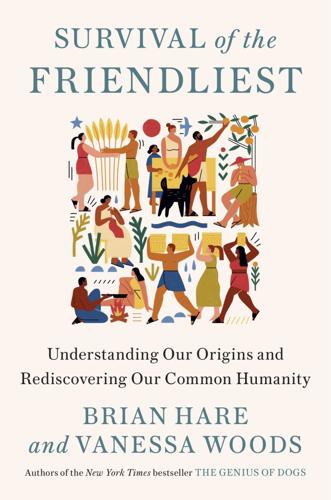
Survival of the Friendliest: Understanding Our Origins and Rediscovering Our Common Humanity
by
Brian Hare
and
Vanessa Woods
Published 13 Jul 2020
Unconstrained by fear, foxes could use social skills, such as cooperative communication, more flexibly. Problems that were previously confronted alone became social problems that were easily solved with cooperative partners. Cooperative communication had been enhanced, but contrary to what most hypotheses of cognitive evolution predicted, it had been an accident. This kind of social intelligence is just another side effect of fearfulness being replaced by friendliness.19 The fox work provided strong evidence that the basic skill behind the cooperative communication we observed in dogs was the product of domestication. We had also discovered that this skill we found in dogs was not simply the product of an individual dog interacting with humans for hundreds, if not thousands, of hours before they were adults.
…
Our ability to understand others at a young age also allows us to inherit knowledge acquired over generations, giving us a unique survival advantage. BABY BALLOONS In order to mark the moment that we domesticated ourselves, we need to identify when we developed this unparalleled social intelligence. What makes this possible are fossilized Homo sapiens skulls that hint at brain development. There are two relevant physical markers for our brain development. The first is the giant hole we have in our head when we are born. Unlike most mammals who are born with fully developed skulls, Homo sapiens and Neanderthal babies’ skull bones are unconnected so they can squeeze through the birth canal.
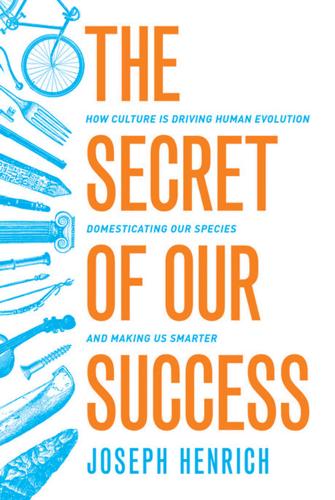
The Secret of Our Success: How Culture Is Driving Human Evolution, Domesticating Our Species, and Making Us Smarter
by
Joseph Henrich
Published 27 Oct 2015
Here the idea is that natural selection made us highly social and cooperative, and then by working together we conquered the globe.10 Thus, the three common explanations for our species’ ecological success are (1) generalized intelligence or mental processing power, (2) specialized mental abilities evolved for survival in the hunter-gatherer environments of our evolutionary past, and/or (3) cooperative instincts or social intelligence that permit high levels of cooperation. All of these explanatory efforts are elements in building a more complete understanding of human nature. However, as I’ll show, none of these approaches can explain our ecological dominance or our species’ uniqueness without first recognizing the intense reliance we have on a large body of locally adaptive, culturally transmitted information that no single individual, or even group, is smart enough to figure out in a lifetime.
…
Based on this evidence, it would seem hard to argue that our species’ ecological dominance can be readily traced to our dazzling working memory or raw information processing speeds. The True Machiavellians Now, let’s consider strategic conflict. We are a highly social species, so perhaps our global dominance has its origins in our social intelligence. One leading view on which selection pressures drove the expansion of human brains and created our fancy mental abilities is called the Machiavellian intelligence hypothesis. This view emphasizes that our brains and intelligence are specialized for dealing with other people and argues that our brain size and intelligence arose from an “arms race” in which individuals competed in an ever-escalating battle of wits to strategically manipulate, trick, exploit, and deceive each other.
…
The People of the Polar North: A Record. London: K. Paul, Trench, Trübner & Co. Reader, S. M., Y. Hager, and K. N. Laland. 2011. “The evolution of primate general and cultural intelligence.” Philosophical Transactions of the Royal Society B: Biological Sciences 366 (1567):1017–1027. Reader, S. M., and K. N. Laland. 2002. “Social intelligence, innovation, and enhanced brain size in primates.” Proceedings of the National Academy of Sciences, USA 99 (7):4436–4441. Real, L. A. 1991. “Animal choice behavior and the evolution of cognitive architecture.” Science 253:980–86. Reali, F., and M. H. Christiansen. 2009. “Sequential learning and the interaction between biological and linguistic adaptation in language evolution.”

Behave: The Biology of Humans at Our Best and Worst
by
Robert M. Sapolsky
Published 1 May 2017
The point of the previous chapter was the brain’s plasticity—new synapses form, new neurons are born, circuits rewire, brain regions expand or contract—we learn, change, adapt. This is nowhere more important than in the frontal cortex. An oft-repeated fact about adolescents is how “emotional intelligence” and “social intelligence” predict adult success and happiness better than do IQ or SAT scores.33 It’s all about social memory, emotional perspective taking, impulse control, empathy, ability to work with others, self-regulation. There is a parallel in other primates, with their big, slowly maturing frontal cortices.
…
The picture of the bullies is no surprise either, starting with their disproportionately coming from families of single moms or younger parents with poor education and employment prospects. There are generally two profiles of the kids themselves—the more typical is an anxious, isolated kid with poor social skills, who bullies out of frustration and to achieve acceptance. Such kids typically mature out of bullying. The second profile is the confident, unempathic, socially intelligent kid with an imperturbable sympathetic nervous system; this is the future sociopath. There is an additional striking finding. You want to see a kid who’s really likely to be a mess as an adult? Find someone who both bullies and is bullied, who terrorizes the weaker at school and returns home to be terrorized by someone stronger.43 Of the three categories (bully, bullied, bully/bullied), they’re most likely to have prior psychiatric problems, poor school performance, and poor emotional adjustment.
…
No gene or handful of genes that we are aware of will tell us much about that. The Neuropeptides Oxytocin and Vasopressin Time for a quick recap from chapter 4. Oxytocin and vasopressin are involved in prosociality, ranging from parent/offspring bonds to monogamous bonds to trust, empathy, generosity, and social intelligence. Recall the caveats: (a) sometimes these neuropeptides are more about sociality than prosociality (in other words, boosting social information gathering, rather than acting prosocially with that information); (b) they most consistently boost prosociality in people who already lean in that direction (e.g., making generous people more generous, while having no effect on ungenerous people); and (c) the prosocial effects are within groups, and these neuropeptides can make people crappier to outsiders—more xenophobic and preemptively aggressive.
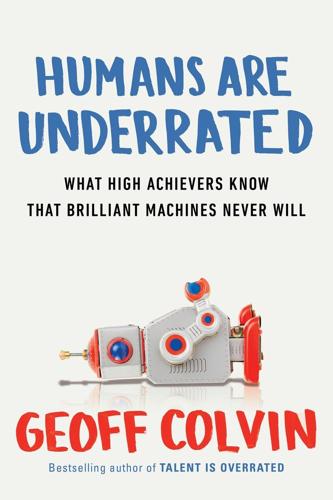
Humans Are Underrated: What High Achievers Know That Brilliant Machines Never Will
by
Geoff Colvin
Published 3 Aug 2015
They all do those same things. In this study of groups, performance “depended upon how good the group members were at harvesting ideas from all of the participants and eliciting reactions to each new one,” he observed. It made sense that the groups with the best social skills would be most successful because what the “socially intelligent participants in our collective intelligence experiment may have been doing was enabling better idea flow by guiding the group toward briefer presentations of more ideas, encouraging responses, and ensuring that everyone contributed equally.” The operational value of social skills was explained.
…
Both boys and girls receive testosterone as they develop before birth—boys much more than girls, obviously, though exact amounts vary within sexes—and we all produce it through our lives, males producing more than females. Much previous research had shown that testosterone affects social behavior in a big way. In children of both sexes, higher levels of fetal testosterone mean not only less eye contact at age one, but also poorer social understanding in general at age four and poorer social intelligence, as measured by the RME and other tests, at ages six to eight. That is, in the first way testosterone affects the brain, organizing it before birth, it seems to preprogram the brain for weaker social abilities. The researchers who gave women small doses of testosterone—the effect of which is only temporary—were investigating the second way it affects the brain, activating various processes from moment to moment.

Rebel Ideas: The Power of Diverse Thinking
by
Matthew Syed
Published 9 Sep 2019
It also shows that the most successful givers are strategic, seeking out meaningful diversity, and cutting off collaborations if they are being exploited. This enables them to benefit from the upside of successful teamwork, while reducing the downside of partners who free-ride. As one researcher put it: ‘the giver attitude is a powerful asset when allied to social intelligence’. This willingness to give, to collaborate, has longer-term effects, too. You can see this in an experiment led by Professor Daniel Levin of Rutgers Business School when he asked more than two hundred executives to reactivate contacts that had been dormant for at least three years. The subjects asked two of these contacts for advice on an ongoing project at work.
…
Teams where members spoke for similar amounts of time performed better than those dominated by one or two voices – researchers call this ‘conversational turn-taking’. The second factor was social perceptiveness: teams performed better when populated by people who could read each other’s moods and meanings. These tended to have more women, who, on average, have higher levels of social intelligence. These results are compelling. When one person is dominating, the insights of other team members are crowded out. Social perceptiveness also contributes to the flow of information by ensuring that perspectives are not just expressed, but understood. It sometimes takes emotional intelligence not only to hear what someone is saying but also to grasp what they mean.
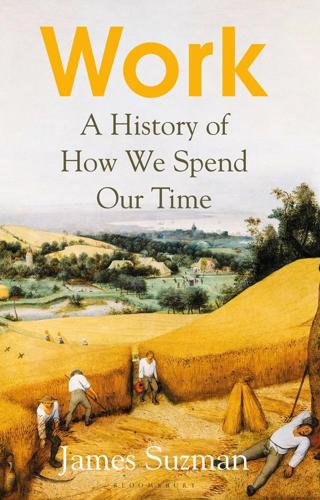
Work: A History of How We Spend Our Time
by
James Suzman
Published 2 Sep 2020
The skills required to infer complex meaning from sandy tracks are not only indicative of the kind of purposefulness we associate now mainly with humans, but also the cognitive traits necessary to use grammar and syntax in a more sophisticated manner than Koko did. In other words, hunting was almost certainly among the selective pressures that encouraged the development of our ancestors’ ability to develop complex language. Equally importantly, hunting in this way may have played an important role in shaping their sociality and social intelligence as well as building up the perseverance, patience and sheer determination that still characterises our approach to work. Other skills that leave no obvious archaeological traces must also have played a role in increasing the efficiency of our ancestors in their food quest. And arguably the most important of all these skills was the one that not only helped provide the nutrition necessary to feed their big brains but that also kick-started the most important and far-reaching energy revolution in human history: mastery of fire. 3 Tools and Skills 4 Fire’s Other Gifts For the Ju/’hoansi fire is the great transformer.
…
Among these were those that depended on the slippery arts of persuasion, like public relations; those that demanded a high degree of empathy, like psychiatry; those that required creativity, like fashion design; and those that demanded a high degree of manual or finger dexterity, like surgeons. But any reassurances they offered were only tentative. Considerable investment is being poured into creating machines with human-like or better levels of dexterity, as well as others that are capable of mimicking social intelligence and creativity. As a result, what appeared to be impossibly distant milestones in automation just a couple of years ago are now looming large. In 2017, for instance, Xiaoyi, a robot developed by Tsinghua University in Beijing, in collaboration with a state-owned company, sailed through China’s National Medical Licensing Examination, and Google’s AlphaGO thrashed the world’s best human Go players.
…
It was also possibly boredom that inspired our ancestors’ interest in fire and their bored fidgeting hands that discovered that rubbing sticks together might generate enough heat to ignite a small fire. But any reassurances they offered were only tentative. Considerable investment is being poured into creating machines with human-like or better levels of dexterity, as well as others that are capable of mimicking social intelligence and creativity. As a result, what appeared to be impossibly distant milestones in automation just a couple of years ago are now looming large. In 2017, for instance, Xiaoyi, a robot developed by Tsinghua University in Beijing, in collaboration with a state-owned company, sailed through China’s National Medical Licensing Examination, and Google’s AlphaGO thrashed the world’s best human Go players.
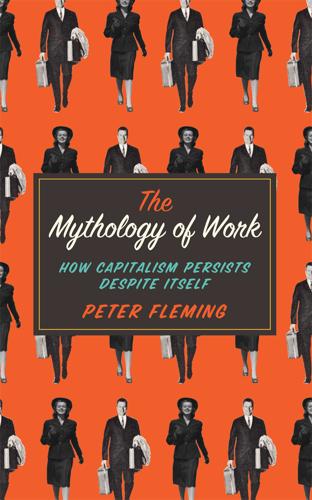
Mythology of Work: How Capitalism Persists Despite Itself
by
Peter Fleming
Published 14 Jun 2015
With managers speaking out against the unsustainable force driving the injunction to produce, it is easy to conclude that capitalism itself is drawing upon an anti-work thematic, acknowledging parallels between managers’ own predicament and the conditions they expect from those they manage. However, this conclusion risks approaching the issue from the wrong angle. That the extra and ‘free’ work common is at the centre of the late-capitalist mode of production is without question. We work beyond the stipulations of our contracts, using our social intelligence to bypass the counterproductive rules of domination, even after hours, and avoid the impossible principles of neoliberal reason. The Italian autonomist movement has taught us much about this. The common is the working class’s shock absorber, cushioning (and facilitating) entire lives that have been put to work.
…
I think this is why we see more self-sufficient ideals entering the lexicon of management and HRM in the late 1990s, including distributive leadership, self-managing teams, flexi-work and the portfolio career. The message is clear. Rather than exhorting employees to display love towards the firm, which often resulted in satirized displays of deference, the corporation aims instead to tap the social intelligence already existing (including negative aptitudes such as fear, discussed in the last chapter). Even Tom Peters, the erstwhile guru of ‘strong cultures’, changed his mind about the efficacy of indoctrination. Instead he favoured ‘liberation management’, whereby the independent qualities of workers were tapped and utilized (Peters, 2003).
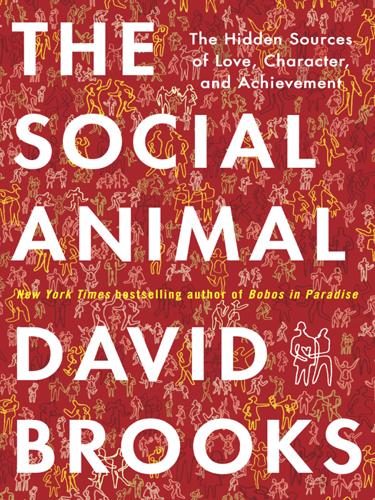
The Social Animal: The Hidden Sources of Love, Character, and Achievement
by
David Brooks
Published 8 Mar 2011
They are much more likely to murder than women, and much, much more likely to abandon their children. There are more lemons in the male population than in the female population, and women have found that it pays to trade off a few points in the first-impression department in exchange for reliability and social intelligence down the road. So while Rob was looking at cleavage, Julia was looking for signs of trustworthiness. She didn’t need to do this consciously—thousands of years of genetics and culture had honed her trusting sensor. Marion Eals and Irwin Silverman of York University have conducted studies that suggest women are on average 60 to 70 percent more proficient than men at remembering details from a scene and the locations of objects placed in a room.
…
This exchange is based on a conversation the author witnessed between Hitchens and Salman Rushdie, two masters of these kinds of games. 2 Male babies make less Matt Ridley, The Agile Gene: How Nature Turns on Nurture (New York: Perennial, 2004), 59. 3 a person’s emotional state Daniel Goleman, Social Intelligence: The New Science of Human Relationships (New York: Bantam Dell, 2006) 139. 4 verbal memory and verbal fluency John Medina, Brain Rules: 12 Principles for Surviving and Thriving at Work, Home, and School (Seattle, WA: Pear Press, 2008), 262. 5 They don’t necessarily talk more Michael S. Gazzaniga, Human: The Science Behind What Makes Us Human (New York: Harper Perennial, 2008), 96. 6 Varieties of Capitalism Peter A.
…
Gilbert Sale and Suzanne Sale (New York: Penguin Books, 2004), 45. 7 Norepinephrine Fisher, 53. 8 Phenylethylamine Ayala Malakh Pines, Falling in Love: Why We Choose the Lovers We-Choose (New York: Routledge, 2005), 154. 9 “The caudate is also” Fisher, 69. 10 Arthur Aron Sadie F. Dingfelder, “More Than a Feeling,” Monitor on Psychology 38, no. 2 (February 2007): 40, http://www.apa.org/monitor/feb07/morethan.aspx. 11 Neuroscientist Jaak Panksepp Daniel Goleman, Social Intelligence: The New Science of Human Relationships (New York: Bantam Dell, 2006) 192. 12 A person in love Helen Fisher, “The Drive to Love: The Neural Mechanism for Mate Selection,” in The New Psychology of Love, eds. Robert J. Sternberg and Karin Weis (New Haven, CT: Yale University Press, 2006), 92–93. 13 A crucial answer came P.
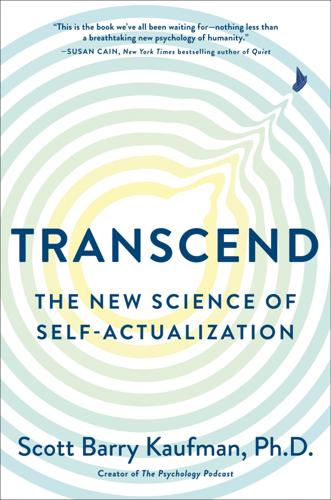
Transcend: The New Science of Self-Actualization
by
Scott Barry Kaufman
Published 6 Apr 2020
—Abraham Maslow, Motivation and Personality (1954) Self-Transcendent Values B-loving people are high in universal concern (commitment to equal opportunity, justice, and protection for all people), universal tolerance (acceptance and understanding of those who are different from oneself, and promoting harmony and peace among diverse groups), trustworthiness and dependability for close loved ones, and benevolence and caring toward close friends and family.26 The greatest character strengths of B-loving people are kindness, love, zest for life, gratitude, perspective, forgiveness, social intelligence, appreciation, teamwork, hope, fairness, curiosity, judgment, humility, love of learning, humor, and spirituality.27 B-loving people also score high on some agency-related traits, such as grit, industriousness, productiveness, organization, and responsibility. Therefore, B-loving people show that agency and communion need not be at odds with each other.
…
GROWTH CHALLENGE #16: USE YOUR SIGNATURE STRENGTHS IN NEW WAYS Strength Opposite Absence Excess Wisdom and Knowledge Creativity Triteness Conformity Eccentricity Curiousity Boredom Disinterest Nosiness Judgment Gullibility Uneffectiveness Cynicism Love of learning Orthodoxy Complacency “Know-it-all”-ism Perspective Foolishness Shallowness Ivory tower Strength Opposite Absence Excess Courage Bravery Cowardice Fright Foolhardiness Persistence Helplessness Laziness Obsessiveness Authenticity Deceit Phoniness Righteousness Vitality Lifelessness Restraint Hyperactivity Strength Opposite Absence Excess Love Intimacy Loneliness Isolation/autism Emotional promiscuity Kindness Cruelty Indifference Intrusiveness Social Intelligence Self-deception Obtuseness Psychobabbling Strength Opposite Absence Excess Justice Citizenship Narcissism Selfishness Chauvinism Fairness Prejudice Partisanship Detachment Leadership Sabotage Compliance Despotism Strength Opposite Absence Excess Temperance Forgiveness Vengefulness Mercilessness Permissiveness Humility Arrogance Footless self-esteem Self-deprecation Prudence Recklessness Sensation-seeking Prudishness Self-regulation Impulsivity Self-indulgence Inhibition Strength Opposite Absence Excess Transcendence Awe Criticism Oblivion Snobbery Gratitude Entitlement Rudeness Ingratiation Hope Despair Present orientation Pollyannaism Humor Dourness Humorlessness Buffoonery Spirituality Alienation Anomie Fanaticism In this growth challenge, you will take the VIA Survey of Character Strengths21 to become aware of your strengths, then explore your strengths, and finally to apply your strengths in new ways.
…
Steven, 22 right to shine, 71 “rising tide,” high-quality connections, 43 Robbers Cave study, 39 Rogers, Carl, xviii, xxiv, 42, 59, 78, 107, 165, 185 “role abandonment”/role engulfment, 139 romantic love, 138, 139, 141, 142, 194, 228 romantic passion, 145, 146–47 Roosevelt, Eleanor, 88, 168, 169, 180 Rowan, John, xxviii “rumble of panic,” 234, 235, 236 rumination, 10, 104–5, 106, 176, 214 Russian nesting dolls analogy, xxviii Ryan, Richard, 59 Sacks, Oliver, 85 sacredness in all things, xxiii, 222, 223 safety, xiii, xiv, xxviii, xxx, xxxi, xxxii, xxxiii, xxxiv, xxxv, 1, 6, 7–34, 37, 39, 48, 71, 81, 86, 91, 92, 98, 119, 136, 148, 167, 221, 231, 245 sailboat, xxxi–xxxix, xxxii, xxxv, 1, 34, 53, 80, 81, 129, 136, 183, 187 salience network, 116 Salzberg, Sharon, 120, 142 samadhi, 194 Sam’s story, 37 Sandelands, Lance, 42 Sane Society, The (Fromm), xxxvi Saroglou, Vassilis, 213 Schachtel, Rabbi Hyman, 50 Schnell, Tatjana, 238–39 scientific/intuitive, 240 scientific investigation and Theory Z, 228, 228n Seale, Colin, 33–34 Search for Authenticity, The (Bugental), 155 “second naivete,” 225 “second tier” spiral dynamic, 226 “sectarians,” 168 secure attachment, 17, 18, 42, 140–41, 144 security, xiv, xviii, xxix, xxx, xxxi, xxxii, xxxiii, xxxiv, xxxv, 1, 1–80, 84, 86, 93, 98, 100, 119, 141, 146, 147, 167, 225, 227, 231, 233, 238 See also insecurity seismic earthquake metaphor for trauma, 103–4 self-acceptance, xxv, 68, 90, 174, 238 See also acceptance self-actualization, xiii–xv, xiv, xxi, xxiii, xxix, xxx, xxxi, xxxiii–xxxiv, xxxvi, 83–90 peak experiences, 193, 195, 196, 197, 205, 215 security, 7, 70, 79, 80 Theory Z, xiii, 217–44 See also exploration; Kaufman, Scott Barry; love; Maslow, Abraham; purpose; transcendence “Self-Actualization: A Study of Psychological Health” (Maslow), 88 selfactualizationtests.com, xxi, 89, 123, 131, 208 self-awareness, xxv, xxxvi, 17, 26, 117, 133–34, 136, 141, 236 self-compassion, 132–33, 238 self-concordant goals, 166 self-control, 100, 133 self-determination, 164–65, 170, 180 Self-Diminishment (Awe Experience Scale), 208 self-esteem, xiii, xiv, xxviii, xxx, xxxiii, xxxv, xxxvi, 245 growth, 81, 84, 86, 98, 132, 134, 135, 136, 143, 148, 152, 160, 167 healthy transcendence, 219, 236, 238 security, 1, 5, 6, 19, 35, 43, 53, 54–80 self-expansion theory of love, 138–39, 142 self-honesty, 136–37 “Selfishness and Self-Love” (Fromm), 130 selfish/unselfish dichotomy, 153 self-loss, 203–6 self-love, 130–33, 139, 147, 174 pathological, 132 self-presentation strategy, 68, 69, 78 self-preservation, 6, 39, 54, 86 self-regulation, 25, 59, 105, 161 self-respect, xv, 23, 57, 84, 131, 139 self-transcendence, xxiv, 126–27, 181, 200, 201, 227 Seligman, Martin, xxv, 27–28, 115, 200, 201 sensation seeking, 99, 101 sense of self (self-worth), xv, xxv, xxviii, 52, 59, 60–61, 62, 65, 66, 68, 69, 74, 75, 110, 135, 139, 140, 205, 208, 226 Seppälä, Emma, 47–48, 51, 52 sex, 6, 28, 36, 37, 77, 84, 94, 100, 122, 137, 138, 142, 143n, 143–47, 193, 194, 225, 228, 230 sex and dominance research, 54, 55–56, 83 sexploration, 144–46 sexual assault, 102, 214 Sheldon, Kennon, 160, 163–64, 165, 166, 170 Shonkoff, Jack, 24, 27 “sickness-fostering” victory, 215 signature strengths, 166, 171, 176–77 silent vs. quiet ego, 135 Simpson, Jeffry, 21–22 60 Minutes (TV show), 97 Skee-Ball, xxxvi Skenazy, Lenore, 92 SMART goals, 171–72 Snyder, Charles, 177, 178 social anxiety, 95, 145, 211 social curiosity, 95–97 social environment, 95, 96, 202 “social evasion,” 39 social exploration, 94–97 social intelligence, 126 “social interest,” xviii, 54, 55, 58, 78 social isolation, 45, 48 social media, 50–51, 52, 163, 166 social protection system, 38, 39, 41, 61, 67, 69–70 social psychology, xx, xxi, 19, 39, 42–43, 45, 60, 77, 133, 144, 152 social value, 60–61, 62, 64, 66, 67, 73 society and human nature, 216 society and Theory Z, 232–33 Society for Personality and Social Psychology, 195 Some Do Care (Colby and Damon), 167 specific (quality of SMART goals), 171 Spiritual Evolution (Vaillant), 119 “splitting,” 26 “staleness of experience,” 111 states of mind and hierarchy of needs, xxvii–xxviii status-driven life motivations, 79, 80 Steger, Michael, 8–9 Sternberg, Robert, 30 “strange situation procedure,” 16 stress, 9–10, 11, 15, 15, 18–19, 21–22, 24, 25, 26, 38, 43, 45, 49, 69, 91, 101, 102, 106, 113, 132, 143, 174, 182, 208, 230 stress-adapted children, 30, 31–32 stress tolerance, 93, 98–99 striving for power, 55, 58, 78 striving wisely, 159–66, 161, 162, 163, 164, 165, 170, 173, 175 sublimation, 130, 154 suicide, 39, 46–47, 237 “Summer Notes on Social Psychology of Industry and Management” (Maslow), 152 Sumner, William Graham, 3–4, 5 supportive environment, 171, 178–83 suppression, xxvii, 5, 69, 70, 78, 101, 112, 129, 130, 140 Swann, William B., Jr., 61 synergy, xxxiv, 152–53, 169, 222, 225, 233 Tafarodi, Romin, 61, 62 Tedeschi, Richard, 102–3 Teicher, Martin, 25, 26 temporo-parietal junction, 202 Terror Management Theory (TMT), 236 “Theory of Human Motivation” (Maslow), 59, 86 “theory-of-mind” ability, 127–28 Theory of Successful Intelligence, 30 Theory X, 151 Theory Y, 151, 153, 220 Theory Z, xiii, 217–44 thinkLaw, 33 Third Force psychologists, xxiv Thorndike, Edward, 56, 83 Time (Awe Experience Scale), 208 “timelessness,” 194 time-saving vs. material purchases, 49 time-specific (quality of SMART goals), 171, 172 Torrance, E.
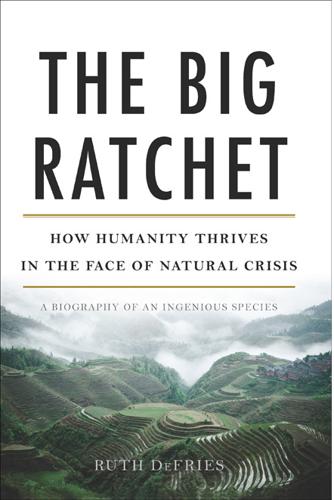
The Big Ratchet: How Humanity Thrives in the Face of Natural Crisis
by
Ruth Defries
Published 8 Sep 2014
: Richerson and Boyd 2005, 7. 40Beak size they’d inherited from their parents: This fascinating response of finch beak size to climatic variability is documented through the long-term work of Rosemary and Peter Grant (1993) on the Galapagos Islands as well as many other publications. 40Pulled a rope: Plotnik et al. 2011. 40With a harsh “kaw”: Cornell et al. 2012. 40Not be worth the investment: Potts (2011) reports that the brain consumes approximately 65 percent of a baby’s total energy requirement and 20 to 25 percent of an adult’s, even though brain tissue makes up only 2 percent of an adult’s body mass. 40Life-span of the animal: Mathematical arguments for the evolution of individual learning, social learning, and culture in relation to variability in the environment are made by Boyd and Richerson (2009), Enquist and Ghirlanda (2007), Henrich and McElreath (2003), and Strimling et al. (2009). 41Macaque’s complex social behavior: The history of the study of Japanese macaques is documented in Yamagiwa (2010). 41Fish for their next meal: Other examples of cultural diffusion in nonhuman species include the spread of lobtail feeding on humpback whales (Allen et al. 2013) and the adoption of social foraging norms in vervet monkeys (van de Waal et al. 2013). 42Process information, make it possible: Holloway (2008), and Blazek et al. (2011) describe brain evolution as the increase in brain size and the creation of more complex brain structures in the cerebral cortex. 43Climatically noisy Pleistocene: Potts 2011. 43Interacted at different times: The interplay of factors is put forward in Holloway (2008). Other primate and bird species show relationships between brain size and learning (Reader and Laland 2002; Sol et al. 2005). 43Less energy gets consumed in the process of digestion: Wrangham 2009, 43. 43Digestive tracts and large, learning brains: The argument of the social-intelligence hypothesis is from Aiello and Wheeler (1995), Reader and Laland (2002), Herrman et al. (2007), and Navarrete et al. (2011). 43Few parents would dare: The story of the Kelloggs is described in Henrich and McElreath (2008). 44Monkeys, chimpanzees, and children: Dean et al. (2012) conducted this experiment. 45Ground with a slender stick: This and other examples of cumulative technology in apes are given in Pradhan et al. (2012). 45“. . .
…
Ranere, A., D. Piperno, I. Holst, R. Dickau, and J. Iriarte. 2009. The cultural and chronological context of early Holocene maize and squash domestication in the Central Balsas River Valley, Mexico. Proceedings of the National Academy of Sciences 106:5014–5018. Reader, S., and K. Laland. 2002. Social intelligence, innovation, and enhanced brain size in primates. Proceedings of the National Academy of Sciences 99:4436–4441. Richerson, P., and R. Boyd. 2005. Not by Genes Alone: How Culture Transformed Human Evolution. University of Chicago Press, Chicago. ———. 2010. The Darwinian theory of human cultural evolution and gene-culture coevolution.
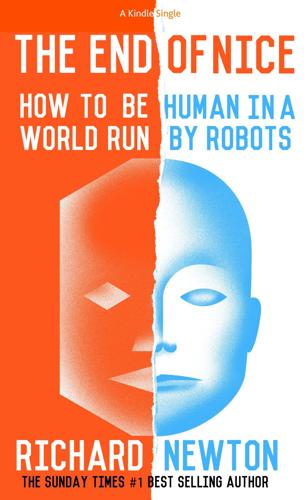
The End of Nice: How to Be Human in a World Run by Robots (Kindle Single)
by
Richard Newton
Published 11 Apr 2015
This of course is a feature of the Anti-Conform mentality and thinking differently. Fear management: As you take risks and buck the convention of “Nice” you must be able to handle the fear of failure, social ostracism, or potential mockery that is highly likely to accompany this different direction. You must, in other words, be comfortable being Anti-Safe. Social intelligence: If you have new ideas, new ways of seeing things and want others to see the value of this – whether it is art or business or something else – then you must be able to persuade people. You have every right to treat your art as something wonderful that will speak for itself, and unless you are lucky or have a famous mum or dad it will probably be ignored.
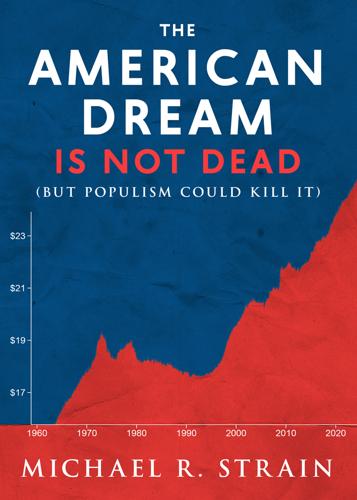
The American Dream Is Not Dead: (But Populism Could Kill It)
by
Michael R. Strain
Published 25 Feb 2020
Over the past half-decade, the fastest-growing jobs in the new middle include sales representatives, truck drivers, managers of personal service workers, heating and air conditioning mechanics and installers, computer support specialists, self-enrichment education teachers, event planners, health technologists and technicians, massage therapists, social workers, marriage and family counselors, audiovisual technicians, paralegals, health-care social workers, chefs and head cooks, and food service managers. These jobs probably require a little more education, skills, and experience than jobs in the old middle. They require more situational adaptability, social intelligence, customer service and interpersonal interaction, low-end managerial skills, and administrative, technical, and communication skills. So, yes, populists on the left and right are correct that traditional middle-class jobs are shrinking as a share of total employment. These middle-class jobs do represent a hollowing out of the middle.
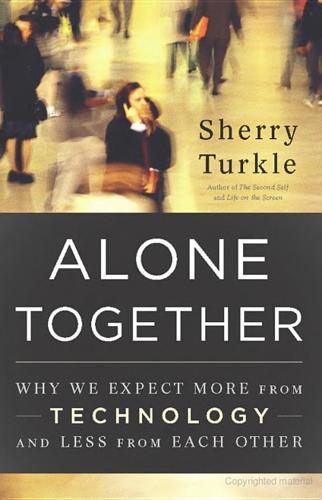
Alone Together
by
Sherry Turkle
Published 11 Jan 2011
For one thirteen-year-old boy, Cog suggests that “humans aren’t good enough so they need something else.” In our first-encounters study children’s time with the robots is unstructured. We ask questions, but not many. The children are encouraged to say whatever comes to mind. Our goal is to explore some rather open questions: How do children respond to an encounter with a novel form of social intelligence? What are they looking for? To this last, the answer is, most simply, that children want to connect with these machines, to teach them and befriend them. And they want the robots to like, even love, them. Children speak of this directly (“Cog loves me”; “Kismet is like my sister; she loves me”; “He [Cog] is my pal; he wants to do things with me, everything with me.
…
MacDorman et al., “Too Real for Comfort: Uncanny Responses to Computer Generated Faces,” Computers in Human Behavior 25 (2009): 695-710. Like Ishiguro, roboticist David Hanson aspires to build realistic androids that challenge the notion of the uncanny valley. “We conclude that rendering the social human in all possible detail can help us to better understand social intelligence, both scientifically and artistically.” See David Hanson et al., “Upending the Uncanny Valley,” Association for the Advancement of Artificial Intelligence, May 11, 2005, www.aaai.org/Papers/Workshops/2005/WS-05-11/WS05-11-005.pdf (accessed November 14, 2009). 7 A sympathetic reading of the possibilities of deep human-robot connections is represented in Peter H.
…
The Forbidden Experiment (New York: Farrar, Strauss, and Giroux, 1980). 27 “Basic trust” is Erik Erikson’s phrase; see Childhood and Society (New York: Norton, 1950) and Identity and the Life Cycle (1952; New York: Norton, 1980). 28 At MIT, the question of risk strikes most of my students as odd. They assume, along with roboticist David Hanson, that eventually robots “will evolve into socially intelligent beings, capable of love and earning a place in the extended human family.” See Groopman, “Robots That Care.” 29 A University of Michigan study found that today’s college students have less empathy than those of the 1980s or 1990s. Today’s generation scored about 40 percent lower in empathy than their counterparts did twenty or thirty years ago.
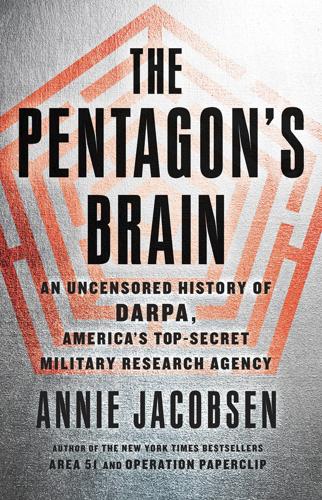
The Pentagon's Brain: An Uncensored History of DARPA, America's Top-Secret Military Research Agency
by
Annie Jacobsen
Published 14 Sep 2015
Nowhere in Secretary Rumsfeld’s thirty-nine-page monograph for the president, a summation of Cebrowski’s vision titled “Transformation Planning Guidance,” was human behavior mentioned or even alluded to. While Cebrowski did television interviews addressing congressional concerns, the Office of Force Transformation added four new slides to its “Transforming Defense” PowerPoint presentation. One of the two new slides now addressed “Social Intelligence as a key to winning the peace,” and the other addressed “Social Domain Cultural Awareness” as a way to give warfighters a “cognitive advantage.” On PBS NewsHour, Cebrowski defended network-centric warfare and again reminded the audience that the United States had, he believed, achieved operational dominance in Iraq, completing major combat operations in just twenty-one days.
…
The United States needed to know what made the enemy tick. Cebrowski agreed. “Knowledge of one’s enemy and his culture and society may be more important than knowledge of his order of battle,” Cebrowski wrote in Military Review, a bi-monthly Army journal. The Office of Force Transformation now publicly endorsed “social intelligence” as a new warfighting concept, the idea that in-depth knowledge of local customs in Iraq and elsewhere would allow the Pentagon to better determine who was friend and who was foe in a given war theater. “Combat troops are becoming intelligence operatives to support stabilization and counterinsurgency operations in Iraq,” Cebrowski’s office told Defense News in April 2004.
…
The social science community had tremendous insights into [the] serious problems going on [there], and a sector of DoD was ready to make serious investments into social sciences,” he says of DARPA’s efforts. Arthur Cebrowski died of cancer the following year. The Office of Force Transformation did not last long without him and within a year after his death closed down, but the social intelligence programs forged ahead. Montgomery McFate found a new advocate in General David Petraeus, commander of the Multi-National Security Transition Command, Iraq, who shared her vision about the importance of winning hearts and minds. Petraeus began talking about “stability operations” and using the phrase “culture-centric warfare” when talking to the press.
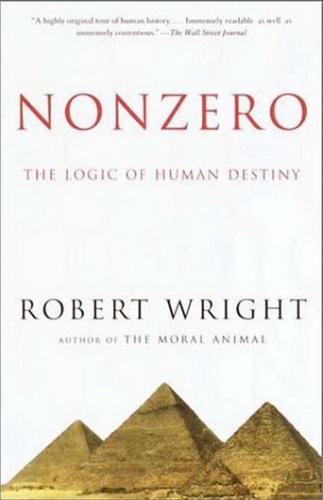
The Moral Animal: Evolutionary Psychology and Everyday Life
by
Robert Wright
Published 1 Jan 1994
ten to forty messages: Wilson (1975). neocortex and large social groups: Dunbar (1992). Vampire bats: Ridley (1996), p. 69. coalition-forming and intelligence: Ridley (1996), p. 160. “feasted in peace”: Pinker (1997), p. 193. “mind blind”: Pinker (1997), pp. 331–33. †our evolved social intelligence: The properties of a specifically social intelligence may have helped hape the nature of science. The tendency of the scientific mind to distinguish between “cause” and “effect” may indeed, as the mystics say, misrepresent the ultimate nature of a seamless reality, attributing independent agency to parts of an interdependent whole.
…
Normal four-year-olds know that people who haven’t looked inside a box don’t know what’s in it. Autistic children lack this instinct for ascribing mental perspective to people; they are “mind blind.” They may be very smart—capable of superhuman mathematical feats—but they lack key parts of our evolved social intelligence.† So far as getting on the co-evolutionary escalator goes, one key implication of coalitional contention is the emphasis it places on communication. If your team wants to subvert the dominant male, advanced planning is advisable. For that matter, if your team just wants to go hunting, and bring back huge hunks of meat that fill the dominant coalition with envy and females with sudden affection, communication is nice.

The Technology Trap: Capital, Labor, and Power in the Age of Automation
by
Carl Benedikt Frey
Published 17 Jun 2019
As noted above, AI is another GPT, and it is already being used to perform both mental and manual tasks. Because its potential applications are so vast, Michael and I began by looking at tasks that computers still perform poorly and where technological leaps have been limited in recent years. For a glimpse of the state of the art in machine social intelligence, for example, consider the Turing test, which captures the ability of an AI algorithm to communicate in a way that is indistinguishable from an actual human. The Loebner Prize is an annual Turing test competition that awards prizes to chat bots that are considered to be the most humanlike. These competitions are straightforward.
…
Some people subsequently argued that we had underestimated the accelerating pace of change. However, such claims exaggerate the capabilities of Eugene Goostman, which simulated a thirteen-year-old boy speaking English as his second language. Even if we assume that algorithms at some point will be able to effectively reproduce human social intelligence in basic texts, many jobs center on personal relationships and complex interpersonal communication. Computer programmers consult with managers or clients to clarify intent, identify problems, and suggest changes. Nurses work with patients, families, or communities to design and implement programs to improve overall health.
…
See mass production American Telephone and Telegraph Company (AT&T), 315 annus mirabilis of 1769, 97, 148 anti-Amazon law, 290 Antikythera mechanism, 39 Appius Claudius, 37 Archimedes, 30, 39 Aristotle, 1, 39 Arkwright, Richard, 94, 101 artificial intelligence (AI), 5, 36, 301–41, 228, 342; Alexa (Amazon), 306; AlphaGo (Deep Mind), 301, 302; Amara’s Law, 323–25; artificial neural networks, 304; autonomous robots, 307; autonomous vehicles, 308, 310, 340; big data, 303; Chinese companies, 313; Dactyl, 313; data, as the new oil, 304; Deep Blue (IBM), 301, 302; deep learning, 304; -driven unemployment, 356; Google Translate, 304; Gripper, 313; internet traffic, worldwide, 303; JD. com, 313; Kiva Systems, 311; machine social intelligence, 317; Microsoft, 306; misconception, 311; multipurpose robots, 327; Neural Machine Translation, 304; neural networks, 303, 305, 314; pattern recognition, 319; phrase-based machine translation, 304; Siri (Apple), 306; speech recognition technology, 306; Turing test, 317; virtual agents, 306; voice assistant, 306; warehouse automation, 314 artisan craftsmen, 8; in domestic system, 118, 131; emigration of, 83; factory job, transition to, 124; fates of, 17; full-time, 34; middle-income, 11, 16, 24, 135; replacement of, 9, 16, 218 Ashton, T.
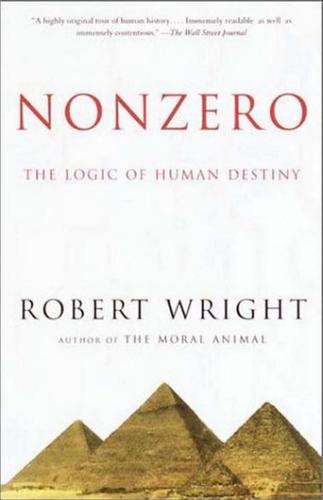
Nonzero: The Logic of Human Destiny
by
Robert Wright
Published 28 Dec 2010
ten to forty messages: Wilson (1975). neocortex and large social groups: Dunbar (1992). Vampire bats: Ridley (1996), p. 69. coalition-forming and intelligence: Ridley (1996), p. 160. “feasted in peace”: Pinker (1997), p. 193. “mind blind”: Pinker (1997), pp. 331–33. †our evolved social intelligence: The properties of a specifically social intelligence may have helped hape the nature of science. The tendency of the scientific mind to distinguish between “cause” and “effect” may indeed, as the mystics say, misrepresent the ultimate nature of a seamless reality, attributing independent agency to parts of an interdependent whole.
…
Normal four-year-olds know that people who haven’t looked inside a box don’t know what’s in it. Autistic children lack this instinct for ascribing mental perspective to people; they are “mind blind.” They may be very smart—capable of superhuman mathematical feats—but they lack key parts of our evolved social intelligence.† So far as getting on the co-evolutionary escalator goes, one key implication of coalitional contention is the emphasis it places on communication. If your team wants to subvert the dominant male, advanced planning is advisable. For that matter, if your team just wants to go hunting, and bring back huge hunks of meat that fill the dominant coalition with envy and females with sudden affection, communication is nice.
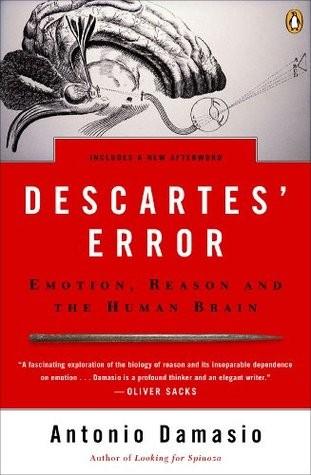
Descartes' Error: Emotion, Reason and the Human Brain
by
António R. Damásio
Published 1 Jan 1994
The reverse condition is just as dramatic: We all know creative scientists and artists whose social sense is a disgrace, and who regularly harm themselves and others with their behavior. The absent-minded professor is the benign variety of the latter type. At work, in these different personality styles, are the presence or absence of what Howard Gardner has called “social intelligence,” or the presence or absence of one or the other of his multiple intelligences such as the “mathematical.”3 The personal and immediate social domain is the one closest to our destiny and the one which involves the greatest uncertainty and complexity. Broadly speaking, within that domain, deciding well is selecting a response that will be ultimately advantageous to the organism in terms of its survival, and of the quality of that survival, directly or indirectly.
…
J., 186, 271, 280, 287, 294 Self, 226–27 neural, 236–44 Serotonin, 76-78 Shafir, Eldar, 286 Shallice, Tim, 42, 190, 272, 287 Shatz, C, 281 Shepard, Roger, 280 Silverman, M. S., 279 Singer, W., 277–78 Sizer, Nelson, 16–17, 270 Skin conductance response description of, 207–12 predicting the future and, 219–22 Social intelligence, 169 Somatic-marker hypothesis “As If” symbols, 184 attention and working memory and, 196–98 biases and the creation of order, 198–200 description of, 173–75 emotion and reasoning, 191–96 intuition, 187–89 neural network for somatic markers, 180–83 origin of somatic markers, 177–80 overt and covert somatic markers, 184–85 reasoning outside the personal and social domains, 189-91 Somatic-marker hypothesis, testing of autonomic nervous system responses and, 205–12 gambling experiments, 212-17 myopia for the future, 217–19 predicting the future and skin conductance response, 219–22 Somatosensory, 65 Sox, H.
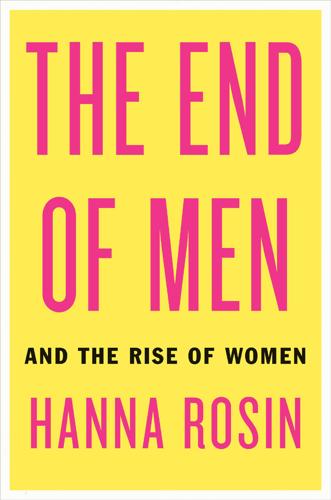
The End of Men: And the Rise of Women
by
Hanna Rosin
Published 31 Aug 2012
Our vast and struggling middle class, where the disparities between men and women are the greatest, is slowly turning into a matriarchy, with men increasingly absent from the workforce and from home, and women making all the decisions. In the past, men derived their advantage largely from size and strength, but the postindustrial economy is indifferent to brawn. A service and information economy rewards precisely the opposite qualities—the ones that can’t be easily replaced by a machine. These attributes—social intelligence, open communication, the ability to sit still and focus—are, at a minimum, not predominantly the province of men. In fact, they seem to come more easily to women. Women in poor parts of India are learning English faster than men, to meet the demands of new global call centers. Women own more than 40 percent of private businesses in China, where a red Ferrari is the new status symbol for female entrepreneurs.
…
The aim is to behave like a good coach, and channel your charisma to motivate others to be hardworking and creative. The model is not explicitly defined as feminine, but it echoes literature about male-female differences. A program at Columbia Business School, for example, teaches sensitive leadership and social intelligence, including better reading of facial expressions and body language. “We never explicitly say, ‘Develop your feminine side,’ but it’s clear that’s what we’re advocating,” says Jamie Ladge, a business professor at Northeastern University. Julie Gerberding, an infectious disease specialist who was the head of the Centers for Disease Control and is now the president of Merck Vaccines, calls the new style “meta-leadership” or “horizontal leadership”: Horizontal leadership takes different skills than vertical leadership.
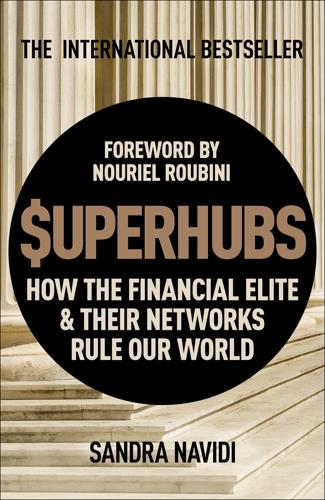
SUPERHUBS: How the Financial Elite and Their Networks Rule Our World
by
Sandra Navidi
Published 24 Jan 2017
They combine substance with personality and have the ability to focus on someone with undivided and genuine attention, which makes others feel special. They project a strong presence, draw attention to themselves, and enrapture audiences. With their self-confidence and ability to charm, they manage to persuade and align people, furthering their own objectives. Most people at the top have a great sense of humor—an expression of social intelligence that is supremely helpful in disarming and bonding with people. Their often self-deprecating quick wit bridges differences in culture, status, and interests. George Soros is masterful in firing off unexpectedly dry tidbits. When reminded of something he’d rather avoid, he’d reply, “I do not remember the past; I only remember the future,” and when asked about his work habits, he says, “When I have to, I work furiously because I am furious that I have to work.”
…
It is unclear what her next career step will be after her IMF term ends, but it is not entirely impossible that she may become the first female French president. I wish I could infer some lessons from Madame Lagarde’s steep ascent other than get the best education, have grit, and stay true to yourself, but many other women have done the same and not achieved her level of success. She is indeed uniquely qualified and possesses a high degree of both social intelligence and resilience, but I also think that in her case all the stars were aligned. Once she found an upward trajectory, she had the ability and good fortune to maintain that positive momentum. Generally, I must say that I am not too optimistic that things will significantly change for the better in the near future.
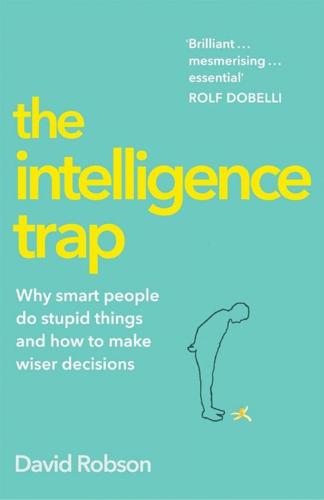
The Intelligence Trap: Revolutionise Your Thinking and Make Wiser Decisions
by
David Robson
Published 7 Mar 2019
It includes traits like ‘metacognition’ – whether you can judge your strengths and your weaknesses and work out the best ways to overcome them, and the unspoken, tacit knowledge that comes from experience and allows you to solve problems on the fly. It also includes some of the skills that others have called emotional or social intelligence – the ability to read motives and to persuade others to do what you want. Among the Termites, Shelley Smith Mydans’ quick thinking as a war reporter, and her ability to navigate her escape from a Japanese prison camp, may best personify this kind of intelligence. Of the three styles of thinking, practical intelligence may be the hardest to test or teach explicitly, but Sternberg suggests there are ways to cultivate it at school and university.
…
‘Some organisations have taken what we have found and just flipped it into hiring more women.’ Whether or not you would deliberately change the gender balance on the basis of these findings, hiring people of both sexes with greater social sensitivity is an obvious way to boost the collective intelligence of an organisation. The very name – soft skills – that we attribute to social intelligence often implies that it is the weaker, secondary counterpart to other forms of intelligence, and the tests we use to explore interpersonal dynamics – such as the Myers-Briggs Type Inventory – are poor predictors of actual behaviour.13 If you are attempting to recruit a smart team, Woolley’s research strongly suggests that these social skills should be a primary concern, and in the same way that we measure cognitive ability using standardised tests, we should begin to use scientifically verified measures to assess this quality.
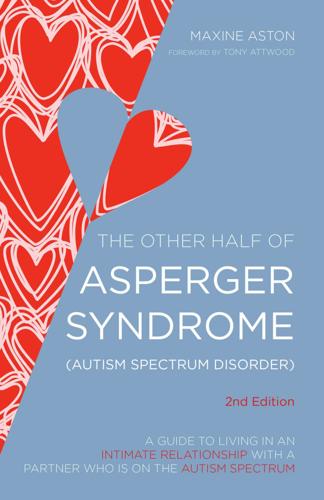
The Other Half of Asperger Syndrome (Autism Spectrum Disorder): A Guide to Living in an Intimate Relationship With a Partner Who Is on the Autism Spectrum Second Edition
by
Maxine Aston
Published 21 Feb 2014
His wife struggled with social events and found it difficult to excuse herself if she began to feel overloaded and anxious. Both in the relationship gained by this simple strategy – his wife had an exit strategy for social events and he found she returned home far less stressed. Your partner is not stupid! The only type of intelligence affected by Asperger syndrome is social intelligence. It is likely that your partner has been made to feel stupid many times in his life. As a child, they are likely to have been singled out, identified as ‘different’ and bullied at school. The bullying was probably quite severe and so, as an adult, they may be very sensitive to any form of perceived ridicule or put-down, especially from you.
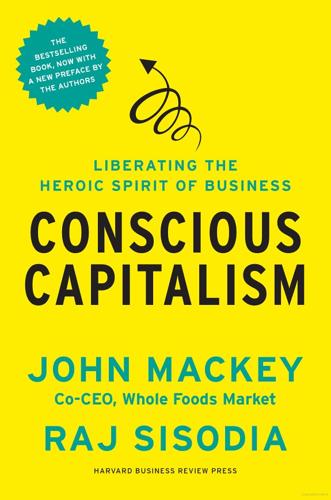
Conscious Capitalism, With a New Preface by the Authors: Liberating the Heroic Spirit of Business
by
John Mackey
,
Rajendra Sisodia
and
Bill George
Published 7 Jan 2014
“Howard Gardner,” last modified June 12, 2012, http://en.wikipedia.org/wiki/Howard_Gardner; see also Howard Gardner, Frames of Mind: The Theory of Multiple Intelligences (New York: Basic Books, 1993). 3. Daniel Goleman, Emotional Intelligence: Why It Can Matter More Than IQ (New York: Bantam, 1995). Goleman also wrote another excellent book Social Intelligence: The New Science of Human Relationships (New York: Bantam, 2006). We have not separated social intelligence from emotional, spiritual, and systems intelligence into its own category, because we believe it is better seen as a characteristic of the other three categories. 4. Danah Zohar and Ian Marshall, Spiritual Capital: Wealth We Can Live By (San Francisco: Berrett-Koehler, 2004), 3. 5.

Smart Mobs: The Next Social Revolution
by
Howard Rheingold
Published 24 Dec 2011
There have been varieties of theories about the Internet as the nervous system of a global brain, but Huberman and colleagues have made clever use of markets and game simulations as computational test beds for experiments with emergent group intelligence. The fall that I visited Huberman, he and his colleagues had used “information markets” to perform experiments in emergent social intelligence and found that group forecasts were more accurate than those of any of the individual participants’ forecasts.67 In information markets, members trade symbolic currency representing predictions of public information. The Hollywood Stock Exchange, for example, uses the market that emerges from the trading of symbolic shares to predict box office revenues and Oscar winners.
…
The HP research team makes the extraordinary claim that they have created a mathematically verifiable methodology for extracting emergent intelligence from a group and using the group’s knowledge to predict the future in a limited but useful realm: “One can take past predictive performance of participants in information markets and create weighting schemes that will predict future events, even if they are not the same event on which the performance was measured.”68 Decades ago, computer scientists thought that someday there would be forms of “artificial intelligence,” but with the exception of a few visionaries, they never thought in terms of computer-equipped humans as a kind of social intelligence. Although everyone who understands the use of statistical techniques to make predictions hastens to add the disclaimer that surprises are inevitable, and one of the fundamental characteristics of complex adaptive systems is their unpredictability, the initial findings that internetworked groups of humans can exhibit emergent prediction capabilities are potentially profound.

A World Without Work: Technology, Automation, and How We Should Respond
by
Daniel Susskind
Published 14 Jan 2020
Scores of recent books, articles, reviews, and reports have sought to work out the new limits of machine capabilities, using a variety of different approaches. One is to try to identify which particular human faculties are hard to automate. A popular finding, for instance, is that new technologies struggle to perform tasks that require social intelligence: activities that require face-to-face interaction or empathetic support. From 1980 to 2012, jobs that require a high level of human interaction grew by 12 percent as a share of the US workforce.1 A 2014 Pew Research Center survey found that many experts still believed—despite all the advances of the pragmatist revolution—that there are certain “uniquely human characteristics such as empathy, creativity, judgement, or critical thinking” that will “never” be automated.2 A different tack, rather than looking at human faculties and asking whether they can be replicated by a machine, is to consider the tasks themselves and ask whether they have features that make them easier or harder for a machine to handle.
…
See also Soviet Union Saez, Emmanuel Sam100 (bricklaying robot) Sandel, Michael sat-nav systems Schloss, David Schmidt, Eric Schumpeter, Joseph Searle, John secondary education security Sedol, Lee self-regulation self-service culture service sector sexuality Shannon, Claude signaling Silicon Valley Simon, Herbert singularity Siri skepticism skill skill-biased work story skill premium skills mismatch skin cancer detection Smith, Adam SNAP. See Supplemental Nutrition Assistance Program social credit system Social Insurance and Allied Services (Beveridge) social intelligence socialist states social justice social media. See also specific companies social robotics social safety nets Socratic software South Korea sovereign wealth funds Soviet Union. See also Russia Sparta Spence, Michael spinning jenny Spotify Standard Oil Company state. See Big State; government state bonus status steam engine Stiglitz, Joseph stock plans structural technological unemployment complementing force weakening and lump of labor fallacy and overview of remaining tasks and superiority assumption and timing of world with less work and substituting force ALM hypothesis and complementing force and defined education and frictional technological unemployment and misplaced anxiety and strengthening of task encroachment and Summers, Larry superintelligence superiority assumption supermanagers superstar firms Supplemental Nutrition Assistance Program (SNAP) supply, price and Supreme Court decision prediction Susskind, Jamie Susskind, Richard Suzman, James synthetic media tacit knowledge Tantalus task complexity task encroachment affective capabilities and cognitive capabilities and manual capabilities and overview of regional differences in skepticism and weakening complementing force and tasks, jobs vs.
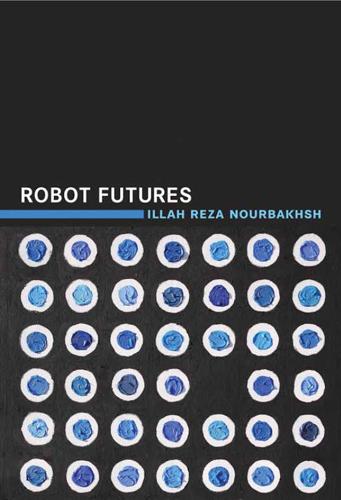
Robot Futures
by
Illah Reza Nourbakhsh
Published 1 Mar 2013
There is no sense of parity or reciprocity in the relationship; 44 Chapter 2 rather, there is a strangely one-sided conversation that does not feel mutually satisfying. The final word on connectivity is that robots, even social ones, will be unlike people. To think, therefore, that we will interact with socially intelligent robots the way we do with people is utterly naïve. There is no real precedent for how this will work, and the only prediction I can make with confidence is that the robots you meet on the street in 2035 will know much more about you than you will know about them. If you are an unyielding optimist, you could interpret this to mean that robots will treat you as if you are a movie star.
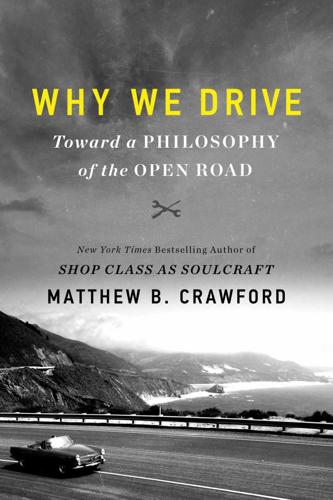
Why We Drive: Toward a Philosophy of the Open Road
by
Matthew B. Crawford
Published 8 Jun 2020
Flourishing—that of rats and humans alike—seems to require an environment with “open problem spaces” that elicit the kinds of bodily and mental engagement bequeathed us by evolution and cultural development. These exquisitely honed human capacities include the glorious, century-long development of the automobile, that astonishing tool, and the social intelligence that we have brought to bear on the problem of sharing the road together. If instead we put ourselves in a Plexiglas enclosure in which all our most basic needs are met, we will have nobody but ourselves to blame if we begin to feel like standard lab rats in a massive laboratory of social engineering.
…
Of course, what human drivers do is make eye contact in such a situation, or read other cues of social interaction, allowing them to negotiate ambiguous cases of right-of-way and work things out on the fly. Some drivers are more assertive, others more defensive. It is not a stretch to say that there is a kind of body language of driving. This improvisation works just fine, for the most part. But social intelligence is hard to reproduce with machine-executable logic. Therefore, it is concluded, human beings must become more like machines, in order to make the road more hospitable to robots. According to the same Times article, “Dmitri Dolgov, head of software for Google’s Self-Driving Car Project, said that one thing he had learned from the project was that human drivers needed to be ‘less idiotic.’”

What to Think About Machines That Think: Today's Leading Thinkers on the Age of Machine Intelligence
by
John Brockman
Published 5 Oct 2015
For this reason, my colleagues and I are developing the framework around an open-ended set of Turing+ questions in order to measure scientific progress in the field. The plural “questions” emphasizes the many different intelligent abilities to be characterized and possibly replicated in a machine—basic visual recognition of objects, the identification of faces, the gauging of emotions, social intelligence, language, and much more. The “Turing+” emphasizes that a quantitative model must match human behavior and human physiology—the mind and the brain. The requirements are thus well beyond the original Turing Test; an entire scientific field is needed to make progress on understanding them and developing the related technologies of intelligence.
…
Observing, for example, how beliefs and desires generate wishes that lead to actions, you begin to gain insight into why you think and act the way you do. So you can explain yourself to yourself and to other people too. But equally important, it means you have a model for explaining other people to yourself. Introspective consciousness has laid the ground for what psychologists call Theory of Mind. With humans, for whom social intelligence is the key to biological survival, the advantages have been huge. With machines, for whom success in social life has not yet become an issue, there has been little if any reason to go that way. However, there’s no question that the time is coming when machines will indeed need to understand other machines’ psychology, so as to be able to work alongside them.
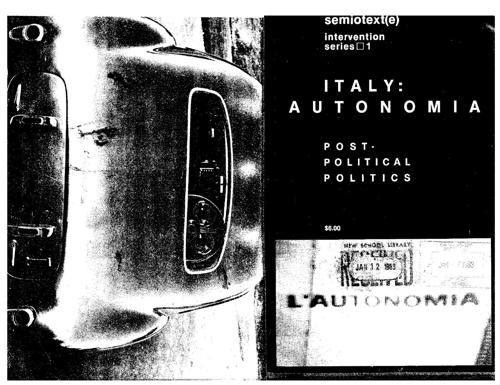
Autonomia: Post-Political Politics 2007
by
Sylvere Lotringer, Christian Marazzi
Published 2 Aug 2005
Consider a hypothesis: the diffusion of the sign as the general equivalent of all things and the transfer of the productive Intelligence to machines may Involve some radlcallnnovatlons In the social forms of language and thought and in the forms of legal and juridical control. Consider this further hypothesis: the creation of a social intelligence which has been rendered useless and polyvalent may have given rise to the SOcial possibility of simulation or, better, to the production of signs beyond the laws governing property and the forms of contra! incarnated In signs. Maurizio Torealta We are convinced that this entire situation is connected with the development of the unforeseen, absurd and paradoxical behavior that Is improperly ca!
…
"Ali work for less" Is a watchword Which has nothing to do with questions such as "the right to a jab", or the right to a full-time posl.tion. Work Is necessary evll-or at least remains so for a historical period that we wish eventually to surpass and extinguish with collecUve force. What we want is to apply, totally and coherently, the energies and the potentia! that exist for a socialized Intelligence, for a general intellect. We want to make possible a general reduc- tion In working time and we want to transform the organization of work In such a way that an autonomous organization of sectors of productive experimental organization may become possible. These sectors would give rise to experimental forms of production in which the object of worker cooperation would not be profit, but the reduction of necessary work, the intelligent application of technical and scientific knowledge, and Innovation.
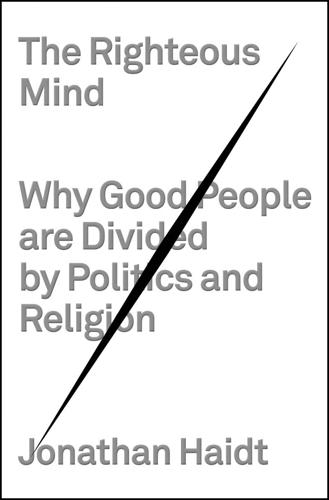
The Righteous Mind: Why Good People Are Divided by Politics and Religion
by
Jonathan Haidt
Published 13 Mar 2012
In the last ten years, however, evolutionary theorists have realized that reciprocal altruism is not so easy to find among nonhuman species.40 The widely reported claim that vampire bats share blood meals with other bats who had previously shared with them turned out to be a case of kin selection (relatives sharing blood), not reciprocal altruism.41 The evidence for reciprocity in chimpanzees and capuchins is better but still ambiguous.42 It seems to take more than just a high level of social intelligence to get reciprocal altruism going. It takes the sort of gossiping, punitive, moralistic community that emerged only when language and weaponry made it possible for early humans to take down bullies and then keep them down with a shared moral matrix.43 Reciprocal altruism also fails to explain why people cooperate in group activities.
…
See the large body of research in social psychology called “equity theory,” whose central axiom is that the ratio of net gains (outcome minus inputs) to inputs must be equal for all participants (Walster, Walster, and Berscheid 1978). That’s a definition of proportionality. 51. Children generally like equality, until they near puberty, but as their social intelligence matures they stop being rigid egalitarians and start becoming proportionalists; see Almas et al. 2010. 52. Cosmides and Tooby 2005. 53. Our goal with Moral Foundations Theory and YourMorals.org has been to find the best bridges between anthropology and evolutionary psychology, not the complete set of bridges.
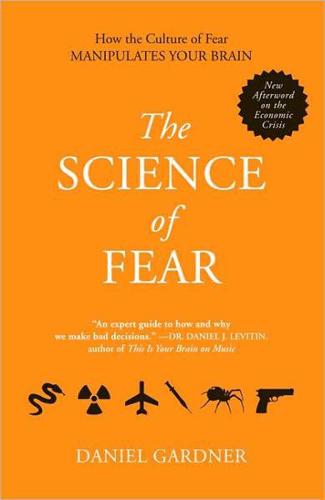
The Science of Fear: How the Culture of Fear Manipulates Your Brain
by
Daniel Gardner
Published 23 Jun 2009
The researchers got the same results when they ran a version of the test in the San Francisco International airport. In more elaborate experiments, Pronin, Lin, and Ross sat people down in pairs and had them take what they said was a “social intelligence” test. The test was bogus. One of the two test-takers—chosen randomly—was given a high score. The other was given a low score. Then they were asked whether they thought the test was an accurate measure of social intelligence. In most cases, the person who got the high score said it was, while the poor guy who got the low score insisted it was not. That’s a standard bias at work—psychologists call it the “self-serving bias.”
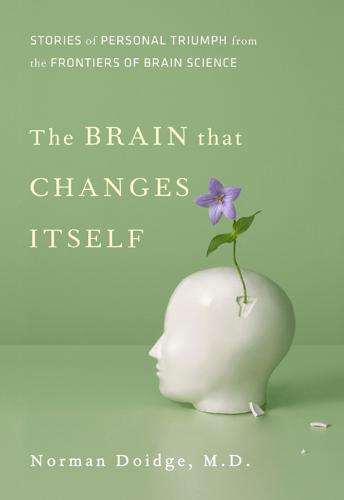
The Brain That Changes Itself: Stories of Personal Triumph From the Frontiers of Brain Science
by
Norman Doidge
Published 15 Mar 2007
The first module was a natural history intelligence, shared with many animals, which allowed humans to understand the habits of game animals, weather, and geography; how tracks in the ground and feces of a certain kind predicted finding an animal ahead; or that birds’ leaving predicted the coming of winter. The second module was technical intelligence, understanding how to manipulate objects, such as stones, and turn them into blades. The third module was social intelligence, also shared with other animals, which allowed humans to interact with and read the emotions of other humans and to understand dominance and submission hierarchies, courtship rituals, and how to nurture the young. Mithen theorizes that cultural monotony existed because the three intelligence modules were separate in the mind.
…
Fifty thousand years ago these barriers broke down. Complex tools useful for different purposes emerged. Art showed the mixing of all three kinds of intelligence, as in the case of a statue of a lion-man found in southern Germany. This carved object (technical intelligence) depicted the body of a man (social intelligence), combined with the head of a lion and the tusk of a mammoth (natural history intelligence). In France, ivory beads were carved to mimic seashells, a mingling of natural history and technical intelligence, and new tools were found with animals carved on them. Primitive religion, sometimes called “totemism,” developed, which merges a human social group’s identity with a totem animal—suddenly giving the natural world a social meaning.
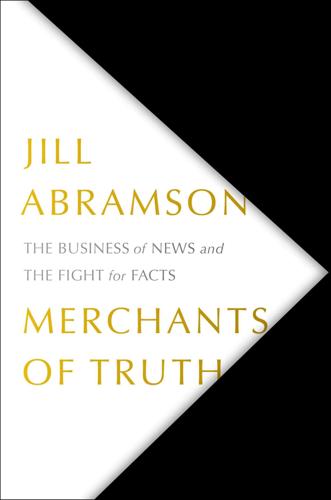
Merchants of Truth: The Business of News and the Fight for Facts
by
Jill Abramson
Published 5 Feb 2019
As they cast about frantically for someone fluent in the language of this kind of data, Peretti came knocking to offer them a deal that just might solve their problems. He invited the publishers to join a coalition he was assembling, called the BuzzFeed Partner Network. Joining meant the publishers agreed to let Peretti survey the reader traffic on their sites. In return for these jewels, they would be privy to the coveted Social Intelligence Report that BuzzFeed compiled. This, the publishers figured, would entitle them to the benefits of Peretti’s industry-leading aptitude at virtually no cost. They enthusiastically signed on the dotted line and welcomed the wizard of BuzzFeed to step behind their curtains and observe. Unaware of the precious intelligence they were forking over, or too charmed by Peretti’s acumen to resist, the publishers consented in staggering numbers.
…
“Johnny,” 372, 376 Apprentice, The (TV show), 305 Arc (content management system), 267, 414 Arnett, Peter, 60 Ashbrooke, Nancy, 360, 361, 362, 363 Asimov, Eric, 189 Atlantic, 132, 163, 186, 187, 251, 252, 411 Atlantic Media, 343 Auletta, Ken, 399 Aurora, Colo., shooting, 134 Aurthur, Kate, 143 Awlaki, Anwar al-, 55 Ayensu, Nana, 326–27 Baffler, 177 Baltimore Sun, 4 Balz, Dan, 249, 405, 406, 411 Bandito (Post metrics tool), 266–67, 414 Bannon, Stephen K., 22, 287, 289, 306, 378, 387, 389 Trump campaign and, 289, 298 Baquet, Dean, 199, 211, 371, 402, 412, 421 and Abramson’s job offer to Gibson, 220–21 Abramson’s relationship with, 200, 215, 216, 220–21 China princelings story and, 207 Clinton investigation story and, 380–81 as contender for executive editor position, 195, 198, 199–200 in decision to hold off on Trump-Russia story, 383–85 named Times executive editor, 221 native advertising issue and, 215 personality of, 200–201 as Times managing editor, 201, 203 on Times’s mistakes in 2016 coverage, 375–76 use of “lie” in Trump stories approved by, 391 on use of Wikileaks documents, 381–82 White House team increased by, 390 Barbaro, Michael, 370–74, 375 Barboza, David, 205–6, 211 Barboza, Lynn, 206 Barghouty, Phoebe, 362, 363 Baron, Marty, 265, 266, 268, 308, 309, 377, 404, 407, 412 Abramson’s relationship with, 201 as Boston Globe editor, 198, 407 and Catholic pedophiles exposé, 255, 408 as contender for executive editor position, 195, 198, 199, 200 Freedom of the Press Award won by, 421 investigative reporting championed by, 408 named Post executive editor, 255 Post’s Trump investigations pushed by, 407–8 Prakash’s relationship with, 266 Snowden leak and, 260 Barrack, Tom, 316 Barron, Christopher, 345 Barstow, David, 205 Bartosevich, Cat, 332 BBC, Savile scandal at, 214 Becker, Jo, 233, 379 Bee, Samantha, 79 Behar, Joy, 288 Being Digital (Negroponte), 16 Being John Malkovich (film), 50, 51 Bell, Melissa, 241, 248, 249, 266 Post joined by, 237–38 Vox founded by, 239, 248 Bennett, Phil, 229 Bensinger, Ken, 143, 323 Berke, Richard, 201, 372 Berkshire Hathaway, 83 Bernstein, Carl, 225, 408, 409 Bernstein, Joseph, 299 Bethesda Softworks, 166 Bezos, Jeff, 404 building scale as goal of, 412 decline in print circulation seen as inevitable by, 267 as First Amendment defender, 257–58, 420–21 Fox News attacks on, 420 hands-off approach to news coverage adopted by, 418 libertarianism of, 258 national and international coverage expanded by, 263, 264 Post bought by, 1–2, 5, 257–61 Post’s local strategy abandoned by, 406 Post’s technology as focus of, 266, 411–13 and revitalization of news staff, 406, 407 Trump’s attacks on, 418–19, 426 wealth of, 259 Weymouth fired as Post’s editor by, 263 Woodward’s “14 points” memo to, 262–63 Bharat, Krishna, 28 Bianchi, Adam, 333 Biden, Jill, 39 Bieber, Justin, 55 Big Brother, 51 birther movement, 309 Black Lips, 155 Black Lives Matter, 111, 342 Blackpeopleloveus.com, 17, 19 Blaine, Kyle, 314, 315, 317 Blair, Jayson, 3, 67, 78, 79, 184, 385 Blake, Heidi, 345 BlogPOST, 248 blogs, bloggers, 72 growing influence of, 22–23, 94 print reporters’ disdain for, 238 Bloomberg Businessweek, 207, 350 Blue Origin, 258 Boehner, John, 352 “Bored at Work Network,” 18, 32, 37 Boston Globe, 4, 71, 81, 259 Baron as editor of, 198, 407 Catholic pedophilia exposé of, 255, 408 investigative reporting at, 408 Times’s purchase of, 65, 66 Times’s sale of, 219, 259 Boston Marathon bombing, 212 Bourdain, Anthony, 152 Boustany, Nora, 230 Boyd, Gerald, 78, 184, 199 Bradlee, Ben, 82, 84, 228, 262, 265, 268, 408 Bradley, David, 251 Brauchli, Marcus, 238 in exit from Wall Street Journal, 229 fusing of digital and print operations by, 232, 242 Hills’s conflict with, 254–55 increasing isolation of, 251 named Post executive editor, 228–29 Narisetti’s metrics focus defended by, 243 replaced as Post editor, 255 revenue-generating projects pushed by, 250 “Salongate” and, 240–41 Breitbart, Andrew, 21, 22, 290 background of, 283–84 Bannon and, 285, 287 death of, 288 Drudge Report and, 284, 285 Huffington Post cofounded by, 285 mainstream media viewed as enemy by, 285–86 and “making a thing a thing,” 287 on Trump’s entertainment value, 288 Breitbart News, 22, 289–90, 387 Bannon as head of, 289, 306 as epicenter of right-wing media, 290 exponential growth of, 283 fake ACORN videos on, 286–87 as platform for alt-right, 286 psychographics and, 286 in war with BuzzFeed, 306–7 Weinergate story of, 287 Brexit, 279 Brock, Greg, 401 Broder, David, 230, 376 Brown, Campbell, 428 Buchanan, Pat, 50 Buffett, Warren, 83, 88, 97, 257, 430 Bumiller, Elisabeth, 378 Burton, Summer Anne, 119 Bush (GW) administration: deregulation of for-profit schools under, 90–91 in lead-up to Iraq War, 78–79, 92, 95 Business Insider, 182, 312 BuzzBot, 34 BuzzFeed, 8, 16, 37, 47, 56, 142, 197, 219, 224, 242, 243, 265, 273, 280, 300, 329 on Abramson firing, 223 aliases used by staff of, 39 Ben Smith and, see Smith, Ben blue-black/white-gold dress story of, 145–46, 309 blurring of line between news and advertising at, 343 celebrity stories as mainstay of, 35, 39, 111 clickbait on, 139, 267 community-specific Facebook pages of, 337–38 data mining by, 109–10, 112–13, 330 “Dear Kitten” ad of, 122–23 distinction between ads and news stories as irrelevant to, 121–22, 144 early hires at, 36–39 early vulgarity of, 39 emotional charge of stories emphasized by, 111 ethical standards adopted by, 139 Facebook’s importance to, 103, 104, 107–108, 109, 132, 153, 202, 272, 276, 277, 280, 281, 295, 301, 302, 311, 329, 428 financial problems of, 301, 328, 336, 342, 343, 365 fundraising rounds by, 39–40, 103, 120, 129–30, 301, 328 growth of, 123 lawsuits against, 326, 327–28, 427 likability as primary criterion for, 35, 108–9, 121 “list” posts of, 117–18 machine learning and, 34–35, 109, 330–31 and “making a thing a thing,” 120, 287 mass deletions of posts from, 138–39, 164, 310 metrics software of, 113, 116, 144, 330–31 mixing of buzz and news at, 144–45 in move from aggregation to original reporting, 123–25 native advertising program of, 40–41, 120–23, 136–37, 337, 343 new business model of, 160 Nguyen hired by, 113 “No Haters” worldview of, 108–9 nostalgic posts on, 118 Obama native advertising campaign of, 136–37 Peretti’s initial concept for, 33–34 in pivot to video, 332, 336 plagiarized posts at, 138 preservation of informed public as new goal of, 139–40 quality news and, 10 quizzes as mainstay of, 119–20 reaction buttons introduced by, 302–3 “Red, White & Blacklisted” party of, 315–16 relatability as watchword of, 15–16 revenue growth at, 135 shareable content as goal of, 139, 246, 330 Silverman hired by, 311 Social Intelligence Report of, 110–11 Steele dossier published by, 323–24 steep learning curve of, 5 Stopera and, see Stopera, Matt super-sharers and, 111–12 as tastemaker, 120, 125 traditional news media and, 2, 4, 6, 275–76 traffic goals of, 117 Trump’s 2014 interview with, 305–6 2012 convention party hosted by, 135–36 valuation of, 365 verticals of, 123, 132 virality as organizing logic of, 35–36, 111–12, 113–19 Watts and, 35 BuzzFeed Brews, 137–38 BuzzFeed Motion Pictures, 301, 328–29, 334, 335 blurring of line between news and advertising at, 332 Facebook Ops department of, 335 Frank as head of, 331–32, 333–34, 336–37 BuzzFeed News: added to Facebook list of trusted sources, 317 Ben Smith hired as head of, 127–28 Ben Smith’s assembling of team for, 128–29, 130–31 Ben Smith’s expansion of, 141–43 as blindsided by Trump win, 321 Breitbart News war with, 306–7 buzz and, 144–45 Clinton campaign covered by, 318–19 cuts to, 336 expanded staff of, 301 expansion of “hard news” stories of, 140 Facebook “sentiment data” used by, 303–4 gender politics stories featured at, 140 Gibson and, 301 Heat Map of, 144 internet savvy of staff at, 143 investigative reporting by, 141, 301, 302, 345 as loss leader, 317 opinion pieces on, 342–43, 344–45 political reporters at, 305, 313 run-and-gun reporting style of, 133–34 Super Tuesday live stream of, 314–15 Times’s convention coverage collaboration with, 135–36 Trump campaign covered by, 302, 305–6, 313–14, 427 TV-style content added by, 301 Twitter morning show of, 343, 345 2012 election coverage of, 128–29, 131–33 2016 election coverage of, 138, 320 verticals of, 342–43 as wire service for social web, 134 BuzzFeed Partner Network, 110–11 Caliphate, The (podcast), 425 Callimachi, Rukmini, 425 Cambridge Analytica, 279, 298, 307, 400 Cantwell, Christopher, 354 “Capitalism and Schizophrenia” (Peretti), 15 Carleton University, 42, 44 Carr, David, 169–70, 183, 214, 224 Carroll, John S., 71–72, 199 Carroll, Wallace, 71 cats, internet and, 36 CBS News, 3–4, 60 Center for Investigative Reporting, 236 Cernovich, Mike, 283, 299, 324, 338 Chandler family, 225, 226 Charleston Gazette-Mail, 8 Charlottesville, Va., white nationalist rally in, 353–55 “Charlottesville: Race and Terror” (documentary), 354–55 Chartbeat, 243–47, 262, 266 Chasing Hillary (Chozick), 381 Chattanooga Times, 65 Chen, Steve, 53 Chozick, Amy, 318–19, 371, 381 Christmas in Darfur (documentary), 356 Chunn, Nancy, 78 Cillizza, Chris, 239, 266, 411, 4054 citizen journalists, 72 classified advertising: decline of, 26, 67, 89 Post’s reliance on, 26, 83, 89 Clayton, Tracy, 320 clickbait headlines, 280, 413, 414–16 BuzzFeed’s use of, 139, 267 Chartbeat and, 244 Post’s use of, 228, 267–68, 280, 406, 414–16 Times’s avoidance of, 74, 218 Clinton, Bill, Lewinsky scandal and, 239, 284 Clinton, Hillary, 132 Abramson and, 377–78 private email server used by, 178, 379–80 Times mistrusted by, 377–78 Clinton, Hillary, in 2016 election campaign, 287, 290, 299, 300, 315, 318, 322 Election Night and, 371 email investigation and, 377 Times’s coverage of, 378–79 Clinton Cash (Schweizer), 378–79 Clinton Foundation, 378 CNBC, 375 CNN, 54, 55, 60, 385–86, 411 travelogues of, 152 Trump’s attacks on, 325 Vice’s targeting of, 346, 348, 369 cognitive biases, 309–10 Cohen, Michael, 327 Cohn, Nate, 370 Coleman, Greg, 122 Coll, Steve, 86–87, 88, 90 Collectively, 165 Columbia Journalism Review, 290, 381, 389, 394 Columbia Record, 234 Comedy Central, 120 Comey, James, 377, 384, 392 Committee to Protect Journalists, 421 Confessore, Nick, 372, 374 Conrad, Deborah, 178 conspiracy theories: Facebook and, 296 internet and, 283 contagious media, 18, 30, 285 see also virality Contagious Media LLC, 33 Conway, Kellyanne, 339 Cook, Tim, 213 Cooper, Anderson, 315, 428 Cooper, Frank, 336, 337 Coppins, McKay, 130, 132, 305–7, 313 Coppola, Sofia, 51 Costa, Robert, 406, 407 Couric, Katie, 17 Cox, Chris, 32, 277 Craigslist, 26, 68, 86, 89 Cramer, Richard Ben, 130, 318, 322 Cramer, Ruby, 130, 313, 318–21, 322 Creators Project, 162–63 Creighton, Andrew, 364–65 CrowdTangle, 295, 304, 340 Cruz, Ted, 138 Daily (podcast), 373 Daily Beast, 362, 364 Daily Mail, 429 Daily Show, 79 Daily Wire, 429 Dairieh, Medyan, 174–75 data journalism, 290 data mining: as accepted part of online world, 271 BuzzFeed’s reliance on, 109–10, 112–13, 330 by Facebook, 271, 274, 278, 341 David, Laurie, 21 Davis, Charles, 164 Dawkins, Richard, 17 DealBook, 189–90, 375 “Dear Kitten” (Purina ad), 122–23 Death of Cool, The (McInnes), 369 Democratic National Committee, leaked documents of, 381–82 Democratic Party, hacked emails of, 319 Denton, Nick, 246–47 Denver Guardian, 300 Denver Post, 423–24 DeploraBall, 338 DeVigal, Andrew, 197 Devil’s Bargain (Green), 285 digital news media: aggregation sites in, 284 emotional resonance as touchstone of, 273, 275–76, 280 Facebook as platform for, 272–73 fact-checking and, 310 iPhone’s impact on, 32–33 low wages paid by, 175 news cycle and, see news cycle, speeding up of pivot to video of, 328–29, 347 print reporters’ disdain for, 238 pro-Trump wing of, 338–39 “social news” prioritized by, 275 targeting of readers by, 279–80, 281 traditional news media challenged by, 2, 4, 5, 6 vague job titles in, 239, 249 see also BuzzFeed; Vice Media Dillon, Robbie, 47–48 Dish, The (blog), 137 Dog House, 76 Dolnick, Sam, 193, 197, 205, 373, 394–96 Dowd, Maureen, 68, 75, 388, 411 Dow Jones, 67 Downie, Leonard, 7, 84, 89, 93, 98, 228, 229, 262 Drudge, Matt, 21, 30, 73, 239, 284 Drudge Report, 21, 73, 239, 284, 285 Dubuc, Nancy, 369 Duenes, Steve, 204 Duhaime-Ross, Arielle, 351 Dunham, Lena, 224 Dunlap, David, 396–97, 402 “Editing White Female” (Glasser), 223 Elder, Miriam, 141, 143 elections, U.S.: of 2004, 20, 21 of 2008, 98, 99, 126 of 2012, 128–29, 131–33, 135–37 elections, U.S., of 2016, 2 BuzzFeed coverage of, 138, 313–17, 320 divisiveness of, 281 Facebook and, 303 fake news and, 320, 322 Russian interference in, 326, 341–42, 381, 382, 383 see also Clinton, Hillary, in 2016 election campaign; Trump, Donald, in 2016 election campaign Emanuel, Ari, 178 Emergent, 310 Emerson Collective, 343 emotional charge, of news stories, 111 Entous, Adam, 406, 411 Esquire, 268 Eyebeam, 18–19 Facebook, 6, 31–32, 106, 108, 132, 204, 275, 415 accused of liberal bias, 292–93 Audience Optimization Tool of, 282 beginnings of, 95–96 BuzzFeed added to list of trusted sources of, 317 BuzzFeed’s community-specific pages on, 337–38 BuzzFeed’s reliance on, 103, 104, 132, 153, 272, 276, 277, 295, 301, 303–4, 311, 329, 428 Cambridge Analytica and, 279, 298 conspiracy theory stories on, 296 constantly changing algorithms of, 105–6, 271–72, 282, 290–91, 295, 302, 329, 332, 337 criticized for lack of control over content, 154 Custom Audiences tool of, 298 dangerous omnipotence of, 400 Dark Post tool of, 298–99 data mining by, 271, 274, 278, 341 data security issues of, 279, 342, 400 decline of sharing on, 282 demographic of, 106–7 digital advertising dominated by, 7, 27, 254, 367, 397, 404, 428 emotional resonance as touchstone for, 273 expanded reach of publishers’ posts on, 291 explosive growth of, 31, 104 fake news spread by, 277, 289, 295, 296–97, 317, 322, 427–28 growing influence of, 274, 280, 303, 309 human editors controversy at, 291–94, 295–96, 317 Instant Articles on, 267, 280–81, 329–30, 412 Like button of, 107–8, 109 live-video streaming tool of, 314 news content on, 124 in pivot to video, 329, 332 political ads on, 278 political polarization and, 273–74, 279–80, 281, 282–83, 312 Post and, 96–97, 232–33 priority of friends vs. publishers’ posts on, 276, 281–82 psychographics and, 278–79 publishers and, 272–73 ranking of stories on, 275–77 Russian fake news spread by, 289, 341–42, 420 “sentiment data” of, 303–5 “social contagion” experiment of, 303 supposed neutrality of, 274 targeted advertising on, 277–78, 298, 341 Facebook (cont.)
…
Paul Pioneer Press, 424 Samberg, Andy, 54 Samsung, 393 Sandberg, Sheryl, 213 Sanger, David, 371, 382 Saturday Night Live (TV show), 54 Savile, Jimmy, 214 Scaramucci, Anthony, 385–86 Schafer, Gene, 223 Schmidt, Andrea, 358–59 Schmidt, Eric, 54 Schmidt, Michael, 379–80, 392 Schmitt, Eric, 92 Schoofs, Mark, 141–42, 302, 323, 345 Schreiber, Liev, 268 Schumpeter, Joseph, 153 Schweizer, Peter, 378–79 Scroll, 247 search engine optimization (SEO), 30, 31, 74, 242 Seattle Times, 249 September 11, 2001, terrorist attacks, 27, 49, 172 Sessions, Jeff, 416 Shadid, Anthony, 208–9 Shapiro, Ben, 290 Sheehan, Neil, 402 Shepherd, Jack, 38, 112 Shireman, Robert, 252 Shirky, Clay, 75–76, 193, 196 Shitty Media Men, 361 Shulgin, Alexander, 180–81 Sicardi, Arabelle, 117 Siegal, Al, 152, 189 Silver, Nate, 190, 248, 290, 375 Silverman, Craig: on BuzzFeed dress color story, 309 BuzzFeed joined by, 311 cognitive biases studied by, 309–10 fact-checking business of, 310–11 fake news investigations of, 294–95, 296–98, 299–300, 309, 320, 322, 340–41 as online media watchdog, 310 Simkins, Modjeska, 235 Simpson, Glenn, 323 Slim, Carlos, 5, 9 Times loan of, 188, 430 wealth of, 188, 259 “small world” networks, 15–16 smartphones, impact on digital news of, 32–33, 95 Smith, Ben, 224, 301, 411, 427 background of, 125 and blue-black/white-gold dress story, 146 in BuzzFeed 2016 election night coverage, 320, 321 BuzzFeed news team assembled by, 128–29, 130–31 BuzzFeed opinion pieces and, 345 in debate with Sullivan on native advertising, 137 hired as head of BuzzFeed news department, 127–28 IM interviews conducted by, 135 on impact of Facebook’s “sentiment data,” 304–5 importance of Facebook in 2016 election predicted by, 303, 305 journalism career of, 125–26, 131, 133–34 as master of chasing scoops, 131 NewsFeed podcast of, 342 news team expanded by, 141–43 at Politico, 126, 131, 134 posts critical of BuzzFeed advertisers deleted by, 139 in search for new revenue sources, 344 Steele dossier publication approved by, 323–24, 328 Twitter followers of, 126–27, 130 and use of Facebook “sentiment data,” 304 Smith, Shane, 4, 176 authenticity as prized by, 351 in buyback of Vice, 47 CEO title relinquished by, 369, 426 controversial Liberia documentary of, 169–70 embroidered background story of, 42 and evolution of Vice into serious news brand, 158, 171 extravagant spending by, 175–76 HBO weekly show as priority of, 357 international expansion stressed by, 368 Obama interviewed by, 179, 180 as out of touch with Vice employees’ concerns, 364 overtaking CNN as goal of, 346, 348, 369 sexism of, 59 transformative vision of, 60–61 and Trump’s election, 353 as Vice Media cofounder, 43–44 Vice News as envisioned by, 346, 369 and Vice News Tonight, 353 and Vice’s move into video, 56–57 and Vice’s sexist culture, 363–64 on Vice TV show Emmy nomination, 179 Virtue advertising agency created by, 158 Snapchat, 178, 249, 329, 412 Snowden, Edward, 80 NSA documents leaked by, 80, 215, 259–60, 268, 382 Times mistrusted by, 215 Social Intelligence Report, 110–11 social media, 232 credibility of news services as unimportant on, 294–95 explosion of, 30–32, 103 as news platforms, 294–95 Post content posted by, 412 power of, 5–6 as primary source of news for majority of Americans, 274 Social Network Soiree, 19 Softbank, 103 Sontag, Deborah, 402 Sorkin, Andrew Ross, 375 DealBook and, 189–90 Southern Poverty Law Center, 368 Spayd, Liz, 384, 385 Spencer, Richard, 353 Spicer, Sean, 339 Spotlight (film), 198, 255, 268 Steel, Emily, 362–63 Steele, Christopher, 323, 384 Steele dossier: critiques of BuzzFeed’s publication of, 324–25 lawsuits over, 326, 327–28 unverified claims in, 323 Steiger, Paul, 223, 408 Steiger, Wendy, 223 Steinberg, Jon, 120, 132, 135 Stelter, Brian, 184 “stickiness,” 23, 30, 204 Stopera, Dave, 116 Stopera, Matt, 104, 107, 108, 116, 288 as BuzzFeed early hire, 37–39 and BuzzFeed “List” formula, 117–18 as BuzzFeed’s relatability expert, 115–16 as expert on trend dynamics, 123 gender politics stories emphasized by, 140–41 on importance of adding reporting to BuzzFeed mix, 123–24 and “making a thing a thing,” 287 in move to BuzzFeed newsroom, 128–29 nostalgic posts by, 118 as trend dynamics expert, 123, 144 in 2012 election coverage, 135 Strange Justice (Mayer and Abramson), 196 Sullivan, Andrew, 22, 94, 137 Sullivan, Margaret, 324, 380, 385 Sulzberger, Annie, 65 Sulzberger, Arthur Gregg, 193, 203, 426 Abramson’s relationship with, 395, 396 as candidate for Times publisher position, 65, 394–96 innovation demanded by, 396, 398 named Times editor, 395, 396 reporting career of, 395 “Times Innovation Report” and, 218–20, 394 Times news staff joined by, 197 as Times publisher, 373, 430 on Times’s mistakes in election coverage, 376 Sulzberger, Arthur Ochs, Jr., 1, 5, 9, 407 Abramson fired by, 221–24 Abramson named as executive editor by, 201–2 Abramson’s relationship with, 197–98, 207–8, 216, 402 and blurring of line between news and business departments, 69–70, 189 business-side job cuts by, 191 Chinese princelings story and, 206, 207 Google investment declined by, 97 Keller and, 66, 67–68 lasting achievements of, 427, 429 “last man standing” strategy of, 70–71 liberal views of, 78 news staff cuts and, 70–71, 186, 187, 190–91 premium projects envisioned by, 189 and purchase of Post’s share in International Herald Tribune, 66, 86 retirement party of, 429–30 Robinson fired by, 202–3 shareholder unhappiness with, 63, 74 Times’s future as envisioned by, 62–63 unflattering articles on, 64, 74–75, 79, 183, 187 and Wall Street Journal rivalry, 183 website paywall ordered by, 193–94 Sulzberger, Arthur Ochs, Sr.
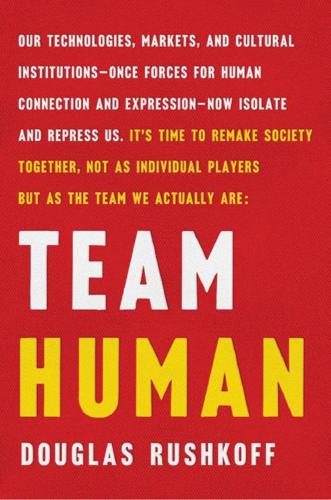
Team Human
by
Douglas Rushkoff
Published 22 Jan 2019
Think of it this way: a quarterback, point guard, or midfielder, no matter their skills, is only as valuable as their ability to coordinate with the other players; a great athlete is one who can predict the movements of the most players at the same time. Similarly, developing primates were held back less by their size or skills than by their social intelligence. Bigger groups of primates survived better, but required an increase in their ability to remember everyone, manage relationships, and coordinate activities. Developing bigger brains allowed human beings to maintain a whopping 150 stable relationships at a time. The more advanced the primate, the bigger its social groups.

Physics of the Future: How Science Will Shape Human Destiny and Our Daily Lives by the Year 2100
by
Michio Kaku
Published 15 Mar 2011
This has given rise to a new field called “social robotics,” which is designed to give robots the qualities that will help them integrate into human society. Scientists at Hanson Robotics, for example, have stated that one mission for their research is to design robots that “will evolve into socially intelligent beings, capable of love and earning a place in the extended human family.” But one problem with all these approaches is that the military is by far the largest funder of AI systems, and these military robots are specifically designed to hunt, track, and kill humans. One can easily imagine future robotic soldiers whose missions are to identify enemy humans and eliminate them with unerring efficiency.
…
Stanford Conference Ponders a Brave New World with Machines More Powerful Than Their Creators,” San Francisco Chronicle, May 12, 2006, http://articles.sfgate.com/2006–05–12/business/17293318_1_ray-kurzweil-machines-artificial-intelligence. 18 “If you could blow the brain up”: Kurzweil, p. 376. 19 Philosopher David Chalmers has even catalogued: http://consc.net/mindpapers.com. 20 “life may seem pointless if we are fated”: Sheffield, p. 38. 21 “One conversation centered”: Kurzweil, p. 10. 22 “It’s not going to be an invasion”: Abate, San Francisco Chronicle, May 12, 2006. 23 “intelligent design for the IQ 140 people”: Brian O’Keefe, “The Smartest (or the Nuttiest) Futurist on Earth,” Fortune, May 2, 2007, http://money.cnn.com/magazines/fortune/fortune_archive/2007/05/14/100008848/. 24 “It’s as if you took a lot of good food”: Greg Ross, “An Interview with Douglas R. Hofstadter,” American Scientist, January 2007, www.americanscientist.org/bookshelf/pub/douglas-r-hofstadter. 25 “will evolve into socially intelligent beings”: P. W. Singer, “Gaming the Robot Revolution,” Slate, May 21, 2009, www.slate.com/id/2218834/. 26 “When I was a kid”: Rodney A. Brooks, “Making Living Systems,” in John Brockman, ed., Science at the Edge: Conversations with the Leading Scientific Thinkers of Today (New York: Sterling, 2008), p. 250. 27 “My prediction is that by the year 2100”: Rodney A.
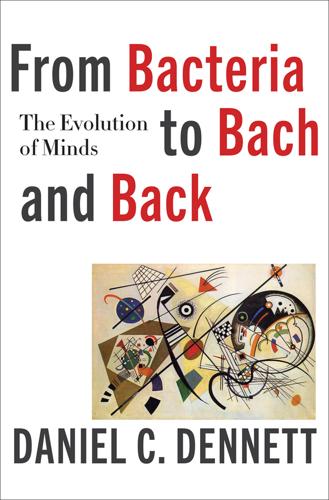
From Bacteria to Bach and Back: The Evolution of Minds
by
Daniel C. Dennett
Published 7 Feb 2017
Or perhaps aquatic plants (Wrangham et al. 2009) became a critical “fallback food” during difficult times, promoting wading in ever deeper water, breath holding, and perhaps other physiological revisions. All very controversial and likely to be controversial for some time. In any case, could bipedality and its ensuing suite of enabled competences open the floodgates for language and culture? Another proposed threshold is social intelligence (Jolly 1966; Humphrey 1976): the competence to interpret others as intentional systems whose actions can be anticipated by observing what these others observe and figuring out what they want (food, escape, to predate you, a mating opportunity, to be left alone). This competence is often called TOM (an acronym for theory of mind), which is an ill-chosen term because it invites us to imagine those having this competence as comprehending theoreticians, astute evidence gatherers and hypothesis considerers, instead of flying-by-the-seat-of-their-pants agent anticipators, blessed with an interpretive talent they don’t have to understand at all.
…
F., 98 Skinnerian creatures, 98, 99, 100, 151, 331 nuerons as, 165 semantic information acquired by, 119 Skinnerians, 39 “Skinner Skinned” (Dennett), 39 skyhooks, 56, 58, 277, 280, 285n use of term, 54 slime molds, 146–47 Smith, George, 406 Smith, Murray, 249 Smith, Stevie, 117 Snow White and the Seven Dwarfs (film), 381 “Social Gene, The” (Haig), 120n social intelligence, as threshold in cultural evolution, 259–60 social mammals, 251 social norms, 42 reason-giving and, 314, 315 social sciences, memetic theory vs., 242–43 Socrates, 195, 300, 331, 407 software: compiled code for, 66–67 functions vs. mistakes in, 81–82 hierarchical architecture of, 163, 165 legacy code in, 171–72 pseudo-code for, 66, 67 serendipity vs. clobbering in, 47 source code for, 66 Turing’s revolutionary, insight and, 55–56 see also computers, computing software apps, memes compared to, 295, 301–4 “soliloquies,” for animal behavior, 91 Sontag, Susan, 236n Sorceror’s Apprentice, 393 Soul Searching (Humphrey), 369 source code, 66 “spaghetti code,” 83 speciation, 7 species chauvinism, 11, 22 spell-checkers, 403, 405 Sperber, Dan, 220, 225–26, 233, 289, 293n Spiegelman, Sol, 255n spindle cells, 174 Spitsbergen, 44 Sputnik, 217 stages, of words, 187 Sterelny, Kim, 118 stone circles, natural, 44, 45, 46, 46 stotting, 89–90, 289, 292, 295–96, 343, 411 Strawson, Galen, 224 Strawson, Peter F., 288 subjective experience, 349–51 suffering, in nonhuman species, 338, 369 “summer vision project,” 72 supernormal stimuli, 83–84 supply and demand, law of, 307, 310 Sutherland, John, 27–28 sweetness, 355–56 Swiss, Jamy Ian, 319 symbionts, 193n memes as, see memes, as symbionts viruses as, 284–85 symbiosis, 8 symbolists, 384 synanthropy, 122, 197–98, 199 Szilard, Leo, 71 Szostak, Jack, 27–28, 30 talking to oneself, 354 as thinking tool, 296–98, 341, 345–46, 350 see also self-monitoring Talleyrand, Charles-Maurice, 340 technology: growth of, 9 as outgrowth of thinking tools, 3 uncomprehending reliance on, 407–8 technology transfer, 7, 389 teleology: of Aristotle, 33 Cartesian gravity and, 34 Darwin and, 33 Marx on, 33–34 see also reasons termite castles, 51, 59, 340, 409, 410, 411 Test-Operate-Test-Exit (TOTE), 375 texts, transmission errors in, 182 Theaetetus (Plato), 299n theory of mind (TOM), 259, 293 things, words and, 272–74 thinking, “wordless,” 184 thinking tools, 98–99, 152, 171, 302–3, 331, 370, 373, 375, 412 evolution of, 3, 98–99 as human specialty, 3, 54–55, 99, 101, 341 science and technology as outgrowth of, 3 talking to oneself as, 296–98, 341, 345–46, 350 words and, 389 thinkos, 229, 321 third-person point of view, in concept of mind, 366 Thomas, Elizabeth Marshall, 87 Thompson, D’Arcy, 9 Tilghman, Shirley, 43n Tinbergen, Niko, 83 “tip-of-the-tongue” phenomenon, 184–85, 347 TOE (theory of everything), 13 tokens: in culture, 226–27 private vs. public, 185–86, 189–90 spoken vs. silent, 183–86 subpersonal, 347–53 types vs., 182–83, 186–87, 200 Tomasello, Michael, 259–60, 264, 286, 344 Tononi, Giulio, 112n tool making, 258 tools, words as, 292 “toy problems,” 73 trade secrets, 128–29, 136 tradition, artists and, 377 transmission errors, in memes, 234–35 Tree of Life, 323, 379 trees, 336 adaptation in, 121–22 reproduction in, 144–45 semantic information and, 119–20, 121–22 tremes, 237, 392 triggered reproduction, 245–46 trust, 304 cooperation and, 409–10 as cultural phenomenon, 147 Tufts University, 406 Turing, Alan, 70, 72, 77, 116, 151, 152, 162–63, 197, 200, 228, 236, 298, 323, 324, 385 AI and, 56, 72 difference between discoveries of Darwin and, 58–59 inversion of reasoning by, 4, 55–56, 57–58, 68–69, 75, 162, 411 Pilot ACE computer of, 59 Turing-compatibility, 55–56 Turing Test, 365n, 395–96, 403 types, tokens vs., 182–83, 186–87, 200 typos, 321 Uexküll, Jakob von, 78–79 Umwelt, 88, 98–99, 122, 125, 128, 165–66, 194, 336, 356 as things that matter, 366 use of term, 78–79, 80 unconscious processes, 100–101 unconscious selection, 198, 232, 233, 272, 296 understanding, see comprehension universal grammar, 193–94, 275 unlearning, 126 uranium 235, 71 User Illusion, The (Nørretranders), 335n user-illusions, 341, 343 in communication, 344 computer screen as, 202, 346–47 consciousness as, 5, 335n, 346–47, 358, 366, 367, 370, 390–91, 412 utility, natural selection and, 120 variation, in natural selection, 138, 139 Variation of Animals and Plants under Domestication, The, 198 Verstehen (Dilthey), 94 vervet monkey, 265, 289 viruses: deception by, 114–15, 118 memes compared to, 173, 215, 240, 254, 284–85 reproduction of, 254 as symbionts, 284–85 words compared to, 189, 190, 245 vision, neural activity in, 347–53 vitalism, 192 vitamin C, synthesis of, 178 Voltaire, 29 von Economo neurons, 174 Von Neumann, John, 114, 116, 151, 152, 162–63 “von Neumann machines,” 151, 152, 154, 155, 156, 159 Walt Disney Productions, 381 Watson (computer program), 274n, 389–90, 391, 395, 397, 398–99 medical expertise of, 401–2 in TV ads, 393, 395 wealth, 299 Wegner, Daniel, 345, 346 Werner, Brad T., 44, 45, 46, 46 West Side Story (musical), 227–28, 326 Wetware (Bray), 48 “what for” questions, 38–39 evolution of “how come” questions into, 40–41, 48–49, 411 in origins of language, 267–68, 270 What Is Thought?

Catalyst 5.8: The Perl MVC Framework
by
Antano Solar John
,
Jonathan Rockway
and
Solar John Antano
Published 15 Nov 2010
He has also won the yahoo hack award twice in India consequently, once for developing a Collaborative Browsing Mechanism using lines of code shorter than this biography without any server or proxy and then yet again for developing a Hybrid Search Engine from scratch in 24 hours that uses Machine and Social Intelligence to identify, search, and distill information in contexts you expect! I first like to thank the Catalyst Community without whom this book could have never been possible. I also convey my gratitude to the original author Jonathan, other members of the community like Matt S. Trout, Jess Robinson along with all those who taught me Catalyst!
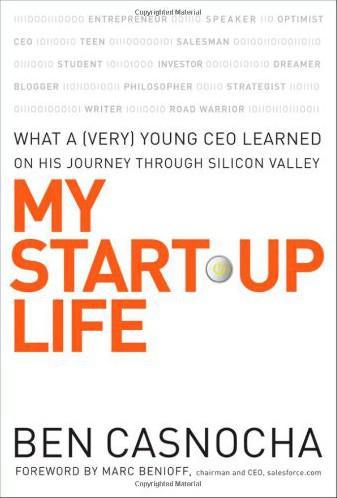
My Start-Up Life: What A
by
Ben Casnocha
and
Marc Benioff
Published 7 May 2007
These kinds of businesses can be successful but may be less rewarding for the entrepreneur in the long term. I have met other young entrepreneurs who are much more successful than I am financially, but unless jealousy is shutting down my mental functions, I don’t think they’ve developed the emotional and social intelligence that will help them in later careers. If you want to start a business, think about judging its worthiness and ultimate success by metrics other than simple financial gain. The experience you gain developing critical life skills should certainly be high on the list. A people-intensive first business can be worth it.
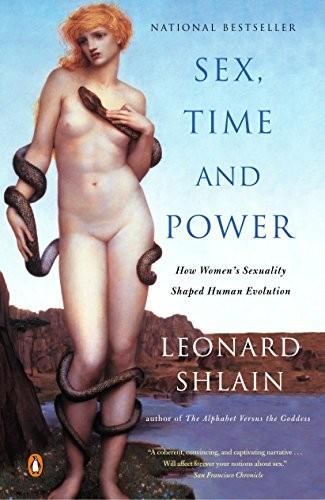
Sex, Time, and Power: How Women's Sexuality Shaped Human Evolution
by
Leonard Shlain
Published 2 Aug 2004
.* According to the Aquatic Ape Theory, when we emerged dripping wet from the riverbank we had lost our fur, acquired a thick layer of blubber we call subcutaneous fat, had downward-pointing nostrils streamlined for swimming, and, most significantly, were perpendicular.12 The other missing piece of the great puzzle is the evolutionary reason for our massive brain, a subject that will be dealt with in greater detail in a later chapter. Social intelligence, language, accuracy in throwing, and many other reasons have been put forth, yet none of them has been uniformly accepted as the primary one. Once we had made the transition to bipedalism (for whatever reason) and grew an outlandishly sized brain (for whatever reason), we made an arresting discovery.
…
These include a “restructuring of social relations,” the “appearance of economic specialization,” and an as yet to be identified “technological invention.”9 Stephen Mithin, in his 1996 book, The Prehistory of the Mind, proposes that early Homo sapiens’ cognition was divided among separated “domains of knowledge.” Although each domain had been expanding, the technical intelligence concerning how to make tools was isolated from natural-history intelligence, which in turn had little interaction with the domains of social intelligence, general intelligence, and language. Mithin believes that the Creative Explosion occurred when some event caused the walls to come tumbling down. Like Gabriel’s trumpet blast at Jericho, an unknown factor smashed through the barriers erected in the brain that kept the various domains from knowing what another knew. ————— In 1866, the biologist Ernst Haeckel proposed his Biogenetic Law: “Ontogeny is the short and rapid recapitulation of phylogeny.”

The Emotionally Absent Mother: A Guide to Self-Healing and Getting the Love You Missed
by
Jasmin Lee Cori
Published 13 Sep 2010
Researchers have been studying how the interactions that are the basis of secure attachment affect brain development and functioning.21 The area of the brain most involved in complex social behaviors (so much so that it is sometimes referred to as the social brain) is particularly sensitive to these early interactions. It will sound like an oversimplification, but these caring, attuned interactions actually grow this part of our brains, which is responsible for important social abilities and social intelligence.22 So considering everything from the growth of neurons to one’s sense of self-esteem, the security of our attachment is very important. Some consider this the most critical of all childhood needs. How can I know if I was securely attached to my mother? You won’t know precisely what your relationship with your mother was in your earliest years, but here are some important clues: • moments from your early relationship that were captured in memories • your current feelings about your early relationship with your mother • your patterns in relationships throughout your life and specifically your ability to form strong bonds with others Since this last item is complex, it will take some time to get a clear picture of it.
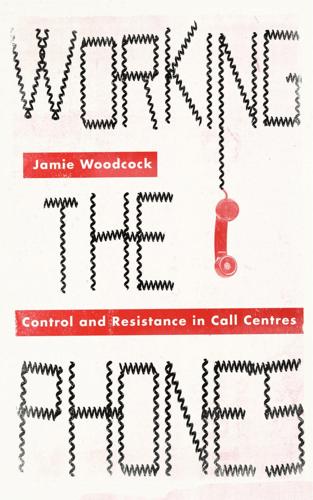
Working the Phones: Control and Resistance in Call Centres
by
Jamie Woodcock
Published 20 Nov 2016
These attempts at enthusing workers are ‘novel forms of regulation’ focused ‘on those moments of life that once flourished beyond the remit of the corporation’.25 The challenges of management in the call centre thus feed into the buzz sessions. There is a twofold realisation. First, it is only when ‘workers had checked-out (either literally or mentally) that they begin to feel human again and buzz with life’. Second, ‘that call center work requires high levels of social intelligence, innovation and emotional initiative’. So various attempts emerge that try to ‘find a way of capturing and replicating that buzz of life . . . on the job’.26 This explains examples like this in the call centre: 75 Working the Phones The workers looked at the floor anxiously, feigning smiles but knowing that something pretty awful was about to happen.

Carbon: The Book of Life
by
Paul Hawken
Published 17 Mar 2025
Although it makes up an astonishingly small percentage of the universe, barely one in one hundred thousandths, carbon is found in 90 percent of the molecules in interstellar clouds and 99 percent of the thirty-three million substances on Earth. If carbon were an animate being, we would praise its social intelligence, its gregarious, congenial, and flexible nature, and how easily it makes friends. If a carbon molecule is minutely analyzed, it is a particle zoo: leptons, quarks, bosons, mesons, baryons, and other subatomic particles that last infinitesimal fractions of a second appear and disappear. Yet, we can scrape carbon off the bottom of a cast-iron frying pan or smear a burnt candlewick on our forefinger.

Architects of Intelligence
by
Martin Ford
Published 16 Nov 2018
If you think about a lot of people who are building these devices, right now, they’re focused on the cognitive intelligence aspect of these devices, and they’re not paying much attention to the emotional intelligence. But if you look at humans, it’s not just your IQ that matters in how successful you are in your professional and personal life; it’s often really about your emotional and social intelligence. Are you able to understand the mental states of people around you? Are you able to adapt your behavior to take that into consideration and then motivate them to change their behavior, or persuade them to take action? All of these situations, where we are asking people to take action, we all need to be emotionally intelligent to get to that point.
…
She serves on several editorial boards in the areas of autonomous robots, affective computing, entertainment technology and multi-agent systems. She is also an Overseer at the Museum of Science, Boston. Her research focuses on developing the principles, techniques, and technologies for personal robots that are socially intelligent, interact and communicate with people in human-centric terms, work with humans as peers, and learn from people as an apprentice. She has developed some of the world’s most famous robotic creatures, ranging from small hexapod robots, to embedding robotic technologies into familiar everyday artifacts, to creating highly expressive humanoid robots and robot characters.

The Life and Death of Ancient Cities: A Natural History
by
Greg Woolf
Published 14 May 2020
Like all early humans they were knowledgeable about the species they hunted and the plants they ate; they were skilled manipulators of the material world able not just to modify objects into tools but also to construct tools made of several materials combined. Like all humans they had evolved a powerful social intelligence, and had a keen imagination. The first Americans were adaptable too. Their ancestors had survived both the Ice Age that created the land bridge from Asia to Alaska, and the warm periods that followed. As they spread south and east their descendants had had to learn to hunt and fish new species; to survive first in the sub-Arctic, then in the Great Plains; to colonize tropical jungles and the Altiplano of South America; and finally to use and domesticate a range of animals and plants.
…
In chimpanzee and human society the smaller groups are not stable in membership. This makes our kind of sociality astonishingly flexible, but it takes a lot more work. Primates spend a lot of time engaged in social grooming: it has even been suggested that human language developed as an extension of that activity. Human social intelligence is far superior to that of even the largest brained of our primate cousins. We can cooperate in large groups to do quite complicated tasks such as planning and organizing a hunt, building a house, or playing football. It is easier enough to teach a chimpanzee to play a game with a ball, but unimaginable that a group of chimpanzees could learn to play team sports.

Times Square Red, Times Square Blue
by
Samuel R. Delany
Published 1 Jan 1999
T H R E E , T W O , O N E , C O N TA C T : T I M E S S Q U A R E R E D What we must recall from our current theory, from our historical practice, is that such institutions and the resultant social contact practices they would develop and contour would no more overturn and rot our society than has alcohol, pop music, the novel, the opera, tobacco, the nightclub, any number of recreational drugs, makeup, men’s clubs, tea-room sex among gay men, universal white male suffrage, lending libraries, comic books, black suffrage, women’s suffrage, Catholicism, legal abortions, Protestantism, public education, Judaism, television, the waltz, coeducation, racial integration, jazz, the pin-up, the pornographic film, body piercing, bundling, taffypulls, tattoos, the fox trot, films, the theater, laws repealing the death penalty, beauty parlors, the university, laws preventing child labor, church marriages for the working classes—or any other social institution that is now, or was once, decried from one podium, pulpit, or another as the End of Civilization as We Know It. Such institutions are always already within the social; indeed they are the social—and are not outside it. That is why they all require social intelligence in their administration. All are always already in tension with other institutions. That is why they all have at one time or another required more or less vigilant protection as a set of freedoms. §10.5. Interclass contact conducted in a mode of good will is the locus of democracy as visible social drama, a drama that must be supported and sustained by political, educational, medical, job, and cultural equality of opportunity if democracy is to mean to most people any more than an annual or quatra-annual visit to a voting booth; if democracy is to animate both infrastructure and superstructure.

Dangerous Personalities: An FBI Profiler Shows You How to Identify and Protect Yourself From Harmful People
by
Joe Navarro
and
Toni Sciarra Poynter
Published 6 Oct 2014
“Kidnap Victims Released from Cleveland Hospital Reunite with Families; 3 Brothers Arrested in Shocking Case.” New York Daily News, May 7, 2013. Accessed November 18, 2013. http://www.nydailynews.com/news/crime/castro-brothers-arrested-connection-missing-cleveland-women-article-1.1337032. Goleman, Daniel. Emotional Intelligence. New York: Bantam Books, 1995. ———. Social Intelligence. New York: Bantam Books, 2006. Graeber, Charles. “The Tainted Kidney.” New York, October 24, 2007. Accessed May 18, 2013. http://nymag.com/news/features/30331/. Greig, Charlotte. Evil Serial Killers: In the Minds of Monsters. New York: Barnes & Noble, 2005. Guinn, Jeff. Manson: The Life and Times of Charles Manson.

Thinking Machines: The Inside Story of Artificial Intelligence and Our Race to Build the Future
by
Luke Dormehl
Published 10 Aug 2016
Others include former NWA rapper Dr Dre and pop star Elton John – none of whom are low profile, or (presumably) working for £1 per hour. Depending on how big Apple Music gets, it is astonishing to think that a tech company could wind up being one of the big employers of human DJs on the planet. This new focus on human traits like creativity and social intelligence will only become more important as AI gets smarter. Although Artificial Intelligence is becoming better at communicating in a humanlike way and is proving surprisingly creative in certain applications (as we shall see in the next chapter), these are skills that will remain prized in humans.
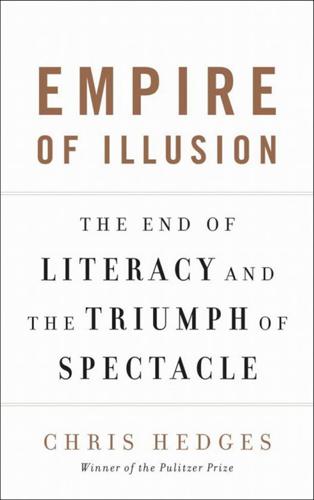
Empire of Illusion: The End of Literacy and the Triumph of Spectacle
by
Chris Hedges
Published 12 Jul 2009
Deresiewicz, who taught English at Yale, writes thatwhile this is broadly true of all universities, elite schools, precisely because their students (and faculty, and administrators) possess this one form of intelligence to such a high degree, are more apt to ignore the value of others. One naturally prizes what one most possesses and what most makes for one’s advantages. But social intelligence and emotional intelligence and creative ability, to name just three other forms, are not distributed preferentially among the educational elite.12 Intelligence is morally neutral. It is no more virtuous than athletic prowess. It can be used to further the exploitation of the working class by corporations and the mechanisms of repression and war, or it can be used to fight these forces.
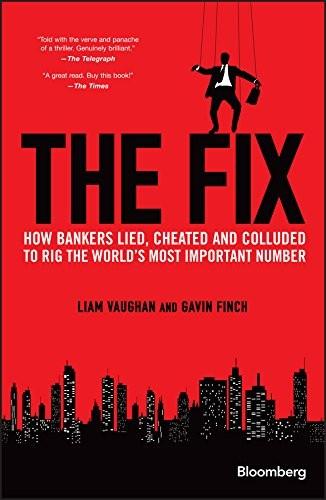
The Fix: How Bankers Lied, Cheated and Colluded to Rig the World's Most Important Number (Bloomberg)
by
Liam Vaughan
and
Gavin Finch
Published 22 Nov 2016
The newly promoted manager ordered Hayes to fly to UBS’s headquarters in Zurich to discuss the direction of the business and his future within it. Hayes saw the summons, the first of its kind, as a kick in the teeth and resented having to go. They finally came face to face in a small meeting room away from the trading floor. If Hayes was possessed of more social intelligence he 86 THE FIX may have been able to turn the situation around, but his demeanor was defensive from the start and he begrudged having to explain his worth. Ducrot had been drip-fed reports of Hayes’s antics for years. The meeting was over in minutes; both sides further entrenched in their negative opinions of each other.
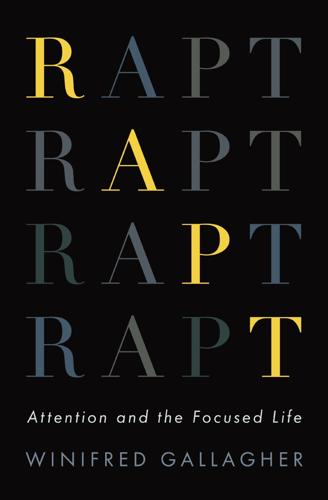
Rapt: Attention and the Focused Life
by
Winifred Gallagher
Published 9 Mar 2009
Intrigued by the “monkey see, monkey do” antics: Marco Iacoboni et al., “Cortical Mechanisms of Human Imitation.” Science 286, 1999; Marco Iacoboni, Mirroring People: The New Science of How We Connect with Others. New York: Farrar, Straus and Giroux, 2008. p.82. Evolution seems to have designed us: Daniel Goleman, Social Intelligence. New York: Bantam, 2007. p.84. Indeed, having social ties is the single best predictor: Ronald Kessler et al., How Healthy Are We? Chicago: University of Chicago Press, 2004. p.85. Research by the Canadian psychologist Joanne Wood shows: J. V. Wood et al., “Downward Comparison in Everyday Life: Reconciling Self-Enhancement Models With the Mood-Cognition Priming Model.”

The Broken Ladder
by
Keith Payne
Published 8 May 2017
Then she would play the same game with the second monkey, but instead reward the exchange with a grape—considered by the monkeys to be a much better snack than a cucumber. Brosnan now went back to the first monkey and tried the original game again to determine whether it would make the “rational” choice (in a narrow economic sense) and take the cucumber, since some food is better than no food. Or would it do the more socially intelligent thing and protest, giving up nutrients in order to enforce a code of fairness? This time the shortchanged monkey was having none of it: It looked at the cucumber slice, then threw it back at Brosnan. This sequence was played out dozens of times with many different pairs of monkeys. Sometimes the subject would simply toss the cucumber away, and at other times it would fling it back in the experimenter’s face.
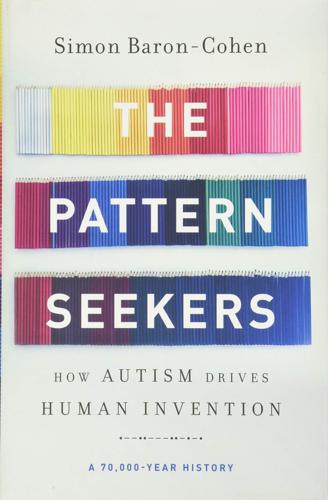
The Pattern Seekers: How Autism Drives Human Invention
by
Simon Baron-Cohen
Published 14 Aug 2020
Neanderthals started to die out around 40,000 years ago, when the cognitive revolution was in full swing.50 They may have died out because Homo sapiens, using our suite of smarter, more complex tools, themselves products of the Systemizing Mechanism, could acquire resources more efficiently, leaving poor Neanderthals with less. And they may have died out because Homo sapiens, using our greater social intelligence, including the capacity for deception (a product of the Empathy Circuit in our brain), could run rings around them. There’s no evidence that Neanderthals could deceive, and if this was the case, they would have been at a massive competitive disadvantage. As we mentioned earlier, there is no evidence of the stealthy use of arrows or darts by Neanderthals, unlike Homo sapiens, who lived at the same time and whose stone tips have endured.

Devil's Bargain: Steve Bannon, Donald Trump, and the Storming of the Presidency
by
Joshua Green
Published 17 Jul 2017
Milken, a Jew who wore an ill-fitting toupee, was initially shunned, and later despised, by the old-money firms with their WASP lineage and culture of restraint. But it was Milken who ultimately prevailed by storming their fortresses and upending their businesses. Eventually, they wised up and began doing what Milken had been doing all along: taking big stakes in the companies for themselves. Bannon had the brains and the social intelligence to pass as a Harvard preppy and a Goldman whiz kid, but deep down he identified more with Milken, a swashbuckler and rogue who struck fear in his adversaries. “The strengths that Milken had—the aggressiveness, the creativity, the hard work—those are all traits Steve admires,” said a former Goldman colleague.
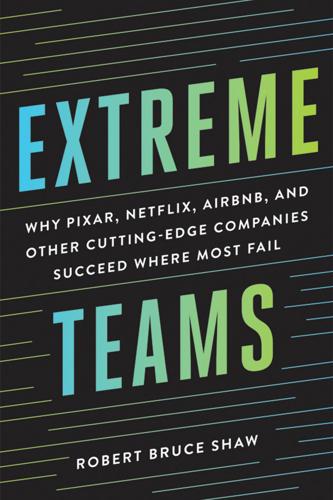
Extreme Teams: Why Pixar, Netflix, AirBnB, and Other Cutting-Edge Companies Succeed Where Most Fail
by
Robert Bruce Shaw
,
James Foster
and
Brilliance Audio
Published 14 Oct 2017
We went to the National Spelling Bee and tried to predict which children would advance farthest in competition We partnered with private companies, asking, which of these salespeople is going to keep their jobs? And who’s going to earn the most money? In all those very different contexts, one characteristic emerged as a significant predictor of success. And it wasn’t social intelligence. It wasn’t good looks, physical health, and it wasn’t IQ. It was grit.” 41Angela L. Duckworth, Christopher Peterson, Michael D. Matthews, and Dennis R. Kelly, “Grit: Perseverance and Passion for Long-Term Goals,” Journal of Personality and Social Psychology 92 (2007), 1087–101. For a critical view of the grit concept, see David Denby, “The Limits of ‘Grit,’” New Yorker, June 21, 2016. 42Airbnb “Our Commitment to Trust and Safety,” blog.airbnb.com/our-commitment-to-trust-and-safety/. 43Ari Levy, “Airbnb Offers $50,000 Guarantee After User’s Home Is Trashed,” Forbes, August 1, 2011.
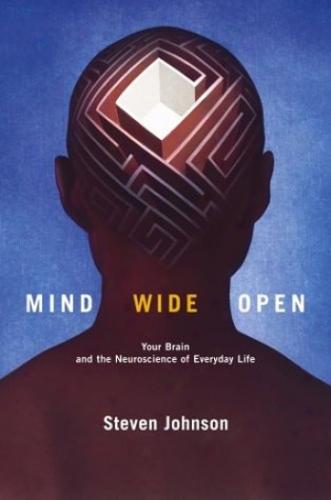
Mind Wide Open: Your Brain and the Neuroscience of Everyday Life
by
Steven Johnson
Published 2 Jan 1999
Many experts now believe that this distance derives from a distinct neurological condition: autistics are mindreading-impaired. The social distance associated with autism is a vivid example of the brain’s modular nature: autistics generally have above-average IQs, and their general logic skills are impeccable. But they lack social intelligence, particularly the ability to make on-the-fly assessments of other people’s inner thoughts. Autistic people do have to go to school to read facial expressions-learning to intuit another person’s mood is at least as challenging for them as learning to read is for the rest of us. When you’re engaged in conversation, you don’t think to yourself, “Aha!
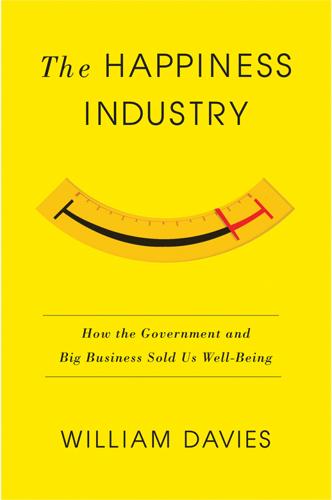
The Happiness Industry: How the Government and Big Business Sold Us Well-Being
by
William Davies
Published 11 May 2015
Patil, ‘Data Scientist: The Sexiest Job of the 21st Century’, Harvard Business Review, October 2012. 5Viktor Mayer-Schönberger, and Kenneth Cukier, Big Data: A Revolution That Will Transform How We Live, Work and Think, London: John Murray, 2013. 6Anthony Townsend, Smart Cities: Big Data, Civic Hackers, and the Quest for a New Utopia, New York: W. W. Norton & Company, 2013, 297. 7Mark Harrington, ‘How Social Intelligence Is Revolutionizing Market Research’, business2community.com, 20 June 2013. 8‘Carol Matlack, ‘Tesco’s In-Store Ads Watch You – and It Looks Like You Need a Coffee’, businessweek.com, 4 November 2013. 9Mark Bright, ‘Facial Recognition Ads Planned for Manchester Streets’, salfordonline.com, 28 May 2013. 10Rob Matheson, ‘A Market for Emotions’, newsoffice.mit.edu, 31 July 2014. 11James Armstrong, ‘Toronto May Soon Track Residents’ Online Sentiments About City Services’, globalnews.ca, 17 June 2013 ; Sabrina Rodak, ‘Sentiment Analysis: An Emerging Trend That Could Give Hospitals an Edge in Patient Experience’, beckershospitalreview.com, 28 June 2013. 12Dana Liebelson, ‘Meet the Data Brokers Who Help Corporations Sell Your Digital Life’, Mother Jones, November/December 2013. 13Adam Kramer, Jamie Guillory and Jeffrey Hancock, ‘Experimental Evidence of Massive-Scale Emotional Contagion Through Social Networks’, Proceedings of the National Academy of the Sciences 111: 24, 2014. 14Robinson Meyer, ‘Everything We Know About Facebook’s Secret Mood Manipulation Experiment’, theatlantic.com, 28 June 2014. 15Ernesto Ramirez, ‘How to Measure Mood Using Quantified Self Tools’, quantifiedself.com, 17 January 2013. 16Matthew Killingsworth and Daniel Gilbert, ‘A Wandering Mind Is an Unhappy Mind’, Science 330: 6006, 2010. 17Mount Sinai Medical Center, ‘Neuroimaging May Offer New Way to Diagnose Bipolar Disorder’, sciencedaily.com, 5 June, 2013; Lucy McKeon, ‘The Neuroscience of Happiness’, salon.com, 28 January 2012. 18Steve Lohr, ‘Huge New Development Project Becomes a Data Science Lab’, bits.blogs.nytimes.com, 14 April 2014. 19Shiv Malik, ‘Jobseekers Made to Carry Out Bogus Psychometric Tests’, theguardian.com, 30 April 2013. 20Randy Rieland, ‘Think You’re Doing a Good Job?
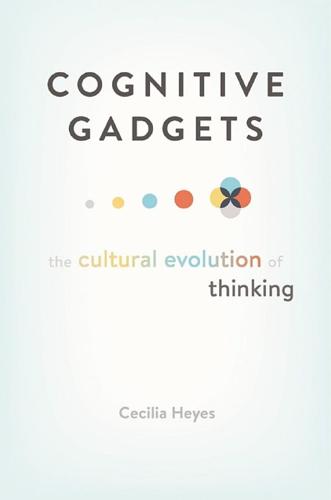
Cognitive Gadgets: The Cultural Evolution of Thinking
by
Cecilia Heyes
Published 15 Apr 2018
Imitation in infancy: The wealth of the stimulus. Developmental Science, 14(1), 92–105. Reader, S. M., Hager, Y., and Laland, K. N. (2011). The evolution of primate general and cultural intelligence. Philosophical Transactions of the Royal Society, Series B, 366, 1017–1027. Reader, S. M., and Laland, K. N. (2002). Social intelligence, innovation, and enhanced brain size in primates. Proceedings of the National Academy of Sciences, 99, 4436–4441. Reeb-Sutherland, B. C., Fifer, W. P., Byrd, D. L., Hammock, E. A., Levitt, P., and Fox, N. A. (2011). One-month-old human infants learn about the social world while they sleep.

Going Dark: The Secret Social Lives of Extremists
by
Julia Ebner
Published 20 Feb 2020
After joining a dozen different extremist groups, I am convinced that any response that focuses purely on technology-led intervention and on regulating the digital sphere will not work. It is true that the way a platform is designed can stimulate, manipulate and escalate our attitudes and behaviour. But compassion and empathy are not predetermined by algorithms. Even if the digital DNA of some platforms carries a dangerous potential to handicap our emotional and social intelligence, we need to move away from the idea that it robs us of our ability to love, hate or fear. If technology is no more than an extension and multiplier of human flaws and qualities, we need to return to a more human-centred approach. Questions around identity, trust and friendship in the online world must be raised if we want to break through the ‘us and them’ thinking that all extremist movements have in common.
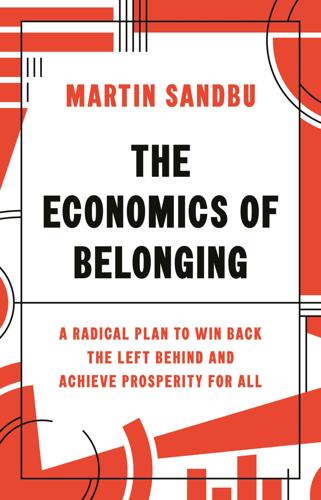
The Economics of Belonging: A Radical Plan to Win Back the Left Behind and Achieve Prosperity for All
by
Martin Sandbu
Published 15 Jun 2020
The crumbling foundations of the blue-collar aristocracy are the assembly lines, docks, rigs, and trucks where the men traditionally did most of the work. As such, they are the perfect stage for displays of old-fashioned machismo (Trump’s photo op with an eighteen-wheel truck on the White House lawn comes to mind). That sits less well with the skills that create value in the new service and knowledge economy. Social intelligence, a talent for caring, and similar soft skills are increasingly in demand, as are the jobs that require them: nursing, social care and childcare, teaching, and the like. In the United States, for example, one in four new jobs in the next decade is expected to come in health care, social assistance, and education, and we should expect similar developments elsewhere.19 In many places, however, these jobs come with low status and lower pay.
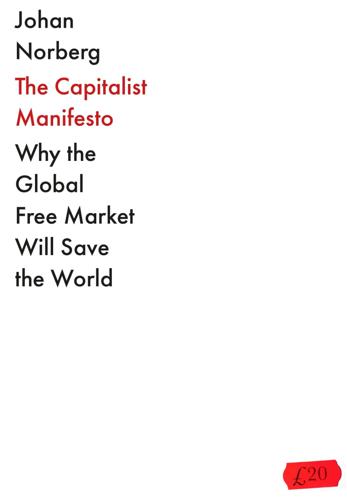
The Capitalist Manifesto
by
Johan Norberg
Published 14 Jun 2023
However, there is something to the story that the middle class has eroded, since certain types of routine jobs that provided average incomes have disappeared since World War II. This applies to many forms of manufacturing work but also to clerks responsible for registers and warehouses or bank and postal tellers who handled invoices or received, counted and handed over banknotes. These were jobs that required precision and accuracy but not improvisation and social intelligence – just the kind of work industrial robots, computers and ATMs are good at. Yet this does not mean the total number of jobs declines. The money we previously spent on this type of work remains and is now used to buy other types of work in what is sometimes called ‘the new middle-class jobs’, such as in transport, healthcare, education, entertainment and culture.
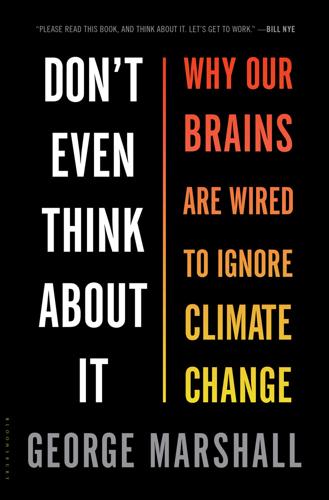
Don't Even Think About It: Why Our Brains Are Wired to Ignore Climate Change
by
George Marshall
Published 18 Aug 2014
Climate change also challenges and reverses some deeply held assumptions. We are told that the way of life that we associate with our comfort and the protection of our families is now a menace; that gases we have believed to be benign are now poisonous; that our familiar environment is becoming dangerous and uncertain. Our social intelligence is well attuned to keeping track of debts and favors, and ensuring equitable distribution of gains and losses. Climate change poses a major challenge here too, with all solutions requiring that rival social groups agree on a distribution of losses and thereafter the allocation of a greatly diminished shared atmospheric commons.

Thinking in Pictures: And Other Reports From My Life With Autism
by
Temple Grandin
Published 10 Jan 2006
Barron 1992 Adult Suicide Linked to Popular Antidepressant (Paxil). Nature, 436: 1073. S. Baron-Cohen, Ring H. A. Bullmore E. T. S. Wheelwright, C. Ashwin, Williams S. C. 2000 The amygdale theory of autism. Neuroscience Biobehavior Review, 24: 355–364. Baron-Cohen, Ring H. A. S. Wheelwright, Bullmore E. T. et al. Brammer M. J. 1999 Social intelligence in the normal and autistic brain: An FMRI study. European Journal of Neuroscience, 11: 1891–1898. S. Baron-Cohen 2004 The cognitive neuroscience of autism. Journal of Neurology, Neurosurgery Psychiatry, 75: 945–948. L. Cesaroni, M. Garber 1991 The cognitive neuroscience of autism. Journal of Neurology, Neurosurgery Psychiatry, 75: 945–948.

Mistakes Were Made (But Not by Me): Why We Justify Foolish Beliefs, Bad Decisions, and Hurtful Acts
by
Carol Tavris
and
Elliot Aronson
Published 6 May 2007
Psychologist Ervin Staub, himself a Holocaust survivor, has been studying the origins and dynamics of genocide for many years, and most recently has devoted himself to the project of reconciliation between the Tutsi and Hutu in Rwanda. See Ervin Staub and Laurie A. Pearlman (2006), "Advancing Healing and Reconciliation in Rwanda and Other Post-conflict Settings," in L. Barbanel and R. Sternberg (eds.), Psychological Interventions in Times of Crisis, New York: Springer-Verlag; and Daniel Goleman (2006), Social Intelligence, New York: Bantam Books. 25 Broyles told this story in a 1987 PBS documentary, "Faces of the Enemy," based on the book of the same title by Sam Keen. It is still available on VHS and DVD from PBS. CHAPTER 8 Letting Go and Owning Up 1 All quotations are taken from the transcript of Oprah's show, January 26, 2006. 2 "Wayne Hale's Insider's Guide to NASA," by Nell Boyce.

Digital Bank: Strategies for Launching or Becoming a Digital Bank
by
Chris Skinner
Published 27 Aug 2013
Some go as far as to populate their pages with links and news. But you still don’t get it if you think that way as these are platforms, not websites. Facebook and Twitter have hundreds of specialist service providers creating new forms of social engagement from content curation to social marketing management; from social ads to social intelligence; from apps for gaming to apps for sharing to apps for commerce; and more. A good example is Instagram, purchased by Facebook for $1 billion in April 2012. Instagram is a photo sharing social service, and provides an easy way to share such content via Facebook. In other words Facebook, like the internet, is a platform that provides the underpinnings for far more targeted and specialist social connectivity.
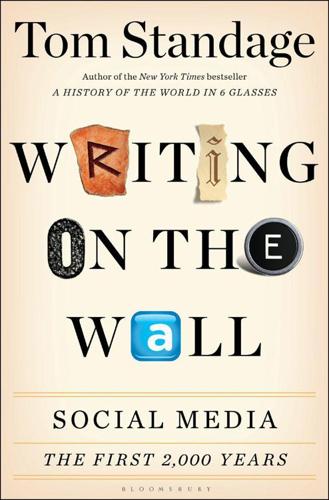
Writing on the Wall: Social Media - the First 2,000 Years
by
Tom Standage
Published 14 Oct 2013
And by passing on information selectively it is possible to manipulate one person’s opinion of another. People can also form judgments about someone’s trustworthiness by evaluating the accuracy of the information he or she passes on about others. Gossip is an extraordinarily rich source of social intelligence, both about the person speaking and about whoever is being discussed. And because our brains are wired to process just this kind of information, we find exchanging it extraordinarily compelling. Such chatter benefits both the members of a group and the group as a whole. Individuals can better keep track of shifting alliances within the group, and passing accurate or useful information to others can help establish one’s credibility as an ally or suitability as a mate.
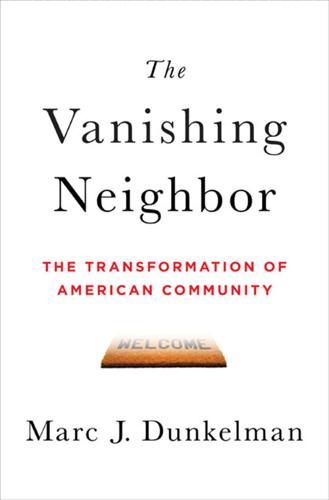
The Vanishing Neighbor: The Transformation of American Community
by
Marc J. Dunkelman
Published 3 Aug 2014
In looking, for example, at which inner-city high-school graduates made it through college and which dropped out, David Levin, one of the founders of the KIPP network of charter schools, noticed: The students who persisted in college were not necessarily the ones who had excelled academically at KIPP; they were the ones with exceptional character strengths, like optimism and persistence and social intelligence. They were the ones who were able to recover from a bad grade and resolve to do better next time; to bounce back from a fight with their parents; to resist the urge to go out to the movies and instead stay home and study instead; to persuade professors to give them extra help after class.20 What Canada, Levin, and other educators have come to focus on is what sort of culture and curriculum can best equip kids with the power of self-discipline.21 What can be done, either at the outset or later in children’s development, to give them the ability to withstand an emotional hijacking?

Mindwise: Why We Misunderstand What Others Think, Believe, Feel, and Want
by
Nicholas Epley
Published 11 Feb 2014
Our sixth sense, this amazing ability each of us has to understand the mind of another, must be engaged, up close and personal. When distance keeps it disengaged, we may see other human beings as lesser minds and, thereby, as lesser persons. The capacity for mindblindness is not limited to only a select few. Such mistakes can afflict any of us, rendering us less socially intelligent than we could otherwise be. But if failing to engage our ability creates one set of mistakes, then engaging our ability when we should not creates another set, which I’ll describe in the next chapter. In particular, once our sixth sense is engaged, it is all too easy to see other minds almost everywhere we look.
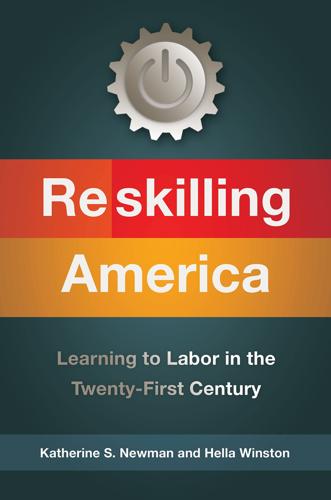
Reskilling America: Learning to Labor in the Twenty-First Century
by
Katherine S. Newman
and
Hella Winston
Published 18 Apr 2016
The fact is, in parts of the United States where young people—high-school students—have had the opportunity to engage in serious, well-designed, and well-implemented training and work, through either youth apprenticeship or high school co-op programs, the benefits can be striking. This is true not just in terms of employment prospects but, as writer, teacher, and education scholar Mike Rose so powerfully demonstrates, of cognitive development, the ability to diagnose, analyze, and solve complex problems, and to operate with social intelligence. But even in places where CTE is embraced, we still need to make sure we are giving both technical and academic teachers in CTE schools the support and the respect they need to do their jobs. We cannot prepare a workforce if the people who do the teaching are at arm’s length from the firms that will employ their students.
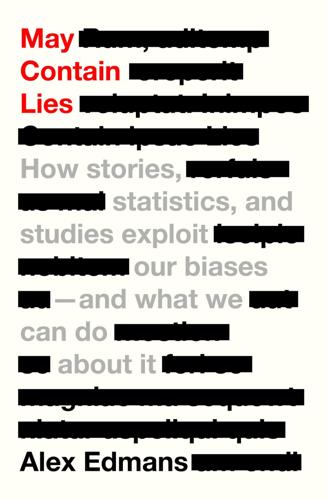
May Contain Lies: How Stories, Statistics, and Studies Exploit Our Biases—And What We Can Do About It
by
Alex Edmans
Published 13 May 2024
Thus, if you already have a significant result, it can’t be attacked by your failure to control for a factor that’s unrelated to the input, because if you did control for it, the significance would be even higher. 1 Castro, Rita Amiel et al. (2021): ‘Breastfeeding, prenatal depression and children’s IQ and behaviour: a test of a moderation model’, BMC Pregnancy and Childbirth 21, 62. 2 Al Thuneyyan, Danyah Abdullah et al. (2022): ‘The effect of breastfeeding on intelligence quotient and social intelligence among seven-to nine-year-old girls: a pilot study’, Frontiers in Nutrition 9, 726042. 3 Bayer, Ilker S. (2018): ‘Advances in tribology of lubricin and lubricin-like synthetic polymer nanostructures’, Lubricants 6, 3; Jay, Gregory D. and Kimberly A. Waller (2014): ‘The biology of lubricin: near frictionless joint motion’, Matrix Biology 39, 17–24.

Wired for War: The Robotics Revolution and Conflict in the 21st Century
by
P. W. Singer
Published 1 Jan 2010
The future military doesn’t just include space for the younger gamers; technology may also help keep the old fogies around a little longer. The prospect of leavening out the young video gamers with an older old guard appeals, especially to the senior set. Retired major general Robert Scales, the former head of the Army War College, writes that older soldiers might actually be better soldiers. “Social intelligence and diplomatic skills increase with age. Older soldiers are more stable in crisis situations, are less likely to be killed or wounded and are far more effective in performing the essential tasks that attend to close-in killing. Experience within special operations units also suggests that more mature soldiers are better suited for fighting in complex human environments.”
…
Smock, ed., Religious Perspectives on War: Christian, Muslim, and Jewish Attitudes Toward Force, Perspectives Series (Washington, DC: United States Institute of Peace Press, 2002), 22. 367 “erase the pain given and taken” Macgregor, “Imitation of Life,” 19. 368 “When you have a radical idea” As quoted in Jonathon Keats, “The Idea Man,” Popsci.com, 2004 (cited August 18, 2006); available at http://www.popsci.com/popsci/technology/generaltechnology/6b0898b0c9b84010vgnvcm1000004eecbccdrcrd.html. 368 the Pentagon is now the largest day-care provider Christopher Coker, Humane Warfare (London, New York: Routledge, 2001), 98. 369 “Social intelligence and diplomatic skills” Scales, “Clausewitz and World War IV.” 369 “Sixty is the new forty” Ralph Peters, “The Geezer Brigade: Wartime Needs and Military Retirees,” Armed Forces Journal, July 2007, http://www.armedforcesjournal.com/2007/07/2792594. 369 “the Old Farts” John Scalzi, Old Man’s War, 1st ed.

GCHQ
by
Richard Aldrich
Published 10 Jun 2010
One evening Mrs Molotov complained that her best friend’s son was having difficulty getting a place at Moscow University. ‘Could he ring the rector and arrange it? Rather grudgingly, Molotov consented.’33 One wonders if, at this point, Blake ever paused to reflect that the Soviet Communist system that he admired and the British system were really not so very different. SIS gathered plenty of such ‘social intelligence’, since Blake recalls that during the mid-1950s his unit also bugged Polish diplomatic premises in Brussels, the Soviet Embassy in Copenhagen, the Bulgarian Embassy in London and numerous locations in Cairo.34 The Soviets got some of their own back in late February 1959, when Prime Minister Harold Macmillan made an official visit to Moscow.
…
AB Cryptoteknik 213 ‘ABC’ trial (1977–78) 8, 359–61, 423, 459 Abernethy, Barbara 70 Abu Hamza al-Masri 542 Abyssinia (Ethiopia) 19 Adams, Gerry 500 Aden (Yemen) 6, 156, 164, 345 Admiralty Signals Division 137 Admoni, Nahum 471 Adye, John 427, 431, 476, 483, 494, 495, 598, 608 aerial reconnaissance 31, 59 Afghanistan 387, 420, 421, 510, 511, 533–9 Africa 99, 148, 182, 268, 299, 336, 454–5, 479 Aid, Matthew 521 Aiken, John 326, 327, 328, 331 Airborne Rafter programme 267, 538 Aitken, Jonathan 493–5 al-Badr, Imam 163–4 al-Jazeera 513–14 al-Qaeda 9, 509–11, 513–14, 517, 532 Alanbrooke, Field Marshal Lord 45 Aldeburgh (Suffolk) 286 Aldridge, Peter 449 Alexander, A.V. 123–4 Alexander, Hugh 25, 27, 78, 96, 599 Allen, Lew 357 Allied Commission for Austria and London 170 Alp, Saffet 314 Alvear, Soledad 519 American Office of Naval Intelligence 143 American Type-777 satellite 348 Amery, Julian 162–3, 295 Ames, Aldrich 385, 444 Amory, Robert 158 Amsterdam 487 Anaya, Admiral Jorge 389, 393, 395 Anderson, Jack 344 Andrew, Christopher 2, 362 Anglo-American-Commonwealth sigint 64, 82, 152 Anglo-American relations 7–8; and Balkans 472–5; and Berlin tunnel operation 172–6; changing nature of 441–3, 449–50; and cost of cooperation 222–3; and Cuba 341–2; deterioration in 281–95, 333; and Far East 151–2; and global sigint 89–101; gradual improvement in 295–8; impact of politics on 278; and liberating of Axis sigint 47–56; and Nimrod programme 268–70, 273–4; and Project Sandra 322–3; and public disclosure of sigint material on 355–7, 358, 361–2; and sale of cypher machines 209–15; shared problems 333–4; and sigint 7–8, 38–46, 91–2; and sigint satellite and computer revolution 347–54, 437–8; successful Russian intercepts 279–81; and Suez crisis 157–9; and Third World bases 334–9; and trade unions at GCHQ 421–2, 429; in Turkey 302; and Venona Project 72–88; in wartime 38–46 Angola 357, 454–5 Ankara 58, 254, 302, 303, 305, 310–11, 313, 315, 318, 330 Annan, Kofi 523–4 Antalya (Turkey) 326 Anti-Christ Doom Squad 487 Anti-Smuggling Task Force (Hong Kong) 477 AQ Khan network 531 Aquarius (computer) 349 Arab-Israeli War (1973) see Yom Kippur War Arab states 109 Arafat, Yasser 277 Aral Sea 306 Arbuthnot, Mrs 70 Arctic Circle 133, 136–9, 144–6, 147, 265 Argentina 307–8, 388–415 Argentine Air Force 401, 408, 410, 415 Argentine Army 396 Argentine Navy 395, 405, 408 Argus satellite 377 Arlington Hall (US Army code-breaking centre, Washington) 45, 74, 77, 80, 83 arms control 203, 257, 287, 288, 290 Armstrong, Sir Robert 416, 425, 427, 428, 430–1 Army Intelligence Corps 230 Army Security Agency 80 as-Sallal, Abdullah 163–4 Ascension Island 162, 278, 321, 392, 414 Ash, Timothy Garton 465 Athens 324, 330 Atlantic, Battle of (WWII) 42, 60 Atlas (computer) 349–50 Atomic Demolition Munitions (ADMS) 249 Atomic Energy Authority (AEA) 261 Atomic Energy Intelligence 155 atomic and nuclear weapons 2, 5, 36, 45; and Anglo-US arms control 287–9; at Los Alamos 75, 76, 82; British 163, 249; Chinese 155; need for better intelligence on 253, 255, 321–3; Soviet 107–8, 112, 114, 116, 119, 131–2, 148, 157, 173, 301–2; spiralling of arms race 438–9; US 249; US put on alert (1973) 293–4 Atomic Weapons Establishment (Aldermaston, Berkshire) 418–19 Attlee, Clement 73, 86 ATV 432 Aubrey, Crispin 358–9, 360 Auckland (New Zealand) 487 Audiotel 480 Augsburg (Germany) 48 Austin, Harris M. 115 Australia 79, 80, 85–8, 89, 90, 92–4, 98, 154, 164, 165, 167, 168, 213, 467, 477, 487, 533; Australian Security Intelligence Organisation (ASIO) 86–7, 88; Central Bureau 92; Defence Signals Branch (DSB) 151, 153, 213; Defence Signals Department (DSD) 348; Royal Australian Air Force 150; Royal Australian Navy 266; Royal Australian Signals 166 Austria 96, 371, 384 Automatic Data Processing 353 Ayios Nikolaos (Cyprus) 156, 162, 163, 230, 234, 327, 328, 358–9, 360, 383, 384 Azerbaijan 109 Bad Aibling (Germany) 423 Bad Godesberg (Germany) 215 Badger’s Lair (SAS training exercise) 249–50 BAE Systems Ltd 544 Baghdad (Iraq) 161, 468, 469, 471, 524 Baghdad Pact 161 Bahia Paraios (Argentinean ship) 394, 395 Bahrain 347 Baillie, George 122 Bain, Helen 445 Baldwin, Stanley 18, 72, 400 Balgat (Turkey) 303 Bali bombing (2002) 511, 513 Balkanabteilung (German code-breaking HQ) 50 Balkans 51 Baltic 112, 114, 116, 125, 285 Baltic Sea 273 Bamford, James 263, 361–2, 521 Bandaranaike, Solomon 160 Bank of England 241, 487 Banner, Gordon 312–16, 318 Barbieri, Major 52, 53–4 Barents Sea 114, 115 Barker, Nick 391–2 Barkley, Howard 77 Barsby, Mrs 374–5 Basra (Iraq) 466, 525 Battle of Britain 29 Bay of Pigs crisis (1961) 8, 226 BBC 330, 348, 429, 501, 517, 523–4; BBC Scotland 459 Beach, Sir Hugh 380, 381 Bearman, Sid 595 Beasley, Tony 133–9 Beaumanor Hall (Leicestershire) 63 Beijing 476 Belbasi (Turkey) 302 Belfast 261, 500, 501 Belgium 442, 492 Bell, Rod 409, 410 Benitez, Rafael 114, 115 Benjamin, Ralph 216 Benn, Tony 227 Bennett, Ralph 59 Bentinck, Victor Cavendish 67 Bergen (Norway) 450 Bergold, Harry 295 Beria, Lavrentii 107 Berlin 112, 127–8, 130, 196–7, 227, 228, 253, 270, 369, 370, 372, 478; Berlin Blockade (1948) 71, 113; Berlin Cryptographic Centre 50; Berlin tunnel 169, 170, 172–6, 373, 477 Berlusconi, Silvio 532 Berry, John 358–9, 360 Betts, Richard 600 Beulmann, Major 50 Bevin, Ernest 70 BfV (German domestic security service) 452–3 bin Laden, Osama 511, 513, 514, 549 Binalshibh, Ramzi 514 Bingham, Lord 481 Birch, Frank 43 Bitburg (Germany) 131 Black, Jeremy 407, 408 black chambers 4, 14 ‘Black Friday’ (29 October 1948) 81, 108, 119, 169, 280 Black Sea 112, 131–2, 301, 302, 311, 313, 317, 319 Blair, Tony 4, 436, 497–8, 500, 504, 506, 509, 515, 517, 519, 530, 532 Blake, George 173, 174–5, 176, 178, 179, 238, 385 Bleckede 127 Bletchley Park 103, 186, 188, 221, 354, 549; Americans at 39, 43; and breaking ‘Red’ 25–6; closure of 67–71; and cypher security 54–9; expansion and reorganisation 27–8, 62–3; GCHQ as successor to 1, 5; Huts Three and Six 23, 25, 36, 48, 64–5, 119, 121, 356, 362–3, 364, 387; and machine-based espionage 5; military emphasis at 22–3; post-war role 60–1, 63–7; release of records on 355; SIS GC&CS moves to 22–8; takeover of Axis sigint effort 47–54; tight security measures at 69; unmasking of 362–3; wartime value and achievements 59–60, 61–3; wartime work of 1–2, 5, 25–9, 30, 31–46, 109–10 Blix, Hans 520 Block, Lieutenant 145 Bloomer-Reeve, Carlos 394, 412 ‘Blue Book’ 2–3, 395–6 Bluff Cove (Falklands) 400 Blum, Eberhard 450, 452 Blunkett, David 510, 522 Blunt, Anthony 36, 37, 83, 188, 224, 225, 364, 367 Board of Trade 241 Bodsworth, William 69, 80 Boizenburg (Germany) 127 Bolivia 52, 300 Bonnet, Georges 52 Bonsall, Arthur ‘Bill’ 110 Bontoft, Gerry 352 Borehamwood (aka ‘Department B’, London) 181, 182, 190 Borisenko, Alexsandr Ivanovich 236, 237 Borneo 6, 148, 164–8, 250 Bosnia 8, 9, 471–4, 512 BOSS (South African secret service) 357 Bourbon (Soviet radio intercepts) 75 Boyce, Ed 377 Bracknell (Berkshire) 113 Bradley, General Omar 116 Bradshaw, Mike 423 Brauntoltz, George 432 Bremerhaven (Germany) 116 Brezhnev, Leonid 245, 247 Brezhnev Doctrine 244 Bride (UK code-name for Venona) 80 Bridges, Sir Edward 42, 141–2, 181 Brinks Mat bullion robbery (1983) 505 British Army 14–15, 63, 451, 469, 472; 9 Signals Regiment 162, 327, 383–4; 13 Signals Regiment 166, 228, 493; 14 Signals Regiment 524, 525, 534; 40 Commando 525; British Army on the Rhine 248, 412; First Armoured Division 467, 525; Queen’s Dragoon Guards 525; ‘Rhino Force’ 467; Royal Armoured Corps 248; satellites 198, 208–9, 223, 243, 258, 262–3, 340, 342, 344, 345–8, 347–8, 376, 377, 401, 415, 421, 437–8, 441, 442–3, 445–7, 460–1, 478; sigint units 162, 166–7, 218–19, 228, 327, 383–4, 493, 524, 525, 534; Special Air Service (SAS) 164, 165, 168, 248–51, 359, 409, 410, 411, 468, 472, 475, 536, 583; Special Boat Service (SBS) 333, 409, 410, 411, 443, 468; Special Operations Executive (SOE) 36, 51; Special Reconnaissance Squadron 248 British European Airways (BEA) 129 British Indian Ocean Territories (BIOT) 334 ‘British Intelligence and Weapons of Mass Destruction’ (Butler Report) 2 British Leyland 367–8 British Military Mission (Brixmis) 123, 245–6, 247, 252 British Nuclear Fuels Ltd 500 British Psychological Society 433–4 British Tabulating Machine Company 349 British Telecom 545; Medium Wave Tower (Holyhead) 500 Britten, Douglas 230–8, 369, 382 Broadcasting Standards Authority 481 Broadside operation (US Embassy intercepts in Moscow) 280–1 Brockway, Ernst 383 Brook, Sir Norman 142, 219–20 Brooks, Richard 399 Brooks Field (Michigan) 120 Brown, Gordon 498 Brundrett, Sir Frederick 177, 178 Brunei, Sultan of 164, 586 BRUSA agreement (1943) 43, 44, 121, 151 Brussels 179, 253 Brzezinski, Zbigniew 448 Buffham, Benson 381, 424 Bufton, Air Vice Marshal 207 bugging operations 176–82, 193, 196–7, 473–4, 479, 482, 499 Bulganin, Nikolai 140 Bulgaria 518, 519 Bundesnachrichtendienst (BND, German foreign intelligence service) 214–15, 422–3, 438, 447–51, 452–4, 455, 456, 471, 472, 524 Bundy, William ‘Bill’ 50, 356, 363, 364 Bunyan, Tony 361 Burgess, Guy 8, 37, 73, 82, 83, 84–5, 224, 225, 238, 367 Burma 65 Burrough, John 598 Burton, Sir Edmund 527 Burton-Miller, T.R.W. 57, 191, 577 Bush, George H.W. 356–7 Bush, George W. 511, 517, 532 Butler, Lord 2, 428, 482, 529–31, 610 Byers, Stephen 506–7 Byrnes, Jimmy 53 ‘C’ (head of SIS) 16, 24, 67 Cabell, Charles 96 Cabinet Office Intelligence Coordinator 241, 245, 264, 353, 354, 360, 387, 399, 504 Cable, Danielle 505, 506 Cable, James 278 cable vetting 238–41 Cable & Wireless 240, 312, 392 Caccia, Harold 171 Cadogan, Sir Alexander 23–4, 26, 39, 45, 70 Cairncross, John 36–7, 73, 82, 364 Cairo (Egypt) 58, 159, 179, 185 Callaghan, James 324, 325, 330, 333, 361, 391 Calvi, Roberto 407 Calvocoressi, Peter 59, 61 Cameron, Stephen 505 Campaign for Nuclear Disarmament (CND) 368 Campbell, Alastair 517, 523, 530 Campbell, Duncan 8, 358, 360, 361, 362, 423, 458–9 Canada 38, 89, 93, 95, 97–8, 178, 447, 533; Canadian CBNRC 348; Canadian Communications Security Establishment (CSE) 381, 447; Canadian Joint Intelligence Committee 92 Canine, Ralph 101, 174, 336 Canyon satellite 376 Cape Canaveral (Florida) 322, 437, 461 Cape Matapan, Battle of (1941) 60 Capenhurst Tower (Cheshire) 500–1 Caraman, Mihai 253–4 Carey-Foster, William 185, 188, 228 Carlile of Berriew, Lord 543–4 Carpenter, Harry 598 Carrington, Lord 282–3, 284, 294, 389, 394, 396, 423–4 Carsamba (Turkey) 311–12 Carter, Jimmy 390, 448 Carter, Marshall 264, 272, 273–4, 350 Carter, Pat 448 Cartwright, Ian 328 Carver, Michael 334 Casey, Bill 457 Caspian Sea 112, 132, 161, 301, 302 Castle, Barbara 240 Castro, Fidel 226, 341 Catroux, Georges 52 Caucasus 131, 157 Caviar (Soviet encyphered traffic) 49, 69 Cayan, Mahir 309, 310–15, 314 Caygill, David 445 Celebes 167 Cellnet 481 Cemgil, Sinan 306 Central Gunnery School (Leconfield) 126 Central Signals Establishment 113–14 Ceylon 58, 69, 160, 259, 352 Chagos Islands 278, 335 Chamberlain, Neville 3, 18 Charles, Prince 482 Cheadle (Cheshire) 34, 63, 231 Chechnya 494–5 chemical weapons 470–1, 516 Chevaline project (upgrading of Polaris) 438–40, 459 Cheyne, Bill 166 Chicago Islands 278 Chicksands (Bedfordshire) 63, 360, 535 Chifley, Ben 86, 88, 94 Chile 357, 394, 396, 517 China 98, 129, 150–5, 193–5, 256, 273, 277, 282, 285, 376, 475–8; Chinese Communist Party 150; People’s Liberation Army 151 Chinese language teaching 598 Ching Peng 149, 150 Chippewa Falls (Minnesota) 350 Chirac, Jacques 520–1 Chitty, Brigadier 55 Chiverton, Roy 476 Chum Hom Kok (Hong Kong) 475–6 Church, Frank 356, 357 Church Committee 356, 357 Churchill, Winston 84; addiction to ‘Ultra’ intelligence 1; and airborne incidents 128, 129; and bugging operations 177; comments on the Belgians and Dutch 52; and cypher security 56; and diplomatic intelligence 41; and elint airborne operations 124; and Kuznetsov-Marshall affair 187, 189; meets Stalin 47; as recipient of sigint 3, 5, 40; supports work at Bletchley 26–7, 59, 65, 362 CIA (Central Intelligence Agency) 85, 87, 91; and Bay of Pigs 8, 226; and Berlin-Vienna tunnel operations 169–76; and counter-espionage coup 253–4; and Cyprus 324, 326–7; Foreign Broadcast Information Service 155; and invasion of Czechoslovakia 246; and invasion of the Falklands 399; Jewish sympathisers in 97; and Korean War 100; and Libyan terrorism 457; and Middle East 157, 158; and Nixon administration 4, 278; Office of National Estimates 151; revelations concerning 356–8; Russian spies in 444; security measures 101, 381; and shooting of Che Guevara 300; and Soviet weapons 108, 439; Special Activities Division 514–15; and Turkey 472; and U-2 spy planes 142, 226, 292, 296; and use of communication satellites 348; and Venona Project 77, 82; and Zinnia 322 Cianchi, Commander 54 CIB3 (Metropolitan Police anti-corruption squad) 506 City of London 487, 510 Civil Service 381, 421, 427; Civil and Public Servants Association (CPSA) 419–20; Civil Service Medical Officers Group 382; Civil Service Order in Council (1982) 431; Civil Service Union (CSU) 418, 420, 422–3; First Division Association 435; Society of Civil and Public Servants 426 Claret operations (1964–66) 165–8 Clarke, Kenneth 481, 482 Clarke, Liam 608 Clarke, Peter 266–7 Clarke, William F. 66 Cleveland, Paul 444–5 Clifford, Clark 333 Clinton, Bill 492 Clipper Chip (encryption bypass system) 492 Cobra (Cabinet emergency planning committee) 509–10, 527, 532, 610 Cobra Mist (Over the Horizon Radar) 285–7 code-breakers 2, 6, 198; and Anglo-American relationship 38–46; Australian 92; and Berlin tunnel operation 174; collaboration with Baltic states 31; combined operations 15–16; and computers 340, 348–9, 350–1; and decypherment of ‘Fish’ messages 28; diplomatic 27–8, 37, 43–4, 52–3; during WWII 25–9, 30–46, 58–9; Egyptian 164; and ending of WWII 61; expansion of 63–4; Far Eastern 40; Finnish 32, 35, 91; and French intercepts 52, 53, 209; and global sigint 96; importance of Hong Kong to 151; international work 16–17; and internet 493; Italian 52–4; military operations 14–15, 19–20; move from Bletchley to Cheltenham 5; naval 15; and Pelton affair 444; and personal computing and the internet 488; as Post Office department 14; pre-WWII 22–5; and Prime case 380; quadripartite meeting on computer hackers and encryption 489; revival on eve of WWI 14–15; Russian focus 17–19, 33–8, 169; and sale of cypher machines 209–15; and supply of intelligence reports 2–4, 6–7; and telephone tapping 170–1; and use of cypher machines 21–2; value of 60; and Venona Project 72, 74–88; wartime secrecy 354 COINS (Community On-line Intelligence System) 353 Colby, William ‘Bill’ 293, 327, 329, 330 Cold War 47, 377, 420; airborne incidents 125–33; benefits of intelligence in 175–6; Berlin blockade 71; calming of nerves in 257–8; computing in 349; end of 461, 465, 477, 478–9, 493; flashpoints 203; high profile espionage activity in 8; and planning for future war 247–53; seaborne incidents 133–47; secret service operations 484; sigint in 1, 2, 5, 107–24, 125–47, 402; Soviet nuclear weaponry 108; telephone and bugging operations 169–82; thawing of 195–7; and Venona Project 72–88 Cole, David 379, 380 Coleman, Don 131 Coleridge (Soviet teletype system) 78 Colombia 486, 538 Colonial Office 150 Colorob (computer) 349 Colossus (computer) 28, 48, 68, 70, 349 Combined Cypher Machine 98 Comet aircraft 121–2, 268, 273, 295 Cominstum (digest of hot material) 96 comint (communications intelligence) 96, 101, 110, 111, 122, 123, 228, 252–3, 266, 385, 402, 413 Comintern (Communist International) 19, 30, 37–8, 79 Commonwealth 85–8, 89, 92, 95, 97, 148, 266, 352, 447 Communications Branch of the National Research Council (CBNRC) 94 Communications Data Bill (2009) 543 Communications-Electronics Security Department 241–2 Communications Trials Ship (purpose-built sigint ship) 260–2 Communist Party of Great Britain 19, 188, 367–8, 417 Communist Party of India 87 Communist Party of USA 87 Comprehensive Comparative Radar Library 266 computers 198, 219, 220, 222, 340–1, 342–3, 348–54, 458, 486–93, 507, 507–8, 513, 527–8, 546–8 comsec (communications security) 90, 191–3, 195–7, 211, 218, 241–2, 377 Confederation of British Industry (CBI) 241 Conflict (Vienna tunnel code) 171 Congo crisis (1960) 336 Control Orders 543 Cook, Robin 498 Cooney Hill psychiatric hospital (Gloucester) 382 Cooper, Arthur 598 Cooper, Frank 423 Cooper, Josh 20, 34, 213 Coote, John 136, 137, 138, 143 Copenhagen (Denmark) 179 Corona (satellite) 208 Corporal (battlefield missile system) 249 Cosby, Bill 327 Costello, John 364 Cot, Pierre 53 counter-terrorism 456, 516, 528 Cox, Arthur 301 Crabb, Lionel ‘Buster’ 140–3, 207 Cradock, Percy 193–4, 294 Crankshaw, Edward 34, 35–6, 64 Cray super computers 350–1 Crete 157, 265, 292 Croatia 471–4 Croft, John 37–8 Cromer, Rowley 287–8, 294, 297, 337 Croslieve Mountain (Northern Ireland) 501 Crossman, Richard 227 Cruise missiles 511, 513 Crypto AG 212–15, 457 CSE (Communications Security Establishment) Watton 131 Cuba 226, 341–2; Cuban Missile Crisis (1962) 203, 253, 260 Cukr, Baclav 112 Cummings, Mansfield (aka ‘C’) 16 Cunningham, Andrew 91 Current Intelligence Groups 291, 396 Currie, Laughlin 87 Currier, Prescott 39 Curry, John 79 Curzon, George 15, 16, 18 cyber attacks 487–93 cypher machines; capture of 48–9, 264; Chinese capture of 194, 195; commercial origins of 20; development and use of 20–2, 57, 192; military 54; online 28, 210; and proposed Anglo-US collaboration 98–9; radiation or emanation from 215–18; supplying to NATO countries 209–15; see also Enigma Cypher Policy Board 42, 56–7 cypher security 54–9, 98–9, 191 Cyprus 7–8, 154, 155–6, 159, 161, 162–3, 219, 229, 234, 235, 259, 265, 277, 285, 292, 294, 295, 302, 319, 320–34, 337, 338, 345, 348, 356, 359, 369, 372, 382, 383–4, 419, 423, 466, 471, 504; Cyprus Eight 385 Czechoslovakia 203, 244–7, 253, 387; Czech Air Force Association 112 D-Notice affair (1967) 226, 238–41, 242, 362–3 Damascus (Syria) 159, 291, 300 Darwin (Falklands) 410 Data Encryption Standard (DES) 489 data-mining 486, 546–8 Daubney, Claude 103 Davies, Philip 27 de Gaulle, Charles 52, 195 de Grey, Nigel 35, 43 Deaf Aid (elint reception and analysis kit) 123 Dean, Patrick 142 Decabral, Alan 506 Defcon 3 (US nuclear alert) 293–4 Defence Intelligence and Security Centre (Chicksands) 63, 360, 535 Defence Intelligence Staff (DIS) 245, 246, 353, 369, 397, 402, 414, 527–8 Defence Reviews 329 Defence Signals Branch 93, 151, 153, 213, 578 Demos-1 (Hong Kong sigint station) 475–6 Demos-4 (Hong Kong sigint station) 476 Denham, Flight Sergeant 126 Denmark 442, 533 Denmark Hill (Metropolitan Police intercept station, London) 37 Denniston, Alastair 15, 18, 21, 24–5, 27, 28, 31, 34, 38, 40, 43–4, 70, 79 Denton Green, Robert 400, 402, 403, 407 Department of Economic Affairs 241 Department of Trade and Industry (DTI) 487 détente 247 Detica (security company) 544 Dexter, Harry 87 Dhekelia 163, 233, 327 Diana, Princess of Wales 479–83 Dictionary (keywords/predesignated phrases system) 343 Diego Garcia 321, 332, 335–9, 597 Dieppe raid (1942) 55 Diffie, Whitfield 490 Dimbleby, Jonathan 524 Dingli (Malta) 32, 156, 162 diplomatic intelligence 27–8, 37, 43–6, 52–3, 62, 69, 148, 159, 164, 176–82, 349, 355, 377 Diplomatic Protection Squad 506 Diplomatic Wireless Service (DWS) 58–9, 123, 181, 185–90, 192, 262, 417, 418, 585 Director General of Intelligence (DGI) 246 Directorate of Scientific Intelligence 123 Discovery (space shuttle) 437 Diyarbakir (Turkey) 300, 301–2, 306 Dobrynin, Anatoly 454 Domazet, Davor 472 domestic surveillance and intercepts 540–50 Donoughue, Bernard 3, 325 Doran, Frank 126 Doublecross system 229, 255 Douglas-Home, Sir Alec 163, 282, 312–13 Dozier, James 407, 452 Drake, Edward 94 Drew, John 229 drugs 486, 503, 514, 538 Drumheller, Tyler 529–30 Drummond (Argentine frigate) 395 DS.19 (MoD unit) 368 Dubček, Alexander 244 Dublin 501 Dudley-Smith, Russell 49, 55, 261 Duff, Antony 360, 399 Duffton, Nancy 435 Dulles, Allen 157, 158, 174, 176, 203 Dulles, John Foster 157 Dunderdale, ‘Biffy’ 21 Dunlap, Jack 355 Dunnell, Peter 127 Dwyer, Peter 82 East Africa 335–6 East Asia 120 East Germany 123, 131, 195–7, 345, 370, 379, 385, 453, 605 East-West summit (Paris, 1960) 204 Eastcote (London Signals Intelligence Centre) 62, 68–9, 79, 80, 103, 191, 349 Eastern Bloc 123, 175, 244, 245, 247, 256, 267, 282, 447, 465 Eastern Europe 33, 53, 78, 99, 119, 256, 284 Easton, James 82 Eavesdropper revelations (1976) 358, 359 Echelon (Anglo-US communications network) 7 economic intelligence 240–1 Ecuador 52 Eden, Anthony 46, 85, 129, 140, 141, 142–3, 155–6, 160, 178, 189 Eemnes (Netherlands) 415 Eger (Norwegian ship) 117 Egypt 58, 109, 155–9, 259, 263–4, 271, 277, 290–2, 295, 320, 467 Eichmann, Adolf 307–8 Eisenhower, Dwight D. 140, 157, 158, 202, 205, 219 Electrical Trades Union 368 Electronic Warfare Conferences 122, 123, 307–10 elint (electronic intelligence); air-based 111–14, 118–19, 122, 124, 250–2, 267–73; and Anglo-American relations 111–12; and European cooperation 591; in Germany 247, 250–1; and invasion of the Falklands 401, 413; and jamming of Whetstone monitoring station 190; land-based 117–20, 123; naval 114–17; near the Soviet Union 169; postwar expansion 110; rejection of 247; in Turkey 306; wartime use of 110 Elizabeth II, Queen 480, 482 Elkins, Robert 143 Elliott Brothers Ltd 598 Ellis, James 490, 492 Elmers School (GC&CS Diplomatic Sections) 23 email 488, 507, 513–14, 521–3, 541 embassies 151; Anglo-US-Canadian intercepts in Moscow 280–1; attacks and raids on 193–5; as forward listening stations 31; KGB in 82–3, 283–4; and MI5 watcher operations 183–90; security headache 195–7; sifting of waste-baskets in 56; spies in 84; tapping and bugging operations 171, 176–82, 193, 197–8, 281, 477; ultra-secret short-range sigint stations in 244–5; worldwide collection of intercepts from 45, 53, 79, 112, 159, 242–3, 385 Employment Select Committee of the House of Commons 424 Engulf (Egyptian Embassy cypher machine operation) 216 Enigma (German cypher machine) 1, 20–2, 23, 25–6, 27, 35, 38, 39, 42–3, 43, 51, 68, 78, 80, 354, 387 EOKA (Cypriot guerrilla force) 163 Episkopi (Cyprus) 234 Erim, Nihat 306, 312, 315 Eritrean Liberation Front 336 Escobar, Pablo 538, 549 Ethiopia 299, 334, 335–6 European Convention on Human Rights 433, 483 European Economic Community (EEC) 284 European Principals Meeting 450–1 European Union (EU) 540 Evatt, Dr H.V. 85, 86 Evere (NATO-GCHQ cell) 254, 255–7 Exocets (sea-skimming missiles) 390, 406–7, 414, 415 Faisal, King 160–1 Falkland Islands 6, 424, 429, 441, 442, 452, 467; Argentinean ambitions towards 389–92; Argentinean invasion of 392–3, 394–401; British troops on 408–14; comint and elint on 401, 413; diplomatic exchanges with 403–4; effect of war on British sigint 415; French help on 415; improvised communications with GCHQ 402–3; inadequate intelligence on 392–401; leaseback idea 392; naval action 404–8; near-miss air disaster 408; Norwegian help on 401, 442; scrap-metal incident 393–4; surprise attack on 388–9; Task Force sent to 398, 401, 403, 404–8; US denies pre-knowledge 601 Famagusta (Cyprus) 163, 235, 327, 328 Far East 39, 69, 78, 93, 129, 148–51, 164–8 Farrell, Terry 496 Faslane naval base (Scotland) 145, 146 Fatah (Palestinian organisation) 304, 308 FBI (Federal Bureau of Investigation) 76–7, 81 Federation of Malaysia 164–8 Ferranti 349, 598 ‘ferrets’ (flying intelligence stations) 111–14, 203–7 Fetherstone-Haugh, Timothy 383 Fetterlein, Ernst 17–18 Fieldhouse, Admiral 392 Fiji 446 Finland 31, 32, 76, 83, 91, 371, 489 First World War 14, 15, 16–17 Firyubin, Nikolay 279–80 Fischer, David 407 Fish (encyphered teleprinter) 28, 48, 49, 51 Fitz, Harold 127 Fleet Headquarters (Northwood) 400, 401, 402 Fletcher, WPC Yvonne 455–6 Florida 341 Flowers, Tommy 28, 349 Foden, Arthur 242 Foot, Michael 433 Ford, Gerald 297 Foreign and Commonwealth Office 16, 22, 45, 46, 56, 58, 66, 70, 83, 103, 128, 171, 172, 190–1, 192, 220–1, 239, 245, 273, 281, 287, 333, 335, 339, 353, 355, 360, 392–3, 398, 417, 420, 428; South-East European Department 317; Technical Maintenance Service 182 Forest Moor (wireless station near Harrogate) 96 Fort Bridgelands (Kent) 63 Fort Knox (Kentucky) 101 Fort Meade (NSA HQ, Washington) 102, 157, 174, 223, 271, 513, 528 Förvarets Radionstalt (FRA) 91 Foss, Hugh 21, 64 Fox, Katherine 598 FRA (Swedish sigint service) 421, 438, 456, 483–4 France 21, 32, 44, 52, 52–3, 109, 130, 268, 442, 445, 450, 467, 492 Franks, George 382 Free French 28, 52 Freedom of Information Act 482–3 Freeman, John 279 Freeman, Peter 531 French Guyana 415 Friedman, William 39, 44, 95, 213, 214 Friedrich, Lt Colonel 50 Fuchs, Klaus 72, 82, 83, 87, 104, 238 Fyjis-Walker, Richard 316 Fylingdales (Yorkshire) 287 Gaddafi, Muammar 455, 457, 531 Gagarin, Yuri 301 Gaitskell, Hugh 141 Galvin, John 474 Gambier-Parry, Richard 57, 181, 186, 188 Gamma-Guppy (Soviet intelligence intercepts) 244–5 Gardner, Meredith 75, 79, 80 Garner, Joe 249 Gates, Robert 457 GC&CS (Government Code and Cypher School) 361; and Anglo-American collaboration 40–1; civil achievements 28–9; and cypher security 56–7; diplomatic centre at Berkeley Street 27–8, 37, 43–4, 52–3; divided into civil and military sections 27–8; and European collaboration 20–2; military interests 19–20; post-war role 61, 63–7; relocation to Bletchley 22–7; Russian interests 17–19, 30–2; setting up of 16 GCHQ (Government Communications Headquarters) 1, 31, 104; and al Qaeda 511–12; Benhall 350, 360, 497, 526; and Bosnian-Croatian conflict 472–5; Bude (formerly CSO Morwenstow) 342, 343–4; budget figures 587; building of ‘Doughnut’ 9, 497, 526, 527–8; ceases exchanging intelligence with NSA 289–90; and changing nature of global threats 504–5; and closer relationship with MI5 and SIS 503–4; and Cobra Mist/Orford Ness problems 285–7; code-breaking and intelligence-gathering 6–8; combined NATO-GCHQ cell at Evere 254, 255–7; computers in 527–8; cooperation with NSA 222–3, 278, 282–3, 346, 347–54, 438, 448–58, 461; declining position of 422–3, 438, 441; development of new systems 342–54; diplomatic initiatives 108–9; Directors of 551–2; domestic surveillance and interceptions 540–50; DWS operations 186; E Division (Personnel) 425, 427; and economic intelligence 493; Empress Building (Earl’s Court) 382; encryption problems in banking and commerce 487–93; and end of Empire 148–55; expansion of 79, 169; F Division 476; file storage 598; funding of 219–23, 334, 458, 493, 494, 495; Free Trade Union 430; future purpose of 485; and global sigint 92, 94, 95–100; and Gulf War (1991) 466, 469; H Division (mathematicians and cryptographers) 432; and hoax letters prank 469–70; increased intelligence operations 120, 121–4; influence on foreign policy 321; installation of dedicated computer unit 507–8; and internal surveillance 9–10; and internet 100; and invasion of the Falklands 392–403, 405–6, 411; and IRA 498–503; and Iraqi dossiers 516–17, 530; J Division (Special sigint—Russian) 346, 374, 376, 419, 429, 434–5, 438, 495; J-Ops 429, 434–5, 438; K Division (non-Russian sigint) 218, 222, 402, 420–1, 478, 495; and KGB espionage 108, 189, 424–5; and Korean War 101; language problem 512–13, 516; legal identity of 484–5; and Libyan Embassy affair 455, 456; London office (Palmer Street) 192, 497; loss of Hong Kong listening station 475–8; merger with com sec 241–2; and Middle East 155–64; moles in 368–85; move to Cheltenham (1952) 102–3, 120–1, 122, 191; need for 8–9; ‘need to share’ problem 503–4; Nimrod programme 267–70, 271–4; and Noye affair 505–7; Oakley 360, 380, 427, 496, 497, 526; ocean-going activities 6, 136; organisation overviews 563–5; overhaul of operations 493–7; positive vetting at 227–8; post-war organisation and location 67–71; and Princess Diana 482, 483; and problems with ‘special relationship’ 441–3; promotion and career structures 576; purpose-built sigint ship 260–4; R Division (security) 425; reads HVA traffic 605; reinstatement of unions at 497–8; relationship with private companies 240; removal of trade unions at 416–36; and Russian problem 46, 71, 75, 78, 169, 299; S Division 261; secret pact with armed services 5–6, 117–18, 132–3; size of 227; ‘Station X’ 69; as successor to Bletchley Park 1, 5; suicides connected to 382–3; and supply of cypher machines to NATO 209–15; T Division 123; Tempest 216–18; Trade Union Campaign 498; Turkish operations 300–1, 311–19; unmasking of 355–64; use of deaf and dumb civilian personnel 153; use of name ‘GCHQ’ 61, 67; and use of polygraph at 425–6; and Venona Project 77–81; visibility of 1, 2, 8, 341, 436, 484; W Division 261; and War on Terror 533, 539–40; and West German defections 455–6; whistleblower in 521–3; X Division 6, 350, 353; Z Division (use of sigint) 388, 503; Zionist interests 109 GEC-Marconi 433 General Belgrano (Argentine cruiser) 404–6 General Strike (1926) 18 Geneva (Switzerland) 178; Peace Conference (1954) 178 George VI, King 59, 191 Georkadijis, Polycarpos 323–4 Geraldton (DSD site, Australia) 477 Germany 15, 29, 30, 31, 32–3, 44, 47–50, 55, 62, 78, 96, 127–9, 130, 142, 170–1, 219, 229, 247, 256, 270, 492; Army 26, 29, 43, 47; High Command (OKW) 49, 349; Navy 42; see also East Germany; West Germany Gezmiş, Deniz 310, 311 Giant Reach (SR-71 flights from US to Middle East) 292–3 Gibraltar 162, 398, 415 Gibson, Sir Peter 502 Gilbey, James 479–81 Glazebrook, George 92 Glidwell, Mr Justice 430–1 Glover, Sir James 413 Godfrey, Admiral 32 Golan Heights 297 Golden Valley Hotel (Cheltenham) 432–3 Goldsmith, Lord 522–3 Golombek, Harry 25 Goodpaster, Andrew 256 Goonhilly Downs (Cornwall) 342–3, 597 Goose Green (Falklands) 404, 410, 411 Gorbachev, Mikhail 456 Gordievsky, Oleg 385, 478 Gore Booth, Sir Paul 339 Gosport (Hampshire) 134 Gouzenko, Igor 85 Government Communications Staff Federation 428, 429 Government and Overseas Cable and Wireless Operators Association 418 Government Technical Assistance Centre (GTAC) 507, 547 Government Telecommunications Advisory Centre 504 Gow, Ian 482 Gowrie, Lord 428 Grab (Galactic Radiation and Background) satellite 208 Grant (MI5 computer scheme) 528 Grantham, Sir Alexander 152 Granville (Argentine frigate) 395 Grechko, Andrei 245 Gredjeva, Nina Michailovna 189 Greece 163, 259, 319, 320, 324, 334, 450, 472 Green Light (US special atomic demolition munitions programme) 249 Greenhill, Denis 239, 284 Greenock naval base (Scotland) 144 Greenpeace 446 Grey (US diplomatic code) 40 Grindley, Mike 430 Gromyko, Andrei 205, 206 Groupe de Synthèse et Prévision (France) 284 GRU (Soviet Military Intelligence) 88, 173, 230 Guardrail (US airborne tactical sigint systems) 251–2, 272 Guernica bombing (1937) 22 Guevara, (Ernesto) Che 300 Gulf War (1990–91) 452, 465–71, 529 Gulf War (2003) 479, 516–26 Gun, Katharine 521–3 Gurdon, Adam 396 Gurkhas 164–5 Gurney, Sir Henry 149 Habbaniya (Iraq) 20 Hagelin, Boris Jnr 212–13 Hagelin, Boris Snr 212 Hagelin (cypher machine) 56, 78 Haig, Alexander 403–4 Halifax, Lord 24 Hall, Theodore 73 Hallock, Richard 74–5 Hamilton, Alexander 432 Hampshire, Sir Stuart 221–5, 260 Handel, Michael 362 Hankey, Lord 36 Hanley, Michael 361, 587 Hanley, William J. 305, 306 Hanslope Park (Buckinghamshire) 57, 58, 182, 185, 186, 187, 192, 196, 418 Hanssen, Robert 444 Hardy, Tim 166 Harland & Wolff 261 Harman, Harriet 368 Harrier jets 403, 404, 407, 408, 441 Harris, Robert 59 Hart, Herbert 225 Harty, Russell 359 Harvest (computer) 350 Hashmi, Jabron 535 Hastings, Edward 95 Hawaii 92 Hawkes, John 216 Hay, Malcolm 15 Hayden, Michael 508 Hayter, William 97 Healey, Denis 168, 245, 256, 399, 426, 429, 433 Heath, Edward 4, 239, 279, 315, 337, 338, 439 Heliopolis (Egypt) 92, 155, 162 Hellenbroich, Heribert 452–3 Hellman, Martin 490 Helmand province (Afghanistan) 534, 535 Helms, Richard 292, 356 Hemblys-Scales, Roger 86 Henderson, Nicholas 2–3 Hennessy, Peter 90, 577 Herman, Michael 261, 287, 419, 421, 435 Heseltine, Michael 426 Hibberson, Anthony 189 Hill, Jim 86–7 Hill, Major 120 Hillenkoeter, Roscoe 85 Hillgruber, Andreas 59 Hinsley, Harry 59, 64 Hiroshima 2 Hiss, Alger 88 Hitler, Adolf 3, 5, 29, 30, 31, 32–3, 48, 221, 290 Hoad, Norman 132 Hokkaido (Japan) 112 Holden Agreement (1942 & 1944) 43 Hollis, Sir Roger 79, 86, 182, 367 Holmberg, Elena 389–90 Home Office 507, 538, 544 Honest John (battlefield missile system) 249 Honeywell (computers) 458 Hong Kong 19, 30, 32, 96, 100, 151–5, 219, 256, 277, 419, 475–8 Hooper, Joe 191, 222, 223, 228, 273–4, 285–6, 343, 353, 419, 448, 466, 585 Hoover Commission 219 Hosenball, Mark 358 House of Commons Public Accounts Committee 440, 459 House of Commons Select Committee on Employment (1985) 433–4 Howard, Edward Lee 384, 444, 447 Howard, Michael 364 Howarth, Jack 189 Howe, Geoffrey 426, 427–8, 429, 431–2, 436, 460 Howse, Philip 79, 84 Hughes, Chief Inspector 187 Hughes, Robert D. 111 Hungary 46, 158 Hunt, Sir John 329–30, 337–8, 356–7, 361 Hunters Stones Post Office Tower 346 Hurd, Douglas 495 Hurley, Michael 144–6 Hurn, Roger 495, 526 Hussein, King 161, 164, 290 Hussein, Saddam 467, 516, 524, 525 Husum-Milstedt (intercept station, Germany) 50 Hutton, Lord 529 Huxley, Aldous 549 HVA 605 Iacobescu, Ion 253 IBM 350, 352, 489 Igloo White (ground sensors) 252 Imre, Nahit 254 Incirlik (Turkey) 326 India 4, 18, 19, 30, 32, 85, 95, 178, 334 Indonesia 153, 164–8 Information Research Department 156 Ingebrigsten, Jan 450 Ingham, Bernard 428 Inman, Bobby Ray 399, 422, 601 Intelligence Assault Units 47–8 Intelligence and Security Committee 484–5, 529, 539 Intelligence Services Act (1994) 484–5, 488 Intelligence Support Activity 168 Intelsat 342 Intercept Control Centre 250 Intercept Modernisation Programme (IMP) 543–5, 547–8 International Control Commission on Vietnam 178 International Regulations on Sigint (IRSIG) 90 International Security Assistance Force (ISAF) 533 internet 8, 488, 507–8, 541, 544–5 IRA 345, 455, 479, 481–2, 494, 498–503, 593 Iran 109, 112, 155, 268, 295, 299, 302, 421, 467, 472, 605 Iran, Shah of 299 Iraq 155, 156, 160–2, 259, 295, 320, 465–71, 479, 516–17, 528–31; 124 Electronic Warfare Regiment 525 IRSIG (Instructions and Regulations concerning the Security of Signals Intelligence) 503–4 Iscot (wartime Comintern traffic) 37–8 ISI (Pakistani intelligence service) 514 Ismailia (Egypt) 32, 185 Ismay, General Hastings ‘Pug’ 27 Israel 97, 164, 263–4, 277, 290–1, 293, 307–8, 415, 471; Israeli Sea Corps 264–5 Istanbul 307, 309, 310, 316, 318 Italy 19, 44, 52, 96, 345, 452; Italian Cryptographic Bureau 54–5 ITT (telecoms company) 341, 342 Ivy Bells (undersea cable-tapping) 384 Jakarta (Indonesia) 167, 168 Japan 17, 29, 39, 40, 44, 65, 100, 110, 152, 445, 446 Jebb, Gladwyn 64 Jenkins, Roy 51 Johnson, Lyndon B. 50, 238, 353 Johnson, Robert 346 Johnstone, Sir Charles 164 Johnstone, Colonel Hugh 327–8, 359, 360 Joint Intelligence Committee (JIC) 67; and Arab states 109; Chevaline project 440; circulation of BJs 70; collection of elint on Soviet air-defence capabilities 132; considers Soviet threats a bluff 204; Crabb incident 141–2; D-Notice affair 239; deployment of equipment in Eastern Bloc 123; failures and inaccuracies of 108, 245–6, 387–8; focus on economic, technological and scientific subjects 241; French cooperation 284–5; intelligence failures 387–8; and invasion of the Falklands 391, 395–7; and Iraq 466; Joint Intelligence Committee Far East 167; and new technology 353; and Palestine 97; and possible Soviet move inside Eastern Europe 256; rethinking of European targets 345; review of aerial and submarine surveillance 207; review of GCHQ spending 221; and Soviet invasion of Czechoslovakia 245–6; and Soviet Union 46; and surprise Soviet nuclear attacks 321; and Turkish invasion of Cyprus 319, 325; and Vienna tunnel 171; and Yemen Civil War 164 Joint Technical Services Language School (Tangmere, Surrey) 370 Jones, Eric 46, 121, 132, 142, 159, 188, 191, 197, 418, 585 Jones, Colonel H. 411 Jones, R.V. 102–3, 110, 111, 579 Jordan 157, 164, 308 Joseph, Keith 286 Jowell, Tessa 498 July Bomb Plot (1944) 221 Kabul (Afghanistan) 533 Kagnew (Ethiopia) 335–6 Kaiser, Michael 240–1 Kapustin Yar (Soviet Union) 112, 131, 301 Karadſić, Radovan 473 Karamursel (Turkey) 301 Karlshorst (Germany) 371 Katanga (Congo) 336 Kazakhstan 107 Keepnet (recording equipment) 458 Keith, Bruce 69, 93, 94 Kelly, Gerry 500 Kennan, George 177 Kennedy, Jacqueline 180 Kennedy, Paul 59 Kenya 125, 334, 370, 511 Ker, Leonard Douglas 189 Kern, Dick 449–50 Kerr, Sir Archibald Clark 84 Key Recovery (or Key Escrow) 492, 506–7 KGB (Russian secret service) 137, 230, 285, 419, 538; agents working for 36–7, 185–90, 224–5, 231–7, 354–5, 369–85; and Airborne Rafter programme 267; defections from 478–9; Eight Directorate 377; expulsion from London embassy 283–4; intercepts on 53, 96; microwave intercepts 281; and miners’ strike (1982) 368; and release of material on GCHQ 355; Sixteenth Directorate 377; surveillance operations 4, 183–5, 190–1; tapping and bugging operations 170, 173, 175–82, 193; and Tempest 216–17; and Venona Project 72–88, 98, 104 Khalid Sheikh Mohammed 514, 515 Khrushchev, Nikita 4, 140, 142, 173, 179, 180, 202, 204 kidnapping and hostage-taking 452, 513–14; in Turkey 302–19; see also terrorists, terrorism Kiev (Soviet Union) 126 Killian, James R. 219 King, Tom 426, 427 Kingsdown (Kent) 34 Kinnock, Neil 433 Kipling, Rudyard 13–14 Kirknewton airbase (Scotland) 118 Kirkpatrick, Sir Ivone 130 Kissinger, Henry 277–81, 283–4, 287–90, 292, 293, 294–7, 319, 324, 326, 329, 330, 331, 337–8, 403, 441, 444 Kizildere (Turkey) 312–19 Klemme, General 50 Klugman, James 36, 188 Knockholt (Kent) 120 Knox, Dilly 21 Kohl, Helmut 453 Kola Peninsula (Soviet Union) 118, 136 Komer, Robert 303 Korea 6 Korean War (1950–53) 99–101, 116, 118–19, 120, 129, 152, 178 Kosovo 8, 512 Kosygin, Alexei 280 Koza, Frank 517–18, 521 Kuala Lumpur (Malaysia) 150–1 Kubat, Ferit 313, 314 Kuching (Malaysia) 166 Kurchatov, Igor 107 Kurku, Ertugrul 313–14, 315 Kursk (Soviet Union) 36–7 Kuwait 465–70, 524 Kuznetsov, Pavel 183–8 La Belle discothèque (West Berlin) 457 Labuan (Malaysia) 166 Lagos, Ricardo 519 Lamphere, Robert 76–7 Lander, Stephen 494 Lange, David 444–5 Langley (Virginia) 292, 441 Laos 446 Larnaca (Cyprus) 384 Latakia (Syria) 331 Law, John 312–16, 318 Lawson, Nigel 460 Le Bailly, Louis 246, 286–7, 291, 439 Leach, Henry 395 Lebanon 161, 308 Lee, Raymond 39, 40–1 Libya 109, 295, 334, 455–8, 531; Libyan People’s Bureau (London) 455–6 Liddell, Guy 367 Light Electronic Warfare Teams (LEWTs) 534–5 Limassol (Cyprus) 325 Lindsay, Michael 151 Little, Peter 420–1 Little, Rod 402 Little Sai Wan (Hong Kong) 153, 475 Livebait (comparison of different signals) 458 Llanos, Gonzales 408 Lobban, Ian 542 Lockerbie incident (1988) 457–8, 605 Lockhart, John Bruce 171 Lockheed 476 Loehnis, Clive 31, 197, 210–11, 223, 466 Lohan, Sammy 239 Lombardo, Juan 393, 395 London bombings (2005) 532–6 London Communications Security Agency (LCSA) 103, 191–3, 210, 211, 213, 217, 585 London Communications Security Board 585 London Processing Group (LPG) 372–3 London Signals Intelligence Board 51–2, 109, 142; London Signals Intelligence Centre 69; London Signals Intelligence Committee 267, 268 Longfellow (Soviet cypher system) 78 Lonsdale, Gordon 238 Lord (Vienna tunnel code) 171 Luanda (Angola) 59, 455 Lucas, George 144, 145 Luftwaffe 26, 33–4, 35, 36, 43, 50 Luga airport (Malta) 295 Luneburg Heath (Germany) 127 Lunn, Peter 171, 172, 174 Lyalin, Oleg 283 Lyttelton, Oliver 149 MacArthur, General Douglas 45 McCormack, Alfred 45 Macdonald, Ken 543, 548 McGuinness, Martin 500 Machon, Annie 456 Mackay of Clashfern, Lord 484–5 Mackenzie King, William Lyon 94 Maclean, Donald 8, 37, 72, 73, 76, 82, 84, 87, 104, 238, 367 McManners, Hugh 409, 410 Macmillan, Harold 3–4, 143, 179, 204–7, 226, 364 McNamara, Robert 168 McNeill, Hector 224 Magdeburg (Germany) 50 Magic (Japanese cypher) 29, 39, 41, 44, 69 Maguire, Harold 268, 269 Major, John 398, 484 Makarios, Archbishop Mihail 163, 296, 320, 323–5, 328, 330 Malatya (Turkey) 306 Malaya 6, 30, 38, 125; Malayan Communist Party (MCP) 149, 150; Malayan Emergency 149–51 Malaysia see Federation of Malaysia Malinovsky, Rodion 204 Malta 156, 162, 295 Maltby, Ted 58, 79, 187 Manchester University 349 Manchuria 19 Mandelson, Peter 498 Manhattan Project (Los Alamos atomic bomb project) 75, 76, 82, 219 Manningham-Buller, Dame Eliza 515 Mao Tse-tung 4, 151, 193, 195 Marchetti, Victor 356 Marconi (company) 311 Marconi, Guglielmo 13 Marenches, Alexandre de 442 Marr-Johnson, Patrick 77 Marshall, George 42 Marshall, William 184–90 Martin, William H. 176, 355, 423 Marychurch, Peter 428, 434, 445, 448, 449, 451, 458–60 Mask operation 19 Mason, Roy 332 Mathison, Alan 25 Mauborgne, Joseph 18 Mauritius 334, 335, 338 Mazzini, Giuseppe 14 Medical Research Council 434 Mediterranean 16, 44, 114, 273, 295, 319 Meir, Golda 290–1 Menendez, Mario 412–13 Mentyukov, Igor 201–2 Menwith Hill (Yorkshire) 345–6, 347, 421, 449 Menzies, Sir Stewart 23–4, 26, 27, 28, 38, 39, 42, 45, 51–2, 55, 67, 82, 142 Methods to Improve (MTI) 220 Mexico 15, 517, 519–20 Meyer, Cord 358, 595 Meyer, John C. 271, 272 MI5 see Security Service MI6 see Secret Intelligence Service Middle East 7, 15, 16, 19–20, 32, 34, 41, 51, 97, 148, 155–64, 181, 182, 271, 277, 282, 290–5, 299, 320, 333, 334, 336, 376, 385, 454, 467, 472, 479, 494; Middle East Technical University (Ankara) 303, 304; Middle East War (1973) see Yom Kippur War Middle Six countries 519 Millward, Bill 63, 121, 221–2, 253 Milne, Alasdair 459 Milner, Ian 86 Milner-Barry, Stuart 25, 27, 364, 387 Milošević, Slobodan 473 Ministry of Defence (MoD) 240, 272, 286–7, 291, 312, 368, 423, 456, 495, 510 missiles see rockets and missiles MIT (Turkish National Intelligence Agency) 304, 314 Mitchell, Bernon F. 176, 355, 423 Mitchell, Graham 367 Mitchell, J.R. 118 Mitterrand, François 414–15 Mladić, Ratko 473, 474 mobile phones 492–3, 505, 538, 541, 548 Modin, Yuri 82–3, 84 Moffit, Bill 296–7 Molotov, Vyacheslav 178–9 Monterey (California) 332 Montgomery, Field Marshal Bernard Law 58, 85 Moon-bounce project 262–3 Morgan, Gerry 78 Moriarty, D.M. 587 Morocco 334 Morris, Gareth 433 Morwenstow (Cornwall) 342 Moscow 4, 18, 19, 30, 33, 35, 36, 37, 45, 47, 53, 59, 74, 82, 84, 86, 104, 126, 148, 151, 175, 176–8, 179, 185, 186, 189, 201, 203, 205, 284, 465; Moscow Peace Treaty (1942) 32 Mossad (Israeli secret service) 291, 299–300, 307–8, 444, 472 Mottram, Richard 577 Mount Tumbledown (Falklands) 413 Mountbatten, Lord Louis 110, 143, 192 Mowlam, Mo 500 Mubarak, Hosni 467 Mullah Dadullah 535 Muller, Wilma 127 Mullet Creek (Falklands) 397 Munich Crisis (1938) 3, 22 Murmansk (Soviet Union) 133, 143 Murray, Len 416–17, 426, 427, 428 Muslims 472, 473, 474, 537, 538, 542 Mustard (Enigma key) 35 Mutual Balanced Force Reduction programme 287–9, 319 Mutual Weapons Development Programme 211 Nagasaki (Japan) 2 Nan-Szu-Pu (Taiwan) 152 Narvik raid (1940) 55 Narwal (Argentine trawler) 407–8 Nasser, Gamal Abdel 155–6, 161, 164 National Central Electronic Reconnaissance Agency (NSEI, Croatia) 473 National Council for Civil Liberties 361 National Criminal Intelligence Service 504 National Infrastructure Security Coordination Centre 609 National Security Agency (NSA) 7; and al Qaeda 510–12; and Berlin tunnel operation 174; and BND 422–3, 438, 447–51, 452–4, 455; and Bosnian-Croatian conflict 472–5; ceases intelligence exchange with GCHQ 289–90; and commercial encryption 488, 489; cooperation with GCHQ 222–3, 278, 282–3, 346, 347–54, 438, 441–3, 448–58, 461; creation of 101–2; data silo in Utah 546; development of new systems 345–6; development of Technical Research Ships 260; and documents on Princess Diana 483; and downing of Powers’ U-2 202–3; elint and comint responsibilities 122–3; funding of 334, 346; influence on foreign policy 321; and internet 8, 508; and invasion of the Falklands 398, 399, 415; and North Korea 100; and polygraph 434; and Prime case 376; public mention of 242–3, 355, 358, 361–2; relationship with US armed services 271–2; and Russian nuclear forces 119; Russian spies in 384–5, 444; and sale of cypher machines 209–15; and strategic elint 267; and Suez crisis 157, 158; and Tempest 216–18; and trade unions at GCHQ 421–2, 424, 429; Turkish operations 300–19; use of security measures 381; visibility of 341; and Yom Kippur War 291–2 National Service 117, 153, 219, 229, 369 NATO 126, 130, 209–15, 217–18, 242, 247, 248, 253–7, 268–9, 270, 272, 283, 300, 319, 328, 345, 429, 448, 452, 456, 467, 533, 534; Military Committee 256; Nuclear Planning Group 332; Special Committee 257 Nauticus Corporation 265 Naval Intelligence 32, 116, 143 Naval Mechanics School (Buenos Aires) 389 Nave, Eric 19 Nazi-Soviet Pact (1939) 31 Neff, Paul 50, 76 Netherlands 442, 443 ‘Never Again’ agreement (1982) 440–1 New People’s Army (Philippines) 452 New Zealand 89, 90, 92, 93, 98, 164, 165, 438, 442, 444–7, 448, 487; Government Communications Security Bureau (GCSB) 445–6 Newman, Dr 145 Newman, Max 28, 70 Nicoll, Douglas 387–8, 396, 421, 529 Nicoll Report (1981) 388 Nicosia (Cyprus) 326 Nimrods 268–70, 271–4, 326, 414, 415, 442, 474, 515, 536, 537 9/11 9, 509–14, 531 Nixon, Richard M. 4, 277–8, 279, 281, 283–4, 288, 290, 293, 297–8, 304–5, 325–6, 337, 338, 434 Noakes, John 348 Noise-Induced Hearing Loss 608 Noise Investigation Bureau 110 Nokia (telecoms company) 489 Norland, Selmer 48, 78 North Atlantic Council 254 North Cape, Battle of (1943) 60 North Korea 100, 120, 129, 175, 264 Northern Ireland 329, 498–503; Peace Process 501 Northwood Hills (communications security establishment) 192, 400, 401, 402, 469 Norway 55, 99, 116–17, 134, 139, 269 Nott, John 395, 396, 397–8, 414–15, 429, 601 Noye, Kenneth 505–6 Nuclear Planning Group 255 Oakleigh Park North (Soviet-radio monitoring station, Whetstone) 190–1 O’Connor, Morris J. 144, 145 Odette (Army intercept equipment) 474, 525, 534, 536–7 Odom, William ‘Bill’ 214, 385, 413, 434, 442–4, 446–52, 454–5, 457, 458, 471, 476 Oedipus (computer) 349 Oeljeschaeger, Major 50 Office of Strategic Services 87, 91 Official Secrets Act 8, 359, 360, 363, 383, 522 oil 298, 336, 356 Okinawa (Japan) 152 OKK-5 (Soviet codebook) 35 Oldfield, Maurice 82, 358 Omagh (Northern Ireland) 501–3 Oman 271, 345 Omand, Sir David 9, 272, 398, 495–7, 498 one-time pads (encryption system) 18–19, 20, 56, 74, 81, 83, 108 Operation Citadel (1943) 36 Operation Claret (1956) 140–2 Operation Damage (Comet sorties in the Mediterranean) 273 Operation Debenture (1954) 152–3 Operation Defiant (1955) 137 Operation Desert Storm (1991) 467–9 Operation Duster (sigint flight operations during Yom Kippur War) 295 Operation Gold (1948) 97 Operation Halfmoon (1948) 96 Operation Hem (sigint flight operations during Yom Kippur War) 295 Operation Musketeer (1956) 156–9 Operation Nigeria (against journalists and their sources) 506 Operation Overlord (1944) 59 Operation Pat (Comet sorties over the Baltic) 273 Operation Sanjak (1955) 137–9 Operation Storm (1995) 472–3 Operation Tartan (1955) 136–7 Operation Trail Hammer 536 Orford Ness (Suffolk) 285–7, 322 Organ, Helena see Prime, Helena Orion (sigint satellite) 437 Ormsby Gore, David 206 Orwell, George 549 Oshima, Baron 29 Ottawa (Canada) 57, 85, 92, 94, 97 Over the Horizon Radar 285–7, 322 Owen, Dr David 299–300, 332–3, 360, 391 Padeborn (Germany) 248 Pakistan 323, 334, 384, 513–14, 519, 537 Palestine 97, 109, 155, 156, 320 Paris 21, 25, 52, 53, 158, 194–5, 243, 284–5, 510 Parker-Bowles, Camilla 480, 482 Parliamentary Select Committee on Foreign Affairs 529 Patagonia 393 Patchett, Brian 228–30, 369 Paterson, Brian 507 Pearl, Daniel 514 Pearl Harbor attack (7 December 1941) 29, 290 Peking 150, 151, 194 Pelton, Ronald 384–5, 443–4, 447 Penkovsky, Oleg 322–3 Penney, William 192 Pepper, David 526, 527, 528, 532, 539 Perkar (Ceylon) 160 Perkins, Alice 495 Permanent Secretaries Committee on the Intelligence Services (PSIS) 219–20, 241, 260, 423 Perrin, Ken 267, 270, 363 Peshawar (Pakistan) 384 Petersfield (Hampshire) 133 PGP (Pretty Good Privacy, code-making programme) 490–1 Philby, Kim 37, 82–3, 84–5, 225, 226, 238, 242, 354–5, 367, 385 Philco (telecoms company) 350 Philippines 445 Phillips, Cecil 75, 79 Pilsey Island (Sussex) 140 Pincher, Chapman 17, 226, 238, 239, 240, 242, 386 Pine Gap (Australia) 345 Pinner (Middlesex) 68, 69 Pinochet, Augusto 519 Pirinclik Air Base (Turkey) 301–2, 306 Pither, Judith 383 Plessey (telecoms company) 212, 267–8, 311, 433 PLO (Palestine Liberation Organisation) 277 Poets Systems (Soviet cypher machines) 78, 81 Poland 21–2, 31, 46, 178, 387, 421, 515 Polaris missile system 266, 322, 335, 337, 438–40 Pollard, Jonathan 444 Polyarnoe (Soviet Union) 34, 36 polygraphs 381, 383, 424–6, 433–4, 444 Port Said (Egypt) 156 Port Stanley (Falklands) 390, 397, 413 Portsmouth (Hampshire) 134 Portugal 44 Poseidon (missile system) 439 positive vetting 88, 227–8, 229, 229–30 Posner, Gerald 483 Post Hostilities Planning (PHP) Committee 46, 85 Post Office 241, 286; develops fibre-optic cables 604; Research Department (Dollis Hill) 28, 68, 171, 172, 349; ‘Secret Department’ 14 Potts, Archie 154–5 Poulden, Teddy 93, 94, 352–3, 354 Powell, Jonathan 500 Powers, Gary 8, 201–7, 208, 226 Prague 244; Prague Spring (1968) 387 Prime, Geoffrey 8, 368–86, 423, 424, 425, 444, 447, 600 Prime, Helena 374–5 Prime, Rhona 375, 378–9 Princeton University 350 Prior, James 422 Profumo affair (1963) 8, 226, 228 Project Clipeus (British ADM programme) 249 Project Cobra Shoe (US intelligence station on Cyprus) 323, 348, 356 Project K (NSA HQ) 102 Project Minaret (US illegal monitoring of domestic radicals) 357 Project Sambo (tracking low-frequency submarine radio transmissions) 378 Project Sandra (intelligence facility on Cyprus) 321–3, 348, 356 Public Interest Immunity certificates 505 Public Key Cryptography 489–93, 508, 512 Public Record Office (Kew) 355 Puerto Belgrano (Argentina) 393 Punta Arenas (Chile) 414 Purple (Japanese cypher machine) 29, 38 Purves, Peter 348 Pym, Francis 423 Pyramider satellite 377 Quinlan, Sir Michael 493 Racal (telecoms company) 401, 433, 469, 524, 590 radar 110, 126, 132, 133, 136, 138, 145, 154, 202, 266, 285–7, 301–2, 306, 406, 408, 466 Radcliffe, Lord 239–40 Radcliffe Inquiry into Security in the Civil Service (1962) 381, 418 Radio Corporation of Cuba 341 Radio Operators (GCHQ) 15, 185, 186, 228, 261, 382, 418, 419, 420, 422, 432, 435, 458 Radio Reconnaissance Teams (Afghanistan) 535 Radio Security Service 37, 58, 79, 221 Radio Warfare Special Branch 133, 134 Rainbow Warrior (Greenpeace ship) 446 Rangoon (Burma) 110 Rattan (Soviet radio intercepts) 75 RC-135 ‘Looking Glass’ aircraft 273 Reagan, Ronald 398, 403, 457 ‘Real IRA’ 501, 502 Reenan, Cyril 479, 480 Rees-Mogg, Lord William 481 Reeve, James 196, 197 Regulation of Investigatory Powers Act (RIPA) (2000) 547 Reid, John 516 Reijn, Joop van der 308 Reilly, Patrick 205, 206 rendition programmes 539–40 Rendle, John 578 Rennie, John 156 Res (reserved cypher material) 44–5 Review of Intelligence Requirements and Resources (1994) 493 Review of Intercept as Evidence (2004) 541 Rhodes, Miriam 378 Rhodesia 3, 209 Ribbentrop, Joachim von 31 Richards, Brooks 387 Richards, Francis 504, 511, 526 Riddington, Tony 598 Ridley, Nicholas 392 Rimington, Stella 372, 494, 521 Ring of Five 442–3 Ritter, Scott 470–1 Riyadh (Saudi Arabia) 513 Roake, Alfie 147, 265 Robinson (computer) 349 Robinson, Robin 493 rockets and missiles 5, 108, 110, 131, 169, 201–2, 203, 207, 266, 271, 301, 306, 315, 322–3, 335, 337, 376, 390, 439–40, 510, 511, 515, 525 Rockex (UK cypher machines) 57–8, 194 Rolf, Vic 213 Romania 52, 256, 257, 284; foreign intelligence service (DGIE) 253–4 Rome 372 Rommel, Erwin 5 Roosevelt, Franklin D. 39, 41, 47, 73, 84, 87 Rose, Michael 472, 473, 474 Rosenberg, Ethel and Julius 83 Rosenheim (Germany) 48 Roussilhe, François 254–5 Rowe, Vivian 402 Rowlands, Ted 390, 399–400, 401 Rowlett, Frank 44, 174 Rowntree Foundation 361 Royal Air Force (RAF) 369, 537: 192 Squadron (monitoring aircraft unit) 113, 122, 125, 149, 159; 199 Squadron (radio wafare unit) 113, 125, 131; invited onto Blue Peter children’s programme 348; loss of Avro Lincoln (1953) 125–9, 580; and Malayan Emergency 149–50; near-miss incidents 131; negotiations on air corridors 129–30; 100 Countermeasure Group 112; as part of GC&CS 20; RAF Akrotiri 273, 295, 296, 323, 325; RAF Brampton 469; RAF Brawdy 377; RAF Brize Norton 204, 375; RAF Celle 128; RAF Crail 369; RAF Digby 230, 231, 237; RAF Gatow 112, 370, 383; RAF Habbaniya 155, 161–2, 230; RAF Hammersley Hayes 231; RAF Lakenheath 116, 142; RAF Leconfield 126; RAF Mildenhall 257, 273, 284, 297; RAF North Luffenham 153; RAF Northolt 537; RAF Oakhanger 262; RAF Pergamos 162, 323; RAF Scharfoldendorf 128; RAF Sharjah 271; RAF Strike Command 270; RAF Upper Heyford 457; RAF Watton 112–14, 122, 125, 131, 159; RAF Wythall 153; RAF Wyton 273, 295; ‘Rock Apes’ Regiment 154; sigint and elint operations 110–14, 116–18, 121–2, 124, 131–3, 153, 154, 206, 218–19, 269–70, 272–3, 285–7; Signals Units 153, 154, 161; surveillance operations 537–8; and U-2 overflight programme 202; Y stations in Kent and Cheshire 34, 63, 111 Royal Commission on Criminal Justice Procedure 425–6 Royal Electrical and Mechanical Engineers 499 Royal Marines 390, 391, 394, 402, 411, 413, 524, 535; Y Troop 524, 525, 535 Royal Navy 159, 441, 474, 477; and Buster Crabb incident 140–2; HMS Affray 133; HMS Albion 259; HMS Anderson (sigint station in Ceylon) 69, 92, 93, 94, 160; HMS Antrim 409, 410; HMS Ardent 410; HMS Conqueror 404; HMS Coventry 406; HMS Dolphin 265; HMS Endurance 391–2, 394, 396; HMS Glamorgan 410; HMS Glasgow 406; HMS Hermes 402–3, 411; HMS Invincible 407; HMS Maidstone 139; HMS Mariner 134; HMS Mercury (RN Signals School) 133, 134, 139; HMS Pickle 134; HMS Pucklechurch 133, 134; HMS Sheffield 406; HMS Sir Galahad 400; HMS Superb 259; HMS Taciturn 144–6; HMS Totem (later Dakar) 137, 264, 265; HMS Truculent 133; HMS Truelove 134; HMS Truncheon 264, 265; HMS Turpin 135–9, 140, 143, 146–7, 264; influence on GC&CS 16; intercept sites at Scarborough and Winchester 63; Kipling story involving 13; Provost Branch 139; and radio station at Polyarnoe 34; ‘Room 40’ code-breakers 15; sigint and elint operations 6, 114, 133–9, 143–7, 218–19, 264–7 Royal Radar Establishment (Malvern) 501 Royal Ulster Constabulary (RUC) 501, 502–3; RUC Special Branch 499, 502, 503 Rumsfeld, Donald 511 Rushworth, Edward 48, 78 Russian Mafia 504 Ryolite satellites 345, 346, 376, 421 Sabah (Borneo) 165 Sabri, Naji 530 Sadat, Anwar 296 Sadi, Sener 314 Safford, Laurance 39 Samford, General 101 Samsun (Turkey) 301, 311 San Carlos Water (Falklands) 408–11 San Francisco 92 Sangin province (Afghanistan) 535 Santa Fe (Argentine submarine) 397 Sarafand (Palestine) 20, 32, 155, 162 Sarajevo (Bosnia and Herzegovina) 473, 474 Sarawak 165 Sarell, Sir Roderick 308, 312, 313, 315, 319 Saudi Arabia 164, 467, 468 Saunders, Andrew 458 Savimbi, Joseph 454 Scan Odd (airborne radar) 121 Scarborough (Yorkshire) 63 Scargill, Arthur 416 Scarman, Lord 431 Scarus (portable interception kit) 534 Schlesinger, James 294–5, 326, 329, 330, 332 Schmidt, Hans 21 Schröder, Gerhard 520 Schulze, Reinhard and Sonja 455–6 Scott-Farnie, G.R. 34 SCUD missiles 251, 468, 469 SDECE (French secret intelligence service) 442 Second World War 135, 335; end of 47–50, 59–60; events leading up to 22; and improved communications 5; and release of sigint material 355–6; Russian interceptions in 30, 31–2; sigint and code-breaking in 2, 5, 28–9, 32–46, 250 Secret Intelligence Service (SIS; MI6) 1, 57, 82, 91, 97; agents sent into the Eastern Bloc 123; at Bletchley 23, 27; and Automatic Data Processing 353; and Berlin-Vienna tunnel operations 169–76; and bungled surveillance operations 140–2; buys missiles on the open market 407; closer relationship with MI5 and GCHQ 503–4; considered organisational basket-case 24; and Cyprus radio station 156; and end of influence over sigint 142; and Enigma decypherment 21; funding of 494; move to Broadway Buildings 17; move to Century House (1966) 195; move to Vauxhall Cross 496–7; no trade unions in 417; obsession with Russia 17, 31; origins of 14; and Penkovsky 322–3; and post-war re-absorption of GC&CS 67; recruitment to 61; Section V 37; Section VIII 57–9; Section Y (Carlton Gardens) 171, 178, 372; Technical Collection Service 132; and Yemen 164 Secret Service Committee 15 Security Commission 368–9, 381–2, 384 Security Service (MI5) 1, 57, 182, 361; and Automatic Data Processing 353; Britten affair 237; bugging operations 177; closer relationship with SIS and GCHQ 503–4; and CND 368; fears concerning Communists in trade unions 418–19; funding of 494; interception of telegrams and telexes 239; and John Cairncross 37; and Libyan Embassy affair 456; no trade unions in 417; origins of 14–17; and Peter Wright 223, 224; and polygraph 433–4; and possible sub-agents 382; problems with Orford Ness 287; and sigint security 70–1; ‘Squidgygate’ affair 482; and Venona 79, 84, 85, 86; ‘watchers’ operations 183–90; and West German defections 455–6; Whetstone radio monitoring station 190–1 Selby-Bennett, Harry 134, 139 Selwyn Lloyd, John 128, 158, 159 Semipalatinsk (Soviet Union) 107, 302 Services Liaison Department 70 Sexton, Jamie 305 Seychelles 334, 335 Shanghai 19 Sharq el-Adna (radio station) 156 Shayler, David 521 Shedden, Sir Frederick 86, 92 Sheldon, Robert 459 Shergold, Harry ‘Shergy’ 142 Short, Clare 523–4 Sidewinder air-to-air missiles 441 Sigaba (US cypher machine) 98–9 Sigdasys project (improved flow of sigint to front-line units) 451, 456 Sigint Conference (1946) 95 Sigint Electronic Warfare Operation Centre (Afghanistan) 535 sigint satellites 437–8 sigint ships 259–67 Sigint/EW Operations Centre in Regional Command (South) 534 SIGMod 539 signals intelligence (sigint); in Afghanistan 534–9; airborne 121–2, 125–33, 144, 202–7, 223, 251–2, 257, 267–74, 295, 377; and allied cut-offs 444–7; American 39–40, 143–4, 271–2, 273–4; benefits of 401–2; blue jackets (BJs) 17, 70–1; bugging 176–82; cost of 218–23; Croatian success 473–5; and Cuba 341–2; cypher security 57, 191–3; in Cyprus 320–39; D-Notice affair 238–41; defections from 228–9; dependence on SAS-type activities 250–1; and ‘Dodgies’ or Mystery Trips 6; and domestic/ international blurring 344; during Cold War 1, 5, 8, 108–24, 125–47, 257–8; during WWII 2, 5, 32–46, 57–8; expansion in India 30; failures of 253–5; and Far East 148–51, 164–8; GCHQ at heart of 5–10; German 35, 49–50, 62; global alliances 89–101; ground-based 117–20, 252–3; and Gulf War (1991) 468; in Hong Kong 151–5; importance of bases 151–5, 277–8; and Indonesia-Malaya confrontation 164–8; and invasion of Czechoslovakia 245–6; and invasion of Falklands 397–415; and Iraq War (2003) 525–6; and Kipling 13–14; legalities of 344; and making/influencing of foreign policy 321; in medieval times 4; and Middle East 155–64; modern formation of 58; and political leaders 2–4, 7; and private companies 17; problem of language 512–13; public disclosure of 356–64; rethinking of targets 345; relations between Western allies 444–7; release of wartime material on 355; and rescuing of enemy matériel 47–56; risks 203; and Russians 33–8, 280–1; seaborne 114–16, 133–47, 208, 259–67, 377–8; security disasters 228–38; size of 227–8; and speed of communication 4–5; support for front-line units 449; tactical units 250–2; and Third World 169; in Turkey 300–19, 330–1; value and importance of 60, 62–71 Signals Intelligence Centre 93 Signals Intelligence Service (USA) 74 Sillitoe, Sir Percy 86, 190 Silvey, Reg 412 Simakov, Alexander 478–9 Simkin, Anthony 187 Sinclair, Hugh ‘Quex’ 16, 22, 23 Sinclair, Sir John 142 Sinews (Sigint NEW Systems) 496 Singapore 19, 40, 96, 164, 166, 167 Singleton, Valerie 348 Sinkov Mission (1941) 39 Sinn Féin 500 Sinop (Turkey) 301 Six-Day War (1967) 253, 263–4, 271, 284 Skardon, William 87, 188 Skynet (communications satellite) 347–8, 403, 408, 438 Slessor, John 190–1 Slim, Field Marshal William 65 Sly, Ken 153–4, 375 Smallwood, Sir Denis 271 Smith, F.M. 302 Smith, Ian 3 Smith, Jack 151 Smith, Jacqui 543 Smith, Rupert 474–5 Smiths Industries 495 Snow, Leading Seaman ‘Snowy’ 135 social intelligence 178–9 Solidarity (Polish trade union) 432, 465 Somerville, John 121, 317–18, 419, 420, 428 Sony 480–1 Soothsayer (Army intercept equipment) 537 SOSUS (undersea microphones) 377 South Africa 209, 446, 454 South Georgia 390, 391, 393–6, 409 South-East Asia Command 110 Southern Thule 389, 390–1 Soviet Air Force 118, 119, 360; Air Defence Command 201; Strategic Air Command 256; Strategic Rocket Force 256 Soviet Army 175, 371; General Staff 255–6 Soviet Communist Party 19, 368 Soviet Navy 114–16, 133, 256, 301; Naval Intelligence 73; Northern Fleet 136 Soviet Union 33–8, 336, 349; apparent war preparations 255–7; and Berlin-Vienna tunnel operations 169–76; and biological weapons 611; capture of German cryptographic assets 50–1; Cold War espionage 8; elint on invasion of the Falklands 401; end of Cold War 493; enters WWII 28; ‘ferret’ programmes 112; Hitler’s invasion of 29, 32–3, 290; invasion of Czechoslovakia 244–7; Italian code-breaking concerning 52, 54; nuclear weapons 107–8, 112, 114, 116; and post-war confrontation 47; raid on Arcos building 18; Red Army 46, 78, 245–6, 249, 319; release of UK intelligence material 355; secret submarine missions against 6; and ‘strayed’ aircraft 126–33; successful sigint operations against 279–81, 344, 361; Turkish (Anglo-US) operations against 301–2; UK-US obsession with 17–19, 30–2, 45–6, 321–3; and Venona Project 72–88; and Yom Kippur War 291 Spain 44, 505, 533 Special Branch 141, 150, 151, 166, 187, 453, 456, 459, 509 Special Liaison Units 57–8 Special Radio Installation Flight (SRIF) 114 Spedding, David 494 spy planes 257, 267–74, 292–3, 296–7, 538 ‘Squidgygate’ affair (1990) 479–82 SR-71 Blackbird Mach 3 reconnaissance aircraft 284, 292–3, 296–7 Stalin, Joseph 31, 33, 46, 47, 173 Standard Cable & Wireless Ltd 17 Standard Telegraph & Cable Ltd 342 Stankovic, Milos 473 Stanmore (Middlesex) 62, 68 Stannard, Robert ‘Fred’ 210–11, 213, 218, 242 Starmer, Keir 543 State Research Association 361 stay-behind patrols 247–50 Stella Polaris (sale of Russian codebooks) 91 Stephanie operation (Canadian embassy intercepts in Moscow) 280–1 Stephenson, Sir Hugh 207, 221 Stevens, Geoffrey 40, 45, 50, 94 Stewart, Brian 353 Stewart, Michael 228 Stockholm 192 Straw, Jack 505, 519 Stripp, Alan 109 submarines 6, 114–17, 125, 133–9, 142–7, 197, 259, 264–7, 337, 377–8, 384, 397, 404 Suez Crisis (1956) 156–9, 160, 181, 182, 213 Sugar (Vienna tunnel code) 171 Sugar Grove (West Virginia) 262 Suharto, President 168 Sukarno, President 164, 165, 167–8 Sunay, Cevdet 311 Super Antelope programme (modernising/upgrading Polaris submarines) 337 Supreme Allied Commander Europe (SACEUR) 256 surveillance operations 4, 183–90, 197, 201–7, 208–9, 247–53, 292–3, 295, 296–7, 322, 368, 406, 421, 472, 480–1, 500, 506, 537–8, 540–50 SUSLO (Special United States Liaison Officer based in UK) 381 Sutton Common (Cheshire) 500 Sweden 31, 212, 214, 269 Switzerland 52, 212, 214, 215, 457, 492 Sykes, Richard 297, 298, 335, 593 Syria 156, 157, 271, 291, 300, 301–2, 304, 308, 336, 344 Tai Mo Shan (New Territories) 154 Taipei 195 Taiwan 152, 195, 323 Taliban 535, 537 Tanzania 511 Taper (Soviet cypher traffic) 54, 108 Tartus (Syria) 331 TASS News Agency 190 Taylor, Telford 43 Tebbit, Kevin 498, 504 Technical Committee of London Signals Intelligence Committee 267 Technical Radio Interception Committee 131 Tedder, Lord 5 Tel Aviv 157–8, 180 telephone tapping and intercepts 170–6, 180, 244–5, 299, 340, 341–6, 376, 377, 474–5, 479–83, 486, 499, 500–1, 523, 541–5 Tempest (radiation/emanation phenomenon) 209, 215–18 Templer, Sir Gerald 150, 219 terrorists, terrorism 9, 168, 277, 307, 320–1, 452, 531; and 9/11 509–15; domestic 539; and Heathrow plot (2003) 515–16; and IRA 498–503; Libyan 455–8; see also kidnapping and hostage-taking Teufelsberg (Germany) 478 Thatcher, Margaret 8; and Falklands conflict 298, 396, 400, 403–4; and mole-mania 363, 367; 1987 general election 433; obsession with secrecy 492; and polygraph 434; and removal of trade unions from GCHQ 415, 416–17, 423, 425, 426, 427, 428, 429, 430–1, 435; and tightening of the Official Secrets Act 363; and Zircon project 442, 460 Third World 203, 259, 334 Thistlethwaite, Dick 255 Thomas, Richard 544 Thomas, Teddy 234 Thompson, Julian 402, 410–12 Thompson, Ralph 94 Thompson-CSF (arms company) 489 Thomson, Mike 131 Thorneycroft, Peter 163 Thorpe, Peter 535 Tiananmen Square massacre (1989) 476 Tickell, Crispin 290 TICOM (Target Intelligence Committee) teams 48–56, 76, 78 Tiltman, John 19, 31–2, 42, 44, 67, 78, 79, 96, 213 Tirpitz (German battleship) 35 Titchner, Lambert 186 Tito, Josip 4 Tomlinson, Richard 521 Tonkin, Derek 330, 333 Tornado Multi-Role Combat Aircraft 345 Toumlin, George 432 Tovey, Brian 167, 414, 415, 421–2, 423, 424, 428, 433, 442, 448, 461, 490 trade unions 317, 368, 389, 416–36, 497–8 Trades Union Congress (TUC) 416, 417, 419, 426, 427, 509 Travis, Edward 27, 28, 36, 43, 48, 49, 53, 56, 60, 67–9, 69, 92, 94, 101, 121 Trawlerman (DIS computer scheme) 527–8 Trend, Burke 221, 240, 241, 242, 269–70, 288, 322–3, 354, 364 Trevor-Roper, Hugh 221 Tromsø 134 Truman, Harry S. 73, 85, 91, 101, 108, 109, 116 TRW Inc (telecoms company) 377 Tryst operation (British Embassy intercepts in Moscow) 280–1 ‘Tunny’ (German cypher machine) 28, 349 Turing, Alan 2, 25, 27, 349, 492 Turkey 52, 109, 131–2, 157, 268, 269, 299–319, 325–8, 330–1, 334, 338, 357, 423, 472; Air Force 312–13, 313; Army 315; Foreign Ministry 312–13 Turkish People’s Liberation Army (TPLA) 300, 303–19 Turkish People’s Liberation Front (TPLF) 300, 308–10, 312 Turnbull, Andrew 524 Turner, Charles 312–16, 318 TUSLOG (US Logistics Organisation in Turkey) 302 Tuxedo (British nuclear weapons stockpile in Cyprus) 163 25 Mayo (Argentine aircraft carrier) 404 Typex (UK cypher machine) 56, 98 Tyuratam (Soviet Union) 306 U-2 spy planes 142, 226, 292, 296, 332, 471 UK-USA Technical Conference (1946) 95 Ukraine 472, 533 UKUSA (UK-USA signals intelligence agreements) 7, 213, 241, 273, 376, 577; combined comsec/sigint agencies 242; and deterioration of Anglo-US relationship 285; development of 89–95; and elint 111; existence of 1948 aagreement 577; and GCHQ 95–9, 222; and Hong Kong 152; and Israel 471; and Korea 99–101; and satellite collection 437–8; second-party members 444, 447; standardisation of equipment in 424; third-party members 209, 447, 452; and tightening of security 381; value of British Empire to 149 Ultra (WWII decrypts) 1, 24, 26, 32–8, 41, 42, 43, 57, 59, 60, 62, 72–3, 113, 354, 362, 363 Underwater Development Establishment 145 Unit 8200 (Israel sigint agency) 470 United Nations 66, 295, 336, 445–6, 472, 523–4; Monitoring, Inspection and Verification Commission 520; Protection Force 472; Security Council 517, 522; Security Council Resolution 1373 511–12; Special Commission (UNSCOM) 470–1 United States; and Cold War espionage 8; Communications Intelligence Board 97, 152; cyphers worked on by GC&CS 17, 29; Department of Defense 295; Division of Scientific Intelligence 322; Europe Command 180; Foreign Intelligence Advisory Board 263; Information Service 305; National Photographic Intelligence Center 296; National Reconnaissance Office 449, 458; National Security Council 334; and proposed German-Mexican alliance 15; and UKUSA intelligence treaty 89 University of Pennsylvania 426 Unye (Turkey) 313, 316 US Air Force 96, 101, 129, 152; 47th Radio Squadron 118; Griffiss Air Force Base (New York) 292; Johnson Air Force Base (North Carolina) 293; Security Service 118, 120, 301; Strategic Air Command 272 US Army 39, 40, 42, 43, 44, 52, 74–5, 77, 91, 94, 99, 102, 336, 413, 474; Intelligence Support Activity 452; Marines 525; Security Agency 99, 152, 302, 345–6; Seventh Army Corps 467; Special Forces 249; US Army Air Force 110–11 US Navy 39, 40, 42, 43, 75, 91, 97, 99, 143, 207; US Naval Intelligence 157; Radio Research Station Program 262; Security Group 115, 301; Sixth Fleet 323–4; USS Belmont 260; USS Cochino 112–17, 135; USS Georgetown 260; USS Jamestown 260; USS Liberty 260, 263–4; USS Muller 260; USS Oxford 260; USS Pueblo 260, 264; USS Stickleback 143; USS Tusk 114–15; USS Valdez 260, 605; USS Vincennes 408 USM-49 (US sigint base in Turkey) 303 Vampire (UK intercept unit) 474, 534 ‘Vasiley’ (KGB officer) 232–4 Vass, Sir Douglas 423 Vassall, John 226, 238 Vatican 52 Venona project (intercepted Russian messages) 445–6; and Anglo-American collaboration 72, 78–80; and British Commonwealth 85–8; exploitation of reprinted pages 74–5; and exposure of agents 80–8; extreme secrecy of 73, 77–8; first code-breaks 75–6; and global sigint 90, 94, 98; and Manhattan Project 76; size and importance of 72–3; Soviets alerted to work on 73, 80–1 Vernon, Mike 422, 423 Viehoff (Germany) 50 Vienna 169, 170–1, 172, 372, 373, 375, 376 Vienna Summit (1961) 180 Vietnam 153, 167, 168, 178, 203, 376, 446 Vietnam War 123, 243, 252, 269, 271–2, 277, 279–80, 298, 356, 387 Virgin 545 Vladivostok 129 Voice of Egypt (radio station) 156 Wait, Dave 385–6 Wal Bin Chang 153 Waldegrave, William 429 Walker, John 264, 377, 384, 447 Walker, Walter 165, 166 War Office 22 War on Terror 533, 539–40 Warsaw Pact 114, 244, 245, 247, 248, 251, 253, 257–8, 319, 321, 369, 402, 465 Washington 7, 38, 39, 40, 41, 42, 43, 44, 45, 47, 57, 64, 74, 77, 82, 83, 90, 92, 96, 97, 99, 101, 102, 111, 119, 121, 143, 151, 157, 203, 205, 212, 243, 253, 292, 325, 329, 335, 355–6, 381, 413 Watchkeeper 450 drone 536 Watergate House (London) 15–16 Watergate scandal (1973) 4, 279, 288, 290, 293, 297, 298, 325–6, 356 Wavendon Manor (radio station, Buckinghamshire) 49 weapons of mass destruction (WMD) 516, 520, 523, 526, 528–31 Weatherill, Bernard 459 Weinberger, Casper 441 Weisband, William 80–1, 169 Welchman, Gordon 25, 26, 27, 43, 57, 61, 64, 65, 362–3, 364, 387 Wenger, Joseph 42, 53, 79, 95, 243 West Germany 345, 442, 447–9, 455–6 West Irian 167 West, Lord 544 West, Nigel 88 Western Union 240 Whaddon Hall (Buckinghamshire) 23, 57, 181 Wharfe, Ken 483 White, Ray 501 White, Sir Dick 142, 176, 181, 187, 225, 241–2, 243, 245, 246, 264, 285–6, 353, 354, 364, 453 Whitelaw, Willie 404, 426, 427 Wieck, George 214 Wiesbaden (Germany) 158 Wigg, George 227–8, 240 Wilkes, Detective Sergeant 378 Wilkinson, Peter 206 Williams, Sir Anthony 392–3 Wilson, Edmund 42, 54, 57, 68, 576 Wilson, Harold 225; and Anglo-US relations 356–7; antagonism towards the press 239, 242; and Chevaline project 440; and Cyprus problem 325, 329; and Diego Garcia 338; fascinated and terrified by intelligence and espionage 3, 168, 226–7, 357; and Radcliffe Committee 239–40; and Skynet 438; and U-2 flights from Cyprus 295–6; and Vietnam War 277 Wilson, Jim 292 Wilson, Richard 527 Winnifrith, John 418 Winterbotham, Frederick 35, 354 Wolfenden, Jack 383 Woodward, Admiral Sandy 402–3, 407, 408, 410–11 Wormwood Scrubs prison 238, 385–6 Wreford-Brown, Christopher 404–5 Wright, Georgina 317 Wright, Peter 216, 223, 224, 267, 363, 492, 538, 587–8 Wyllie, Sean 490 Y services (armed forces listening units) 26–7, 33–5, 63, 68, 103, 111, 117, 411 Yarallakos (Cyprus) 320, 328 Yardley, Herbert O. 38 Yemen 148, 163–4 Yom Kippur War (1973) 277, 290–5, 320, 337, 387 York, Duchess of 482 Young, Courtney 86 Yugoslavia 256, 257, 284, 471–5, 503, 512, 534 Yunnan (China) 151 ‘Yuri’ (KGB officer) 231–3 ‘Zhora’ (Weisband’s code name) 80–1 Zimmermann, Phil 490–1 Zimmermann Telegram (1917) 15 Zinnia (missile-detection system) 322–3 Zinser, Aguilar 519–20 Zionist movement 97, 109 Zircon project (GCHQ sigint satellite) 415, 438, 442–3, 449–50, 458–61 Acknowledgements On 9 December 1993 the Lord Chancellor, Lord Mackay of Clashfern, introduced the Intelligence Services Act in the House of Lords.

NurtureShock: New Thinking About Children
by
Po Bronson
and
Ashley Merryman
Published 2 Sep 2008
Rather, many acts of aggression require highly attuned social skills to pull off, and even physical aggression is often the mark of a child who is “socially savvy,” not socially deviant. Aggressive kids aren’t just being insensitive. On the contrary, says Cillessen, the relationally aggressive kid needs to be extremely sensitive. He needs to attack in a subtle and strategic way. He has to be socially intelligent, mastering his social network, so that he knows just the right buttons to push to drive his opponent crazy. Aggression comes as “early adolescents are discovering themselves. They’re learning about coolness—how to be attractive to other people.” This completely changes the game for parents.
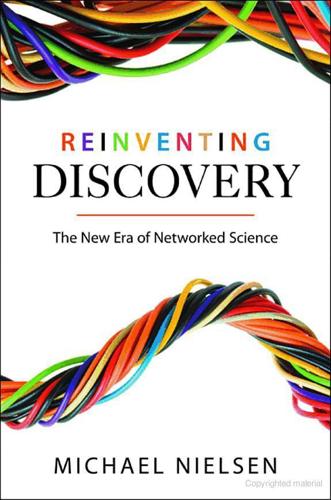
Reinventing Discovery: The New Era of Networked Science
by
Michael Nielsen
Published 2 Oct 2011
A Quantum Diaries Survivor (blog), July 17, 2010. http://www.science20.com/quantum_diaries_survivor/so_was_rumor_ more_just_rumor_or_was_it_honest_rumor. [56] Robert Dougans and David Allen Green. Virtual veracity. The Lawyer, July 5, 2010. [57] K. Eric Drexler. Hypertext publishing and the evolution of knowledge. Social Intelligence, 1:87–120, 1991. [58] Jason Dyer. A gentle introduction to the Polymath Project. The Number Warrior (blog), March 25, 2009. http://numberwarrior.wordpress.com/2009/03/25/a-gentle-introduction-to-the-polymath-project/. [59] David Easley and Jon Kleinberg. Networks, Crowds, and Markets.

Everything Is Obvious: *Once You Know the Answer
by
Duncan J. Watts
Published 28 Mar 2011
Common sense is how we know what to wear when we go to work in the morning, how to behave on the street or the subway, and how to maintain harmonious relationships with our friends and coworkers. It tells us when to obey the rules, when to quietly ignore them, and when to stand up and challenge the rules themselves. It is the essence of social intelligence, and is also deeply embedded in our legal system, in political philosophy, and in professional training. For something we refer to so often, however, common sense is surprisingly hard to pin down.3 Roughly speaking, it is the loosely organized set of facts, observations, experiences, insights, and pieces of received wisdom that each of us accumulates over a lifetime, in the course of encountering, dealing with, and learning from, everyday situations.

Groundswell: Winning in a World Transformed by Social Technologies
by
Charlene Li
and
Josh Bernoff
Published 23 May 2011
Scaling-and-optimizing-stage companies don’t just embrace the idea of social applications, they typically have a formalized process for getting them started, integrating them into the company’s other programs, and measuring their impact. Social applications generate data—a lot of it. Coordinating-stage companies use the data to improve social applications. Scaling-and-optimizing-stage companies collect the data and use it to develop social intelligence—a peek into the zeitgeist around a brand or company. Zach Hofer-Shall, Forrester’s expert on social listening, cites the example of Intel, which monitors online conversations across many social channels to gain customer insights. Intel uses this information to craft marketing and product strategy and to engage more intelligently with its developer community.

Forty Signs of Rain
by
Kim Stanley Robinson
Published 29 May 2004
All that growth from trying to understand other people, the other sex, and look where we are. ANNA WAS pleased to see Frank back in the office, brusque and grouchy though he was. He made things more interesting. A rant against oversized pickup trucks would morph into an explanation of everything in terms of yes or no, or a discussion of the social intelligence of gibbons, or an algebra of the most efficient division of labor in the lab. It was impossible to predict what he would say next. Sentences would start reasonably and then go strange, or vice versa. Anna liked that. He did, however, seem overly impressed by game theory. “What if the numbers don’t correspond to real life?”

Only Humans Need Apply: Winners and Losers in the Age of Smart Machines
by
Thomas H. Davenport
and
Julia Kirby
Published 23 May 2016
The authors of the Oxford study we referenced earlier—the one that says 47 percent of U.S. jobs are about to go the way of the passenger pigeon—manage to conclude their report with a ray of hope. They predict that “occupations that involve complex perception and manipulation tasks, creative intelligence tasks, and social intelligence tasks are unlikely to be substituted by computer capital over the next decade or two.” Although we could debate the 47 percent conclusion (and how it will translate to actual jobs lost), that sounds right to us, and we’ll amplify it a bit further. Work that involves courage and counterintuitive ideas won’t be taken away from humans.

Global Catastrophic Risks
by
Nick Bostrom
and
Milan M. Cirkovic
Published 2 Jul 2008
The heritability of i Q has received a great deal of attention, but a recent meta-analysis estimates broad heritability of IQ to be 0.5 and narrow heritability (the component of heritability that measures selectable phenotypic variation) to be as low as 0.34 (Devlin et al., 1997). But IQ is only one aspect of human intelligence, and other aspects of intelligence need investigation. Daniel Goleman has proposed that social intelligence, the ability to interact with others, is at least as important as I Q (Goleman, 1995 ), and Howard Gardner has explored multiple intelligences ranging from artistic and musical through political to mechanical (Gardner, 1993). All of us have a different mix of such intelligences. To the extent that genes contribute to them, these genes are likely to be polymorphic - that is, to have a number of alleles, each at appreciable frequency, in the human population.
…
104, 107 small interfering RNA (siRNA) technology 465 smallpox 291, 292, 294, 296 bioterrorism threat 457-8, 467 pandemic 1 520-1527 290 smallpox vaccination, health workers 473 Smart, ) . 80 smart weapons 488 social disruption 1, 19-20, 366-7, 375 after nuclear war 389 as consequence of molecular manufacturing 492 evolutionary consequences 5 5 i n existential disasters 369-72 after volcanic super-eruptions 2 1 3 social growth 364-6 social impact bioterrorism 467-8 nuclear terrorism 430-1 social intelligence 62 socialism, millenialism 74 societies 363-4 disaster policy 372-5 'soft' oversight of biotechnology research 462 solar activity, relationship to global warming 250- 1 , 258 solar evolution 34, 44 solar extinction 245 solar flares 239, 242-3, 258 damage to ozone layer 246 solar forcing of climate 268-9 solar luminosity changes 238-42 global warming 243-4 solar wind 250 sophistication effect 100 South Asia nuclear war risk 390 predicted death toll 388 Soviet nuclear weapons, possible terrorist acquisition 421 Soviet Union, totalitarianism 505, 506, 507 stability 507-8 Soviet Union disintegration, nuclear threat 406 Spaceguard project 14 Spanish flu 16, 290 re-synthesis of virus 450, 459-60 551 sparse information 105 Spearman's g 3 1 3 species metaphors, AI 3 3 0 , 3 3 3 Sprinzak, E. 439 stability, totalitarianism 506-10 stagnation, as result of global governance 494 Stalin 506, 507, 508 START agreements 382 starvation, causal factors 7 'Star Wars' anti-missile system 381 state complicity, nuclear terrorism 423-5 Steinbruner, J. et a!.
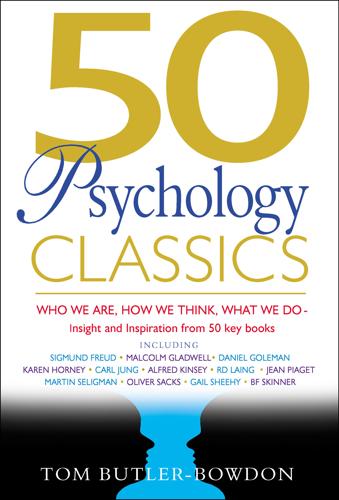
50 Psychology Classics
by
Tom Butler-Bowdon
Published 14 Oct 2007
Given men’s inclination to “roam,” the success of marriage as an institution, Moir and Jessel suggest, is a triumph of the female brain: “Power, in any state, depends on the possession of information. In the married state, women have more of it.” Marriage works not because women become subservient, but because women’s social intelligence enables the relationship to be well managed. Men and women at work The priority that women give to personal relationships tends to rule out the egocentricity, obsession with success, ruthlessness, and “suspension of personal values” that can characterize a man’s approach to his career.
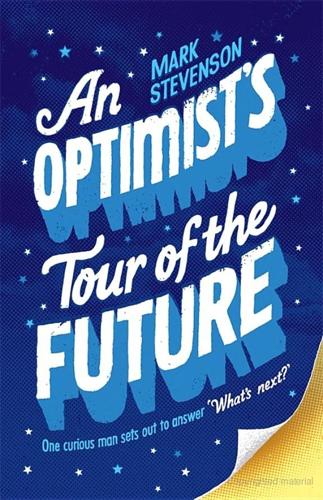
An Optimist's Tour of the Future
by
Mark Stevenson
Published 4 Dec 2010
So, for example, if someone gets too close to the robot, not only does it back away, it might express its annoyance at having its personal space invaded with a grimace or sound of disapproval. In these examples the robot responds directly to something you do. But Cynthia is striving for a robotic social intelligence that takes things into a whole new realm, responding to something you think, where the robot perceives something of your mental state from the way you are acting, perhaps understanding if you are sad, happy or confused – or working out that you believe something different to it. She admits we’re a long way off achieving anything that looks like this in a robot although in certain highly controlled conditions Leo has been able to work out that a researcher believes an object is in one box, even though Leo knows it’s in another, a version of something psychologists call the ‘false belief test.

Priceless: The Myth of Fair Value (And How to Take Advantage of It)
by
William Poundstone
Published 1 Jan 2010
When Richard Thaler tried this game on students at Cornell, he found that a “fair” fifty-fifty split was by far the most common proposer offer. He also found that responders were willing to reject stingy offers. The average responder would accept $3 but reject $2. It’s not hard to understand what was going on. The proposers had enough social intelligence to know they had to give the responders enough to keep them satisfied. One thought that must have occurred to all is that a fifty-fifty split is “fair.” That makes a case for offering an even split, as a plurality of Cornell students did. The thing is, neither life nor the ultimatum game is necessarily fair.

Human Compatible: Artificial Intelligence and the Problem of Control
by
Stuart Russell
Published 7 Oct 2019
It’s complicated It is a staple of modern psychology that a single IQ number cannot characterize the full richness of human intelligence.3 There are, the theory says, different dimensions of intelligence: spatial, logical, linguistic, social, and so on. Alice, our soccer player from Chapter 2, might have more spatial intelligence than her friend Bob, but less social intelligence. Thus, we cannot line up all humans in strict order of intelligence. This is even more true of machines, because their abilities are much narrower. The Google search engine and AlphaGo have almost nothing in common, besides being products of two subsidiaries of the same parent corporation, and so it makes no sense to say that one is more intelligent than the other.

Broke: How to Survive the Middle Class Crisis
by
David Boyle
Published 15 Jan 2014
In a New York Times column, David Autor and David Dorn looked at the process of replacing careers with technology, even now the jobs of high-income workers, such as professional managers, engineers and consultants.[1] They argued that 47 per cent of 700 occupation types in the USA are now at risk from automation, thanks to the emergence of big data and advanced sensors, which give robots better senses and dexterity, so that they can perform a broader scope of non-routine manual tasks. Algorithms for big data are already taking over tasks which rely on recognising patterns. Autor and Dorn suggest that the way to avoid this fate is to choose to train for careers that require creativity and social intelligence. But then how do you earn enough to get a roof over your head in some parts of the UK? But in the cacophony of figures about our battered economy, we are going to have to look beyond all this to see what is really happening. Because that is hard to discern sometimes, with all the talk of a ‘booming’ southern England and a struggling northern England.
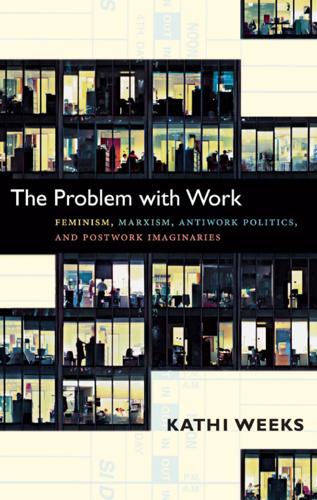
The Problem With Work: Feminism, Marxism, Antiwork Politics, and Postwork Imaginaries
by
Kathi Weeks
Published 8 Sep 2011
The refusal of work as both a practical demand and a theoretical perspective presupposes an appreciation of the potentially immense productive power of the accumulated capacities of social labor. “What we want,” explains another autonomist, Franco Berardi (“Bifo”), “is to apply, totally and coherently, the energies and the potential that exist for a socialized intelligence, for a general intellect. We want to make possible a general reduction in working time and we want to transform the organization of work in such a way that an autonomous organization of sectors of productive experimental organization may become possible” (1980, 157–58). This affirmation of the creative powers of social labor notwithstanding, the refusal of work does not simply replicate the productivist glorification of work (even socialist or unalienated work).

Rage Inside the Machine: The Prejudice of Algorithms, and How to Stop the Internet Making Bigots of Us All
by
Robert Elliott Smith
Published 26 Jun 2019
The first group has to do with perception and manipulation, and it included the O*NET metrics for finger dexterity, manual dexterity and cramped work spaces (or awkward positions). The second group has to do with creative intelligence, which includes the O*NET ratings for originality and fine arts. The third group has to do with social intelligence and includes the O*NET numbers for social perceptiveness, negotiation persuasion and assisting and caring for others. Only these nine numerical features are used by the algorithm to determine whether a machine can do a human being’s job. After the GPC algorithm’s Bell Curve is warped around to best fit to the seventy jobs into its tails, that curve (acting very much like a IQ test relative to Spearman’s g factor) naturally provides a ‘probability’ of computerizability for all the other 632 jobs, simply by putting the scores on these nine metrics into the warped Bell Curve (that mis-shaped rugby ball) that the algorithm has ‘learned’.

The AI Economy: Work, Wealth and Welfare in the Robot Age
by
Roger Bootle
Published 4 Sep 2019
Manyika, J. and Miremadi, M. (2015) “Four Fundamentals of Workplace Automation,” McKinsey Quarterly (November). 21 Max Tegmark has laid down three criteria for judging whether a job is more or less likely to be challenged, or replaced, by robots any time soon. They amount to essentially the same as McKinsey’s two criteria, with my suggested addition of “common sense.” They are: Does it require interacting with people and using social intelligence? Does it involve creativity and coming up with clever solutions? Does it require working in an unpredictable environment? Tegmark (2017), p. 121. 22 Chace, C. (2016). 23 Ibid., p. 249. 24 Simon, H. (1965) The Shape of Automation for Men and Management, New York: Harper. 25 Minsky, M. (1967) Finite and Infinite Machines, New Jersey: Prentice Hall. 26 Bostrom, N. (2014) Superintelligence: Paths, Dangers, Strategies, Oxford: Oxford University Press, p. 4. 27 According to Chace (2016), p. 14. 28 Reported in The Economist, April 21, 2018. 29 Markoff, J. (2012) How Many Computers to Identify a Cat?
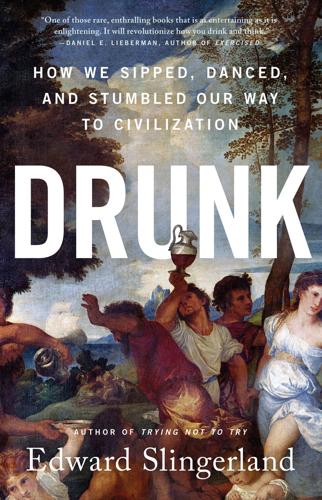
Drunk: How We Sipped, Danced, and Stumbled Our Way to Civilization
by
Edward Slingerland
Published 31 May 2021
Corvids are capable of making tools that require several, cumulative steps to create (such as carefully shaped hooks or leaves cut into particular shapes), carrying these tools with them on foraging expeditions (evidence of foresight and planning), and using them to dislodge insects from hard-to-reach places.10 They have impressive memories, evinced by their ability to hide or “cache” excess food over a broad geographical range. Perhaps most surprisingly, they display impressive social intelligence. A corvid that is observed by another corvid while caching food will often wait until the potential thief is distracted and then go back to re-hide its bounty. They will also, when being observed by another corvid, hide pretend food, like small stones that look like nuts, or lead would-be spies on wild-goose chases away from the real location of their cached food.

The Smart Wife: Why Siri, Alexa, and Other Smart Home Devices Need a Feminist Reboot
by
Yolande Strengers
and
Jenny Kennedy
Published 14 Apr 2020
We don’t yet know that much about the effects of these smart wives in the real world. The second concern is that roboticists are quite specific—or perhaps quite narrow—about the ways in which they interpret “social.” A sociable robot is defined by leading roboticist Cynthia Breazeal as being “socially intelligent in a humanlike way, and interacting with it is like interacting with another person.”22 Such social actions might involve, for example, developing the right “gazes” to support social engagement between humans and robots (such as long gazes, short glances, or eye scanning).23 The aim is to design robots to elicit an emotional, friendly, and empathetic response from people.
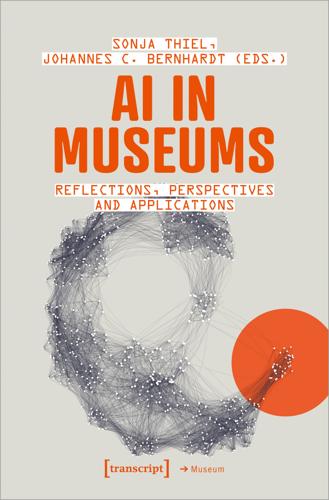
AI in Museums: Reflections, Perspectives and Applications
by
Sonja Thiel
and
Johannes C. Bernhardt
Published 31 Dec 2023
Available online at https://www.ethikra t.org/fileadmin/Publikationen/Stellungnahmen/deutsch/stellungnahme-men sch-und-maschine.pdf. Dihal, K./Duarte, T. (2023). Better Images of AI: A Guide for Users and Creators. Available online at https://blog.betterimagesofai.org/better-images-of-ai-guid e/. Esposito, Elena (2022). Artificial Communication: How Algorithms Produce Social Intelligence. Cambridge, MA, The MIT Press. https://doi.org/10.7551/mitpress/1 4189.001.0001. Ess, Charles (2019). Digital Media Ethics. 3rd ed. Newark, Polity Press. https://doi.o rg/10.1093/acrefore/9780190228613.013.508. European Commission (2020). White Paper Artificial Intelligence. Available online at https://ec.europa.eu/info/sites/default/files/commission-white-paper-artifi cial-intelligence-feb2020_en.pdf.

How the Mind Works
by
Steven Pinker
Published 1 Jan 1997
Any social species can begin a never-ending escalation of brain power, but none except ours has, probably because without some other change in lifestyle, the costs of intelligence (brain size, extended childhood, and so on) would damp the positive feedback loop. Humans are exceptional in mechanical and biological, not just social, intelligence. In a species that runs on information, each faculty multiplies the value of the others. (Incidentally, the expansion of the human brain is no evolutionary freak crying out for a runaway positive feedback loop. The brain tripled in size in five million years, but that is leisurely by evolutionary timekeeping.
…
Women did not wait in the kitchen to cook the mastodon that Dad brought home, nor did they forgo the expansion of intelligence enjoyed by evolving men. The ecology of modern foraging peoples suggests that Woman the Gatherer provided a substantial portion of the calories in the form of highly processed plant foods, and that requires mechanical and biological acumen. And, of course, in a group-living species, social intelligence is as important a weapon as spears and clubs. But Tooby and DeVore have argued that hunting was nonetheless a major force in human evolution. The key is to ask not what the mind can do for hunting, but what hunting can do for the mind. Hunting provides sporadic packages of concentrated nutrients.

The Master Algorithm: How the Quest for the Ultimate Learning Machine Will Remake Our World
by
Pedro Domingos
Published 21 Sep 2015
This requires a new kind of learning that doesn’t treat the data as a random sample of unrelated objects but as a glimpse into a complex network. Nodes in the network interact; what you do to one affects the others and comes back to affect you. Relational learners, as they’re called, may not quite have social intelligence, but they’re the next best thing. In traditional statistical learning, every man is an island, entire of itself. In relational learning, every man is a piece of the continent, a part of the main. Humans are relational learners, wired to connect, and if we want Robby to grow into a perceptive, socially adept robot, we need to wire him to connect, too.

Together
by
Vivek H. Murthy, M.D.
Published 5 Mar 2020
Like Yalda Uhls, who found that outdoor camp can increase empathy among kids, Steiner-Adair describes camp as an important setting for youth. “There’s no better place that I can think of to learn social emotional intelligence,” she told me when we spoke recently. Not all camps are equal, of course. Nor is camp the only place where kids develop social intelligence. However, the summer-camp model is worth examining because, as Steiner-Adair said, “The canons at a good camp are empathy, authenticity, and social and emotional intelligence.” At camp, kids are released from what Steiner-Adair calls the digital pacifier. “Everybody is present to each other.

The Costs of Connection: How Data Is Colonizing Human Life and Appropriating It for Capitalism
by
Nick Couldry
and
Ulises A. Mejias
Published 19 Aug 2019
And it ignores the power of data relations to restructure life for capital in societies such as China and Russia, where data colonialism proceeds under the auspices of an authoritarian state. As Michael Hardt and Antonio Negri write, “Behind the value of data . . . stands the wealth of social relationships, social intelligence, and social production.”144 But there is no “behind” in the space in which data colonialism operates; it is not a stage with a front and back but a force field, as powerful in the long run as the force field of labor relations that transformed the social world two centuries ago. In this chapter, we have unpacked the double theoretical foundations of our argument: data colonialism and the emergence through data relations of a new capitalist social order.

Yoga Nidra: The Art of Transformational Sleep
by
Kamini Desai
Published 7 Mar 2017
When operating well, it regulates our behavior and mediates conflicting thoughts, making choices between right and wrong, as well as predicting the probable outcomes of actions or events. This brain area governs management of our emotions, exerts social control, and manages our fears and sexual urges. It is strongly implicated in human qualities like consciousness, general emotional and social intelligence, empathy, insight, intuition, personality, and attuned communication. The prefrontal cortex primarily develops its strength and resilience to difficulty through caregiver bonding – through feeling safe, secure, loved, and being held. When we experience prolonged neglect or trauma in childhood or as an adult, it affects the physical structure of the brain, especially in the middle prefrontal cortex.

American Foundations: An Investigative History
by
Mark Dowie
Published 3 Oct 2009
Like the supporters of the exact sciences, the funders of social sciences were utilitarian pragmatists displaying "no interest in the promotion of scientific research as an end in itself"; their motive "was not sheer curiosity as to how various social and human phenomenon came to be ... but as a means to an end . . . the advancement of human welfare."29 Their aim was to support the "systematic social intelligence" that should inform human affairs. The most overt, though belated, public expression of Progressivism came during the presidency of Herbert Hoover. Unlike the presidents who preceded him, Hoover thought that scientific and engineering experts could temper business cycles and that social research could provide government policymakers with rational guidance.
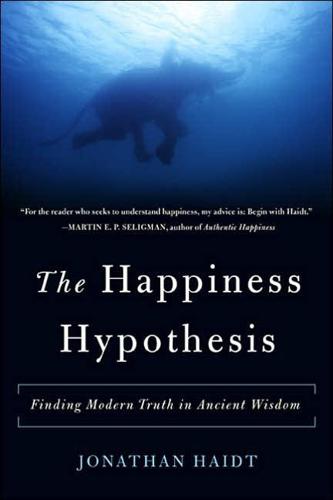
The Happiness Hypothesis: Finding Modern Truth in Ancient Wisdom
by
Jonathan Haidt
Published 26 Dec 2005
Studies of "motivated reasoning"13 show that people who are motivated to reach a particular conclusion are even worse reasoners than those in Kuhn's and Perkins's studies, but the mechanism is basically the s a m e : a one-sided search for supporting evidence only. People who are told that they have performed poorly on a test of social intelligence think extra hard to find reasons to discount the test; people who are asked to read a study showing that one of their habits—such as drinking coffee—-is unhealthy think extra hard to find flaws in the study, flaws that people w h o don't drink coffee don't notice. Over and over again, studies show that people set out on a cognitive mission to bring back reasons to support their preferred belief or action.

Radical Technologies: The Design of Everyday Life
by
Adam Greenfield
Published 29 May 2017
(Proponents of this approach invariably cite the “precrime” unit of Steven Spielberg’s 2002 Minority Report, evidently mistaking the film’s depiction of dystopian oppression for an aspirational goal.)18 There are a few different approaches and strategies bound up in the practice of predictive policing, but what they all have in common is that they propose to sit in Olympian detachment, far removed from the play of events, and reach down into all the murk of our affairs to wrest the single salient truth from a whirling storm of confusion. The simplest tools mobilized in predictive policing efforts, and in a way the most general, are dedicated to geolocating and otherwise parsing the things people say on social media, in the hopes of drawing actionable inferences from them. This is the province of “location-based social intelligence” applications like Snaptrends and SpatialKey, which promise to “identify, isolate and assess” threats, whether direct or indirect. A Snaptrends brochure for prospective customers in the law enforcement sector makes the proposition explicit: “From angry Facebook posts to suggestive Instagram uploads, today’s would-be criminals often leave A STRING OF CLUES across social media,” and a public-safety agency made aware of those CLUES can deploy its resources in time to preempt the commission of crime.19 Such tools use sentiment analysis, a facet of the emerging pseudoscience of “intent recognition,” to extract actionable intelligence from utterances.20 But it’s astonishing that anyone takes sentiment analysis seriously in any but the most trivial applications, let alone what is all too often the life-or-death context of a police stop.

The Village Effect: How Face-To-Face Contact Can Make Us Healthier, Happier, and Smarter
by
Susan Pinker
Published 30 Sep 2013
The emotional and psychological investments that a close relationship requires are considerable, and the emotional capital we have available is limited,” Dunbar writes.38 A primatologist by training, Dunbar is a mild-mannered, sixtyish Oxford academic with a graying chinstrap beard, large rimless glasses, and a tendency to sprinkle “as it were” into his speech every few minutes. He should have added “as it were” to that previous statement about the mind: I doubt that he meant our minds were designed per se but rather that they evolved over time to support the size and complexity of our social groups. Called the social intelligence hypothesis, it explains why primates, and humans in particular, developed brains large enough for them to develop the capacities for language and empathy.39 In order for primates to survive in larger groups, they needed supercharged brainpower to keep track of who was sleeping with whom, who was whose momma, who was the Big Cheese at any given moment (and who he had just deposed), who was his right-hand man and who were his allies, and which young whippersnapper was planning to depose him.

The Black Box Society: The Secret Algorithms That Control Money and Information
by
Frank Pasquale
Published 17 Nov 2014
Gabriella Coleman, Coding Freedom: The Ethics and Aesthetics of Hacking (Princeton, NJ: Princeton University Press, 2013) (exploring Debian open source community and assessment of community members’ contributions); Stephen Baker, The Numerati (New York: Houghton-Miffl in, 2008), 33. 87. Mat Honan, “I Flunked My Social Media Background Check. Will You?,” Gizmodo (July 7, 2011). Available at http://gizmodo.com /5818774 /this-is -a-social-media-background-check /. (“For each [social media] internet sources, Social Intelligence scored [candidate as] either “pass” or “negative,” and included comments such as “subject admits to use of cocaine as well as LSD,” and “subject references use of Ketamine [another recreational drug].”). NOTES TO PAGES 34–37 235 88. Solove, The Digital Person, 47. 89. Tom Burghardt, “Big Brother a Click Away,” Pacifi c Free Press, October 10, 2010, http://www.pacificfreepress.com /news/1/7119-big-brother-a-click -away.html.

Giving the Devil His Due: Reflections of a Scientific Humanist
by
Michael Shermer
Published 8 Apr 2020
Regardless of who might be considered the “father” of the modern skeptical movement, everyone I have spoken to (including the other founders) agrees that it was Paul Kurtz more than anyone else who actually made it happen. All successful social movements have someone who has the organizational skills and social intelligence to get things done. Paul Kurtz is that man. When he founded the organization that launched the modern skeptical movement, I was a graduate student in experimental psychology. About this time (the mid-1970s) Uri Geller entered my radar screen. I recall Psychology Today and other popular magazines published glowing stories about him, and reports were afloat that experimental psychologists had tested the Israeli psychic and determined that he was genuine.
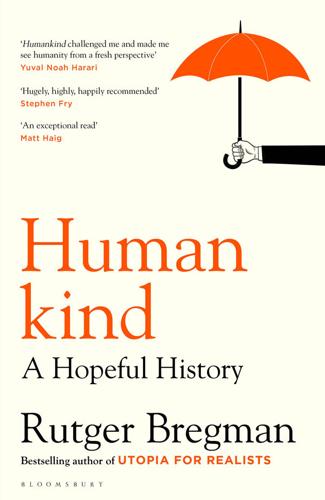
Humankind: A Hopeful History
by
Rutger Bregman
Published 1 Jun 2020
And they didn’t pick it up from their owners, because puppies can pass the test at nine weeks old. Brian’s colleague and adviser, the primatologist Richard Wrangham, suggested that canine intelligence might arise on its own, as a chance by-product, like corkscrew tails and drop ears. But Brian didn’t buy that; how could a trait as instrumental as social intelligence be an accident? Rather, the young biologist suspected that our ancestors had selectively bred the smartest dogs. There was only one way Brian could test his suspicion. It was time for a trip to Siberia. Years earlier, Brian had read about an obscure study by a Russian geneticist who purportedly had turned foxes into dogs.

Feral: Rewilding the Land, the Sea, and Human Life
by
George Monbiot
Published 13 May 2013
If we take the time to win their trust—as the biologists who have been adopted by wild wolf packs can testify—they can become affectionate companions. But the fairytales are more powerful than the facts. Could it be that we are so afraid of wolves not because they represent an alien threat, but because we recognize in them some of our own traits? They have a similar social intelligence: the ability to interpret and respond to someone else’s behavior and mood. They look at you as if they can read your mind. To some extent they can, which is why we domesticated them. This, perhaps, is why they unnerve us, and why so many stories have been written and filmed in which wolves become humans or disguise themselves as such, or humans become wolves.
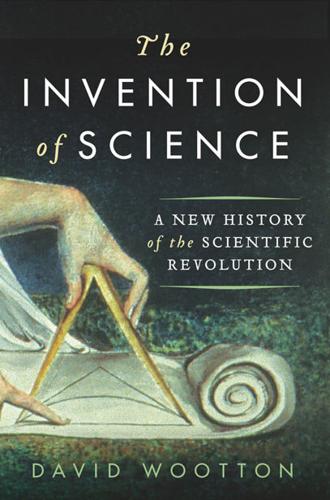
The Invention of Science: A New History of the Scientific Revolution
by
David Wootton
Published 7 Dec 2015
. ———. ‘The Copernican Question Revisited: A Reply to Noel Swerdlow and John Heilbron’. Perspectives on Science 21 (2013): 100–36. Westman, Robert S and JE McGuire. Hermeticism and the Scientific Revolution. Los Angeles: William Andrews Clark Memorial Library, 1977. Westrum, Ron. ‘Science and Social Intelligence about Anomalies: The Case of Meteorites’. Social Studies of Science 8 (1978): 461–93. Whewell, William. ‘On the Connexion of the Physical Sciences’. Quarterly Review 51 (1834): 54–68. ———. The Philosophy of the Inductive Sciences, Founded upon Their History. 2 vols. London: John W Parker, 1840.
…
Berkel, Isaac Beeckman (2013), 144–5. 129. Clark, Thinking with Demons (1997). 130. Arnauld & Nicole, La Logique (1970), Part 4, Ch. 14. 131. Accademia del Cimento, Saggi di naturali esperienze (1667), 146; Accademia del Cimento, Essayes of Natural Experiments (1684), 77. 132. Westrum, ‘Science and Social Intelligence about Anomalies’ (1978). 133. Nield, Incoming! (2011), 67–72. 134. Pantin, ‘New Philosophy and Old Prejudices’ (1999), 260. Gilbert uses the phrase ‘libere philosophare’ in the preface to the reader of De magnete. 135. Goulding, ‘Henry Savile and the Tychonic World-system’ (1995), 175. 136.
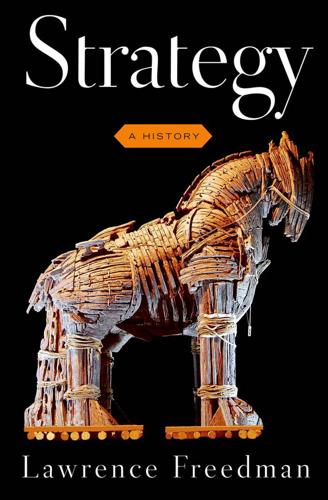
Strategy: A History
by
Lawrence Freedman
Published 31 Oct 2013
Something so costly to maintain must have developed to meet a vital need. Richard Byrne and Nadia Corp studied eighteen species from all the major branches of primates and correlated the size of the neocortex to the amount of deception the species practiced. They established a link between the size of the brains and general social intelligence, including the ability to work together and manage conflict, as well as trickery.4 In evolutionary terms, the value of these skills was not hard to imagine in the face of challenges from other species that might be stronger but also more stupid. If neocortex size set the limits on the mental world of a particular animal, then it would also set limits on those with whom relationships could be formed, and therefore the number of allies available at times of conflict.
…
Keeley, War Before Civilization: The Myth of the Peaceful Savage (New York: Oxford University Press, 1996), 48. 12. Azar Gat, War in Human Civilization (Oxford: Oxford University Press, 2006), 115–117. 13. Keeping in mind that these societies were relatively simple and social moves within them, including deception, would be less demanding than those in more complex human societies. Kim Sterelny, “Social Intelligence, Human Intelligence and Niche Construction,” Philosophical Transactions of The Royal Society 362, no. 1480 (2007): 719–730. 2 Origins 2: The Bible 1. Steven Brams, Biblical Games: Game Theory and the Hebrew Bible (Cambridge, MA: The MIT Press, 2003). 2. Ibid., 12. 3. Genesis 2:22, 23.

Blockchain Revolution: How the Technology Behind Bitcoin Is Changing Money, Business, and the World
by
Don Tapscott
and
Alex Tapscott
Published 9 May 2016
Other blockchains, such as Ripple and Stellar, rely on social networks for consensus and may recommend that new participants (i.e., new nodes) generate a unique node list of at least one hundred nodes they can trust in voting on the state of affairs. This type of proof is biased: newcomers need social intelligence and reputation to participate. Proof of activity is another mechanism; it combines proof of work and proof of stake, where a random number of miners must sign off on the block using a cryptokey before the block becomes official.9 Proof of capacity requires miners to allot a sizable volume of their hard drive to mining.
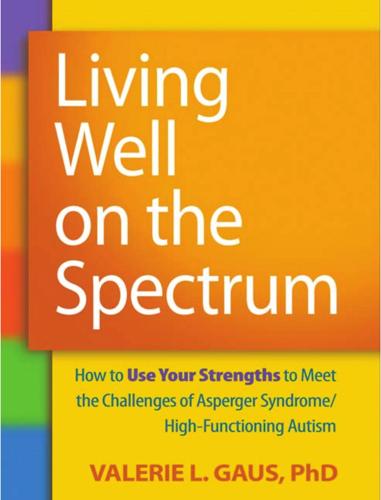
Living Well on the Spectrum
by
Valerie L. Gaus
Published 4 Feb 2011
Mind reading: The interactive guide to emotions [DVD and CD-ROM set]. London: Jessica Kingsley. Cohen, M. R. (2011). Social literacy: A social skills seminar for young adults with ASDs, NLDs, and social anxiety. Baltimore: Brookes. Fiske, S. T., & Taylor, S. E. (1984). Social cognition. New York: Random House. Goleman, D. (2006). Social intelligence: The new science of human relationships. New York: Bantam. Grandin, T., & Barron, S. (2004). The unwritten rules of social relationships. Arlington, TX: Future Horizons. Myles, B., Trautman, M., & Schelvan, R. (2004). The hidden curriculum: Practical solutions for understanding unstated rules in social situations.

The Hype Machine: How Social Media Disrupts Our Elections, Our Economy, and Our Health--And How We Must Adapt
by
Sinan Aral
Published 14 Sep 2020
She discovered that while lemurs developed complex social orders, they did so without the object-learning capacity and manipulative dexterity that some had thought explained primate intelligence. Having seen strong evidence for the development of a social order, without evidence of object learning or fine gross motor skills, she discovered that, in lemurs at least, social intelligence preceded object and manipulative intelligence. She concluded that “primate society, thus, could develop without the object-learning capacity or manipulative ingenuity of monkeys. This manipulative, object cleverness, however, evolved only in the context of primate social life. Therefore, I would argue that some social life preceded and determined the nature of primate intelligence.”
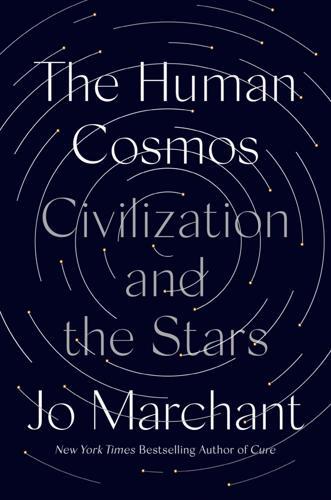
The Human Cosmos: A Secret History of the Stars
by
Jo Marchant
Published 15 Jan 2020
The Early Mountain Sanctuary at Göbekli Tepe and the Onset of Food-Production,” Actual Archaeology, January 2015, 32–49; Oliver Dietrich et al., “Markers of ‘Psycho-cultural’ Change: The Early-Neolithic Monuments of Göbekli Tepe in Southeastern Turkey,” in Handbook of Cognitive Archaeology: Psychology in Prehistory, ed. Tracy Henley et al. (New York: Routledge, 2020), 311–31. like “an amalgamation”: Steven Mithen, “Did Farming Arise from a Misapplication of Social Intelligence?,” Philosophical Transactions of the Royal Society B 362 (2007): 705–18. “neither the idea nor the desire”: Jacques Cauvin, The Birth of the Gods and the Origins of Agriculture (Cambridge, UK: Cambridge University Press, 2000), 72. this small region: Manfred Heun et al., “Site of Einkorn Wheat Domestication Identified by DNA Fingerprinting,” Science 278 (1997): 1312–14; Simcha Lev-Yadun et al., “The Cradle of Agriculture,” Science 288 (2000): 1602–3.

The Age of Spiritual Machines: When Computers Exceed Human Intelligence
by
Ray Kurzweil
Published 31 Dec 1998
Cambridge, MA: Harvard Business School Press, 1998. Drachmann, A. G. The Mechanical Technology of Greek and Roman Antiquity. Madison: University of Wisconsin Press, 1963. Drexler, K. Eric. Engines of Creation. New York: Doubleday, 1986. _______. “Hypertext Publishing and the Evolution of Knowledge.” Social Intelligence 1:2 (1991). Dreyfus, Hubert. “Alchemy and Artificial Intelligence,” Rand Technical Report, December 1965. ________. Philosophic Issues in Artificial Intelligence. Chicago: Quadrangle Books, 1967. ______. What Computers Can’t Do: The Limits of Artificial Intelligence. New York: Harper and Row, 1979. _______.
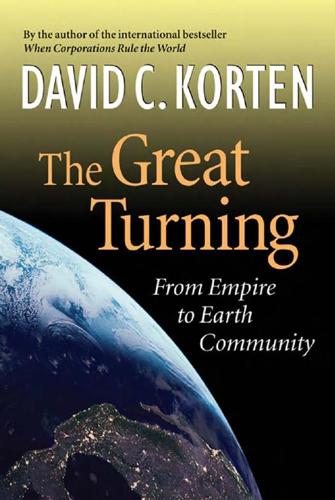
The Great Turning: From Empire to Earth Community
by
David C. Korten
Published 1 Jan 2001
Rather, they appear to have been acting from the purely selfreferential perspective common to young children. Catholic theologian Daniel Maguire refers to this pattern as moral autism.7 Like the young delinquent mentioned earlier, the adult operating from an Imperial Consciousness may have the social intelligence to recognize that it is easiest to steal from those who trust you, but lack the moral capacity to recognize that to do so constitutes a wrong in itself and destroys the fabric of trust essential to healthy social relationships. When such adults appear among the lower socioeconomic classes, the ruling establishment commonly identifies them as sociopaths and confines them to a prison or mental institution.

Terms of Service: Social Media and the Price of Constant Connection
by
Jacob Silverman
Published 17 Mar 2015
One answer is that it’s a by-product of the network effect: the more people who are part of a network, the more one’s experience can seem impoverished by being left out. Everyone else is doing it. A billion people on Facebook, hundreds of millions scattered between these other networks—who wants to be on the outside? Who wants to miss a birthday, a friend’s big news, a chance to sign up for Spotify, or the latest bit of juicy social intelligence? And once you’ve joined, the updates begin to flow, the small endorphin boosts of likes and repins becoming the meager rewards for all that work. The feeling of disappointment embedded in each gesture, the sense of “Is this it?”, only advances the process, compelling us to continue sharing and participating.
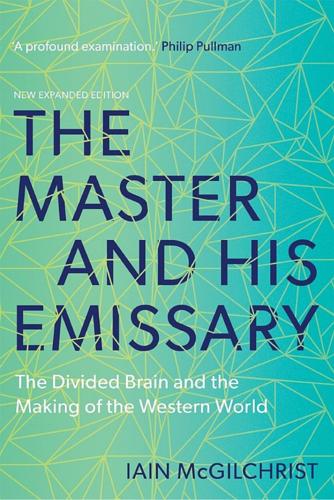
The Master and His Emissary: The Divided Brain and the Making of the Western World
by
Iain McGilchrist
Published 8 Oct 2012
Those individuals less able to imitate would be less well bound into the group, and would not prosper to the same degree. The other big selective factor in acquiring skills and fitting in with the group would be flexibility, which comes with expansion of the frontal lobes – particularly the right frontal lobe, which is also the seat of social intelligence. Skills are intuitive, ‘inhabited’ ways of being and behaving, not analytically structured, rule-based techniques. So it may be that we were selected – not for specific abilities, with specific genes for each, such as the ‘language gene(s)’ or the ‘music gene(s)’ – not even ‘group selected’ for such genes – but individually for the dual skills of flexibility and the power to mimic, which are what is required to develop skills in general.
…
Since that time rates have steadily climbed, and continue to climb. Again, both these conditions are marked by clinical features strongly suggestive of right-hemisphere hypofunction, and the resulting picture is one of left-hemisphere dominance. There is in autism an inability to tell what another is thinking (lack of ‘theory of mind’); a lack of social intelligence – difficulty in judging nonverbal features of communication, such as tone, humour, irony; an inability to detect deceit, and difficulty understanding implicit meaning; a lack of empathy; a lack of imagination; an attraction to the mechanical; a tendency to treat people and body parts as inanimate objects; an alienation from the self (autistic children often fail to develop the first-person perspective and speak of themselves as ‘he’ or ‘she’); an inability to engage in eye contact or mutually directed gaze; and an obsession with detail.76 All these features will be recognisable as signs of left hemisphere predominance.
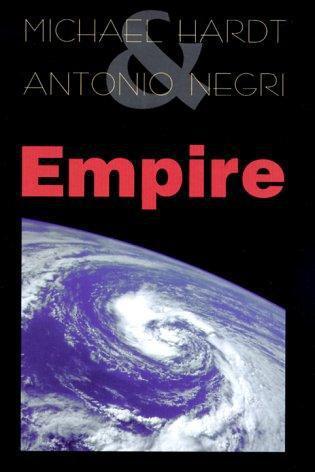
Empire
by
Michael Hardt
and
Antonio Negri
Published 9 Mar 2000
In fact, the value of labor and production is deter- mined deep in the viscera oflife. Industry produces no surplus except what is generated by social activity—and this is why, buried in the great whale oflife, value is beyond measure. There would be no surplus ifproduction were not animated throughout by social intelligence, by the general intellect and at the same time by the affective expressions that define social relations and rule over the articulations ofsocial being. The excess ofvalue is determined today in the affects, in the bodies crisscrossed by knowledge, in 366 T H E D E C L I N E A N D F A L L O F E M P I R E the intelligence ofthe mind, and in the sheer power to act.
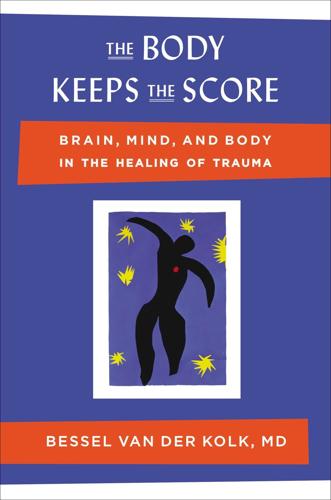
The Body Keeps the Score: Brain, Mind, and Body in the Healing of Trauma
by
Bessel van Der Kolk M. D.
Published 7 Sep 2015
Zangi, et al., “A Mindfulness-Based Group Intervention to Reduce Psychological Distress and Fatigue in Patients with Inflammatory Rheumatic Joint Diseases: A Randomised Controlled Trial,” Annals of the Rheumatic Diseases 71, no. 6 (2012): 911–17. CHAPTER 18: FILLING IN THE HOLES: CREATING STRUCTURES 1. Pesso Boyden System Psychomotor. See http://pbsp.com/. 2. D. Goleman, Social Intelligence: The New Science of Human Relationships (Random House Digital, 2006). 3. A. Pesso, “PBSP: Pesso Boyden System Psychomotor,” in Getting in Touch: A Guide to Body-Centered Therapies, ed. S. Caldwell (Wheaton, IL: Theosophical Publishing House, 1997); A. Pesso, Movement in Psychotherapy: Psychomotor Techniques and Training (New York: New York University Press, 1969); A.
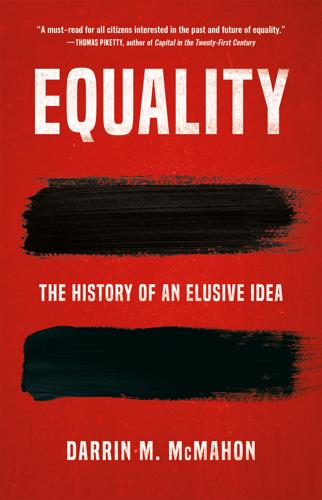
Equality
by
Darrin M. McMahon
Published 14 Nov 2023
And that tool—the brain—in the end, proved to be the most important egalitarian force of them all, for it allowed our ancestors to cooperate to an unprecedented degree. If tools helped us to contest the dictates of biology and nature, the brain permitted us to imagine—and to shape—a world that was very different from what we first encountered. Our remarkable human intelligence is to a large degree a social intelligence, permitting us to communicate and to act to secure common ends. Bonobos and chimps possess aspects of that intelligence, forming coalitions and engaging in sophisticated assessments of power and “politics.” But as our hominid ancestors broke away from the branch of common descent and their brains steadily increased in size, their political or “actuarial” acumen grew.
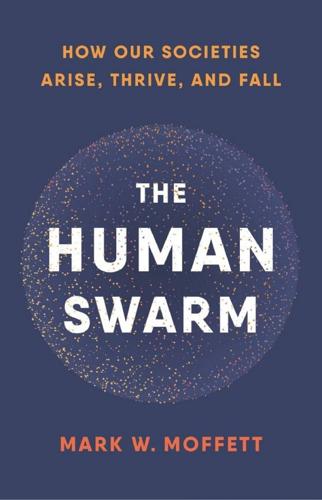
The Human Swarm: How Our Societies Arise, Thrive, and Fall
by
Mark W. Moffett
Published 31 Mar 2019
See nationalism body adornment and marking, 110, 127, 145, 153–155, 285, 380 bonobos (societies called communities), 38, 41, 43, 133, 150, 164, 203, 205, 281, 378, 386, 391 cooperation and conflict within communities of, 22, 24, 35–36, 113 cooperation and conflict between communities of, 46, 225, 228, 281 friendships between communities, 46 human relation to/comparison with, 7, 58–59, 102, 105, 136, 142, 151, 226, 232, 264 kinship patterns of, 59, 203, 205, 206–207 peacefulness of, 24, 33, 35, 46, 225, 226, 232, 244, 281 societal divisions for, 242–246, 264 societal factions with, 244 strangers, response to, 79 territoriality of, 33 tolerance between societies, 226 boundaries, social, 21, 31, 43, 88, 103–106, 182, 236, 252, 258–259, 264, 287, 315–317, 335, 341, 348–349, 353, 384 See also territories boundary regulation, 256, 392 brain size and social intelligence, 9, 19–21, 30–31, 38, 66, 68, 90–93, 144, 151, 156, 374 See also cognitive abilities; social brain hypothesis budding, 245, 247, 391 Bushmen, 88, 97, 98–99, 102, 106, 107, 108, 109, 115, 117, 119, 126, 127, 128–131, 145–146, 153, 161, 168, 171, 184, 189–190, 201–202, 207, 209, 210, 220, 230, 232, 236, 373, 374, 375, 378, 390 choice of name, versus San, 107, 375 Calusa, 130, 135, 288 cannibalism, 110–111, 223, 288 carrying capacity, 269 chiefdoms agricultural practices and accelerated rise of, 299 conflict and violence between, 288, 344, 345 definition of, 288 ethnicity and race in, 310 power structures and leadership in, 289–291, 296 mergers between, 394–395 settled hunter-gatherers as, 288 state societies relation to, 288–292, 297–298, 300 as a turning point in societies acting as a unit, 288–290 chiefs.
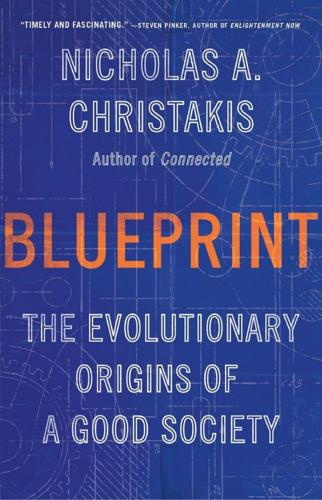
Blueprint: The Evolutionary Origins of a Good Society
by
Nicholas A. Christakis
Published 26 Mar 2019
Mitani, “Cooperation and Competition in Chimpanzees: Current Understanding and Future Challenges,” Evolutionary Anthropology 18 (2009): 215–227. 25. Mitani, “Cooperation and Competition”; J. B. Silk et al., “Strong and Consistent Social Bonds Enhance the Longevity of Female Baboons,” Current Biology 20 (2010): 1359–1361. 26. R. C. Connor, “Dolphin Social Intelligence: Complex Alliance Relationships in Bottlenose Dolphins and a Consideration of Selective Environments for Extreme Brain Size Evolution in Mammals,” Philosophical Transactions of the Royal Society B 362 (2007): 587–602. 27. See, for example, J. E. Tanner, F. G. P. Patterson, G. Francine, and R.

Slouching Towards Utopia: An Economic History of the Twentieth Century
by
J. Bradford Delong
Published 6 Apr 2020
Whatever was or wasn’t agreed to, in 1885 Edison refused to pay that sum. Tesla quit and found himself digging ditches for a living for a couple of years. By his own estimations, Tesla was a difficult man who found other men difficult. The day after Edison died, for example, Tesla seemed to demonstrate an extraordinary lack of any social intelligence whatsoever as he sketched, for the newspapers, his onetime employer and world-renowned inventor thusly: Edison, he said, had no hobby, cared for no sort of amusement of any kind and lived in utter disregard of the most elementary rules of hygiene.… His method was inefficient in the extreme, for an immense ground had to be covered to get anything at all unless blind chance intervened and, at first, I was almost a sorry witness of his doings, knowing that just a little theory and calculation would have saved him 90 percent of the labor.
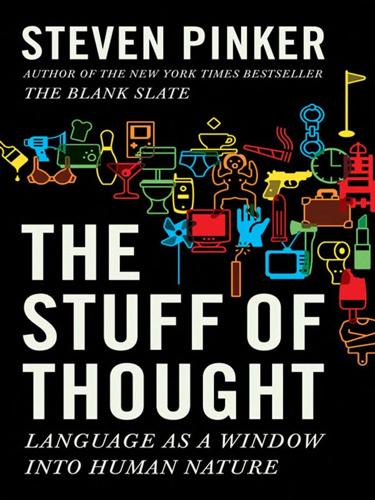
The Stuff of Thought: Language as a Window Into Human Nature
by
Steven Pinker
Published 10 Sep 2007
Actually, it is not a great risk; unless there is a clearly voluntary companionate pressure, anything less can be erased with an apology. However, once pressure is assayed and returned, the scene becomes electric with erotic potential.52 The ingenuity of these subterfuges shows that implicatures recruit the entirety of social intelligence and are not restricted to interpreting language itself. PASSING THE GIGGLE TEST: THE LOGIC OF NOT-SO-PLAUSIBLE DENIAL One problem remains unsolved: the psychological import of whether an overture is “on” or “off” the record in everyday conversation. The puzzle arises in cases in which two things are true.
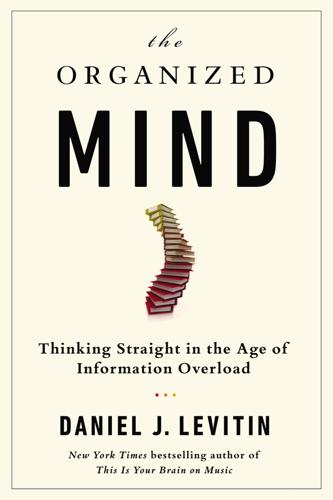
The Organized Mind: Thinking Straight in the Age of Information Overload
by
Daniel J. Levitin
Published 18 Aug 2014
Nevertheless, they don’t fit the standard business-school profile of a leader who has significant economic impact. Both kinds of leaders, those inside and outside the corporate world, possess certain psychological traits. They tend to be adaptable and responsive, high in empathy, and able to see problems from all sides. These qualities require two distinct forms of cognition: social intelligence and flexible, deep analytic intelligence. An effective leader can quickly understand opposing views, how people came to hold them, and how to resolve conflicts in ways that are perceived to be mutually satisfying and beneficial. Leaders are often adept at bringing people together—suppliers, potential adversaries, competitors, characters in a story—who appear to have conflicting goals.
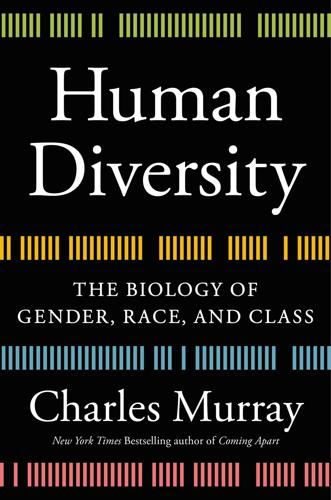
Human Diversity: The Biology of Gender, Race, and Class
by
Charles Murray
Published 28 Jan 2020
I think that psychologists are wedded to the creation and administration of short-answer tests, and particularly ones that resemble the IQ test. While such tests can probe linguistic and logical capacities, as well as certain spatial abilities, they are deficient in assessing other abilities, such as interpersonal intelligence (social intelligence), intrapersonal intelligence (akin to emotional intelligence), and other nonacademic intelligences. I have not devoted significant effort to creating such tests.” Gardner (2016): 169. I should emphasize that if you read Frames of Mind mentally substituting the word talent for intelligence and ignoring Gardner’s critique of g, there’s a lot to be learned from him.

The Impact of Early Life Trauma on Health and Disease
by
Lanius, Ruth A.; Vermetten, Eric; Pain, Clare
Published 11 Jan 2011
Chugani and colleagues [70] reported that previously institutionalized Romanian adoptees exhibited deficits on tasks dependent on PFC function (i.e., social and attention deficits). These children showed significantly decreased metabolism in the orbital frontal gyrus, temporal cortex, PFC, amygdala and brainstem (brain structures involved in cognitive function, social intelligence and anxiety) compared with children with chronic epilepsy and healthy adults. The corpus callosum appears particularly susceptible to the effects of early life stress. A lack of experience-dependent stimulation may lead to delays in myelination in neglected children [71,72]. To date, only a handful of studies involving maltreated children have been reported.

The Transhumanist Reader
by
Max More
and
Natasha Vita-More
Published 4 Mar 2013
See Bartley 1962. 3 Examples include World Wide Web anchors, Microsoft Word bookmarks, Lotus Notes, and Folio Views Popup text. 4 The use of bidirectional links for decentralized consumer reports is already happening on the American Information Exchange. 5 This essay was written well before 1997, thus the fictitious tongue-in-cheek story is actually a hypothetical scenario about electronic media. References Bartley, William W. III (1962) The Retreat to Commitment. Chicago: Open Court Publishing. Drexler, K. Eric (1991) “Hypertext Publishing and the Evolution of Knowledge.” Social Intelligence 1/2. Engelbart, Douglas C. (1962) “Augmenting Human Intellect: A Conceptual Framework.” SRI Project 3578 (October). Popper, Karl R. (1950) The Open Society and its Enemies. Princeton, N.J.: Princeton University Press. Popper, Karl R. (1959) The Logic of Scientific Discovery. New York: Harper & Row.
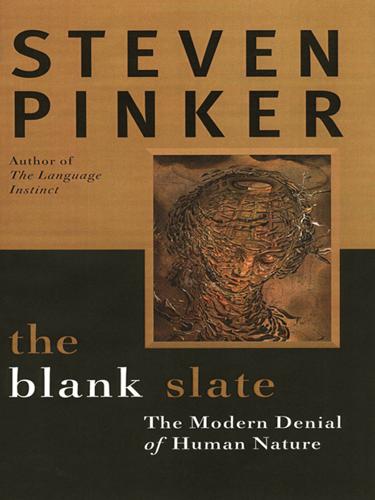
The Blank Slate: The Modern Denial of Human Nature
by
Steven Pinker
Published 1 Jan 2002
TAMARA [interrupting]: Uncle, he has another wife.16 Yes, within seconds of the miraculous reunion they are bickering, picking up from where they left off when they were separated a decade before. What a wealth of psychology is folded into that scene! Men’s inclination to polygamy and the frustrations it inevitably brings. Women’s keener social intelligence and their preference for verbal over physical aggression against romantic rivals. The stability of personality over the lifespan. The way that social behavior is elicited by the specifics of a situation, especially the specifics of other people, so that two people play out the same dynamic whenever they are together.

Full Catastrophe Living (Revised Edition): Using the Wisdom of Your Body and Mind to Face Stress, Pain, and Illness
by
Jon Kabat-Zinn
Published 23 Sep 2013
The Brain That Changes Itself; Stories of Personal Triumph from the Frontiers of Brain Science. New York: Penguin, 2007. Gilbert, Daniel. Stumbling on Happiness. New York: Vintage, 2007. Goleman, Daniel. Ecological Intelligence: How Knowing the Hidden Impacts of What We Buy Can Change Everything. New York: Broadway Books, 2009. _____. Social Intelligence: The New Science of Human Relationships. New York: Bantam, 2006. _____. Emotional Intelligence: Why It Can Matter More than IQ. New York: Bantam, 1995. Kaza, Stephanie. Mindfully Green: A Personal and Spiritual Guide to Whole Earth Thinking. Boston: Shambhala, 2008. Kazanjian, Victor H., and Peter L.

Engineering Security
by
Peter Gutmann
“The Cold Facts about the ‘Hot Hand’ in Basketball”, Amos Tversky and Thomas Gilovich, in “Cognitive Psychology: Key Readings”, Psychology Press, 2004, p.643. “How we Know what Isn’t So”, Thomas Gilovich, The Free Press, 1991. “Interactional Biases in Human Thinking”, Stephen Levinson, in “Social Intelligence and Interaction: Expressions and Implications of the Social Bias in Human Intelligence”, Cambridge University Press, 1995, p.221. “The perception of randomness”, Ruma Falk, Proceedings of the Fifth Conference of the International Group for the Psychology of Mathematics Education (PME5), 1981, p.64.